Conference Program
Welcome to the Passenger Terminal CONFERENCE 2025 Conference Program! Keep checking back for updates!
The conference addresses airport and airline business-critical issues and solutions, providing innovative ideas and progressive thinking for future development, and proven measures for maintaining passenger custom and satisfaction – all key to the industry’s future success.
*Schedule subject to change and addition
Day 1: Tuesday, April 8Sponsored by Arcadis


N109
Airport cities, regions, and transportation connections
09:00 - 17:30
Introduction by Conference Chairs
 Alena Maximova
Alena MaximovaCommunications and EU projects officer
Airport Regions Council
Belgium
 Sergi Alegre Calero
Sergi Alegre CaleroDirector general
ARC - Airport Regions Conference
Belgium
09:05
Securing connectivity is key to the airport city Aviapolis
 Ulla Ruuskanen
Ulla RuuskanenSenior advisor, manager for Avia Network
City of Vantaa and Helsinki Uusimaa Regional Council
Finland
Covid-19 and the war in Ukraine have weakened the connectivity between Helsinki Airport and the airport city Aviapolis. Finland used to be a hub for Asia, but due to the Russian over-flight ban, it has lost air traffic and recovery has been slow. The rail tunnel to Europe is especially topical for ensuring Finland’s connectivity and the security of freight supply. By focusing on a multimodal approach that combines rail, sea, air, and infrastructure improvements, Finland can overcome its isolation and build more robust transportation connections to Europe. A multimodal approach is paramount.
What the audience will learn
- Collaboration and stakeholder management. Collaboration between governments and private companies expands connectivity to remote areas
- Infrastructure investments, integrated transportation connections and strengthening cross-border partnerships and collaboration within Nordic countries
- Advocacy and lobbying: how to promote planning of the tunnel and increase the possibilities of seeking national and EU support
- Economic and social impact for citizens and companies in the airport city Aviapolis and airport area
- Communications: how to build a narrative for multimodality and how to build media relations
09:35
Madrid Airport City project
Airport planning and regulatory control director
AENA
Spain
 Nuria Aguilar Iglesias
Nuria Aguilar IglesiasHead of the airport planning and intermodality division
Aena
Spain
Airport activities are becoming increasingly global as they accompany and enhance the economic activities of the regions. Therefore, new activities are being developed at airports through Airport Cities. In this context, airports act not only as a transportation hub for the air mode but also for other means of transportation in the region they serve. Intermodality is becoming increasingly important, so airport planning must incorporate these concepts, airport cities, and intermodality.
What the audience will learn
- Airport city case studies
10:05
Elevating the new mega airport city in Bishoftu
 Tariq Al-Qanni
Tariq Al-QanniDirector of operations
Dar Al-Handasah Consultants (Shair and Partners)
Jordan
Within a mission to elevate African aviation and significantly advance the region’s air travel infrastructure, Ethiopian Airlines is designing and constructing a mega airport city at Abusera in Bishoftu city. Projected to ultimately host over 110 million passengers a year, the state-of-the-art airport is envisioned to revolutionize air travel in Ethiopia and cement the country’s position at the crossroads of the world’s most rapidly expanding air travel markets — Africa, Asia, and the Middle East — and as Africa’s global transportation hub. The vision spotlights sustainable design and construction, exceptional passenger experience, future readiness, resilience, and community.
What the audience will learn
- The new airport is designed to meet the International Air Transport Association’s forecasts of 200% growth over the coming decade
- With exceptional growth forecast for Africa, the airport provides vital global air connectivity and accelerates economic growth in Ethiopia
- In line with best practices, the airport will be people-centric and intuitive, characterized by sustainability, resilience and future-fitness
- The vision for the airport spotlights sustainability – harnessing renewable energy and incorporating ecologically sound materials and sustainable construction practices
- The architectural approach draws heavily on insights into local communities and cultures to create a new national landmark for Ethiopia
10:35
BLR Airport – a catalyst for urban (re)generation
 Satyaki Raghunath
Satyaki RaghunathChief operating officer
Bangalore International Airport Limited
India
The presentation will delve into BLR airport's growth and rapid development having: aided a fast-tracked growth trajectory in terms of urban development of the surrounding region versus any other part of Bangalore city; served as a catalyst for the development of better surface transportation infrastructure as well as planned commercial and industrial developments within and around the airport campus; led to the development of an urban zone – an airport city which extends far beyond the airport campus; and played to its strengths – complementing the wider regional development.
What the audience will learn
- Leveraging the airport's ability to influence surface connectivity – a key catalyst for RE development
- Focusing on asset categories that leverage the airport's core strengths and are complementary to existing developments outside the airport
- The success of an airport city can be measured only when it is viewed in conjunction with the wider region
11:00 - 11:20
Break
11:20
MultiModX: integrated passenger-centric planning of multimodal transportation networks
 Dr Eric Tchouamou Njoya
Dr Eric Tchouamou NjoyaTeam lead, economics and transportation
Bauhaus Luftfahrt eV
Germany
MultiModX envisions a fully integrated European transportation system where air and rail networks are collaboratively planned and managed to optimize efficiency, predictability, environmental sustainability, and resilience in door-to-door passenger journeys. The project focuses on developing innovative multimodal solutions and decision support tools, featuring a modeling framework with enhanced passenger-centric metrics to effectively mitigate disruptions such as delays, cancellations, and missed connections.
What the audience will learn
- How collaborative planning of air and rail networks improves transportation efficiency and resilience
- Innovative multimodal solutions for optimizing door-to-door passenger journeys
- Using enhanced passenger-centric metrics to address significant disruptions
- Developing decision support tools for multimodal transportation management
- The environmental sustainability benefits of coordinated multimodal transportation systems
11:50
Athens: an intermodal airport hub operating across air, land, and sea
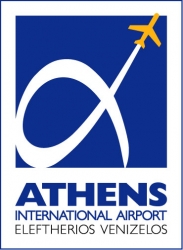 Nikos Papagiannopoulos
Nikos PapagiannopoulosHead, digital innovation
Athens International Airport
Greece
 Benoit Verbaere
Benoit VerbaereDirector of business development - new markets
SITA
Switzerland
As the trend toward intermodal continues to grow, join our session and explore how Athens International Airport (AIA) leverages advanced technologies in its local ecosystem to enhance operations across air, land, and sea. AIA exemplifies an approach focusing on operational excellence and passenger experience with a strong focus on data exchange. Smart applications can improve aviation performance, safety, passenger convenience, operational efficiency, and resource optimization. As an airport working with airlines, railways, ports, cruises, and ferries, we like to think of an ecosystem of connected travel segment operators, reshaping the industry, improving the experience, and driving efficiency across multiple domains.
What the audience will learn
- What are the elements of an intermodal transportation hub system and how they impact airport operations?
- How the coordination of the different transportation modes can lead to more efficient and effective utilization of airport resources
- Tools and methods to achieve a high level of visibility toward the entire passenger journey through the different transportation modes
- Identification of data sources and definition of data-sharing scenarios that empower the different transportation actors
- The impact that an interconnected travel journey among different modes of transportation has on passenger experience
12:20
A data-driven approach to enhance seamless intermodality at airports
 Jan Eklund
Jan EklundIntermodality strategist
Swedavia Airports
Sweden
 Fredrik Rhodin
Fredrik RhodinStrategist, strategic initiatives and innovation
Swedavia
Sweden
Two strategic initiatives – digital transformation and the airport as a multimodal hub – co-work to develop digital tools and data to optimize and develop sustainable multimodal solutions and solutions for Swedavia's passengers and partners. To assess steps on the path toward seamless and sustainable ground travel to and from the airports, the tools assist Swedavia in strategic planning, stakeholder management and landside operations. The tools, some based on open APIs, also strengthen Swedavia's data-driven abilities and thus provide steps on the digital journey as well.
What the audience will learn
- Swedavia's mission, targets and explorations of indicators for mobility and sustainable travel (on ground)
- Swedavia's exploration and use of new tools to promote sustainable modes of ground transportation
- How digital tools can be applied to assess various schemes and current state of mobility around Sweden
- How Swedavia takes steps toward a deepened data-driven approach in strategy and operations
12:50
PLATINUM SPONSOR: The future of airports as places
 Thijs van Hittersum
Thijs van HittersumHead of strategy
Royal Schiphol Group
Netherlands
 Carolien Gehrels
Carolien GehrelsGlobal director of placemaking
Arcadis
Netherlands
Join Arcadis's global director of placemaking as she explores innovative strategies for transforming airports into sustainable, vibrant hubs. Discover how integrating green technologies, enhancing passenger experiences and fostering community connections can redefine airports as eco-friendly, dynamic spaces that support environmental and economic goals.
What the audience will learn
- Sustainable design principles: learn how airports can incorporate green technologies and eco-friendly materials to reduce environmental footprint and promote sustainability
- Enhanced passenger experience: discover strategies for creating more enjoyable and efficient airport experiences through innovative design and services
- Community integration: understand the importance of fostering connections between airports and their surrounding communities to create vibrant, multifunctional spaces
13:15 - 14:30
Lunch
14:30
Sustainable airport surface access: emerging trends and innovative solutions
 Dr Viktoriia Myroniuk
Dr Viktoriia MyroniukSenior lecturer in aviation, program leader for MSc sustainable air transport
Salford University
UK
Sustainable airport surface access, in particular, emerging trends and innovative solutions aimed at improving sustainability, will be discussed and mapped to the United Nations Sustainable Development Goals. The most prominent real-life examples of best practices and innovative solutions from around the world will illustrate how sustainable airport surface access of the future may look. Examples will include electric and autonomous vehicles, micromobility, car sharing and car-pooling, air-rail integration, mass transit (trains, buses, ferries, etc), digitalization, and many others. Not only the advantages but also the challenges of addressing sustainability issues relevant to airport surface access will be discussed.
What the audience will learn
- ACI’s airport carbon accreditation programme level 5, scope 3 emissions and the importance of making airport surface access sustainable
- Emerging trends and innovative solutions in airport surface access and their mapping to the United Nations sustainable development goals
- Most prominent real-life examples of best practices and innovative solutions in surface access from airports around the world
- Main advantages and challenges of making airport surface access sustainable, as well as recommendations on how to address these
- CO2 emissions as the most important environmental issue in airport surface access and emerging innovative mitigating solutions
15:00
Moving around on the ground, as in the air
 Dieter Scheltjens
Dieter ScheltjensHead of passenger mobility services
Brussels Airport Company
Belgium
Brussels Airport is further developing into an intermodal hub, physically and digitally, by adapting and applying its award-winning aviation network approaches. Route development is a core aviation skill, easily replicated for ground transportation providers. Forecasting power and customer profiling deliver insights for landside mobility services. Further inspirational parallels will be drawn to enable mobility on the ground as well as in the air.
What the audience will learn
- How to enlarge the catchment area with route development for ground transportation
- How to create business models from ground transportation at an airport
- How to become a true sustainable intermodal hub as an airport
- How can we become more data- and forecast-driven in favor of ground transportation
- How to support ground transportation providers with marketing efforts
15:30
EU-funded projects going green: OLGA, TULIPS and STARGATE
 Sergi Alegre Calero
Sergi Alegre CaleroDirector general
ARC - Airport Regions Conference
Belgium
16:00 - 16:20
Break
16:20
PRIAM – planning regional-scale multimodal operations for innovative air mobility
 Juan Blasco Puyuelo
Juan Blasco PuyueloProduct manager
Nommon
Spain
European transportation policy aims to connect 90% of travelers within four hours through a multimodal approach combining high-speed rail and air transportation, focusing on reducing travel times and emissions. However, this strategy faces challenges outside urban areas. PRIAM envisions that within the next decade, regional-scale IAM services will be integrated into the European MaaS ecosystem to address regional connectivity challenges. To this end, PRIAM's goal is to develop tools that integrate IAM into multimodal regional networks across Europe, enhancing passenger experience, capacity, and efficiency while minimizing environmental impacts.
What the audience will learn
- Innovative air mobility (IAM)
- Regional connectivity and passenger needs
- Demand modeling tools
- Data analytics and AI techniques
- Mobile network data
16:45 - 17:25
Panel discussion: Air-to-rail hubs as connectors for regional economic growth
Airports and the communities around them benefit from better integration of multimodal connectivity. This panel will touch on the physical aspects such as ground transportation centers, alignment of rail and airport infrastructure, as well as aligning operationally between flight schedules and the onward-journey bus and train timetables. By efficiently linking the economic centers at the heart of the airport city, its distribution centers at the periphery, and the nearby and neighboring countries’ CBDs with sustainable modes of transportation, air-to-rail hubs start to truly become drivers for regional economic growth – giving back to society.
What the audience will learn
- Best practices in multimodal development at airports
- Case study designs of ground transportation centers at airports
- Integration of air and rail infrastructure
- Opportunities and challenges of aligning flight schedules and the onward-journey bus and train timetables
- How to enhance the economic impact of air-rail integration
 Elke Bossaert
Elke BossaertStrategic accessibility manager
Brussels Airport Company
Belgium
 Marcelo De Vasconcellos
Marcelo De VasconcellosHead of operations
International Airport São Paulo - Guarulhos
Brazil
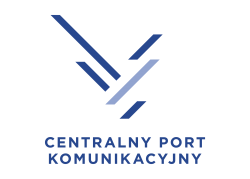 Szymon Kachniarz
Szymon KachniarzSenior project manager
Centralny Port Komunikacyjny
Poland
 Barth Donners
Barth DonnersLeading expert - aviation and intermodal transport
Royal HaskoningDHV
NETHERLANDS
17:25
Wrap up!
Join us after the conference for the Opening Day Party sponsored by Ferrovial!
Day 1: Tuesday, April 8Sponsored by Turner & Townsend


N103
Airport design, planning and development
09:00 - 17:30
Introduction by Conference Chairs
 Mark Wolfe
Mark WolfePrincipal, head of aviation EMEA
Populous
UK
In-house architect
Vancouver Airport Authority
Canada
09:05 - 10:00
Panel discussion: Gateways to the Americas – challenges and opportunities of hub
Gateways across the Americas, from Canada and the USA in the north to Colombia, Peru and Argentina in the south, are embarking on major expansion programs to meet capacity demand. Such major capital programs at existing airports result in challenges when it comes to the goal of simultaneously retaining/enhancing customer and stakeholder satisfaction. The panelists will share examples and case studies illustrating how this delicate balance will be addressed in the coming years in the plans and designs at their respective airports.
What the audience will learn
- Challenges of airports in the Americas
- How to balance capacity expansion and customer experience at operational airports
- Case studies from leading hub airports
- How to put customer experience at the heart of planning and design
- Smart planning of airport development to safeguard ongoing operations
 Andrea Castellanos Gomez
Andrea Castellanos GomezProject director
Odinsa
Colombia
 Jerome Conraud
Jerome ConraudAssociate VP, strategy and governance, airport planning
ADM - Aéroports de Montréal
Canada
 Roel Huinink
Roel HuininkChief executive officer
JFK International Air Terminal
USA
 Sergio Pulla
Sergio PullaDirector
Greater Toronto Airports Authority
Canada

10:00
CPK terminal design: a resilient and futureproof scheme
 Dr Filip Czernicki
Dr Filip CzernickiCEO
CPK - Centralny Port Komunikacyjny
Poland
 Antoinette Erickson
Antoinette EricksonSenior partner
Foster + Partners
UK
CPK is one of the largest infrastructure investments in Eastern Europe. This main hub will have a large-scale integration of three main modes of transportation: air, rail and road. The presentation will focus on the flexibility of the terminal and integrated hub design, with its resilience to accommodate unexpected future changes in traffic characteristics and technical developments. In addition, the optimal simplicity of the passenger and baggage flows will be put in the spotlight, along with the sitewide and terminals sustainability strategy.
What the audience will learn
- The audience will learn what makes this – the only new greenfield airport in Europe – different from all other airports
- The way that the CPK hub will function and offer a great passenger experience
- As this is an integrated hub connecting air, rail and bus transportation, how to create an integrated hub experience
- Sustainability and how the site-wide strategies and terminal design support the goal of a net zero operation
10:30
O’Hare 21 – Satellite 1 and TAP program-wide design initiatives
 Zachary Baughman
Zachary BaughmanManaging deputy commissioner - chief development officer
City of Chicago Department of Aviation
USA
 Scott Duncan
Scott DuncanPartner
SOM
USA
The Chicago Department of Aviation (CDA) has embarked on O’Hare 21, a transformational terminal development program that will be implemented over the next decade. SOM is the designer for two major pieces of the Terminal Area Plan, Satellite Concourses 1 and 2. This presentation will provide an update on the overall capital development program, identify and discuss program-wide initiatives, and give an update on the first satellite concourse. Future program initiatives to be addressed include accessible design, climate and security resilience, sustainability, near- and long-term energy transition strategies, and socio-economic inclusion.
What the audience will learn
- What are the major development elements of the O’Hare 21 program and terminal area plans and their associated status?
- What are the design initiatives that were implemented, including lessons learned?
- How will the O’Hare 21 program adapt to the future needs of the aviation industry?
- What are the construction delivery methods being implemented for the numerous program elements?
- How is the vision of the Chicago Department of Aviation and SOM driving the program?
11:00 - 11:15
Break
11:15
Conversation: Reimagining airports – collaboration, innovation and the future of airport design
 Paul Griffiths
Paul GriffithsCEO
Dubai Airports
United Arab Emirates
In-house architect
Vancouver Airport Authority
Canada
The airports of the future will not just manage growth – they will redefine the entire travel experience. The traditional model of airports as transit hubs is outdated. Instead, they must be reimagined as seamless, high-efficiency gateways that remove unnecessary processes, giving passengers more time and choice. The next generation of airports will integrate cutting-edge technology, sustainability and multimodal transportation while fostering deeper collaboration with airlines, regulators and service providers. In this keynote interview, Paul Griffiths, CEO of Dubai Airports, will discuss how DXB is managing record-breaking passenger growth while preparing for the future with Dubai World Central - Al Maktoum International (DWC). Set to become the world’s largest airport by 2033, DWC offers a unique opportunity to rethink airport design, from seamless biometrics and smart automation to sustainable infrastructure and the integration of urban air mobility (UAM) and aerial vehicles. Griffiths will share insights on bridging today’s challenges with the bold vision of tomorrow, creating a blueprint for airports that are smarter, greener and more connected than ever before.
11:45
The PHL vision: a 2026 preparation program
Chief development officer
Philadelphia International Airport (PHL)
USA
Senior capital program advisor
Jacobs
USA
Philadelphia is one of many locations around the world hosting large events in the future. The 250th birthday of America, FIFA World Cup Games, PGA Championship, and many more events will take place in 2026. Since Philadelphia International Airport serves as a gateway for connectivity between passengers around the world and these monumental happenings, how do you prepare the airport for such vast anticipated passenger travel? What kind of program is necessary to address the passenger experience? This presentation will take a deep dive into PHL’s $500 million program, dedicated towards 2026, to solve challenges and improve the airport experience.
What the audience will learn
- PHL Airport’s planning efforts with preparing for the 2026 events in Philadelphia
- Technologies utilized to maintain the PHL Airport program
- The importance of stakeholder engagement during large planning efforts
- Integrating traveler feedback into enhancing the customer experience
- Identifying portfolio synergies and reviewing logistics to balance spending
12:15
Holistic aviation planning: bringing together digitization, infrastructure and sustainability
 Lorenz Hagedorn
Lorenz HagedornHead of digitization and strategic process planning aviation
Flughafen Muenchen GmbH
Germany
 Martin Bertling
Martin BertlingHead of capacity, simulation and infrastructure
Flughafen Muenchen GmbH
Germany
Modern aviation planning should address automation, digitization, infrastructure and sustainability at the same time. In Flughafen Muenchen's view, all aspects must be planned in parallel and not in isolation. The presentation will show how this approach is carried out in Munich, including key learnings and showcasing local projects and how all these aspects can benefit from each other. Digital innovations go hand in hand with optimized capacity and infrastructure planning and at the same time foster sustainable development. The company's vision is a holistic, evolutional planning process for the entire aviation sector of a large hub airport.
What the audience will learn
- Utilize highly digitized airport operations data to optimize and calibrate local simulation models for better infrastructure and capacity planning
- Validate your holistic strategy early with POC to maximize business value and better understand the local adaption of innovative technology
- Identify key projects at your airport, which combine digitization, infrastructure and sustainability and thus help support your holistic approach
- Form interdisciplinary project teams including users, operations and experts to foster better understanding between infrastructure and digitization domains
- Digital sustainability is sustainable digitization
12:45
The New Terminal One: A new global gateway
 Marisa Von Wieding
Marisa Von WiedingVP of operations
The New Terminal One at JFK
USA
 Palmina Whelan
Palmina WhelanCapital program director
The New Terminal One at JFK
USA
The New Terminal One, a new global gateway for JFK Airport, is almost a year away from opening in 2026. This presentation will share the latest developments in this landmark project, which will be the largest terminal at JFK when complete. Learn more about the incredible customer experience that travelers can expect when they fly in and out of the New Terminal One.
What the audience will learn
- Latest developments at New Terminal One, the largest single-asset project financed in the US
- What customers can expect when they travel in and out of the New Terminal One
- What industry players can expect in the year ahead prior to opening
13:15 - 14:15
Lunch
14:15
Development and use of DFW's dynamic operational impact model
 Bill Grozdanich
Bill GrozdanichVice president controls & analytics
DFW Airport
USA
DFW is developing a dynamic model at the forefront of their digital transformation journey, revolutionizing how it plans, executes and communicates ongoing construction efforts at DFW Airport. With the extensive and complex construction projects scheduled over the next several years, DFW recognized the need for a more dynamic and effective approach to improve visibility and timing of passenger-facing events, and to better assess potential operational impacts. This led to the development of what is now called a Dynamic Operational Impact Model. DFW is among the first airports to venture into this innovative space.
What the audience will learn
- Understanding dynamic models in airport operations
- Innovative approaches to operational impact mitigation
- 'What-if' scenario planning with advanced technologies
- Integrating financial and operational planning
- The role of digital transformation in airport management
14:40
Challenge of transforming Congonhas (CGH): the most complex Brazilian airport
 Michael Cabral
Michael CabralChief of staff, Congonhas Airport
Aena Brasil
Brazil
Inaugurated in 1936, Congonhas (CGH) is a historical symbol of São Paulo. With over 10% of Brazilian GDP within a 15km radius, and processing 23 million annual passengers on a 1.5 km² site, the airport faces intense public and media scrutiny. As a result of operational improvements implemented by the new operator, Congonhas achieved a top-three ranking in global on-time performance in four of the last nine months. A US$400m investment is planned through 2028. Concession contract obligations and land-use constraints significantly challenged masterplan development. Multiple airport layouts will be operated until the final configuration, maintaining capacity.
What the audience will learn
- Understand how a space-constrained urban airport like Congonhas (CGH) acts as a powerful economic catalyst for its city
- Analyze strategies for achieving operational excellence and resilience in challenging airport environments, focusing on high on-time performance (OTP)
- Understand the challenges of balancing concession contract obligations, land-use restrictions and community needs in airport development and consultation processes
- Discover how to implement major airport interventions and expansions through phased construction while maintaining operational capacity
- Explore the operator's view of key technologies for the new Congonhas Airport (CGH), to be delivered in 2028
15:05 - 15:50
Panel discussion: AAM – how do you imagine the future business of transportation?
This panel session will discuss the status of advanced air mobility (AAM) as an industry, as well as how airports, operators and regulations around the globe are preparing for the integration of the first new mode of transportation in decades. Be it cargo or passengers, this will create new means of connection for people and goods, as well as potential new business models in the transportation industry as whole and new streams of revenue. The future is upon us and we as an industry we need to be prepared.
What the audience will learn
- How will this affect airports and operators around the globe?
- Identifying new business models and revenue streams
- Understanding the latest updates on eVTOL and AAM
- How to understand infrastructure requirements
- How to get involved in AAM
 Brian Cobb
Brian CobbChief innovation officer
Cincinnati/Northern Kentucky International Airport
USA
 Eduardo Coll
Eduardo CollCEO
Leadin Aviation Consulting
Spain
 Martin Kamlah
Martin KamlahVP of corporate development and operations
Munich Airport International
Germany
 Geoffrey Ax
Geoffrey AxPrincipal/aviation practice leader
Populous
USA
15:50 - 16:10
Break
16:10
Stockholm Arlanda Airport’s 4-step-principle for sustainable development
 Anette Näs
Anette NäsProject manager for airport development
Swedavia
Sweden
 Ines Fritz
Ines FritzSenior architect, airport planner
Nordic Office of Architecture
Norway
With the most recent revision of Arlanda’s development plan, Swedavia is more focused than ever on sustainability – both environmentally and financially. Building on the long-term masterplan, the development plan provides a holistic and balanced approach to creating the necessary capacity at the right time during the coming years.
Swedavia together with Nordic Office of Architecture will showcase how the 4-step-principle has been a strategic tool for assessing various development alternatives, aiming to optimise and reuse already existing infrastructure. The development plan also determines the order of implementation and financial viability, while still providing an agile approach to future challenges.
What the audience will learn
- Swedavia and Nordic’s collaboration and method for holistic long-term development planning and addressing immediate short-term requirements
- Adopting Trafikverkets “4-step-principle” as an overarching strategy and tool for environmental and economic sustainability
- Using a traffic light system to communicate capacity situations of the main passenger functions and future-proof aviation
- The importance of operational innovation to reduce the need for expansion while still providing required capacity and service levels
- How recently finished projects have improved passenger satisfaction and worked towards Swedavia’s vision “Together we enable people to meet”
16:40 - 17:30
Panel discussion: Strategic long-term planning for sustainable and resilient airports
Future airport investments must be aligned with sustainability objectives, ensuring that growth is measured not just by capacity but by the quality of service offered to all stakeholders, including passengers, airlines and local communities. Modern airport planning requires the creation of flexible infrastructures that can adapt to external changes such as technological advances, regulatory shifts and environmental challenges. Capacity should be seen holistically, integrating operational efficiency, environmental responsibility and stakeholder satisfaction to build resilient airports that can meet the evolving demands of the future while contributing to long-term sustainability goals.
What the audience will learn
- Sustainability alignment: future airport investments must prioritize sustainability, balancing growth with environmental responsibility
- Holistic capacity measurement: capacity should be assessed by the quality of service provided to all stakeholders, not just throughput
- Stakeholder engagement: successful planning considers the needs of passengers, airlines, regulators and local communities
- Flexible infrastructure: modern airports require adaptable infrastructures capable of responding to technological, environmental and regulatory changes
- Resilience through sustainability: sustainable planning ensures airports remain resilient, meeting future challenges while maintaining efficiency and service quality
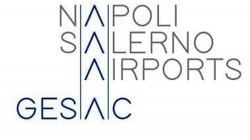 Andrea Guglielmi
Andrea GuglielmiInfrastructure director
GESAC Naples and Salerno airports
Italy
 Costantino Pandolfi
Costantino PandolfiInfrastructure planning director
ENAC
Italy
 Paolo Deforza
Paolo DeforzaChief sustainability officer
Bergamo Milan Airport - SACBO
Italy
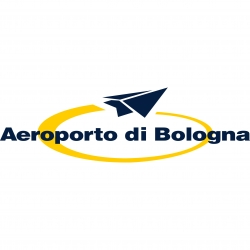 Tomaso Barilli
Tomaso BarilliSustainability manager
Aeroporto di Bologna
Italy
 Denise Farese
Denise FareseSenior aviation consultant
To70
ITALY
Join us after the conference for the Opening Day Party sponsored by Ferrovial!
Day 1: Tuesday, April 8Sponsored by DESKO


N102
Aviation security, technology, process and people
09:00 - 17:30
Introduction by Conference Chairs
 Anne Marie Pellerin
Anne Marie PellerinFounder and managing partner
LAM LHA
USA
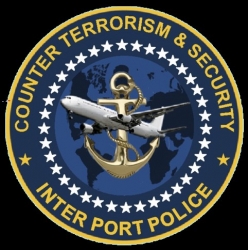 Neville Hay
Neville HayDirector of training
Interportpolice
UK
09:05
Enhancing landside security at Hong Kong International Airport (HKIA)
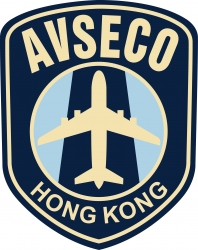 Duncan Stuart McCosh
Duncan Stuart McCoshDeputy executive director (Operations I)
Aviation Security Company Limited
Hong Kong
After thousands of anti-government protesters occupied HKIA during serious social unrest in 2019, HKIA actively sought to enhance its landside security by implementing a series of measures. These include the establishment of a new, non-LEA contingency response unit, the creation and deployment of a specially trained canine unit to detect explosives, arms, and ammunition, reinvigorating behavioral detection training for airport staff, revitalizing the airport's overall security awareness program and boosting surveillance and monitoring capacity via technology.
What the audience will learn
- Necessity of enhancing landside security using HKIA as an example
- Introduction to the measures in place at HKIA and their effectiveness
- Sharing the joint approach adopted toward landside security at HKIA
- Exchange of best practices and identifying evolving threats
09:35 - 10:35
Panel discussion: Securing the skies – exploring current and future security practices
This panel will take a deep dive into current and future aviation security practices, analyzing the dominant trends of recent years and highlighting key security developments to watch in the AVSEC space. Key topics will include the increasing role of automation, the regulatory push for higher-grade security equipment and the operational impact of remote screening. Special attention will be given to the growing presence of drones in airport security, both as a new security tool (e.g. drone-based perimeter monitoring) and as an emerging threat requiring counter-drone solutions to mitigate risks such as landside attacks and unauthorized intrusions. Additionally, the panel will consider how the rise of advanced air mobility (AAM) operations presents new opportunities to reimagine airport security. Could these developments, for example, drive wider adoption of self-service screening checkpoints? Finally, the panel will explore the impact of conflict on AVSEC practices, questioning whether current security frameworks are resilient enough to respond to emerging and future threats.
What the audience will learn
- The top AVSEC practices set to define the next few years
- How emerging security practices are likely to shape AVSEC operations
- The dual impact of drones – as security solutions and potential threats
- The innovation opportunities linked to the emergence of AAM
 Andy Walker
Andy WalkerSecurity operations manager
Gatwick Airport Ltd
UK
 Konrad Górski
Konrad GórskiManager
PwC Global CoE in Drone Technologies
Poland
 JR Hammond
JR HammondExecutive director
Canadian Advanced Air Mobility
Canada
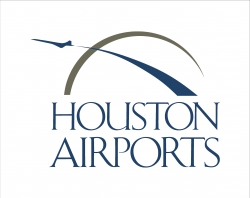 Jim Szczesniak
Jim SzczesniakDirector of aviation
Houston Airport System
USA
 Anne Marie Pellerin
Anne Marie PellerinFounder and managing partner
LAM LHA
USA
10:35 - 10:55
Break
10:55
Preparing for the innovative future of airport security by changing the culture
 Audur Sveinsdottir
Audur SveinsdottirDirector of airport security
Isavia
Iceland
 Torben Nielsen
Torben NielsenPartner and founder
Conscious Consulting
Denmark
In an airport environment where the future continuously calls for innovation, the key enabler for successful transformation is a company culture where constructive behavior is valued. In 2021, Isavia, the operator of Keflavik International Airport in Iceland, started a journey of improving employee culture through cascading leadership. This talk will give an insight into how employee culture can negatively affect the process of change, and how an investment in transforming a defensive employee culture into a constructive one had a significant impact on employee satisfaction and consequently the process of change.
What the audience will learn
- How company culture affects implementation of innovative changes
- Method of changing culture within the company
- Results of cultural journey on employee satisfaction link with customer satisfaction
11:25 - 12:25
Panel discussion: Human-factor principles in airport security
This panel will explore the vital role of human factors in aviation security. As security threats evolve, making sure that the aviation security workforce is supported by the organization, has a working environment that enables optimal performance, and that the technology systems are designed with user requirements in mind has never been more important. The panel will discuss the challenges and barriers to ensuring that the security workforce is recruited and selected for the diverse range of roles and responsibilities, trained to required competency standards and able to deliver effective and sustainable performance within an organization and culture that supports workforce professionalism.
What the audience will learn
- How human factors considerations can improve operational efficiency
- The benefits of a highly motivated workforce and the consequences of a poorly motivated workforce
- Best practices in creating a security culture that prioritizes workforce well-being and operational efficiency
- How human factors can support the deployment and use of technology systems
- Financial consequences of not applying human factors
 Alan Tan
Alan TanSenior vice president aerodrome safety and aviation security
Changi Airport Group
Singapore
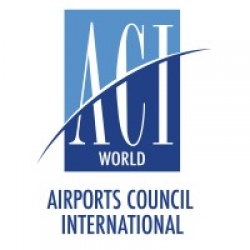 Darryl Dowd
Darryl DowdVice president, safety, security and operations
ACI World
Canada
 Piétrick Voyer
Piétrick VoyerDirector of operations
Grantley Adams International Airport
Barbados
 Sophie Hibbin
Sophie HibbinSenior technical advisor
UK Civil Aviation Authority International
UK
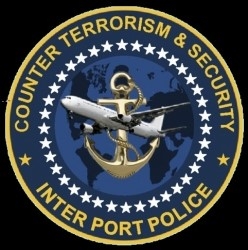 Andrew McClumpha
Andrew McClumphaDirector, standards and practices
InterportPolice
UK
12:25
Enhancing travel security and efficiency through advanced technology
 Timothy Tyler
Timothy TylerDirector external engagements and initiatives
Office of Field Operations CBP
USA
Attendees will learn how CBP is expanding public/private partnerships to implement technology solutions such as facial biometrics and artificial intelligence at air, land and seaports of entry to secure and enhance the customer experience; leveraging touchless technologies and mobile services to give travelers safe and efficient processes to plan for travel to the US; safeguarding data and protecting the privacy of all travelers.
What the audience will learn
- How CBP is leveraging technology to expand capabilities to meet its mission
- Ways that external partners can work with CBP to provide technology solutions
- How CBP is safeguarding data and protecting the privacy of all travelers
12:45 - 14:00
Lunch
14:00 - 15:00
Panel discussion: Risky business – interdisciplinary strategies for managing risk in aviation security
Risk is a constant concern for aviation security professionals, but it can be systematically approached and effectively managed across a spectrum of threat environments. This panel of aviation professionals will delve into the multifaceted nature of risk and its associated challenges, such as climate, cyber threats, third-party actions and products. The panel will discuss the importance of managing risks through information intelligence, process improvements, employee measures and technological advances.
What the audience will learn
- Strategies for addressing risk in high-threat environments
- Application of strategic risk management principles within the aviation sector through case study analysis
- Development of programs to mitigate critical cyber risks
- Employment of intelligence to comprehend and address risk factors
- Utilization of emerging technologies to bolster risk management strategies
 Wendy Reiter
Wendy ReiterDirector of aviation security and public safety
Port of Seattle
USA
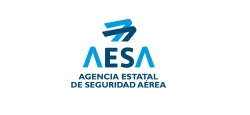 Raquel Chinea
Raquel ChineaHead of cybersecurity, equipment and aviation security risk department
AESA (Spanish Aviation Safety and Security Agency)
Spain
 Antoine Rostworowski
Antoine RostworowskiSenior vice president - programs and commercial services
ACI World
Canada
 David Peeples
David PeeplesCEO
Intellisoft
USA
 Mark Crosby
Mark CrosbyVice president of aviation
McCarthy Building Companies
USA
15:00 - 15:20
Break
15:20
Interview: Accessibility in passenger security
 Andy Walker
Andy WalkerSecurity operations manager
Gatwick Airport Ltd
UK
 Anna-Ruth Cockerham
Anna-Ruth CockerhamAccessibility manager
London Gatwick Airport
UK
Security is a key part of every passenger's journey through the airport and can pose a particular challenge for disabled passengers who require assistance or adaptive searches. This session will focus on the challenges that passengers and security officers face supporting accessibility and inclusion in security, looking at solutions that can create an inclusive passenger experience and maintain an effective security operation.
What the audience will learn
- How to support passengers with hidden disabilities
- Ensuring dignified and efficient searches for passengers with disabilities
- Promoting understanding of disability in large security officer populations
- Ensuring understanding of the security process for passengers with disabilities
- Understanding the effect of next-generation technology on accessibility
15:45 - 16:30
Panel discussion: Innovating security checkpoints for the passenger experience of the future
The US Department of Homeland Security Science and Technology Directorate is advancing aviation screening for passengers and officers by reducing wait times, meeting the needs of travelers with limited mobility and developing new concepts of operations to address the growing number of travelers. Changing the current checkpoint concept will have profound implications for government, airports, airlines and industry. We will discuss transformative and foundational research and development underway, future concepts already being explored, and the challenges and opportunities the world face transitioning research and development into reality.
What the audience will learn
- Moving away from a checkpoint model is possible and the foundational development to enable a dispersed screening environment is underway
- Changing the current checkpoint concept of operations creates broad opportunities for a collaborative business model between airlines, airports and government
- Disjointed regulatory environments hinder the art of the possible, requiring regulators and government stakeholders to streamline efforts
 Dr John Fortune
Dr John FortuneDivision director
DHS Science and Technology Directorate
USA
 Christopher DiPrima
Christopher DiPrimaActing airport planning manager
San Francisco International Airport
USA
 Brian Lewis
Brian LewisSenior engineer - DHS S&T support contractor
Noblis
USA
16:30 - 17:30
Panel discussion: Insider threat - best practices, new measures
Insider threats remain a complex and evolving challenge in aviation security, requiring a multifaceted and practical approach. This panel brings together leading experts from airlines, airports, authorities and law enforcement to exchange best practices and insights. The discussion will explore how to build a strong security culture, engage staff effectively and leverage technology to detect and mitigate insider risks.
What the audience will learn
- Gain real-world insights and best practices from industry leaders tackling insider threats
- Learn how to foster a security culture that encourages vigilance and responsible reporting
- Discover how technology and collaboration enhance insider threat detection and prevention
 Alan Tan
Alan TanSenior vice president aerodrome safety and aviation security
Changi Airport Group
Singapore
 Dr Ben Wong
Dr Ben WongHead of aviation security science, technology and innovation
UK Civil Aviation Authority
UK
 Dr David BaMaung
Dr David BaMaungDirector
Able Security Consultants
UK
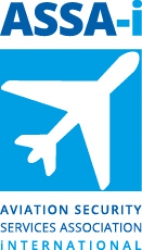 Catherine Piana
Catherine PianaDirector general
Aviation Security Services Association - International
BELGIUM
Join us after the conference for the Opening Day Party sponsored by Ferrovial!
Day 1: Tuesday, April 8Sponsored by Plaza Premium


N105
Commercial development – retail, F&B, concessions and experience
09:00 - 17:00
Introduction by Conference Chairs
 Jeremy Corfield
Jeremy CorfieldPartner
CPI
Australia
 Susan Gray
Susan GrayManaging director/partner
Concession Planning International
Australia
09:05
The new age of travel retail: building loyalty through experience
 Marta Abardia Meneses
Marta Abardia MenesesDirector of commercial services
Aena
Spain
The presentation's focus is on innovation and how customer experience can be the key differentiator in the context of travel retail for new generations. This includes the transformation of airport retail – how it’s evolving from transactional to experiential; emotional connection with travelers – the importance of creating memorable moments in a competitive environment; and new generational expectations – how millennials and Gen Z seek authenticity, sustainability and unique experiences.
What the audience will learn
- The evolution of travel retail at airports
- How to achieve what millennial passengers expect from the shopping experience at airports
- Building customer experience and loyalty
09:35
Creating and curating the world's No. 1 choice for airport shopping
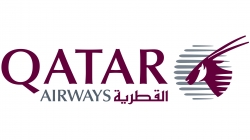 Tab Musleh
Tab MuslehChief retail and hospitality officer
Qatar Airways
Qatar
What makes Hamad International Airport the number one choice for airport shopping? The presentation will focus on 'experiencentricity', a newly coined term that emphasises the importance of creating an exceptional customer experience that permeates the airport shopping environment, leveraging the integrated ecosystem of Qatar Duty Free, Qatar Airways and Hamad International Airport. Travelers are looking for new experiences across the airport, which are perceived to offer greater value for money than traditional retail. By leveraging innovative strategies and recent initiatives, Qatar Duty Free aims to position itself as the leading choice for travelers seeking a unique shopping and dining experience.
What the audience will learn
- Experiencentricity
- The importance of creating an exceptional customer experience that permeates the airport shopping environment
- The benefits of an integrated ecosystem
10:05
The role of commercial planning in LCY's growth story
 Helen Teschauer
Helen TeschauerCommercial director
London City Airport
UK
No longer just for business: a perspective from LCY on growth, a shifting passenger mix and implications for the commercial offer.
What the audience will learn
- What's changed for LCY pre- and post-Covid
- How shifting passenger mix affects commercial planning across all non-aero revenue streams
- Areas to consider as part of plans for future growth
10:35 - 10:55
Break
10:55
Bringing back the magic of travel to the journey itself
 Lennard Niemann
Lennard NiemannManaging director
Gharage
Germany
Over the coming decades, the number of passengers traveling through airports is expected to grow exponentially. While this presents a challenge for the travel industry, it also offers a unique opportunity for change. Imagine transit hubs not only equipped to manage this growth but designed to elevate the entire travel experience. Current frustrations with transit environments could give way to spaces that are seamless, stress-free and designed with people at the center. We take a look at trends and foresight insights and define the factors influencing future traveler experiences.
What the audience will learn
- Which trends will be the influencing factors of future travel experiences
- How airports can evolve beyond their traditional roles to create environments where people actually want to be
- What role technology will play in travel retail
11:25
The evolution of the airport essentials category, and the changing face of electronics
 Andrew Harrison
Andrew HarrisonManaging director, UK travel
WHSmith
UK
11:55
Redefining retail therapy: conscious consumerism's influence on airport shopping
 Swapnal Kulkarni-Chouhan
Swapnal Kulkarni-ChouhanHead of Competence Center (airport management & commercial)
Munich Airport International
Germany
This presentation will explore the emerging trend of conscious consumers and its impact on shopping behavior. It will focus on the evolution of airport shopping experiences, services and convenience in response to this trend. An examination of initiatives undertaken by Munich Airport and EWR will provide insights into their importance in enhancing the overall passenger experience. The presentation will emphasize the significance of embracing evolving retail structures, consumer habits and local communities to meet modern traveler expectations.
What the audience will learn
- Understand the impact of conscious consumerism on shopping behaviors
- Monitor industry trends to stay ahead of the competition
- Adapt to changing retail structures, habits and local communities to meet modern traveler needs
12:25 - 13:45
Lunch
13:45 - 14:30
Panel discussion: The next evolution of CX delighters in an airport
The panel will explore the next evolution of 'CX delighters' within the airport food and beverage ecosystem, presenting key takeaways from extensive research conducted across select US airports and highlighting elements that can transform routine dining into memorable experiences. Insights will reveal how airports can enhance customer journeys through personalized digital touchpoints like pre-trip menu previews and real-time updates, and showcase opportunities for using AI technologies, such as digital avatars, to provide tailored recommendations, anticipate traveler needs and create seamless, engaging interactions that drive loyalty and elevate the travel experience.
What the audience will learn
- Understand how airports can leverage insights from our research methodology to elevate passenger engagement and create more tailored, impactful experiences
- Learn how pre-trip engagements can engage and entice passengers even before they reach the airport
- Explore AI-driven digital avatars that provide personalized food recommendations, guiding passengers based on dietary needs and preferences
- Understand how real-time, spot food offers during delays or disruptions can turn inconveniences into rewarding experiences
- Discover ways to offer in-transit passengers tailored 'food tours', enhancing their layover experience with curated dining stops
 Andrew Weddig
Andrew WeddigExecutive director
Airport Restaurant & Retail Association
USA
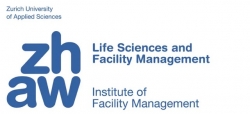 Prof Thorsten Merkle
Prof Thorsten MerkleProfessor of hospitality management
ZHAW Hospitality Management Competency Group
Switzerland
 Sushanta Das
Sushanta DasCEO
tRetail Labs
AUSTRALIA
14:30
Maximizing dwell time potential – the Quito experience
 Santiago Andrade
Santiago AndradeCIO
Quiport
Ecuador
Two key aspects must be considered in airport management: the importance of investigation and systemic observation. In aviation, 'systemically' refers to understanding the interrelationships and dependencies among all stakeholders in the passenger journey. True efficiency cannot be achieved through isolated solutions, which lead only to congestion and poor decision making. By leveraging advanced technology and adopting a holistic perspective, dwell time, or the renowned golden hour, can be managed to streamline processes, maximize commercial revenues and enhance customer satisfaction, ultimately driving business success in the airport sector.
What the audience will learn
- Optimization of operational processes: dwell time directly impacts operational efficiency by identifying bottlenecks and adjusting passenger flow management strategies
- Maximizing commercial revenues: increased passenger dwell time leads to higher spending in commercial concessions, significantly boosting non-aeronautical revenues
- Technological innovation and data analytics: the use of advanced tools and analytics to measure dwell time provides real-time insights
- Enhancing the passenger experience: reducing friction points like security control optimizes dwell time and enhances overall passenger satisfaction
- Strategies to improve critical touchpoints: using technology to streamline processes in key areas, such as security, reduces wait times
15:00
Communication tool driving employees’ motivation and execution quality
 Charlotte Delmas
Charlotte DelmasChief operational performance officer
Lagardère Travel Retail
France
 Matthew Birbeck
Matthew BirbeckVP Southern Europe
Yoobic
Spain
A key challenge in the past few years in travel retail and airports has been recruitment, retention and motivation of staff as a key lever to develop sales and high-quality experiences. TeamUp is a 360° digital communication/social network and operational execution tool focused on enhancing communication with and for field teams. It allows sharing news, best practices and success guidelines, and micro-training easily with all employees through a user-friendly and mobile tool, while allowing employees to easily communicate together and share bottom-up alerts for anything happening on the field. It supports us to face these challenges.
What the audience will learn
- Improving communication with staff improves operational performance (i.e. sales performance)
- Enhanced communication with field teams is a key lever for engagement and retention
- Having a social network dedicated to staff communication and execution helps the HQs in better supporting the field
15:30 - 15:50
Break
15:50 - 16:30
Panel discussion: Inclusive retail – expanding revenues through accessible shopping experiences
This panel will explore how making airport retail more accessible and barrier-free can unlock new revenue opportunities while enhancing the shopping experience for passengers with disabilities. Learn how airports design their commercial spaces (retail, dining and lounges) to cater to a wide range of accessibility needs, from physical disabilities to cognitive and sensory impairments. Panelists will discuss how creating ergonomic retail environments, offering accessible wayfinding solutions for all and implementing universal design principles in retail, lounge and gate areas positively impact non-aeronautical revenues.
What the audience will learn
- How inclusivity measures can also be profitable, maximizing enjoyment and encouraging spend
- The importance of considering those with physical, sensory and cognitive access requirements within retail spaces
- Hints and tips and ‘quick wins’: take home actions that you can implement now
- How to become a more inclusive employer by designing for staff members within retail areas, too
 Emily Yates
Emily YatesHead of accessibility and inclusive design
Mima
UK
 Jacqueline Grossgold
Jacqueline GrossgoldChief customer experience officer, aviation department
The Port Authority of New York and New Jersey (JFK, LGA, EWR, SWF)
USA
 Sevda Fevzi
Sevda FevziPresident and CEO
Sevly Inc.
Canada
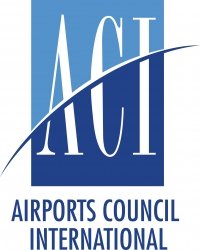 Jean-Sébastien Pard
Jean-Sébastien PardSenior manager, facilitation, passenger services and operations
ACI World
Canada
 Jeremy Corfield
Jeremy CorfieldPartner
CPI
AUSTRALIA
16:30
Seamless and remarkable future gate vision
 Bernadette Berger
Bernadette BergerDirector of innovation
Alaska Airlines
USA
The pre-flight experience at the gate is all at once boring and a chaotic rush. Alaska Airlines is looking ahead to a future shaped by seamless automation, advanced machine learning and remarkable personalization. The presentation will share the company's vision for the future gate experience, influenced by immersive retail and premium hospitality, and how the incubator approach pushes thinking, aligns teams to the North Star and accelerates innovation across the organization.
What the audience will learn
- The largest pain points for guests at the gate; what drives negative behavior
- The embedded gate technology that drives guest behavior and a premium perception
- How Alaska Airlines is preparing for growth through gate design and gate technology
- What is an incubator approach; how Alaska Airlines collaborates with airports and startups in its innovation lab
- How AI will reshape the day of travel for guests, and what airlines and airports should prepare for
Join us after the conference for the Opening Day Party sponsored by Ferrovial!
Day 1: Tuesday, April 8Sponsored by Sunflower


N104
Customer service, passenger and workforce experience
09:00 - 17:30
Introduction by Conference Chairs
 Claire Donnellan
Claire DonnellanDirector
Customer Centric Consulting
Australia
 Jerry Angrave
Jerry AngraveCustomer experience director
Empathyce
UK
09:05
Unlocking the secrets to an enjoyable airport journey
 Raquel Blanco Martin
Raquel Blanco MartinHead of services and passenger experience division
Aena
Spain
Head of facilitation and passenger experience
Aena
Spain
This presentation looks into the strategies that make an airport a truly enjoyable place for passengers. By examining Aena's award-winning airports, this session will provide actionable insights to transform the airport from a transit space into a destination passengers look forward to.
What the audience will learn
- The key elements that make an airport enjoyable
- Concrete steps to enhance relaxation, comfort and overall passenger enjoyment
- Ways to leverage passenger feedback to deliver a consistently enjoyable experience
09:35
2024 Olympics and Paralympics in Paris airports: wide open
 Régis Lacote
Régis LacoteManaging director of Paris CDG Airport
Groupe ADP
France
The presentation will cover following aspects: measuring the challenge of welcoming such a global event; a long-run preparation and test phase for infrastructure and operations; a multidimensional human, organizational and technical airport mobilization; capitalizing on an exceptional moment; and lessons and heritage for hospitality, especially toward people with disabilities.
What the audience will learn
- Challenges of an airport when it comes to welcoming a global sports event
- Specific processes regarding hospitality: people with disabilities, VIP, baggage – especially oversized
- Management of an exceptional project for an airport group
- Operation coordination, performance and robustness in the context of an exceptional event
10:05
Connecting teams – inspiring excellence and delivering unforgettable journeys
 Clare Armstrong
Clare ArmstrongHead of guest experience
London Luton Airport Operations Ltd
UK
London Luton has created a world-class airport experience by transforming the workplace culture into one that values simplicity, hospitality, safety and accessibility, ensuring every guest interaction is positive and memorable.
What the audience will learn
- Empowering employees to deliver seamless, enjoyable and personalized travel experiences
- Instilling a sense of ownership in every employee for the entire guest journey
- Breaking down silos and encouraging a 'one team' mentality, ensuring a unified approach to guest service
- Encouraging staff to share insights, tips and expertise that can enhance operational efficiency and build great loyalty
- Creating consistent, exceptional experiences that inspire trust and long-term relationships with guests
10:35 - 10:55
Break
10:55
Airport management customer experience
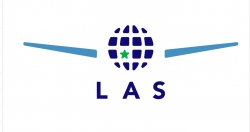 Askin Demir
Askin DemirCEO
LAS SA Limak AIBD Summa AIBD Airport Senegal
Senegal
The presenter will share his knowledge and opinions on the contributions made by AIBD Airport of Senegal, which opened in 2017, to the Senegalese economy and promotion, and the improvements that have been made in passenger experience with the ACI ASQ program over the past eight years.
What the audience will learn
- Western African airport experience and developments
- Customer experience with an African view
- The position and importance of the African aviation market
11:25
Redefining airport experience to unlock traveler satisfaction
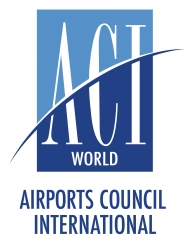 Valerie St-James
Valerie St-JamesSenior director of market research and customer insights
ACI World
Canada
This session presents key findings from the ASQ 2024 global traveler survey, showcasing how evolving traveler expectations require the air travel industry to continuously adapt to deliver the best experience. Inspired by global trends shaping consumer behaviors, travelers now seek experiences that are positive, seamless and convenient, enhanced, entertaining and sustainable. Seeking efficiency through streamlined automation, travelers increasingly value unique, high-quality, authentic experiences while expecting visible sustainability efforts from airports.
What the audience will learn
- How airports can make the journey more enjoyable and less stressful for passengers
- How airports can address new customer needs and expectations while aligning operations with travelers' eco-conscious demands
- How travelers are increasingly comfortable sharing personal information to enable a more streamlined journey
- How Gen Z – the emerging dominant demographic – may drive airports to prioritize differently to create experiences that better meet their needs
11:55 - 12:30
Panel discussion: Powering passenger experiences: the regulator-operator alliance
This panel will emphasize stakeholder collaboration in airports, highlighting how alignment between regulators and operators improves passenger experiences and service standards. Panelists will discuss airport quality of service (QoS) frameworks, showcasing how they ensure consistent service and streamline operations. Examples will demonstrate effective collaboration in managing diverse stakeholder interests. By fostering clear communication and joint decision-making, these partnerships address challenges, align regulatory goals with operational needs and drive innovative solutions. The result is enhanced efficiency, improved customer satisfaction and sustainable growth in the aviation industry, benefiting both passengers and stakeholders.
What the audience will learn
- Key lessons learned from the collaboration of regulators and airport operators
- Measuring airport levels of service
- Establishing trust through data
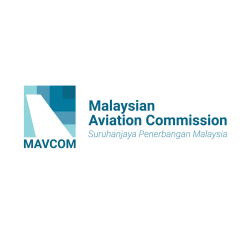 Pushpalatha Subramaniam
Pushpalatha SubramaniamDirector, consumer and public affairs
Malaysian Aviation Commission (MAVCOM)
Malaysia
 Ramón Miró
Ramón MiróCEO
Quiport - Quito International Airport
Ecuador
 Florian Eggenschwiler
Florian EggenschwilerChief product officer
Xovis
SWITZERLAND
12:30 - 13:45
Lunch
13:45
Level up your feedback: gamified surveys for soaring customer satisfaction
 Brian Cobb
Brian CobbChief innovation officer
Cincinnati/Northern Kentucky International Airport
USA
Explore an innovative gamified survey platform that can transform the way airports, airlines and mutual parties gather guest feedback. We'll delve into the power of gamification to increase survey participation, engagement, rich data and value-added insights. Hear real-world examples and best practices to implement a successful gamified survey program.
What the audience will learn
- Boost participation rates: discover how gamification elements like points, badges and leaderboards can incentivize passengers to complete surveys
- Enhance engagement: explore interactive survey formats that go beyond traditional questionnaires and help build site-specific detailed personas
- Actionable insights: learn how to leverage data from gamified surveys to identify key areas for improvement and make informed decisions
- Improved customer satisfaction: see how a gamified survey approach can foster positive passenger interactions and higher customer satisfaction
- Measurable ROI: understand how increased survey response rates and valuable data insights can translate into measurable improvements
14:15
Through check-in in less than 5 minutes
 Ben Brookman
Ben BrookmanManaging director
Alaska Airlines
USA
 Karl McGrath
Karl McGrathSenior manager
Airbiz
Canada
From vision setting to delivery, this presentation will explore the pathway to realizing a vision for a new passenger experience across the Alaska Airlines network. With multiple projects opened in 2024 (PDX and SFO) and the Seattle-Tacoma check-in area set to open in 2025, Alaska Airlines is set to be a leader in North America through the use of technology to streamline the passenger journey. Biometrics and self-serve equipment will be critical features enabling passengers to flow through the check-in process in less than 5 minutes.
What the audience will learn
- Values and objectives at the heart of the vision and the pathway to success with top-to-bottom organizational commitment
- Analytics and planning for new technology
- Challenges in realizing the vision – executive level to operational
14:45
The end of the stop-and-go process
 Dr Lutz Weisser
Dr Lutz WeisserManaging director
Munich Airport International
Germany
The process for passengers from arrival at the airport until boarding the aircraft is characterized by several stops and interruptions. Based on this status quo and related pain points, there are interesting innovations that could enhance the current stop-and-go process for passengers and thus lead to a more convenient passenger experience. The use of biometrics in different steps of the process, optimization of the baggage journey and personalization are some examples that will be reflected.
What the audience will learn
- What are the current pain points in the stop-and-go process for passengers at the airport?
- How does Munich Airport enable smoother hand luggage screening by using state-of-the-art CT scanners?
- Which data protection concerns should be taken into account when implementing those new technologies?
15:15 - 15:30
Break
15:30
Schiphol Airport diversity, equity and inclusion initiatives simulation
 Laurens van Oostendorp
Laurens van OostendorpProduct owner development and VR innovator
Schiphol Airport
Netherlands
 Karl Traeger
Karl TraegerPrincipal - aviation sector leader
Architectus
Australia
With awareness of neurodiversity in our communities increasing, airports have a responsibility to respond by understanding and developing a more sophisticated approach to implementing nuanced diversity, equity and inclusion (DEI), nature’s benefits simulation and cultural interpretation touchpoint initiatives throughout the passenger journey, effectively improving the user experience at airports for everyone. In a world first, Schiphol Airport has used the Architectus airport user experience system (A-UX) to develop a fully interactive, multiplayer desktop and virtual reality system to simulate a suite of initiatives that allows the airport to test their potential integration into new and refurbished facilities.
What the audience will learn
- The range of DEI, nature’s benefits and cultural interpretation initiatives we have explored using the Schiphol Airport A-UX simulation
- DEI touchpoint initiative VR testing and preliminary outcomes
- The simulation development process and the software we used to generate the interactive airport models for standalone VR headset use
- How interactive simulation may help people with disabilities and travel anxiety manage their anxiety
- The possible future of AI coordinated touchpoint experiences for a positive passenger journey experience for all
16:00 - 16:45
Panel discussion: From ‘why’ to ‘how’ – developing practical guidance for airport accessibility
People with disability often face barriers when traveling. The existing compliance-based approach to planning is not fit for purpose, and the facilities and services that airports provide must be accessible and barrier-free. Building on the ACI Airports and Accessible Travel: a Practical Guide, this panel moves the conversation from why accessibility is important, to how airports can do better in providing meaningful inclusion. This panel will highlight practical tools to enhance the experience for passengers and employees with disabilities while exploring how standardized practices can encourage more people to travel with confidence and unlock new commercial opportunities.
What the audience will learn
- How to move from a compliance-based to outcomes-based planning approach
- How airports can ensure consistency in accessible practices
- Tools used to integrate employee and customer experience and accessibility
- Approaches to ensuring barrier-free technology and digital resources implemented at the airport and by airports' aviation partners
- Learn the critical importance of designing with people with lived experience to ensure accessibility solutions truly meet their needs
 Darron Freegard
Darron FreegardTerminal planning and strategy manager
Perth Airport
Australia
 Antoine Rostworowski
Antoine RostworowskiSenior vice president - programs and commercial services
ACI World
Canada
 Dr Kirk Goodlet
Dr Kirk GoodletSenior director
InterVistas Consulting
Canada
 Claire Donnellan
Claire DonnellanDirector
Customer Centric Consulting
AUSTRALIA
16:45 - 17:30
Panel discussion: Unseen challenges – improving the travel experience for passengers with hidden disabilities
Every passenger’s needs go beyond what we can see – their reason for flying, invisible struggles and personal stories lie behind appearances. With 80% of the global population affected by hidden disabilities – neurological, cognitive, physical or sensory – airports must adapt. Creating a more inclusive journey involves meeting the unseen needs of passengers and staff through collective efforts in assistance programs, compliance and design strategies. This panel brings together perspectives from across the travel experience, drawing on research, real-world examples and personal insights to discuss how the travel journey can be a more compassionate, inclusive and seamless one.
What the audience will learn
- Learn about current research on specific needs of hidden disabilities that affect travelers and impact the airport design
- Explore how terminal design, including wayfinding, rest areas and sensory-friendly spaces, can accommodate hidden disabilities and benefit all travelers
- Identify operational programs like the Hidden Disabilities Sunflower or the Silent Airport Initiative to provide immediate support to passengers and staff
- Understand the importance of staff education and awareness in supporting passengers with hidden disabilities and fostering a compassionate environment
- Discover how airports, airlines, designers and advocates collaborate to develop innovative solutions, integrating technology and human touch for inclusion
 Anna-Ruth Cockerham
Anna-Ruth CockerhamAccessibility manager
London Gatwick Airport
UK
 Clare Kumar
Clare KumarCanadian regional director; host of the Happy Space Podcast
Hidden Disabilities Sunflower Program
Canada
 Denise McElroy
Denise McElroySenior manager
Southwest Airlines
USA
 Mehdi Masoumi
Mehdi MasoumiCEO
Deaf AI
Canada
 Melissa Hoelting
Melissa HoeltingAssistant director of Hugo
Corgan
USA
Join us after the conference for the Opening Day Party sponsored by Ferrovial!
Day 1: Tuesday, April 8Sponsored by Equans


N115
Environment and sustainability
09:00 - 17:30
Introduction by Conference Chairs
 Emanuel Fleuti
Emanuel FleutiHead of sustainability and environment
Zurich Airport
Switzerland
 Dr Mary Kerins
Dr Mary KerinsFormer head of health, safety, sustainability and environment at DAA
Mary Kerins
Ireland
09:05
Turning sunlight into fuel
 Dr Philipp Furler
Dr Philipp FurlerCo-CEO and co-founder
Synhelion SA
Switzerland
The cleantech scale-up company Synhelion produces solar fuels to defossilize the transportation sector. Synhelion produces solar jet fuel, diesel and gasoline that can directly replace fossil fuels and are fully compatible with existing global fuel infrastructure. Its sustainable solar fuels close the carbon cycle as they only emit as much CO2 as went into their production. In 2024, Synhelion inaugurated the world’s first industrial-scale solar fuel plant in Germany. RISE, Synhelion’s first commercial production plant, will be located in Spain and is scheduled to produce solar fuels from 2027. The company will then continue to scale its solar fuel technology.
What the audience will learn
- How to turn sunlight into fuel
- Why renewable fuels are essential for a net-zero transportation sector
- Why it is important to scale-up renewable fuel technologies now
09:35 - 10:35
Panel discussion: Challenges and benefits of integrating alternative fuels in airport development
This panel discussion addresses the critical climate risks facing the aviation industry, with a focus on transitioning to alternative fuel technologies, especially hydrogen infrastructure. Participants will explore the challenges and opportunities in adopting alternative fuels such as electric and/or hydrogen as a sustainable solution to mitigate climate change impacts. The session highlights the five key risk areas – spatial, operational, safety, stakeholder and financial – that airports must navigate. Featuring real-world case studies and actionable insights, the discussion emphasizes the role of innovative strategies and infrastructure development in driving resilience and sustainability within the sector.
What the audience will learn
- Discover the potential of hydrogen as a sustainable alternative fuel in aviation
- Analyze the risks associated with transitioning to hydrogen infrastructure
- Explore solutions for addressing spatial, operational and safety challenges in adopting new technologies
- Learn from case studies on managing stakeholder and financial risks during energy transitions
- Understand how airports can develop resilient infrastructure to support alternative fuel adoption
 Anna Björk Bjarnadóttir
Anna Björk BjarnadóttirChief service and operations officer
Isavia, Keflavik Airport
Iceland
 Chris van Dijk
Chris van DijkSenior strategic advisor, sustainability
Royal Schiphol Group
Netherlands
 John Nilsson
John NilssonStrategic manager
Swedavia
Sweden
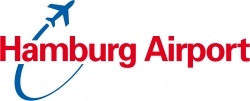 Julian Klaaßen
Julian KlaaßenDeputy head, environmental department
Flughafen Hamburg GmbH
Germany
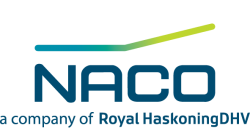 Vivekanandhan Sindhamani
Vivekanandhan SindhamaniHead of sustainable aviation and resilience
NACO, Netherlands Airport Consultants
NETHERLANDS
10:35 - 10:55
Break
10:55
The challenge of reducing third-party emissions at airports
Head of environmental sustainability
Aena
Spain
Msc aeronautic engineer, sustainability
Aena
Spain
In order to effectively address an airport's Scope 3 emissions inventory, which involves more than 95% of its carbon footprint emissions, it is essential to work closely and collaboratively with customers and suppliers to maintain the commitment of the parties involved to the long-term exchange of information. The growing escalation of the sector toward achieving net zero objectives makes it necessary to define a decarbonization strategy through measurable actions, which inevitably includes considering upstream Scope 3 emissions, which correspond mostly to the performance of suppliers.
What the audience will learn
- Scope 3 emissions calculation
- Actions to boost the decarbonization of third parties
- How to involve third parties in the net zero commitment
11:25
Fiumicino Airport accessibility: the challenge to reduce Scope 3 emissions
 Francesco Piccirilli
Francesco PiccirilliHead of infrastructure planning
Aeroporti di Roma
Italy
Aeroporti di Roma places the issue of sustainability as a pillar of its strategy and development. Targets are very ambitious: to reach net zero emissions for operations under direct control (Scope 1 + Scope 2) by 2030, ahead of the targets set by the European airport sector, and define the roadmap to reduce Scope 3 emissions. Infrastructure development projects across the network play a key role and need to be integrated to assess the benefits with respect to the evolution of passengers and airport operators. ADR illustrates its methodology.
What the audience will learn
- Scope 3
- Airport planning
- Airport accessibility
11:55
Hybrid approach to assess goods and services in Scope 3
 Emanuel Fleuti
Emanuel FleutiHead of sustainability and environment
Zurich Airport
Switzerland
Expectations and regulatory developments resulted in standards that require companies to disclose their whole value chain greenhouse gas emissions. While this may be easy for certain categories, it’s challenging for goods and services and capital assets. This presentation discusses the hybrid approach Zurich Airport has taken to strike a balance between completeness, accuracy and effort. The audience will learn how to understand the airport’s goods and services in the context of greenhouse gases, and turn information into data, enabling a complete yet accurate GHG inventory with additional upscale potential.
What the audience will learn
- Hybrid approach to GHG inventory development
- Risks and chances of various calculation approaches
- Actual calculation examples
12:25 - 13:45
Lunch
13:45
Harnessing solar power: the OLGA project's vision for sustainable airports
 Laurine Feinberg
Laurine FeinbergSenior project manager for HVAC (heating, ventilation and air-conditioning)
Groupe ADP
France
 Rune Lind Pedersen
Rune Lind PedersenStrategic marketing manager
ITW GSE
Denmark
The OLGA project, involving Groupe ADP, aims to enhance airport sustainability and efficiency through innovative solutions. It focuses on optimizing energy consumption, reducing carbon emissions and integrating renewable energy sources, fostering collaboration among stakeholders to create a more environmentally friendly infrastructure. In line with these goals, the project will experiment with solar energy by installing photovoltaic panels on a telescopic boarding bridge at Charles de Gaulle Airport. These will charge a battery that will supply the 400Hz ground power unit, which in turn will supply the aircraft with emission-free generated electricity, only relying on 50Hz supply as backup.
What the audience will learn
- Recognizing the role of collaboration among various stakeholders in developing environmentally friendly infrastructure and solutions for tomorrow
- Understanding how to integrate solar energy, battery systems and ground power units to support efficient airport operations and enhance sustainability
- Exploring the use of photovoltaic panels on boarding bridges as a practical application of solar technology in aviation
14:15
Dalaman Airport sustainability initiatives
 Javier Lopez Rivero
Javier Lopez RiveroDalaman Airport asset manager
Ferrovial Airports
Spain
This presentation highlights the innovative sustainability initiatives implemented at Dalaman Airport, aimed at reducing its environmental impact and promoting eco-friendly practices within the aviation sector. The speaker will discuss various strategies that have been adopted, including energy-efficient infrastructure, waste reduction programs and the integration of renewable energy sources. A key focus will be on the airport’s collaboration with local communities and stakeholders to promote sustainable tourism while maintaining operational efficiency. The presentation will also cover the challenges faced during the implementation of these initiatives and the measurable outcomes achieved thus far.
What the audience will learn
- Sustainability measures being undertaken by Dalaman Airport
- Dalaman Airport's actions toward achieving various levels of ACI Airport Carbon Accreditation
- Insight into energy-efficient infrastructure and renewable energy use in aviation
14:45
A year of progress in airport carbon action
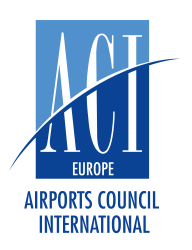 Alexandre de Joybert
Alexandre de JoybertDirector of sustainability
ACI Europe (Airports Council International Europe)
Belgium
This presentation will summarize the progress achieved and key milestones of the Airport Carbon Accreditation (ACA) program, the leading global framework for carbon management certification in the airport sector. Since its launch, ACA has demonstrated remarkable growth and adaptability, aligning with the latest scientific findings and evolving societal expectations. The presentation will showcase the significant results in terms of carbon reduction and participation growth during the last reporting period. The session will also provide an update on ACI Europe's net zero resolution, outlining progress and future directions, in particular regarding the recently introduced ACA Level 5.
What the audience will learn
- Latest developments in Airport Carbon Accreditation
- Recent trends and figures in airport carbon emission reductions
- Progress on airports' net zero climate goal and Level 5
15:15 - 15:35
Break
15:35
Adapting Caribbean and Latin American airports to climate change
 Rachel Burbidge
Rachel BurbidgeSenior policy officer, environment and climate change
ACI - Latin America-Caribbean and Eurocontrol
Belgium
Climate change is a significant and accelerating risk for airports in the Caribbean and Latin America (LAC). Higher temperatures, heavy precipitation and stronger storms are already impacting infrastructure and disrupting operations, and this will only increase. Given the social and economic criticality of airports to the region, it is vital that they adapt and build resilience. However, to date, knowledge of potential impacts and adaptation measures is limited. This new ACI-LAC study presents novel insights into the key climate challenges that LAC airports will face and the actions that are needed to develop a climate-resilient regional airport sector.
What the audience will learn
- How will climate change impact airports in Latin America and the Caribbean and what will be the biggest challenges?
- What are LAC airports doing to adapt and build resilience to climate change and what further action is required?
- To what extent do LAC airports consider themselves prepared for the impacts of climate change?
- What are the five key actions that the LAC airport sector can take to accelerate climate adaptation action?
16:00
Assessing the impact of global warming on airfield pavement lifespan
 Lancer Loua
Lancer LouaPavement expert - head of lab unit
Groupe ADP
France
 Enzo Mariette
Enzo MarietteProgram manager
DGAC/STAC
France
Within a research and development partnership agreement, Group ADP laboratory and the French civil aviation authority (STAC) installed several temperature sensors inside pavements to study the impact of global warming on the service life of airfield pavement. Based on the data collected, this presentation will show the evolution of pavement temperature over time, with the aim of recalculating the equivalent temperature required for pavement design and analyzing its impact on damage in the design criteria. In the long term, the aim is to move toward sustainable construction of airfield infrastructures to respond to the impacts of climate change.
What the audience will learn
- Damage and lifespans versus current equivalent temperature. Study of the sensitivity of temperature on mechanical design
- Evolution of pavement temperatures compared with global Earth temperatures
- Presentation of the temperature databases in different pavement test areas: STAC (Bonneuil-sur-Marne) and Aéroport de Paris Orly
16:30
Climate-proofing airports for the 21st century – smart surfaces and safe workers
 Judi Mosqueda
Judi MosquedaChief development officer - design and construction
San Francisco International Airport
USA
 Greg Kats
Greg KatsCEO and founder
Smart Surfaces Coalition
USA
Large, dark, impervious surfaces make airports particularly vulnerable to increasing outdoor air temperatures and larger storms associated with climate change. Roof and pavement materials absorb sunlight, warming the surrounding buildings and environment. Using satellite imagery and climate modeling, the San Francisco International Airport assessed the impact of existing surfaces on local air temperatures and explored smart surface solutions: cool, green and porous infrastructure. Cost-benefit analyses quantified the environmental, social and economic impact of future innovative surface investments. This evaluation led SFO to update its sustainable planning, design and construction standards to protect outdoor workers, reduce carbon emissions and enhance airport resilience.
What the audience will learn
- Dark, impervious surfaces, like pavement and roofs, absorb sunlight and increase temperatures, worsening worker health and productivity
- Smart surfaces improve environments and reduce temperatures for outdoor workers while reducing an airport’s impact on climate change
- Reflective, porous, and green surfaces cost-effectively reduce local temperatures, manage stormwater, cut energy use, lower emissions and safeguard worker health
- Cool surfaces mitigate climate warming by reflecting sunlight into space and reducing the amount of heat trapped by greenhouse
- How an operational airport incorporated smart surface requirements into its design and construction standards and guidelines
17:00
Climate change risks on health and safety at Venice Airport
 Davide Bassano
Davide BassanoHead of sustainability
Gruppo Save – SAVE SpA
Italy
 Guido Di Bartolomei
Guido Di BartolomeiNational HSEQ leader
WSP Italia Srl
Italy
Climate hazards have nowadays been acknowledged as key risk factors for airports, with the main focus on physical risks to the complex system of infrastructures and its key technological components. Nevertheless, the impacts of climate change on workers’ health and safety are usually not included in the classical climate change risk assessment framework, as such aspects are traditionally studied from an occupational risk perspective, dealing with exposure to extreme weather conditions without a structured model for considering the projected changes. The presentation describes the approach taken by Save to cover occupational health and safety aspects in climate change risk assessment for Venice Airport.
What the audience will learn
- The drivers that led Save to structure a comprehensive framework for climate risk assessment for airport infrastructures and personnel
- How to transform current management culture to enhance airports' operational ability to become more climate-resilient, considering workers as strategic asset
- The theoretical framework of including vulnerability of workers within a climate risk assessment methodology in line with relevant standards
- A set of potential impacts of relevant climate hazards from the OHS perspective for an airport
- How to mitigate the effects of acute and chronic events with measures dedicated to health and safety of workers
Join us after the conference for the Opening Day Party sponsored by Ferrovial!
Day 1: Tuesday, April 8Sponsored by Equans


N101
Future airports
09:00 - 17:30
Introduction by Conference Chairs
 Joël Couillandeau
Joël CouillandeauCEO
Merchant Aviation, Groupe ADP
USA
 Rick Belliotti
Rick BelliottiDeputy chief officer - information technology
Austin-Bergstrom International Airport
USA
09:05
Aena Ventures – join the airport revolution!
Head of ideation and entrepreneurship
Aena
Spain
After launching two editions of Aena Ventures, the open innovation program to collaborate with startups at Aena, we already have several projects born from this initiative being deployed. Aena Ventures, one of the most successful airport acceleration programs worldwide, reinforces Aena's innovative positioning and its internal culture of innovation, and fosters collaboration with startups to address the airport sector's main challenges. In this session, we will explain how the program works and the projects currently being deployed in our airports that have originated from this initiative.
What the audience will learn
- Aena Ventures: Aena's startup acceleration process
- Projects of the first and second edition of Aena Ventures
- From trials to deployment
- Open innovation strategy in airports
- Collaboration between large companies and startups
09:30
Haneda Airport's strategy for realizing the future airport
 Yuto Tokumitsu
Yuto TokumitsuAssistant manager
Haneda Future Development Co. Ltd
Japan
 Atsushi Ikeda
Atsushi IkedaDirector
Japan Airport Terminal Co. Ltd
Japan
 Kyohei Hakata
Kyohei HakataAX team leader
Azusa Sekkei Co. Ltd
Japan
Japan Airport Terminal established Haneda Innovation City in 2020 as part of a smart city development PFI in the airport area to conduct experimental demonstrations in next-generation mobility, health and robotics. In 2024, it founded Terminal.0, a corporate participation-based incubation center on the same premises, aiming at introducing new advanced technologies to the airport. Research is underway in cutting-edge airport technologies, spatial design and digital transformation supporting airport operations. Haneda Airport strives to create an unprecedented airport for the future through the research undertaken at these two airport-adjacent facilities that act as hubs for various innovative initiatives and demonstrations.
What the audience will learn
- The future masterplan for the entire Haneda Airport
- The purpose of the airport city located adjacent to the airport
- The process from planning to realization of the incubation center
- The status of corporate participation, initiatives and milestones of the incubation center
- Methods for verifying advanced technologies and approaches to introducing new technologies
10:05 - 10:50
Panel discussion: Innovation beyond technology
This panel will explore non-technology-driven innovation—creative approaches that transform operations, improve passenger experiences, and drive resilience in an evolving industry.
From enhancing customer service and streamlining processes to fostering stronger partnerships and empowering teams, our panelists will share real-world examples of how airports and airlines are leading meaningful change without relying solely on tech. We’ll dive into topics like operational excellence, sustainability initiatives, redefined business models, and community engagement, showcasing the power of human-centered solutions.
 Bernadette Berger
Bernadette BergerDirector of innovation
Alaska Airlines
USA
 Karin Gylin
Karin GylinHead of strategic development and innovation
Swedavia Airports
Sweden
 Giovanni Gennaro
Giovanni GennaroHead of open innovation
Aeroporti di Roma
Italy
 Rick Belliotti
Rick BelliottiDeputy chief officer - information technology
Austin-Bergstrom International Airport
USA
10:50 - 11:10
Break
11:10 - 11:55
Conversation: Tomorrow's airports and aviation – how do CEOs see the industry evolving through the integration of AI and eVTOL?
 Candace McGraw
Candace McGrawCEO
Cincinnati/Northern Kentucky International Airport
USA
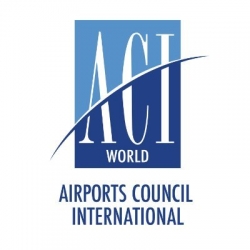 Justin Erbacci
Justin ErbacciDirector general
ACI World
Canada
 Antoine Rostworowski
Antoine RostworowskiSenior vice president - programs and commercial services
ACI World
CANADA
11:55 - 12:55
The edge of now
 John Picard
John PicardFounder/futurist
JPA
USA
 Brian Cobb
Brian CobbChief innovation officer
Cincinnati/Northern Kentucky International Airport
USA
 Tim Donovan
Tim DonovanCEO
Donovan Energy
USA
12:55 - 14:15
Lunch
14:15
ADR’s runway to the future: transforming the airport of the future
 Giovanni Gennaro
Giovanni GennaroHead of open innovation
Aeroporti di Roma
Italy
The smart city environment of Fiumicino Airport allows us to co-create and test solutions with startups in a real-world environment, ensuring that every innovation is practical, scalable and directly beneficial to passengers and operations. Three years ago, ADR launched the Runway to the Future startup program, which supports startups in developing their solutions within our airport over a period of eight months, guided by business mentors. This program is uniquely designed to nurture startups that address the specific operational and sustainability challenges faced by airports. Our accelerator program and Startups PoC highlight ADR's commitment to enhancing the passenger experience, improving operational efficiency, and autonomous operations.
What the audience will learn
- Mission of ADR
- Our smart city
- Our ADR call4startups
- Our PoC
- Our joint call – airport for innovation
14:40 - 15:55
Panel discussion: Back to basics, simplifying to reinvent the future
Join an engaging and forward-looking discussion with international airport leaders as they explore the foundational principles of moving people and goods while reimagining the future of the aviation industry. This panel will delve into strategies for addressing aging infrastructure, navigating a rapidly evolving geopolitical landscape, responding to global events, and redefining the travel experience for a new era of world-class excellence.
 Paul Griffiths
Paul GriffithsCEO
Dubai Airports
United Arab Emirates
 Aude Ferrand
Aude FerrandCEO and CCO
TAV Operation Services and TAV Airports Holding
Turkey
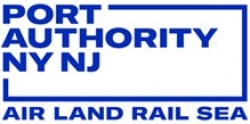 James D Heitmann
James D HeitmannChief operating officer
Port Authority of New York & New Jersey
USA
 John Ackerman
John AckermanChief executive officer
Los Angeles World Airports
USA
 Kiran Merchant
Kiran MerchantVice chairman
Merchant Aviation
USA
15:55 - 16:15
Break
16:15
Future airports: enerports
 Laura Arias
Laura AriasHead of sustainable technologies department
Aena SME SA
Spain
The idea is to discuss the transformation of airports into sustainable energy hubs, focusing on innovative technologies for renewable energy production and storage at airports, and how this energy can be managed most efficiently. The role of airports as hydrogen hubs and the introduction of zero-emission aircraft will also be addressed, along with the necessary adaptations in airport infrastructure and operations. Additionally, the benefits and advantages of transforming airports into energy hubs, including the potential to drive new business models and diversify airport income streams, will also be explored.
What the audience will learn
- Airports as energy hubs: production, storing and smart energy management at airports
- Integration of zero-emission aircraft at airports
- New business models for airports as energy hubs
16:40 - 17:25
Panel discussion: Airport futures – what can we learn from the past and other industries?
What if the future of airports were driven by cross-industry innovation? Other industries are also experiencing rapid transformation and are faced with similar or specific challenges and disruptions, whether it is sustainability, regulatory evolutions, customer experience or technological leaps. Ports are revolutionizing logistics and facing increased pressures to reduce emissions, driven by the market. Rail is leading in electrification and multimodal travel, while reimagining the passenger experience. Join us as we explore with our panelists how challenges and breakthroughs in other industries can help transform airports into smarter, greener and more efficient hubs.
 Baptiste Maurand
Baptiste MaurandDirector, engineering and projects, member of the Executive Committee
Groupe ADP
France
 Bill Poole
Bill PooleSenior vice president, planning and design
Denver International Airport
USA
 Bruno Mario Lochbrunner
Bruno Mario LochbrunnerInnovation manager
SBB AG
Switzerland
 Rahel de Vriend
Rahel de VriendHead of innovation research and scouting
TNW
Netherlands
 Joël Couillandeau
Joël CouillandeauCEO
Merchant Aviation, Groupe ADP
USA
17:25
Wrap up!
Join us after the conference for the Opening Day Party sponsored by Ferrovial!
Day 1: Tuesday, April 8
| Sponsored by | |
|---|---|
 |  |
N111
Management and operations – increasing capacity and efficiency, airside
09:00 - 17:30
Introduction by Conference Chairs
 Etienne van Zuijlen
Etienne van ZuijlenManaging director
e10CDM
Netherlands
 Velissarios Eleftheriou
Velissarios EleftheriouCEO
TotalCDM
Belgium
09:05
Improving on-time performance (OTP) at Heathrow
 Rod Fraser
Rod FraserHead of strategic planning
Heathrow Airport
UK
Kata Cserep
Global aviation lead, partner
PA Consulting
UK
Global aviation lead, partner
PA Consulting
UK
Improved punctuality is key to achieving Heathrow Airport’s strategic objectives and, like many major airports, a changing operating environment is making improvements challenging. Heathrow worked on its journey to a double-digit (14 ppt) improvement in punctuality by setting up an integrated portfolio of initiatives. These initiatives will deliver ongoing customer experience, safety and efficiency enhancements that will benefit airlines, employees, passengers and the environment. Delivery required a collaborative approach, working with stakeholders across the airport, including airlines and ground handlers, with the goal to deliver effective change in the short and longer terms.
What the audience will learn
- A successful approach to improving punctuality
- The critical factors that drove the improvement in OTP
- Making use of all available data
- Putting the plan in place
- Taking a collaborative and integrated approach to working with stakeholders across the airport ecosystem
09:35
Futureproofing aviation: strategies for climate-induced disruption
 Marius Pernea
Marius PerneaProduct manager
AirportLabs
Romania
As extreme weather events intensify, airports face increasing challenges in maintaining operational resilience and passenger safety. This presentation explores how airports can create comprehensive disaster preparedness strategies by balancing technological solutions with human-centered approaches. Learn to leverage both data-driven systems and on-the-ground expertise to navigate complex climate-related challenges, enhancing collaborative capabilities and response strategies.
Learn how to empower airports to enhance their collaborative capabilities and response strategies in the face of extreme disruptions and climate change. The presentation emphasizes the importance of holistic approaches, combining technological solutions with human insight and cross-stakeholder collaboration.
What the audience will learn
- How to integrate automated systems with human decision-making processes during climate-related crises
- Strategies for fostering knowledge sharing and collaborative problem-solving across diverse airport stakeholder groups
- Strategies for fostering knowledge sharing and collaborative problem-solving across diverse airport stakeholder groups
10:05
Creating the new standard for airside operations
 Jasper Daams
Jasper DaamsHead of airside process management
Royal Schiphol Group
Netherlands
Airports are at a crossroads and must reinvent themselves to operate sustainably, creating a healthy working environment, maintaining standards of service and readying airport infrastructure for the future. In this presentation, you will learn how a major European hub deals with a legacy on assets, working conditions and a lack of space while quality standards are increasing as well as traffic demand. The presentation focuses on the bold solutions needed to make changes stick, such as new operational procedures to reduce the exposure of airside workers to aircraft emissions, and how the role of the airport changes in this context.
What the audience will learn
- The current operational developments at Amsterdam Airport Schiphol’s airside including safety KPIs and on-time performance
- The impact of new societal and customer requirements on airside, including the national labor authority and aircraft upscaling
- How Schiphol established new ways of cooperation with all stakeholders and shifted its focus from efficiency to quality
10:35 - 10:55
Break
10:55
Machine learning automation of target off-block time
Ondrej Melich
Terminal operations director
Prague Airport
Czech Republic
Terminal operations director
Prague Airport
Czech Republic
 Dr Paolino De Falco
Dr Paolino De FalcoProject leader and data scientist
Eurocontrol Innovation Hub
France
Airports utilizing collaborative decision-making (A-CDM) rely on accurate estimates of target off-block time (TOBT) set by airlines or ground handlers. This time indicates the end of ground handling, including possible ground delays, and should be updated whenever changes in the handling progress occur. Last-minute changes in TOBT can disrupt pre-departure sequence and air traffic flow management, making its timely and accurate estimate vital. As one of the EATIN (Eurocontrol Air Transport Innovation Network) initiatives, this work presents a machine learning model for TOBT predictions, their implementation into Prague Airport’s operating system and their distribution to stakeholders and the network manager.
What the audience will learn
- A machine learning model for turnaround and target off-block time predictions
- The validation steps and integration of machine learning into Prague Airport's operating system
- The approach used at Prague Airport to automatically distribute the model's outcome to stakeholders and the network manager
- An analysis showing the acceptance of the model's outcome by ground handlers at Prague Airport
11:20 - 12:10
Panel discussion: Existing AI/ML experience in airport ops – are the benefits real?
The panel will focus on existing use cases at their airports.
 Christian Wrobel
Christian WrobelChief data architect
Fraport
Germany
 Jasper Daams
Jasper DaamsHead of airside process management
Royal Schiphol Group
Netherlands
 Samuel í Hjøllum Rude
Samuel í Hjøllum RudeHead of operational airport services
Copenhagen Airports
Germany
 Thomas Romig
Thomas RomigChief operations officer
Brussels Airport Company
Belgium
 Velissarios Eleftheriou
Velissarios EleftheriouCEO
TotalCDM
BELGIUM
12:10 - 13:00
Panel discussion: From A-CDM to TAM – the inside story
 Khalid Ishaq
Khalid IshaqHead of AOCC integration
Dubai Airports
United Arab Emirates
 Korijn Defever
Korijn DefeverGeneral manager
Airport Intelligence
Belgium
 Gerardo del Caz Esteso
Gerardo del Caz EstesoGeneral manager
Altitudes Professional Services
United Arab Emirates
 Sergio Martins
Sergio MartinsDirector, air traffic management - Latin America and the Caribbean
Saab
Brazil
 Velissarios Eleftheriou
Velissarios EleftheriouCEO
TotalCDM
BELGIUM
13:00 - 14:15
Lunch
14:15 - 15:10
Panel discussion: AI/ML experience in airport operations, accelerating toward total airport management
Discussing what comes next: the outlook on 2nd and 3rd generation AI/ML tools and integrated Total Airport Management (TAM) platforms. Panelists will begin by introducing their previous airports' use cases of AL/ML projects for airport operations, share lessons learned, and the issues that airports today need to consider when assessing system requirements, implementation, and deploying artificial intelligence effectively and responsibly. The panel will discuss the journey ahead to support TAM, future developments and desired outcomes.
What the audience will learn
- The progress about operational AI/ML technology use at airports around the world
- Not all airport systems need to be AI/ML driven at once
 Albert van Veen
Albert van VeenVice president, innovation and chief information officer
Vancouver Airport Authority
Canada
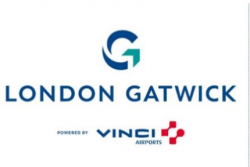 Cédric Laurier
Cédric LaurierChief technical officer
Gatwick Airport
UK
 Dave LaPorte
Dave LaPorteChief operating officer
Denver International Airport
USA
 Patrick Muller
Patrick MullerCOO
Matarat
Saudi Arabia
 Bob Kwik
Bob KwikWorldwide head of airports
Amazon Web Services
UK
 Etienne van Zuijlen
Etienne van ZuijlenManaging director
e10CDM
NETHERLANDS
15:10
Optimizing 13 state airport operations with remote parking stand technologies
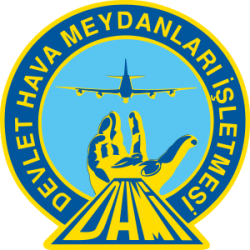 Sinan Doğan
Sinan DoğanInformation and communication security branch manager
Türkiye Directorate General of State Airports Authority
Turkey
 Aziz Can Aksoyek
Aziz Can AksoyekVice president Turkey and APAC
TAV Technologies
Turkey
This project, led by the Republic of Turkey's Ministry of Transport and Infrastructure, implements advanced remote parking stand optimization (airport resource management systems) across 13 airports managed by the General Directorate of State Airports Authority (DHMI). It aims to enhance operational efficiency by optimizing stand use, ensuring effective resource allocation, reducing aircraft delays and improving traffic flow. The initiative fosters seamless multi-airport coordination and scalability for future growth. Attendees will learn how innovative solutions transform airport operations, including strategies for efficient resource management, the impact of optimized stands on minimizing delays, and the benefits of scalable, futureproof multi-airport collaboration.
What the audience will learn
- Understand how remote parking stand optimization boosts efficiency by streamlining aircraft turnaround and reducing operational delays
- Learn how real-time resource management ensures the smooth allocation of airport gates, vehicles and parking stands
- Explore the impact of centralized, multi-airport coordination on infrastructure optimization and long-term growth
15:40 - 16:00
Break
16:00
Do you know your boarding time?
 Johanna Kaulbars
Johanna KaulbarsBusiness analyst
FraAlliance
Germany
 Andreas Hofmann
Andreas HofmannDirector of business development
Amorph Systems
Germany
Passenger boarding is still seen as one of the most critical process steps when it comes to passenger satisfaction. Airports only randomly engage as boarding is seen as a process for airlines to handle. However, both parties should have a keen interest in this process. For airlines, it is crucial to keep their turnaround on schedule as this has an impact on staffing and resource allocation. For airports, an inefficient process means potential delays and blocking of resources. Therefore, FraAlliance has focused on optimizing the boarding process at two gates at Frankfurt Airport.
What the audience will learn
- Why the boarding process is crucial for the passenger experience
- Measuring the right KPIs in the right place
- What is next after passenger allocation during boarding
16:30
Aircraft ground handling: to automate or not automate
 Dr Diego Alonso Tabares
Dr Diego Alonso TabaresAirport operations senior engineer
Airbus
France
Aircraft ground handling is an old-fashioned business, with high demand for manpower resources and little technology used. The potential for automation is enormous but if not done yet, why is that?
The state of the art in automation technologies and application to specific examples of aircraft ground handling will be shown. The trade-off between the status quo and automated solutions will be presented. Success stories and failures will be shared.
What the audience will learn
- State of the art in automation technologies available for aircraft ground handling automation
- How to trade off different technologies and processes
- Blockers for implementation and successful examples
16:55
Integrating ground vehicle automation into aviation: putting theory into practice
 Brian Cobb
Brian CobbChief innovation officer
Cincinnati/Northern Kentucky International Airport
USA
 Miles Garner
Miles GarnerSales and marketing director
Aurrigo
UK
Discover how autonomous vehicles are transforming the aviation industry. From improving experiences to enhancing operational efficiency, this presentation will delve into the latest advances and future possibilities in autonomous aviation. Learn about the benefits, challenges and real-world applications and integrations of this groundbreaking technology.
What the audience will learn
- Efficiency: understand how autonomous vehicles can streamline airport operations, reduce costs and improve turnaround times
- Safety: explore the enhanced safety measures enabled by autonomous technology, including accident prevention and improved working conditions
- Innovation: discover the cutting-edge technologies and advances propelling the autonomous aviation industry forward
- Benefits: learn about the tangible benefits for airlines, airports and passengers, including improved experiences and economic advantages
- Challenges: understand the potential challenges and considerations associated with implementing autonomous vehicles in the aviation sector
17:25
Wrap up!
Join us after the conference for the Opening Day Party sponsored by Ferrovial!
Day 1: Tuesday, April 8Sponsored by Schneider Electric


N106
Technovation
09:00 - 17:30
Introduction by Conference Chairs
 Maurice Jenkins
Maurice JenkinsChief innovation officer
Miami International Airport
USA
 Samuel Ingalls
Samuel IngallsPrincipal
Barich
USA
09:05
A holistic approach to automatization in a busy hub terminal
Managing director
Terminal 2 Company - Munich Airport
Germany
Managing director
Terminal 2 Company - Munich Airport
Germany
In times of critical staff shortage and a significant increase in operating costs, airports worldwide turn to automatization as a remedy. Although solutions are readily available in the market, the implementation of advanced technologies, such as robotics, biometrics, autonomous vehicles and self-service touchpoints, in a heavily regulated live operational environment poses major challenges to airport and terminal operators alike. This presentation provides insights into how the Terminal 2 company at Munich Airport copes with these challenges and which solutions have proved successful in transforming a busy terminal handling 30 million passengers per annum into a premium hub.
What the audience will learn
- How to set the stage for automatization in terminal infrastructure
- Where to apply automated or self-service solutions and where to rely on human interaction to enhance the customer experience
- How to measure the success of automatization
- What is coming up next?
09:35
The (untapped) potential of robotization in aviation
 Siddhant Mehra
Siddhant MehraIntelligence analyst
Lufthansa Innovation Hub
Germany
The presentation will explore the potential of robotics in aviation, highlighting key use cases that can elevate ground operations. It will also provide insights into the types of robots, mapped on the basis of their technological complexity and potential applications across aviation, from baggage handling and security to enhancing passenger services. The session will cover how robots can automate and optimize ground operations, driving efficiency and improving the passenger experience.
What the audience will learn
- There has been a notable increase in VC deals for robotics startups
- The major areas in airline operations where robotics can truly play an effective role
- Major categories of robots and their technological complexity, along with use cases
10:05
Maximizing return on investment for digital twin technology at airports
 Albert van Veen
Albert van VeenVice president, innovation and chief information officer
Vancouver Airport Authority
Canada
Vancouver International Airport (YVR) presents its cutting-edge digital twin platform, developed to drive operational excellence, sustainability and customer experience. In production since 2022, YVR’s digital twin aggregates vast sources of data to provide real-time situational awareness across the airport’s ecosystem, enabling efficient asset management and better, faster data-driven decisions. Discover how YVR’s proven technology enhances airport efficiency, resilience and sustainability, offering a cost-effective, collaborative solution to the challenges faced by today’s aviation industry.
What the audience will learn
- Learn how YVR maximizes its investment into digital twin technology and creates outcome-based use cases to drive digital transformation
- Learn how YVR uses agile methodologies and a minimum viable product (MVP) approach to ensure adoption of technology
- Learn about the airport's future roadmap for its digital twin development
10:35 - 11:00
Break
11:00
Aeroporti di Roma – integrated autonomous solutions
 Giovanni Gennaro
Giovanni GennaroHead of open innovation
Aeroporti di Roma
Italy
At Aeroporti di Roma, we've integrated several autonomous solutions to improve operations and passenger experience. WHILL, an autonomous wheelchair, has provided over 52.5 hours of service with a 90% satisfaction rate for passengers with reduced mobility. The Guimu robot inspects runways and taxiways, offering insights and maintenance recommendations. Ottonomy delivers food and beverages autonomously, ensuring a contactless and comfortable dining experience. In 2025, we'll begin testing Hivebotics, an autonomous restroom-cleaning robot. These innovations reflect our commitment to safety, efficiency and passenger comfort.
What the audience will learn
- Why we select these solutions
- Why we select this solution to improve our efficiency
- Why we accelerate robotic solutions
- Why we test solutions in our smart city
- Why we test solutions within eight months
11:25 - 12:25
Panel discussion: The soul of a digital twin – can you have one without the other?
Data fuels them, visualizations bring them to life. But which reigns supreme in the world of digital twins? Our expert panel tackles this burning question, exploring the delicate interplay of data accuracy and visualization impact, the challenges of integrating both seamlessly, and the future trends that could redefine the concept of digital twins.
 Albert van Veen
Albert van VeenVice president, innovation and chief information officer
Vancouver Airport Authority
Canada
 Michael Youngs
Michael YoungsVice president, information technology
Dallas Fort Worth International Airport (DFW)
USA
 Dr Rolf Felkel
Dr Rolf FelkelSVP applications and partner management
Fraport
GERMANY
12:25 - 13:45
Lunch
13:45
Putting people and culture at the heart of digital transformation
 Karin Gylin
Karin GylinHead of strategic development and innovation
Swedavia Airports
Sweden
 Malin Kristianson
Malin KristiansonHead of business intelligence
Swedavia
Sweden
As digital transformation and innovation is accelerating within the aviation industry, we are all seeking to maximize the value from data and new technology. At the heart of this value creation are people. People need to embrace innovation and need to use the new solutions and data in order to create value. Swedavia has been working actively for several years to promote a culture of innovation and a culture where employees are open and empowered to use new digital solutions and data as a part of their daily work.
What the audience will learn
- How Swedavia is working to build a culture of innovation and digital- and data-driven airports
- Examples of specific actions to empower the people and enhance the culture
- Cross-company collaboration for a data-driven culture
- Democratization of data and how business intelligence is supporting access and use of data
- Key learnings on motivators and obstacles in establishing a culture
14:15
Presentation continued with participation from Karin, Malin, Sam, Maurice, and you, the audience!
 Karin Gylin
Karin GylinHead of strategic development and innovation
Swedavia Airports
Sweden
 Malin Kristianson
Malin KristiansonHead of business intelligence
Swedavia
Sweden
14:45
Mastering passenger flow: The key to elevating airport experiences
 Eduardo Valencia
Eduardo ValenciaCIO
Metropolitan Airports Commission, MSP
USA
 Benjamín Moreno
Benjamín MorenoChief executive officer
Airport Gurus
Spain
In the quest for customer-centricity, airports must unlock the full potential of passenger insights. Understanding 'who is where and for how long' isn't just important—it's critical to elevating the passenger experience. This session will dive into the cutting-edge technologies that empower airports to track and analyze passenger ow and review use cases on how to use them.
Join us on an enlightening journey as we share our experience on how Aiport Gurus helped Minneapolis-Saint Paul International Airport (MSP) identify key use cases, tackle existing challenges, and uncover new opportunities.
What the audience will learn
- Get a deep understanding about technology selection process, searching for solutions that provide actionable insights, maximum leverage, and long-term sustainability
- Explore how comprehensive data on curbside patterns, lobby utilization, check-in processes, security wait times, concession activity can transform operations
- Learn how capturing passenger sentiment, mapping the journey of all travellers becomes a strategic asset for forward- thinking airports
15:15 - 15:45
Panel discussion: How Houston Airports and Southwest Airlines unlock customer experience with digital
The Houston Airport System and Southwest Airlines have made remarkable improvements in their customer engagement priorities using digital technologies and data analytics. The CTO and emerging trend advisor of these organizations will present case studies demonstrating how they have incorporated emerging technologies in sensing and data analytics to significantly address and improve their customer and guest engagement. Digital technologies include advanced sensing, data analytics and digital channel integration. Houston has had excellent success with Passenger Journey Scorecard and Southwest with Guest Experience Digital Design.
What the audience will learn
- How innovative airports are leveraging their digital technologies to solve customer pain points and enhance their journey
- How advances in data acquisition, analytics and intelligence are emerging in aviation
- Advancing the IT/technology function engagement successfully with customer experience
- What global airports do to turn their digital focus outward to the traveler market
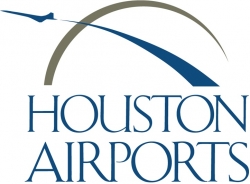 Darryl Daniel
Darryl DanielChief technology officer/deputy director aviation
Houston Airport System
USA
 Kevin Kleist
Kevin KleistSenior emerging trends advisor
Southwest Airlines
USA
 David Kipp
David KippVP aviation
Burns Engineering
USA
15:45 - 16:00
Break
16:00
How AI helps Sabiha Gökçen with pax experience and operations
 Ismihan Baysal Anderson
Ismihan Baysal AndersonIT and automation director
Istanbul Sabiha Gökçen International Airport
Turkey
Sabiha Gökçen International Airport has introduced Savvy, one of the very first generative AI digital assistant for passengers. Savvy has been trained on airport passenger service documents and CRM records. The passengers can receive help in a conversational format rather that a classic rule-based chat format.
What the audience will learn
- How Savvy helps passengers
- How Savvy is going to evolve
- How Savvy is being developed and the infrastructure behind it
- The challenges while developing Savvy
16:25
Data to departure: Optimizing total airport management through passenger insights
 Patrick Bergman
Patrick BergmanBusiness Analyst
Royal Schiphol Group
Netherlands
 Rob van der Leek
Rob van der LeekProduct owner
Royal Schiphol Group
Netherlands
Imagine a seamless airport journey from check-in to boarding, enabled by total airport management. By combining predictive data and smart tools, Schiphol can forecast passenger flow months in advance across check-in, security and more. As departure day nears, real-time insights help operational teams manage wait times, occupancy and key areas. This data-driven approach enables proactive management, reduces congestion and improves the passenger experience. Collaboration between tools and ground teams is key to smooth operations. Today’s presentation will show how data-driven decision-making is transforming the airport journey from start to finish.
What the audience will learn
- Collaboration between tools and staff is key
- Combining data for better insights
- Intelligent tools will enable staff to make data-supported decisions
- Proactive passenger management improves safety and experience
- Combine and utilize specialized tools to create synergy
16:55 - 17:30
Panel discussion: AI's impact on the airport workforce
This panel will explore the transformative effects of artificial intelligence on the airport workforce, focusing on challenges and opportunities. Topics will include AI-driven automation of core processes, passenger experience and predictive maintenance, which promise to enhance efficiency and safety. The discussion will also address potential workforce displacement and strategies for upskilling employees to work alongside advanced technologies. Attendees will gain insights into how AI can augment human roles, improve passenger experiences and streamline airport operations, ensuring a more resilient and adaptive workforce for the future.
What the audience will learn
- Airport, airline and government applications for AI-driven automation to enhance efficiency, experience and security
- Ways airports leverage AI for predictive maintenance to improve operational efficiency
- Strategies for upskilling employees to work alongside advanced AI technologies
- Insights into how AI can augment human roles and improve passenger experiences
- Current applications of AI in airports around the world and possible uses in the future
 Maurice Jenkins
Maurice JenkinsChief innovation officer
Miami International Airport
USA
 Kristen Berndt
Kristen BerndtDirector of baggage strategy and innovation
United Airlines
USA
 Kellen Schroeter
Kellen SchroeterCEO
Pattern
USA
 Chris Runde
Chris RundeVice president of aviation
Introba
USA
Join us after the conference for the Opening Day Party sponsored by Ferrovial!
Day 2: Wednesday, April 9Sponsored by Honeywell


N111
Advanced air mobility (AAM), vertiports and infrastructure
09:00 - 17:30
Introduction by Conference Chairs
 Dr Vassilis Agouridas
Dr Vassilis AgouridasCo-chair, IDI platform
ERTICO – ITS Europe
Belgium
 Velissarios Eleftheriou
Velissarios EleftheriouCEO
TotalCDM
Belgium
09:05 - 09:35
Conversation: the highs and lows of pioneering AAM infrastructure
Having spoken and participated at numerous AAM industry events, UAP proposes to bring a more personal touch to PTE by sharing personal highs and lows, from its beginning in 2017 with Airbus as its first client, delivering Air One Coventry with the UK government and Supernal (Hyundai Motor Group), and on to its commercial vertiport model Next-Gen. The focus will shift from eVTOL certification challenges and lack of funding to a more personal account that should make for an engaging discussion with the audience/industry peers.
What the audience will learn
- Navigating a nascent industry (pros and cons of corporate backing)
- UK’s startups in tech and innovation (challenge when transitioning to commercialization)
- Government support in Europe versus the US and China (the importance of centralized funding and unions)
 Andrea Wu
Andrea WuCEO
Urban-Air Port
UK
 Ricky Sandhu
Ricky SandhuFounder and chairman
Urban-Air Port
UK
 Velissarios Eleftheriou
Velissarios EleftheriouCEO
TotalCDM
BELGIUM
09:35
Dubai: countdown to day one air taxi operations
 Duncan Walker
Duncan WalkerCEO
Skyports
UK
This session offers an exclusive insight into the launch of Dubai's pioneering commercial vertiport operations, providing an in-depth status update on the development of the world’s first air taxi network. Attendees will gain a clear understanding of the operational plans for launch day, exploring how the vertiport network will function from both an infrastructure and a passenger experience perspective. The session will delve into the unique challenges and considerations for key stakeholders, including terminal design, airspace management and the passenger journey, illustrating how these elements combine to create a seamless travel experience.
What the audience will learn
- Receive the latest updates on Dubai’s air taxi network and vertiport operations
- Explore operational plans for launch day, focusing on the roles of key stakeholders
- Discover terminal design innovations tailored for air taxi services
10:05
China’s role in scaling advanced air mobility: infrastructure, vertiports and global knowledge transfer
 Jose Ignacio (Nacho) Rexach
Jose Ignacio (Nacho) RexachCCO Europe and Latin America
eHang
Germany
China is accelerating advanced air mobility (AAM) through supportive policies, a growing low-altitude economy and public-private collaboration. With strengths in electric batteries, electric vehicles, telecommunications and drones, China is building a robust AAM ecosystem. Companies like EHang are pioneering vertiport infrastructure, digital air traffic management and global UAM expansion, powered by the country's cutting-edge unmanned eVTOL aircraft technology. By sharing expertise, EHang is shaping safe, scalable AAM integration worldwide. This session explores how China’s regulatory strategies, technological synergies and infrastructure development can inform global AAM implementation, ensuring efficient urban air mobility (UAM) operations in diverse markets.
What the audience will learn
- How China’s policies and regulatory frameworks are accelerating advanced air mobility (AAM) and urban air mobility (UAM) adoption
- How China's low-altitude economy is driving investment in vertiports, air traffic management and supporting infrastructure
- How China’s leadership in electric batteries, EVs, telecommunications and drone technology is accelerating AAM
- How EHang is leveraging unmanned eVTOL technology to advance vertiport networks, digital air traffic systems and scalable urban air mobility solutions, worldwide
10:35 - 10:55
Break
10:55
Success stories: vertiport tests in Europe and LATAM
 Jose Ignacio Rodriguez
Jose Ignacio RodriguezManaging director
Bluenest by Globalvia
Spain
Project manager
Aena
Spain
This presentation will cover the company's experiences, test flights, lessons learned, SESAR projects (such as EUREKA, U-ELCOME and PRIAM) and real use cases in vertiport and drone operations in the airport environment (Guanacaste Airport (LIR) with Vinci – Coriport group, Reserva Conchal heliport with Marriott Group, INTA aerodrome in Rozas and ATLAS Center in Villacarrillo). The EH216 passenger eVTOL and the company's advanced vertiport control solution will be featured.
What the audience will learn
- Vertiport operations with advanced control solutions: UTM, meteorology, 4G coverage, GNSS
- Passenger and cargo eVTOL flight tests
- Innovative air mobility SESAR3 projects outcomes
- AAM emergency procedures
11:25
A regional approach: building northern Italy's AAM network
 Paolo Cappello
Paolo CappelloAdvanced air mobility director and CEO
SEA Milan Airports & Vega Vertical Gateways
Italy
This session will explore how Lombardy is integrating advanced air mobility into its long-term urban and regional infrastructure plans. Attendees will gain insights into how the region is developing an AAM network, focusing on collaborations with key stakeholders, including local and regional governments, air navigation service providers and civil aviation authorities. We will examine the role of Vega in shaping the region’s AAM ecosystem and discuss the strategies behind integrating AAM into broader transportation and development initiatives. This talk will highlight the importance of collaboration and technological innovation in ensuring the success of large-scale infrastructure projects and AAM adoption.
What the audience will learn
- Understand Lombardy’s roadmap for urban and regional AAM operations
- Learn about stakeholder engagement strategies that drive project success
- Explore how AAM solutions align with long-term regional development goals
- Gain insights into how collaboration and technology are advancing AAM infrastructure
11:55 - 12:45
Panel discussion: Futureproofing airports – integrating UAS, AAM and emerging technologies into aviation
As aviation evolves, airports must adapt to technologies like unmanned aircraft systems (UAS), advanced air mobility (AAM) and sustainable infrastructure. Many are uncertain how to begin, especially with emerging technologies and a focus on greener operations. This panel of experts from operations, regulatory bodies and tech providers will offer a roadmap for integrating future innovations. Topics will include infrastructure upgrades, extended reality, vertiport automation, sustainability practices and using smart tech like microgrids for resilient operations, emphasizing global insights and collaboration to highlight how airports can prepare today for the future of aviation.
What the audience will learn
- Learn how to design flexible infrastructure plans for future technologies, minimizing operational disruption
- Understand how smart microgrids enhance airport energy efficiency and resilience for greener operations
- Explore practical actions for creating more sustainable airports while integrating new technologies
- Explore best practices for integrating advanced tech while maintaining safety, security and efficiency
- Gain insights on adapting airport operations for future mobility, enhancing passenger experiences
 Robin Grace
Robin GraceChief of AAM integration and strategy
Massachusetts Department of Transportation Aeronautics
USA
 Calogero Giammusso
Calogero GiammussoHead of operations
UrbanV SpA
Italy
 Cory Cozzens
Cory CozzensCEO
Altaport
USA
 Paul Wheeler
Paul WheelerVice president of aerial innovation
WSP
USA
12:45 - 14:00
Lunch
14:00
Is urban air transportation inclusive or exclusive?
 Victor Bustos
Victor BustosBusiness development director
Ineco
Spain
In recent years, the aviation focus has expanded from airports to urban air mobility (UAM), introducing challenges as unmanned aerial vehicles (UAVs) and new aircraft models demand distinct infrastructural and operational needs. With urban congestion rising and e-commerce logistics booming, the industry faces a dual challenge: integrating airports with UAM systems and embedding them into city infrastructure. Current UAV tests in controlled environments must evolve into accessible, inclusive public transit solutions. If UAM remains exclusive to the wealthy, it will limit integration with existing infrastructure, preventing airports and vertiports from merging into a cohesive, comprehensive urban transportation network.
What the audience will learn
- For decades, masterplans have followed a rigid structure, but the rise of urban air mobility demands flexibility and innovation
- Regulations must evolve to help develop the infrastructure that integrates airport operations with other urban transportation systems
- Analyzing local conditions where UAV facilities are integrated with regional airports to form a network, providing faster, more efficient services
- One of the greatest challenges is finding a balance between investment in future UAM infrastructure and current needs
14:30
Integrating AAM into airport ecosystems
 Gina Dew
Gina DewDirector of government and community relations
Tampa International Airport
USA
TPA has been a leader in Florida and the US on AAM integration. The presentation will focus on our internal committee used to learn more about AAM and how it will impact our community directly, then inform our masterplanning process. In addition, we hosted the first test flight at a major airport in the US and have hosted Florida's first tabletop exercise for AAM. We have also been focused on being a part of the regulatory conversation at the local, state and federal levels.
What the audience will learn
- How to integrate vertiports into the masterplanning process
- Cross-organizational communication and coordination
- Understanding how AAM will impact your community
- Growing community acceptance for AAM
- Leading the regulatory conversations for AAM
14:55 - 15:40
Panel discussion: Advanced air mobility: A US planning perspective
This panel discussion includes a diverse group of airports in the United States and will explore planning and preparing for advanced air mobility from a variety of perspectives. Airports and airport systems from three distinct geographies will comment on the specific challenges and opportunities for advanced air mobility in their markets. Panelists will share what steps their airports have taken to prepare for advanced air mobility, including their approach to engaging utility providers and other important stakeholders. They will share lessons learned and how they are dealing with the dynamic regulatory environment in the United States.
What the audience will learn
- Whether and how airports are prioritizing AAM preparedness
- How airports and vertiport operators are facing uncertainty of regulations
- Business case development for different segments of the US market
- How airports and vertiport operators are working with utility providers
- Stakeholder engagement techniques
Deputy director
Sebring Airport Authority
USA
 Austin Futch
Austin FutchAviation planning and development manager
Dallas Airport System
USA
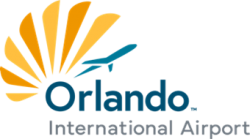 Kenyatta Lee
Kenyatta LeeChief of external affairs
Orlando International Airport
USA
 Meghan Sheehan
Meghan SheehanDeputy US aviation manager
AtkinsRéalis
USA
15:40 - 16:00
Break
16:00
Enabling remote management of a distributed vertiport network
 Aaron Erwin
Aaron ErwinAssociate director
Firstco
UK
Explore how digital infrastructure will revolutionize our future transportation systems and urban landscapes. Expect to learn: how lessons can be learned from existing transportation networks to help drive the requirements for future infrastructure; to unify air traffic management, advanced air mobility (AAM) operations and ground infrastructure critical to the viability of the emerging sector; situational awareness, software-assisted decision-making and teleoperations can be leveraged to maximize vertiport efficiency; a modular approach should be taken to first type system design to unlock future scalability.
What the audience will learn
- Digital infrastructure required to remotely monitor and control a network of vertiports
- Situational awareness – integration of digital systems
- Software-assisted operations – automating low-risk/low-value tasks
- Teleoperations – reducing site-based staff
- AAM system unification - Fleet management, air traffic management and vertiport system management
16:30
Vertiport integration and innovative air mobility challenges
Project manager
Aena
Spain
Innovation manager
Aena
Spain
Airports have been the key gateways for intercity travelers. Likewise, vertiports will be the primary gateway for innovative air mobility (IAM). Currently, Aena is involved in multiple European initiatives to explore the technical, operational and business potential of integrating advanced air mobility into its airports. Test flights will be conducted in 2025 and 2026 (Eureka: Palma de Mallorca – Menorca; Opera: Malaga – Granada). During this presentation, the audience will learn about the IAM integration in the airport environment and the main challenges: stand/reg needs, business model of IAM, infrastructure and planning, public acceptance, balance airport capacity, and others.
What the audience will learn
- IAM integration and current challenges for vertiport infrastructures
- Current IAM projects in Europe – solutions proposed and expectations
- Airport operator's point of view on IAM integration in an airport environment
Starting at 17:45 - SKYTRAX World Airport Awards 2025 ceremony and celebration in the exhibition hall after the conference!
Day 2: Wednesday, April 9Sponsored by Turner & Townsend


N103
Airport design, planning and development
09:00 - 17:30
Introduction by Conference Chairs
 Mark Wolfe
Mark WolfePrincipal, head of aviation EMEA
Populous
UK
 Tim Walder
Tim WalderDeputy chair
British Aviation Group (BAG)
UK
09:05
PLATINUM SPONSOR: Mastering complexity – coordinating development programs for the airports of tomorrow
 Sergio Pulla
Sergio PullaDirector
Greater Toronto Airports Authority
Canada
 Luuk van Mourik
Luuk van MourikDirector
Turner & Townsend
USA
Large aviation capital development programs, like Toronto Pearson’s LIFT program, are facing unprecedented challenges, especially when it comes to the growing complexity of projects along with increased funding pressures, stakeholder demands, supply chain constraints and evolving definitions of value. Creating future-ready infrastructure requires balancing immediate and long-term needs, often involving trade-offs between competing priorities. Megatrends are reshaping the sector, driving the demand for innovative, value-based solutions. To manage these complexities from strategy to delivery, program coordination is crucial. Using Toronto Pearson’s LIFT program as a showcase, we zoom in on integrated solutions to address the complex problems that come with delivering multiple large programs concurrently. Additionally, there is a growing emphasis on digital and AI-enabled program management to streamline coordination and improve efficiency through robust governance models to effectively manage these complex programs.
What the audience will learn
- Industry challenges in the transformation of existing and development of new assets to respond to the challenges of today
- Innovations and learning from the transformation of existing airport estates through to the creation of new major airports developments
- How the airport development and delivery approach needs to adapt to create the responding value-based solution
- Building a fit for future agile supply chain to meet the challenge – creating a high-performing value adding supply chain
09:35
Disrupting airport design philosophy at the new PIT
 Christina Cassotis
Christina CassotisChief executive officer
Pittsburgh International Airport
USA
 Paul Hoback
Paul HobackExecutive vice president and chief development officer
Pittsburgh International Airport
USA
An airport is a gateway and its design should reflect the region it serves, imparting a sense of welcome for all visitors and creating a distinct sense of place. The ambitious modernization project underway at Pittsburgh International Airport has coupled functionality for its current business model as an origin-and-destination airport with intuitive design. This session provides insight on the innovative process by which PIT assembled a world-class design and construction team whose visionary objective was to redefine not just structures, but the role of an airport in a region, an industry, and our world.
What the audience will learn
- The innovative process by which PIT assembled a design team and ensured the design would work for all users
- How PIT designed for its current origin-and-destination business model while maintaining flexibility for future growth
- How PIT achieved a distinct sense of place through visual, experiential and functional design aspects
10:05
Planning airport expansion in an urban city by the Pacific Ocean
 Ted Anasis
Ted AnasisManager - airport planning for San Diego International Airport
San Diego County Regional Airport Authority
USA
The presentation will describe and provide key lessons learned for planning and implementing airport expansion of major facilities in a large hub airport located in an urban setting with constrained terrain and sensitive and regulated environmental resources including air, water/groundwater, noise and biological resources in a coastal zone. The presentation will identify measures and design features to reduce the environmental effects of major airport facilities including a 30-gate new airport terminal, expanded aircraft movement and parking areas, a 3-lane entry road, a 5-story parking structure and an underground cistern to capture stormwater runoff and reuse water in flushing for urinals/toilets in the new terminal.
What the audience will learn
- Measures and design features to implement for an airfield and terminal expansion
- Specific measures to reduce environmental effects on air quality, water quality, energy resources and biological/coastal resources
- Discussion of construction of a 900,000-gallon underground cistern below the aircraft apron to collect stormwater for reuse in the airport terminal
- Measures to improve coordination with regulatory agencies to address impacts from traffic, noise, stormwater runoff and air emissions
- How the new 30-gate Terminal 1 fits into a masterplan on a highly constrained airport site of 661 acres
10:35
Australia’s western gateway
 Natasha Boshard
Natasha BoshardTerminal design director
Perth Airport
Australia
 Steve Moreland
Steve MorelandChief planning and projects officer
Perth Airport
Australia
Perth Airport is undergoing an A$5bn consolidation to be completed by 2031. Key projects include a new parallel runway, relocating Qantas operations to a newly built international and domestic terminal, constructing two multistory parking garages and a new airport hotel, and upgrading the terminal precinct’s road network. This presentation will highlight the transformative efforts planned over the next seven years, providing insights into the airport’s future vision, key milestones and how these developments will enhance connectivity and passenger experience, ultimately positioning Perth Airport as a modern, fully integrated aviation hub and Australia’s western gateway.
What the audience will learn
- Summary of Perth Airport’s consolidation projects
- Detailed overview of the runway project
- Detailed overview of the new terminal project
- Insight into the unique position of a joint terminal development between Qantas and PAPL
11:05 - 11:25
Break
11:25 - 11:55
Panel discussion: Collaboration between airlines and airports: navigating airside and landside space
In the ever-evolving aviation landscape, the collaboration between airlines and airports is essential for overcoming the challenges posed by airside and landside space constraints. As air travel continues to grow, optimizing the limited space available becomes increasingly critical for ensuring efficient operations and enhancing the passenger experience.
What the audience will learn
- Strategic planning: a collaborative approach to planning is necessary to create comprehensive strategies that address space constraints
- Digital integration: airport and airline use of technologies to address space problems or reimagine passenger process
- Accessibility: ensuring accessibility for all passengers is a fundamental aspect of collaboration. Airlines and airports must work together
 Bill Poole
Bill PooleSenior vice president, planning and design
Denver International Airport
USA
 Nick Scott
Nick ScottManaging director
United Airlines
USA
 Amy Gaddis
Amy GaddisPresident
Id8 Design + Consulting
USA
11:55 - 12:55
Panel discussion: Designing inclusive airports fit for the future passenger experience
Airports of the future need incremental changes and innovation that anticipate diversity and seek design solutions so that all can travel and work with dignity and inspiration. The panel will expand on the current inclusive design thinking, seek to identify the benefits to the passenger and to the airport, and highlight the interdependencies with sustainable airport development solutions.
What the audience will learn
- How inclusive design is being used in new and existing airport developments
- The benefits of inclusive design to the passenger and the airport
- How to design for a broad spectrum of diversity
- How to make inclusive design standard
- Integrating inclusive design with processes
 Anna-Ruth Cockerham
Anna-Ruth CockerhamAccessibility manager
London Gatwick Airport
UK
 Antoinette Erickson
Antoinette EricksonSenior partner
Foster + Partners
UK
 Emily Yates
Emily YatesHead of accessibility and inclusive design
Mima
UK
 Pareisse Wilson
Pareisse WilsonAssociate director social impact - access and inclusive design
Mott MacDonald
UK
 Tim Walder
Tim WalderDeputy chair
British Aviation Group (BAG)
UK
12:55 - 14:15
Lunch
14:15
A sustainable mobility plan for the airports of tomorrow
 Elke Bossaert
Elke BossaertStrategic accessibility manager
Brussels Airport Company
Belgium
 Korijn Defever
Korijn DefeverGeneral manager
Airport Intelligence
Belgium
This presentation focuses on developing a sustainable airport mobility plan through a collaborative governance model. It emphasizes the need for a bold vision to drive change and the importance of effective stakeholder management, bringing together airport authorities, airlines, ground handlers, related airport businesses, government bodies, transportation authorities and local communities. Examples of key measures and actions will be outlined, including reducing emissions, promoting electric vehicles, improving public transportation access and supporting innovative mobility solutions. The approach fosters collective responsibility and shared ownership for a greener, more efficient airport ecosystem.
What the audience will learn
- What is a sustainable airport mobility plan?
- Who are important stakeholders?
- How and where to start?
- What is the possible impact of a mobility plan?
14:45
Planning sustainable infrastructure at Heathrow
 Gianluca Maestri
Gianluca MaestriSenior masterplanning manager
Heathrow Airport
UK
 Matt Prescott
Matt PrescottHead of carbon strategy
Heathrow Airport Limited
UK
Driven by the Heathrow 2.0 strategy that established our net zero route, Heathrow developed an updated version of the masterplan, which has airport decarbonization as one of the main objectives. By 2050, the goal is to reduce emissions by at least 80%, leaving around 20% of emissions to be removed from the atmosphere to reach net zero. This is expected to happen thanks also to the upgrade of our power network and surface access, the integration of sustainable aviation fuel, the development of hydrogen infrastructures and the replacement of older assets with new ones.
What the audience will learn
- Understanding how Heathrow plans its infrastructure to support net zero ambitions
- What are the main airport infrastructures needed to achieve net zero
- What are the future opportunities driven by future aircraft and air mobility
15:15
Capital plan insights from climate conscious airports
 Judi Mosqueda
Judi MosquedaChief development officer - design and construction
San Francisco International Airport
USA
 Anne Middlebrook
Anne MiddlebrookSenior program controls manager
TYLin
USA
At San Francisco International Airport (SFO), our design and development approach is driven by a commitment to decarbonization. Using whole-systems thinking, we’ve created a roadmap that prioritizes decarbonization across terminals, facilities and projects, while balancing city goals, stakeholder needs and site constraints. As a hub in an innovation-driven city, SFO faces unique challenges, from limited land to growing demand. Yet, California’s leadership in sustainability propels us forward as we integrate progressive practices and advanced technologies to align with the state’s ambitious decarbonization targets.
What the audience will learn
- SFO landscape and goals of the capital program – meeting passenger demand, gate capacity, revenues
- Decarbonization achievements in the first fixed capital program – highlights and awards
- Top-three ongoing challenges and approach for successful outcomes
15:45 - 16:05
Break
16:05
Sustainable airport planning: Innovative approaches to design and development
 Nuria Aguilar Iglesias
Nuria Aguilar IglesiasHead of the airport planning and intermodality division
Aena
Spain
Head of airport masterplans and air navigation planning division
Aena
Spain
This presentation explores the latest trends and innovations in airport design, planning, and development, emphasizing the need for sustainable and efficient infrastructure. We will discuss the integration of advanced technologies, such as smart systems and automation, to enhance passenger experience and operational efficiency. Additionally, we will examine the importance of environmental considerations in airport expansion, including noise reduction and land use. Case studies of successful airport projects will illustrate the best practices and lessons learned. By fostering collaboration among stakeholders, we aim to plan airports that not only meet current traffic demand but also anticipate future growth and challenges in air travel.
What the audience will learn
- Trends and innovations in airport design
- Integration of advanced technologies
- Environmental considerations
- Collaboration among stakeholders
- Case studies and best practices
16:35 - 17:30
Panel discussion: Coastal airports – resiliency in a changing climate
As climate change accelerates and extreme weather events grow increasingly frequent and severe, coastal airports face unique challenges. Rising sea levels, intensified hurricanes and coastal erosion pose significant threats to their infrastructure, operations and economic viability. This panel discussion will delve into innovative strategies and best practices that coastal airports can adopt to enhance their resilience and sustainability in the face of these pressing challenges.
What the audience will learn
- Vulnerability assessments and risk management strategies
- Emergency response and disaster recovery planning
- Incorporating climate-change adaptation into long-term planning
 Jim Szczesniak
Jim SzczesniakDirector of aviation
Houston Airport System
USA
 Mark Perryman
Mark PerrymanPresident and chief executive officer
Norfolk International Airport
USA
 Ted Anasis
Ted AnasisManager - airport planning for San Diego International Airport
San Diego County Regional Airport Authority
USA
 Joe Barden
Joe BardenExecutive vice president, airport terminal planning
Landrum & Brown
USA
Starting at 17:45 - SKYTRAX World Airport Awards 2025 ceremony and celebration in the exhibition hall after the conference!
Day 2: Wednesday, April 9Sponsored by Parsons


N101
Airport design, planning and development – Middle East and Asia Pacific
09:00 - 17:30
Introduction by Conference Chairs
 Ashwini Thorat
Ashwini ThoratChief of design and planning
Adani Airport Holdings Ltd
India
 Carole Aramouni
Carole AramouniDirector of aviation and architecture
Dar/Sidara
United Arab Emirates
 Satyaki Raghunath
Satyaki RaghunathChief operating officer
Bangalore International Airport Limited
India
09:05
Building the new gateway to India
 Satyaki Raghunath
Satyaki RaghunathChief operating officer
Bangalore International Airport Limited
India
Over the past 16 years, Kempegowda International Airport, Bengaluru, has grown to be India's third-busiest airport in terms of passenger and cargo volumes. Over the past five years, we have commissioned a new runway, an award-winning terminal and a reputation for customer-centricity, digital transformation and environmental stewardship. This presentation will outline our journey over the last five years and what we're doing to become the new gateway to India – from an ambitious US$2bn capital program, to partnerships with airlines, investment in world-class infrastructure and a focus on operational and customer experience.
What the audience will learn
- Customer experience and operational excellence
- Hub development and marketing
- Commercial development
- Sustainability
09:30
PLATINUM SPONSOR: King Salman International Airport – the airfield program: challenges and opportunities
 Zuller Botero
Zuller BoteroVice president of airfield development
King Salman International Airport Development Company
Saudi Arabia
 Marios Sentris
Marios SentrisHead of aviation EMEA, program director
Parsons
United Arab Emirates
Through this joint presentation, attendees will gain a comprehensive understanding of the airfield program at King Salman International Airport. The session will also highlight the technical details and construction steps involved in this ambitious project. Attendees will gain an overview of the challenges faced in designing and constructing a program of this scale.
Additionally, the presentation will cover sustainability initiatives integrated into the program, and finally we will emphasize the advantages of a collaborative approach within a delivery partner setup, as exemplified by the success of KSIA.
What the audience will learn
- Comprehensive understanding of the airfield program: attendees will gain a detailed understanding of the airfield program at King Salman International
- Technical and construction details: insights into construction steps, highlighting challenges faced during design and construction of the project
- Sustainability and collaborative approach: discussion on sustainability initiatives and benefits of a collaborative approach within a delivery partner setup at KSIA
09:55 - 10:35
Panel discussion: Beyond the gate – redefining airport terminals for the digital age
The panel will explore how biophilic design, multimedia and innovative architecture redefine airport terminals. It will highlight how natural and digital elements can elevate a traveler’s journey through case studies and best practices. The discussion will focus on trends shaping future terminals, aiming to transform spaces into serene, multisensory environments. In collaboration with the Boiffils design studio, the panel will showcase Singapore Changi Airport's award-winning Terminal 2. Here, Boiffils' biophilic design integrates natural light, ventilation and lush greenery with advanced technology, creating an immersive experience that enables passengers to relax and enjoy nature while traveling.
What the audience will learn
- How to balance technology and natural elements, creating harmonious airport environments that enhance passenger well-being
- How to design and integrate multimedia installations that captivate passengers, inspiring wonder and amazement
- Design strategies and trends that enhance passenger experience through sensory design and technology for a seamless journey
- How to enhance the passenger experience: the latest design strategies and trends for airport terminals, prioritizing comfort, sensory design and technology
 Delfine Ong
Delfine OngGeneral manager, experience creation, airport operations services
Changi Airport Group Singapore
Singapore
 Basile Boiffils
Basile BoiffilsManaging director
Boiffils Architectures
France
 Mikael Charpin
Mikael CharpinOp lead and producer, cities
Moment Factory
Canada
 Elisabeth Sailer
Elisabeth SailerSenior expert in airport commercial management
Elisabeth Sailer
USA
10:35
Maximizing independence and enhancing user experience with inclusive design
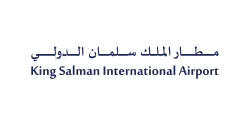 Mark van Doorne
Mark van DoorneVice president of masterplanning
King Salman International Airport Development Company
Saudi Arabia
 Rachel Smalley FCABE MRTPI NRAC
Rachel Smalley FCABE MRTPI NRACHead of inclusive design - cities and places
Jacobs Solutions
UK
We will introduce the groundbreaking planning and design-integrated approach undertaken at KSIA, which will redefine the aviation sector's response to persons with reduced mobility and the provision of special assistance for disabled people.
How end-user requirements relating to age, disability, gender, pregnancy and maternity, and religion or belief, are being integrated seamlessly at KSIA to create a people-focused, welcoming, usable, relevant and futureproofed airport environment will be explained. This first-of-its-kind methodology will significantly reduce demand for management interventions – special assistance – maximizing independence and enhancing the end-user experience.
What the audience will learn
- Inclusive design – making airports work for people
- The five principles of inclusive design
- Maximizing the number of people who can travel independently through and use the airport
- Futureproofing
- Generate efficiencies throughout design and operation
11:05 - 11:25
Break
11:25 - 12:25
Panel discussion: Scaling for success: managing growth in thriving aviation regions
Developing hubs in thriving regions and future megahubs; strategies to handle increasing passenger volumes and cargo demands while maintaining service quality.
What the audience will learn
- Infrastructure expansion and modernization
- Operational efficiency and innovation
- Environmental sustainability
- Stakeholder collaboration
 Athanasios Titonis
Athanasios TitonisChief executive officer
Mactan-Cebu International Airport
Philippines
CEO
Riyadh Airports Company
Saudi Arabia
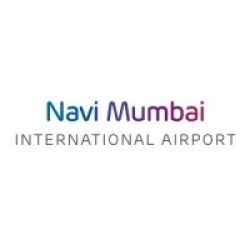 B V J K Sharma
B V J K SharmaCEO
Navi Mumbai International Airport Limited
India
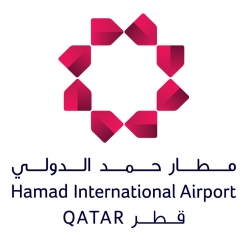 Hamad Al Khater
Hamad Al KhaterChief Operating Officer
Hamad International Airport
Qatar
 Satyaki Raghunath
Satyaki RaghunathChief operating officer
Bangalore International Airport Limited
INDIA
12:25
Vision 2030: Matarat's aviation transformation after two years
 Radouan Nahji
Radouan NahjiGeneral manager for governance and excellence for projects and technical affairs
Matarat Holding Company
Saudi Arabia
 Jan-Bjorn Schomann
Jan-Bjorn SchomannExecutive director
Egis
Saudi Arabia
It's been two years since Matarat Holding Company embarked on a major project to transform Saudi Arabia's 26 airports in line with the Kingdom's Vision 2030. A project of this magnitude requires excellent governance, careful strategic planning, supervision and project control of investments and assets, especially infrastructure. What is the project status today and what key milestones have been achieved? What problems have been encountered and are there any deviations in the implementation of the project? Two years on, the presentation looks at the project's performance and gives an analysis of success factors and lessons learned from a management and operational perspective.
What the audience will learn
- An example of a country-wide airport development project
- Outcomes and insights of a transformative airport project after two years
- Best practice for strategic asset planning, management and performance monitoring
12:55 - 14:15
Lunch
14:15
Narita airport city: heritage and innovation for regional growth
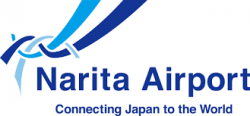 Shuhei Kuboki
Shuhei KubokiAssistant manager
Narita International Airport Corporation
Japan
 Matthew Gevers
Matthew GeversChief urban and landscape designer
Arup
Hong Kong
Narita Airport is embarking on its most ambitious capital program to date, which includes building a new runway, centralizing all three terminals and developing new support areas. Alongside these upgrades, the airport plans to revitalize the surrounding landside areas with an airport city development. This initiative aims to stimulate regional growth by leveraging the expansion of the airport, providing a living and working environment that attracts national and international talent to the region. Its vision aims to leverage the rich cultural and historical heritage to create a dynamic airport city that honors tradition while embracing innovation.
What the audience will learn
- Understanding the airport city scene in Japan
- The potential role that the airport can play in supporting growth of the regional economy
- The strategic positioning of the Narita region in the national and international context
- The fine balance between the rural settlement context and the development of an international airport hub
- The potential to unlock tourism attraction opportunities in an area often overshadowed by central Tokyo
14:45
Airport City Blueprint – Building a world-class destination at HKIA
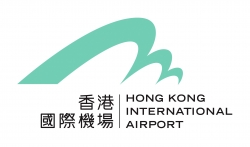 Steven Yiu
Steven YiuExecutive director of airport operations
Airport Authority Hong Kong
Hong Kong
Hong Kong International Airport is pushing forward the Airport City blueprint that entails various commercial developments to create a world-class destination called SKYTOPIA. The presentation will showcase how HKIA leverages its unique advantages of substantial air passenger flow, excellent geographical location as well as the land and marine resources in the vicinity to transform HKIA from an airport to an Airport City, attracting visitors from around the world.
What the audience will learn
- The expanded plan of the airport city vision at HKIA
- Airport city planning
- Commercial development
15:15
Transforming connectivity: Guangzhou's Baiyun T3 and Pearl River Delta Hub
 Jean-Charles Content
Jean-Charles ContentLead architect, APAC
Artelia Airports
Hong Kong
The presentation highlights new airport developments in the Guangzhou megalopolis, crucial for the Greater Bay Area. Baiyun International Airport is advancing into its third expansion phase with Terminal 3, while the Pearl River Delta Hub (Guangzhou New) Airport in Foshan aims to enhance regional connectivity. It showcases innovative designs that prioritize public transportation access, integrating rail networks within ground transportation centers (GTC). Emphasizing seamless connectivity and retail spaces, these projects create a cohesive transportation ecosystem benefiting travelers and local residents. Overall, they reflect a forward-thinking approach to airport design in a rapidly evolving global travel landscape.
What the audience will learn
- Airport development in the Greater Bay Area: expanding connectivity
- Architectural design of upcoming passenger terminal buildings in China
- Functional planning design enhancing passenger flow with intuitive wayfinding
- Passenger-centric design features
15:45 - 16:00
Break
16:00
Planning and design of aerodromes: the airport masterplan design
 Nandita Bhatt
Nandita BhattExecutive director
Airports Authority of India
India
An airport masterplan document provides a road map for efficiently meeting aviation demand through the foreseeable future while preserving the flexibility necessary to respond to changing industry conditions. It is a critical planning tool for determining the future requirements of an airport and provides a vision for realizing its ultimate potential. The primary purpose is to establish an orderly development concept to guide the airport’s short-, medium- and long-term measures and assist airport management and stakeholders in making informed decisions.
What the audience will learn
- To enable the airport to achieve its mission and to provide a framework for long-range planning (20 to 30 years)
- To graphically present preferred airport development concepts
- To comply with all applicable regulatory requirements
- To define the purpose and need for development projects
- To ensure compatible land use development
16:30
Airport development and construction management
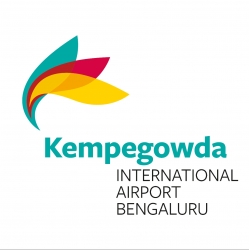 Lakshminarayanan Sankaran
Lakshminarayanan SankaranChief infrastructure officer
Bangalore International Airport Ltd
India
How can airports keep ahead of the curve in capacity building? Airports can stay ahead in capacity building by implementing 5-year plans and scheduling for systematic growth. They should conduct environmental impact analyses to ensure sustainability. Stakeholder engagement is crucial for smooth operations. They should adopt innovative construction strategies and sustainable construction methods to minimize environmental impact. A robust maintenance strategy ensures the longevity of infrastructure. A long-term focus on growth, efficient vendor management, and effective contract completion, handover and closure processes are vital. Defects Liability Period (DLP) management ensures quality control post-construction. This holistic approach ensures airports keep pace with evolving demands.
What the audience will learn
- The need for long-term vision and focus
- The nuances of airport projects
- Stakeholder engagement
- Construction strategies and contract management
- The commissioning and closure of a contract
17:00
A programmatic approach to Kaohsiung's new airport expansion
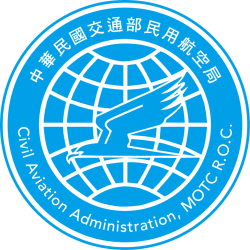 Hung-Hsien Lin
Hung-Hsien LinDirector of the aerodrome engineering division
Civil Aviation Administration, Taiwan
Taiwan
 Paul Chuo
Paul ChuoExecutive deputy general manager, Taiwan/Asia
Stantec Consulting Services, Taiwan Branch
Taiwan
Kaohsiung International Airport (IATA; KHHI), Taiwan's second-largest international airport, plans to expand its terminal capacity in two phases without disrupting current operations. The Taiwanese Civil Aviation Administration (CAA) has established a multilayered delivery structure to manage this complex project. A dedicated program manager will oversee the entire plan, ensuring detailed tracking, advantageous procurement strategies and value engineering opportunities, early gains were achieved during the basic design phase, with additional benefits expected in future stages.
What the audience will learn
- An upcoming new airport expansion project in Taiwan as a market opportunity for the industry
- Challenges faced by an airport to maintain operation while undertaking significant improvement works
- How a programmatic approach and team structure can support a complex and major infrastructure upgrade
Starting at 17:45 - SKYTRAX World Airport Awards 2025 ceremony and celebration in the exhibition hall after the conference!
Day 2: Wednesday, April 9Sponsored by DESKO


N102
Aviation security, technology, process and people
09:00 - 17:30
Introduction by Conference Chairs
 Catherine Piana
Catherine PianaDirector general
Aviation Security Services Association - International
Belgium
 Donald Zoufal
Donald ZoufalPresident/lecturer
CrowZnest Consutling, Inc./University of Chicago
USA
 Neville Hay
Neville HayDirector of training
Interportpolice
UK
09:05 - 10:05
Panel discussion: Evolving workforce demographics and recruiting/training/retention in AVSEC
 Audur Sveinsdottir
Audur SveinsdottirDirector of airport security
Isavia
Iceland
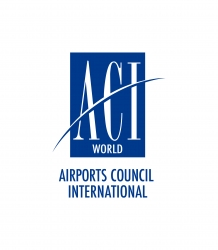 Caelie Tweedie Smith
Caelie Tweedie SmithManager, training programs portfolio
ACI World
Canada
 Scott Dullard
Scott DullardGeneral manager, operations
Melbourne Airport
Australia
 Sophie Hibbin
Sophie HibbinSenior technical advisor
UK Civil Aviation Authority International
UK
 Neville Hay
Neville HayDirector of training
Interportpolice
UK
10:05
Security technologies and new checkpoints: a challenge in airport design, planning and capacity
Head of equipment division
Aena
Spain
The introduction of new security technologies in security checkpoints represents a major challenge, not only on a technical level, but also has a major impact in terms of airport design, planning and capacity. It is necessary to redefine security processes, redesign spaces and adapt infrastructures.
What the audience will learn
- Security technologies and checkpoints design
- Capacity
- Airport planning
10:35
Transforming airport security through an innovative ecosystem
 René García
René GarcíaSecurity director
El Dorado International Airport - OPAIN
Colombia
This presentation explores how advanced technologies and a holistic approach to security optimize passenger flow and enhance operational safety at an international airport. The security ecosystem integrates artificial intelligence, video analytics, autonomous systems and proactive coordination with key stakeholders. The airport has successfully implemented innovative processes, such as automatic baggage diversion and real-time chatbot alerts, to streamline operations while ensuring top-tier security standards. Through these efforts, the airport offers an exceptional passenger experience, balancing accessibility with robust security protocols that respond effectively to evolving risks and challenges.
What the audience will learn
- How artificial intelligence enables predictive insights for proactive risk management
- The effectiveness of video analytics and facial recognition for continuous security monitoring
- The role of in-house technological solutions, such as automatic baggage diversion lines, in reducing wait times
- The importance of stakeholder coordination and early warning systems to maintain seamless airport operations
- Strategies for balancing passenger experience with stringent security protocols, including service training initiatives
11:05 - 11:25
Break
11:25
Shaping the future: capacity planning for Heathrow's security transformation
 Joseph Chadwell
Joseph ChadwellStrategic capacity manager
Heathrow Airport
UK
Heathrow, with more security lanes than all other UK airports combined, faces unique challenges as the country’s biggest and only hub airport. This presentation will explore designing optimal security operations to meet capacity and regulatory objectives at end-state, while striving for an extraordinary airport experience throughout the program delivery. Learn about strategic and modeling approaches for security demand and capacity planning. The presentation will delve into the challenges of meeting the UK security mandate, optimizing construction sequencing and managing capacity transitions during Heathrow’s busiest period ever.
What the audience will learn
- Designing the right capacity to meet future aspirations, balancing the compliance, capacity and service objectives
- Efficiently deliver infrastructure within a limited footprint in a live operational environment
- How to alleviate capacity constraints by balancing speed, cost, service levels and resilience
- Overcoming uncertainty and maintaining a forward-looking approach during a multi-year program
11:55 - 12:55
Panel discussion: Cyber in the aviation security context – defining roles and overlap
Reliance on connectivity and the internet is an increasingly critical feature of aviation security programs. Access control systems, identity management systems, CCTV camera systems, dispatch systems, notification systems and intelligence and information systems are all becoming increasingly interrelated and reliant on cyber connections. In many instances, these can be related to commercial and operational systems. As use of and reliance on cyber expands, so do attack surfaces. All this has occurred as the instances of cyberattacks are on the rise. For aviation cyber experts, there is a significant challenge in hiring and retaining cyber talent to address the current threat landscape, including scaling cyber penetration and threat mitigation practices.
What the audience will learn
- Who needs to be involved in cybersecurity planning and response
- How to develop a collaborative environment with a range of stakeholders seeking to address and respond to growing cyber threats
- How cyberattacks have worked to threaten and impair security systems
- How practices and technologies can be employed to mitigate threats
- How response activities can be shaped to respond to attacks once they occur
 David Nieto
David NietoVice president for EMEA
Aviation ISAC
Spain
 Eric Vautier
Eric VautierGroup CISO
Groupe ADP
France
 Stephanie Warren
Stephanie WarrenAssistant director, information security
Port of Seattle
USA
 Thomas Romig
Thomas RomigChief operations officer
Brussels Airport Company
Belgium
 Jarrett Morgan
Jarrett MorganTechnology market leader
Mead & Hunt
USA
12:55 - 14:15
Lunch
14:15 - 15:15
Panel discussion: Smart security – a collaboration between airports, governments and airlines
The Smart Security Management Group (SSMG) is an international group of regulators, airport operators and government stakeholders who collaborate to drive innovation through aviation security screening technologies and processes, with the aim of raising standards across the globe. This discussion will illustrate the benefits of a multilateral collaborative approach, and provide insight into the outputs and positive impacts that smart security has already delivered across the industry. It will outline future ambitions that are designed to enhance the way in which security screening is conducted for passengers, while delivering the capability to respond to emerging threats and risks.
What the audience will learn
- What is smart security and why I should care?
- As an airport operator, how does smart security benefit me?
- How has the implementation of smart security impacted security screening?
- What is the focus for smart security over the next 10-15 years?
- How do I involve myself in the evolution of smart security as a regulator, airport operator or government agency?
 Scott Dullard
Scott DullardGeneral manager, operations
Melbourne Airport
Australia
 Jason Hausner
Jason HausnerManaging director - passenger facilitation, compliance and technology
Delta Air Lines
USA
 Denis Perron
Denis PerronSenior director of screening technology
CATSA
Canada
 Dr Ben Wong
Dr Ben WongHead of aviation security science, technology and innovation
UK Civil Aviation Authority
UK
 Paul Evans
Paul EvansSecurity technology manager
Heathrow Airport
UK
15:15
Coalition of the willing: aviation worker screening success story @DFW
 Jon (JT) Taylor
Jon (JT) TaylorDirector of public safety
Dallas Fort Worth International Airport
USA
 Andreas Haegele
Andreas HaegeleVP of microwave imaging
Rohde & Schwarz
Germany
Rohde & Schwarz, together with Dallas Fort Worth, aims to create a new de facto standard for US aviation worker screening. The R&S QPS Walk2000 millimeter-wave security scanner was developed specifically to support high-volume security screening in a wide range of operations requiring rapid and accurate screening for metallic and non-metallic threats. In a collaborative approach with DFW, Rohde & Schwarz optimized the system’s detection SW for aviation worker screening to eliminate the required removal of employee badges, name tags, outerwear and belts, supporting efficient aviation worker screening, especially during shift changes.
What the audience will learn
- Coalition of the willing: close collaboration between airports and OEMs produces great innovation
- There's a new, modern solution for aviation worker (and airline crew) screening that considers the specific demands of security lanes
- Millimeter-wave walk-through screening has the potential to modernize and expedite the way security screening happens at airports today
15:45 - 16:05
Break
16:05
Uncovering the hidden threats in airports
 Maurice Jenkins
Maurice JenkinsChief innovation officer
Miami International Airport
USA
 Mark Webb
Mark WebbFounder/CEO
Air Sheriff LLC
USA
In a developing digital landscape – perceived threats in cybersecurity within transportation networks (specifically airports) – MIA (Miami International Airport) has identified that what operations directors commonly believe is a threat versus a changing reality in relation to cyber threats to critical infrastructure – and has identified new technologies powering innovation with observation as the key.
What the audience will learn
- A greater understanding of invisible threats
- The positive impact of innovation in security applications
- Available technology
16:35
YVR delivers next-generation security checkpoint and enhances passenger experience
 Alan Grossert
Alan GrossertDirector, engineering projects
Vancouver Airport Authority
Canada
 Alysia Lawson
Alysia LawsonManager, terminal readiness and delivery
Vancouver Airport Authority
Canada
YVR successfully renovated its busiest security screening point while accommodating all passenger and employee flows with minimal impact on their experience. Originally planned to be completed in three phases, the airport took the bold step to fully close the checkpoint to reduce construction cost and duration. This presentation will explain how the design team, contractor and operations teams collaborated to design and deliver a superior solution within a constrained site to achieve the best results for the airport community.
What the audience will learn
- Early engagement with the operations teams and the construction contractor allowed for various delivery options to be effectively explored
- The use of data was essential to make informed decisions
- A collaborative mindset enabled project participants to bring an agile approach when providing input
- The design evolved during project development, but focused on an enhanced passenger experience throughout
- A renovation can produce an amazing end product; not everything exciting needs to come from new construction
17:00
Product design and management on the Heathrow security program
 Jane Foulkes
Jane FoulkesSenior project manager
Heathrow Airport
UK
 Sam Whitehead
Sam WhiteheadProgram lead
AtkinsRéalis
UK
Developing the next-gen security product, aiming to enhance threat detection and operational efficiency through over £1bn investment in technology and transformational change. This will be Europe’s largest security program, delivering over 100 lanes used by 82 million passengers and colleagues annually. The program must meet tight regulatory deadlines while maintaining full capacity and high customer satisfaction. We implemented a comprehensive trial and pilot approach, controlling product development and change, and generating rich data to optimize designs and enable detailed simulations for accurate demand and capacity forecasting, minimizing operational disruption.
What the audience will learn
- The approach to trialling new technology and processes, and the benefits of doing this prior to procurement
- How product requirements and the product development and regulatory roadmaps are essential to running an effective procurement process
- How a 'pilot' installation can significantly progress learning prior to full product deployment, generating rich data and honing requirements
- How change driven by learning from the 'pilot' installation and early deployments is controlled and managed while meeting deployment timescales
- How data from the 'pilot' is used to build simulations that enable planning that balances demand and capacity through transition
Starting at 17:45 - SKYTRAX World Airport Awards 2025 ceremony and celebration in the exhibition hall after the conference!
Day 2: Wednesday, April 9Sponsored by Plaza Premium


N105
Commercial development – retail, F&B, concessions and experience
09:00 - 17:30
Introduction by Conference Chairs
 Jeremy Corfield
Jeremy CorfieldPartner
CPI
Australia
 Susan Gray
Susan GrayManaging director/partner
Concession Planning International
Australia
09:05
Orchestrating commercial transformation across a nationwide network of airports
 Marcus Spahn
Marcus SpahnGeneral manager, non-aero
Matarat Holding
Saudi Arabia
Commercial passenger experience and non-aero revenues at Saudi airports are surging, driven by the country’s clear strategy to transform the airport ecosystem through massive infrastructure projects, commercial developments and the arrival of new operators and concepts. As Saudi Arabia aims to become a global aviation hub, airports are introducing innovative, technology-driven and personalized commercial offers. These initiatives are orchestrated across a nationwide network of 27 airports in an unprecedented effort to elevate passenger experience and drive sustainable commercial growth in line with Saudi Vision 2030 and the National Aviation Strategy goal of reaching 330 million passengers in 2030.
What the audience will learn
- How a country-wide network of airports can leverage synergy effects across commercial revenue streams
- How to balance innovation and technology in fast-paced commercial airport developments
- How strategic partnerships within the non-aero ecosystem help to elevate commercial transformation
- Loyalty programs, e-commerce and digital solutions in non-aero
- Sense of place in a modern airport environment
09:35
Loyalty Hub Munich – jointly breaking new ground
 Vera Jakobsen
Vera JakobsenVP digital
Munich Airport / Flughafen München
Germany
Key account partner manager
Miles & More/Lufthansa Group
Germany
Driven by the belief that collaboration unlocks customer benefits and commercial potential, Lufthansa Group, Munich Airport and the Miles & More loyalty program established the Loyalty Hub. The presentation uncovers the inner workings of this innovative trilateral partnership. Discover how an agile squad of experts in marketing, data analytics and retail collaborates to enhance the customer experience through data sharing and targeted marketing. The presenters will delve into the ideas that shaped this unique alliance, and reveal the results achieved and exciting use cases on the horizon.
What the audience will learn
- How an airline, an airport and a loyalty program can collaborate to drive customer satisfaction and commercial potential
- What working in an agile setup spanning three companies looks like
- What's next: use cases on the horizon
10:05
Elevating experiences: adapting to market, tailoring to passengers at DEN
 Pamela DeChant
Pamela DeChantSenior vice president - concessions
Denver International Airport
USA
 Brett Hartle
Brett HartleVice president - aviation architecture practice leader
HNTB
USA
Explore Denver International Airport’s US$2.5bn Concourse Expansion Program, focusing on its Concessions Development Plan. This presentation examines the creation of resilient, commercially viable concession nodes tailored to evolving market demands and passenger preferences. Presenters will discuss the alignment with the Concessions Masterplan, covering key requirements, analytics, design strategies and industry market outreach. Attendees will gain insights into effective development strategies and witness the successful execution of a concession node – highlighting how thoughtful design enhances the passenger experience while accommodating market variables. Join us to discover innovative approaches in airport concession planning.
What the audience will learn
- Identifying current and future passengers; understanding their tastes
- Designing for resilience, adaptability and operational excellence
- Defining the framework and design parameters for tenant brand expression
10:35 - 10:55
Break
10:55 - 11:25
PLATINUM SPONSOR: Elevating the passenger experience
Airports are undergoing a profound transformation, emerging as vibrant 'aerotropolises' that transcend mere flight connections to forge meaningful links between people and unique experiences. The introduction of sophisticated amenities – such as eclectic dining options, extensive shopping opportunities, personalized passenger services and luxurious lounges –crafts lasting impressions. Meanwhile, the strategic integration of AI technology and innovative smart airport initiatives amplifies operational efficiency, ensuring fluid operations and heightened passenger satisfaction. This revolutionary shift is fundamentally altering our perception of airports, transforming them from mere departure points into immersive destinations where exploration and enjoyment converge.
What the audience will learn
- End-to-end passenger/customer experience at airports
- Technology and innovation to drive customer satisfaction in an airport
- Redefining airport hospitality
 Nora Immonen
Nora ImmonenVice president (Helsinki)/director, commercial business
Helsinki Airport/Finavia
Finland
 Jonathan Song
Jonathan SongChief commercial officer
Plaza Premium Group
Hong Kong
11:25
Improving PX through digital – an omnichannel approach
 Mieke Struik
Mieke StruikSenior manager of commercial strategy and technology
Schiphol Group
Netherlands
 Wouter Van den Broeck
Wouter Van den BroeckManager of commercial strategy and sustainability
Royal Schiphol Group
Netherlands
This presentation focuses on the transition Schiphol Airport is making to reach passengers, from a multichannel approach with best-in-class individual channels to an omnichannel approach allowing passengers to seamlessly transfer between these channels. Online and offline touchpoints are linked along a clear handover strategy, based on user needs. Through the use of a multi-use passenger experience platform, the airport can create personalized experiences for all passengers, bridging the gap between the website and the native app. By focusing on clear passenger needs, Schiphol aims to grow its reach and ultimately introduce more commercial use cases.
What the audience will learn
- How airports can use individual online and offline channels together to create a better passenger experience
- How the passenger experience platform and self-service kiosks can function as a cornerstone of any omnichannel strategy
- The advantages for airports of having a native app
11:55 - 12:45
Panel discussion: Driving digital innovation – transforming airport retail and concessions
This panel will explore the sense and nonsense of how digital innovation is revolutionizing the delivery of products and services in airport environments. From leveraging technologies to enhance the passenger experience to implementing seamless digital solutions for retail and F&B, it will discuss the strategies shaping the future of airport commerce. Industry leaders will share insights on omnichannel integration, digital personalization and how technology is enabling airports to deliver tailored services while maximizing non-aeronautical revenues. Discover how airports are redefining commerce in a rapidly evolving digital landscape.
What the audience will learn
- The role of digital platforms in modernizing airport retail and concession delivery
- How omnichannel strategies bridge in-terminal and online commerce
- Leveraging AI and data analytics to create personalized passenger experiences
- Innovations in digital ordering and fulfillment for F&B and retail
- Best practices for implementing seamless digital solutions in airport environments
 Isabel Zarza
Isabel ZarzaCEO Southern Europe
Avolta
Spain
 Philipp Ahrens
Philipp AhrensSenior vice president, center management
Vienna Airport
Austria
 Raúl Gómez
Raúl GómezCommercial marketing and digital business director
Aena
Spain
 Sammy Patel
Sammy PatelVice president, commercial | CEO, Midway Partnership
Vantage Group
USA
 Martijn Steur
Martijn SteurManaging director
Kinetic Consultancy
NETHERLANDS
12:45 - 14:00
Lunch
14:00
Give the people what they want
 Deanna Zachrisson
Deanna ZachrissonDirector of terminal business development
San Diego International Airport/San Diego County Regional Airport Authority
USA
The presentation will explain how to create successful restaurant and retail programs in a post-pandemic business environment. While the Covid-19 pandemic may seem to be well in the rearview mirror, the conditions for business development in airports will be affected for the foreseeable future. The sustained impacts include industry consolidation, high capital costs, high labor costs, high construction costs and high costs of operation. In the US, the pipeline of new development projects is gushing, with the private sector struggling to keep up, not least in accessing needed capital for investment. Airports have no lesser expectations for creativity and customer satisfaction. Where do both sides meet?
What the audience will learn
- Offer only attractive, viable opportunities
- Understand the financial underpinnings of the business
- Rethink traditional productivity of space
- Understand the built environment
- Avoid artificial constraints on competition
14:30
Airport and commercial partners partnership model for a happier passenger
 Milda Meidienė
Milda MeidienėProject manager
Lithuanian Airports
Lithuania
Lithuanian Airports has more than 180 partners who help to ensure smooth operations, generate non-aviation revenues and contribute to the passenger experience. The last area can be easily measured using tools like NPS, ASQ, or other passenger opinion surveys. However, a much harder task is to find ways and methods to make passengers' experiences genuinely matter to the partners. Since 2018, the ABC tool implemented at Lithuanian Airports has been transformed into a consistent model for creating sustainable partnerships. It is based on continuous and systematic communication, a motivational system, a one-window communication channel and involvement in strategic projects.
What the audience will learn
- How to create a partnership model with commercial partners, which makes passenger happier
- How to motivate commercial partners to implement customer service standards
- How the airport can contribute to a bigger revenue of non-aeronautical partners
- How to build sustainable partnerships at the airport
15:00 - 15:40
Panel discussion: Shaping the future of passenger experience through elevated hospitality
How is the future of airport hospitality evolving to meet diverse passenger needs? Discover how high-end terminal and lounge designs are transforming travel by creating personalized, immersive experiences. Through insightful case studies, this panel will highlight how thoughtful design fosters a tailored sense of place, elevates passenger experiences and prioritizes wellness and quality by blending modern luxury with local culture and innovative offerings. Learn how renowned airports, lounge providers and designers are collaborating to redefine comfort, luxury and the travel journey, while setting new benchmarks in design, sustainability and passenger well-being – shaping the next generation of world-class terminals and lounges.
What the audience will learn
- How collaboration between airports, lounge providers and designers is elevating hospitality standards, fostering innovation and transforming airport hospitality
- How integrating local culture into design reflects an authentic sense of place, bringing deeper connections to the travel
- How inclusive terminal and lounge designs address diverse passenger needs, enhancing comfort, enjoyment and wellness throughout the journey
- Future design trends that prioritize passenger well-being and sustainability, setting benchmarks for terminal environments aligning with evolving passenger demands
- Insight into cross-organizational consensus and strategic planning for an elevated customer experience from curb to gate
 Kevin R Bumen
Kevin R BumenChief financial and commercial officer
San Francisco International Airport
USA
 Chris Gwilliam
Chris GwilliamSenior vice president of global business development
Airport Dimensions
USA
 Samantha Flores
Samantha FloresVice president, director of Hugo
Corgan Associates, Inc.
USA
15:40 - 15:55
Break
15:55
Airport lounge strategy – optimizing space, service and revenue
Partner and head of aviation
Newmark
UK
Airport lounges have come a long way from the first iterations. They allow airlines to differentiate their service offering and reinforce their brand, and independent lounges now offer a new level of passenger service and revenue opportunity for airports. With so many opportunities, how should airports navigate this fast-changing world and ensure they optimize the space, service and revenue opportunities? This presentation looks at the strategy considerations for airports to optimize lounge provision, service and revenue, and how lounge provision should be thought of in the same way as retail categories.
What the audience will learn
- Lounge product evolution
- Trends in lounge provision
- Lounge strategy considerations
- Lounge commercial models
16:25
Are private airport terminals the future of luxury air travel?
 Martin Kamlah
Martin KamlahVP of corporate development and operations
Munich Airport International
Germany
The presentation will explore the growing trend of exclusive, private terminals catering to affluent passengers seeking a premium experience. It will analyze the factors driving the demand for VIP terminals and discuss the unique features and amenities offered by these luxury facilities. Additionally, the presentation will examine the potential impact of this trend on the air travel industry, addressing questions such as whether private terminals will redefine luxury air travel and how traditional airports can adapt to compete in this evolving landscape. Finally, it will draw insights from the VipWing at Munich Airport, offering an exceptional travel experience.
What the audience will learn
- VIP terminal trend: understand the rising demand for exclusive airport experiences and the unique amenities they offer
- Industry impact: explore how private terminals may redefine luxury air travel and challenge traditional airports
- Real-world insights: gain valuable perspective from the success of Munich Airport's VipWing and its exceptional service
16:55
How the future of ultra luxury is being reshaped
 Caroline Blanchet
Caroline BlanchetCMO
Groupe ADP
France
 Amina Belouizdad Porter
Amina Belouizdad PorterCEO
PS Private Suite
USA
Luxury travel is flourishing and there is strong demand for luxury hospitality with the promise of confidentiality and exclusivity at its core. Airport lounges are offering a range of elevated amenities, on-site TSA screening and transportation directly to the tarmac, allowing travelers to bypass the typical hassles of the airport and truly enjoy the process. Currently operating in Los Angeles and Atlanta, there are ambitious plans to expand to major US airports in places such as Miami and Dallas by 2025.
What the audience will learn
- Luxury travel is flourishing and there is strong demand for luxury hospitality
- A global offer is getting structured on an international scale
- Luxury airport amenities for commercial flight passengers
17:25
Wrap up!
Starting at 17:45 - SKYTRAX World Airport Awards 2025 ceremony and celebration in the exhibition hall after the conference!
Day 2: Wednesday, April 9
Customer service, passenger and workforce experience
09:00 - 17:30
Introduction by Conference Chairs
 Claire Donnellan
Claire DonnellanDirector
Customer Centric Consulting
Australia
 Jerry Angrave
Jerry AngraveCustomer experience director
Empathyce
UK
09:05
Conversation: Building experiences, driving transformation – a T4 state of mind
 Roel Huinink
Roel HuininkChief executive officer
JFK International Air Terminal
USA
 Sevda Fevzi
Sevda FevziPresident and CEO
Sevly Inc.
Canada
The CEO and president of JFKIAT, Roel Huinink, and Sevda Fevzi, the president and CEO of Sevly, will explore the transformational journey of JFK Terminal 4, marked by major infrastructure upgrades and operational enhancements. This conversation will delve into managing terminal growth, the evolving 'soul' of the building, and the impact of the transformation across key pillars: employee, airline, passenger and commercial experiences. Key insights will focus on aligning these pillars to enhance the customer experience, the role of leadership in driving cultural change, and how this transformation is reshaping not only the terminal’s physical space but also the human experiences that bring it to life.
What the audience will learn
- Managing an iconic terminal transformation effectively and sustainably
- Aligning CX and EX vision in a large terminal redevelopment
- Driving operational efficiency with enhanced passenger experiences
- Engaging and supporting our community during a terminal transformation
- Maintaining service quality amid terminal growth
09:35
Terminal 2025: it's all in the details
Managing director, corporate real estate strategy and asset management
Delta Air Lines
USA
 Kathleen Boyd
Kathleen BoydCEO
FlyBoyd International
USA
The airline and its consultants have spent the last several years repeatedly auditing its hub airports across 600 variables and prioritizing customer experience improvements. Customer experience excellence is a moving target at airports, with almost daily upgrades across the industry. Nevertheless, great progress has been made, including wayfinding, digital signage, security, seating, restrooms, Wi-Fi, clubrooms, baggage, check-in, transit, concessions, website and accessibility. The airline is hyper-focused on the customer experience on the ground and in the air.
What the audience will learn
- Airport excellence is a moving target
- What gets measured gets managed
- Customer needs are constantly changing
- Improvements in the customer experience not only drive customer satisfaction but also generate revenues
10:05
From metrics to moments: five steps to a unique PX
Head of facilitation and passenger experience
Aena
Spain
This session unveils a five-step framework for enhancing passenger experience across an airport network. Gain insights into personalized service delivery, data-driven decision-making and innovative and practical approaches to meet and exceed passenger expectations.
What the audience will learn
- Strategies for managing the passenger experience across a complex airport network
- How Aena delivers a seamless and consistent experience in diverse airport environments
- The impact of integrating passenger feedback and operational data to improve the airport experience
- The role of the airport community in enhancing passenger satisfaction
10:35 - 10:55
Break
10:55
Good customer service, passenger and personnel experience for multiple airports
 Synkero Missick
Synkero MissickExecutive terminal manager
Turks and Caicos Airports Authority
Turks & Caicos Islands
As the manager overseeing six airports, Synkero prioritizes creating an exceptional customer service experience that ensures that passengers and personnel feel valued and supported. For passengers, the focus is on seamless travel, from efficient check-ins to comfortable terminals, while maintaining the highest standards of safety and care. For personnel, Turks and Caicos Airports Authority fosters a culture of empowerment, professional growth and teamwork, knowing that a motivated and well-supported staff is key to delivering outstanding service. By balancing operational efficiency with a people-first approach, we aim to make every journey a positive, memorable experience and every employee feel integral to our mission.
What the audience will learn
- Foster a supportive, growth-oriented environment for personnel
- Ensure safety and comfort are consistently maintained
- Cultivate a customer-first mindset across all airport operations
- Encourage collaboration between departments for smooth operations
- Adapt to evolving passenger needs and expectations
11:25
Dakar Airport – a lever for sustainable tourism development
 Yacine Kebe
Yacine KebeDirector of safety environment quality
LAS - Dakar Blaise Diagne Airport
Senegal
Recognized as a regional pioneer in customer experience, Dakar Blaise Diagne Airport is redesigning its passenger experience program. Redefining the airport personas led to a better understanding of the new travelers and guided Dakar Airport toward a more conscious partnership with the tourism industry and the national stakeholders to infuse new ideas and initiatives in their customer experience programs. The current wave of travelers are more environmentally aware. They want meaningful experiences and they are also mindful of their footprint. Aligning tourism and airport strategies might be our best option to deliver the desired journey while boosting tourism development.
What the audience will learn
- Aligning airport strategy with national orientations to boost airport performance, and linking passenger experience to national tourism and economic development
- Sustainability is part of the passenger experience – increasing passenger traffic must go hand in hand with eco-responsible initiatives
- Partnership is the new form of leadership, reaching different and unusual stakeholders as a key to diversifying revenue
- Methods and Initiatives to get government stakeholders that play a crucial role (police, customs) involved in airport passenger experience
- Inception of the Dakar Blaise Diagne Airport fashion show
11:55
Vacation vibes at MCIA: a unique airport experience
 Ricia Vinelli Montejo
Ricia Vinelli MontejoHead of customer experience
Mactan-Cebu International Airport
Philippines
Mactan-Cebu International Airport, celebrated for its unique architecture, believes a traveler’s vacation begins the moment they enter the terminal. Committed to operational excellence and a seamless experience, the airport ensures that every journey is smooth and stress-free. As a gateway to paradise, MCIA not only offers access to stunning destinations but also creates a warm and welcoming atmosphere within its facilities. Two factors distinguish MCIA: its prime location and its people. Known for their friendliness and hospitality, the staff provide an efficient yet unforgettable experience, embodying the warmth and beauty of the region from the moment travelers arrive.
What the audience will learn
- Airport architecture that complements the character of the destination
- Personalized customer experience
- Investing in staff development to enhance the quality of airport personnel
12:25
Passenger experience in a small Caribbean/Atlantic airport
 Jason Inniss
Jason InnissDirector of airport operations
Bermuda Skyport Corporation
Bermuda
As a small airport in the Caribbean/North Atlantic, we face unique challenges and opportunities as we navigate the airport business on a small developing island. The presentation will highlight Bermuda's unique perspective and our achievements to date regarding the passenger experience. This will include how we are able to provide high-quality service despite capacity constraints and staffing limitations, and the number of ACI awards we have received.
What the audience will learn
- Importance of capacity assessment and management to ensure positive passenger experiences
- Stakeholder engagement to ensure that the vision is aligned with all stakeholders
- How small airports need to adopt technologies that improve passenger facilitation
- How important it is to create a positive passenger experience with a sense of place and occasion
- Unique operation in Bermuda with dual terminal operations in a single terminal. US pre-clearance and international services
12:55 - 14:15
Lunch
14:15
Universal accessibility in air transportation at Aena
 Daniel de la Hoz
Daniel de la HozHead of accessibility
Aena
Spain
 Gemma Yela Gancho
Gemma Yela GanchoHead of airport services and facilities Malaga Costa del Sol Airport
Aena
Spain
Aena promotes universal accessibility in its airports to ensure comfortable and safe travel for all passengers, including those with visible and invisible disabilities. Initiatives such as 'Barrier Free' service and the invisible disabilities badge provide personalized assistance and tools to reduce stress. Improvements include adapted infrastructure, such as specialized bathrooms (ostomy) and sensory rooms, accessible technology and visual guides.
All these initiatives will be explained using Málaga – Costa del Sol Airport as a practical example, as it provides an inclusive experience that respects the autonomy and rights of all passengers. Additionally, it has been recognized by ACI as highly commended in terms of accessibility.
What the audience will learn
- The importance of universal accessibility as an organizational philosophy
- Innovation in the service of inclusion
- Personalization and empathy in passenger service
- Case study of how all of this has been implemented in Malaga- Costa del Sol Airport
14:45 - 15:45
Panel discussion: From raising awareness to taking action to making progress
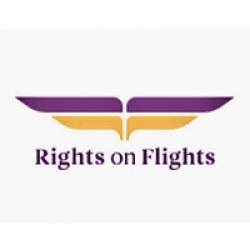 Sophie Morgan
Sophie MorganTV host and founder of Rights on Flights
Making Space
UK
 Linda Ristagno
Linda RistagnoAssistant director external affairs/accessibility and tourism policy
International Air Transport Association (IATA)
Switzerland
 Heather Ansley
Heather AnsleyChief policy officer
Paralyzed Veterans of America
USA
 Elizabeth Hegarty
Elizabeth HegartyManaging director, aviation and transport
Wilson James
UK
 Brian Cobb
Brian CobbChief innovation officer
Cincinnati/Northern Kentucky International Airport
USA
 Roberto Castiglioni MBE
Roberto Castiglioni MBEAccessible air travel evangelist
Reduced Mobility Rights Limited
UK
15:45 - 16:00
Break
16:00
Inclusive aviation: an EU-project to bridge skills gaps
 Ivan Berazhny
Ivan BerazhnySenior lecturer
Haaga-Helia University of Applied Sciences
Finland
The presentation will outline the trends in education and training, focusing on knowledge, competences and skills relevant to aviation staff involved in planning and delivering service to passengers with a variety of assistance needs (PWDs, PRMs, etc) and the gaps that still exist. The presentation will also share the deliverables of the EU-funded INCLAVI (inclusive aviation) project as an example of a collaborative solution between the aviation industry and academia to bridge such gaps in awareness and competencies of staff, resulting in a more impactful, cost-efficient and humane service delivery.
What the audience will learn
- Fast-paced changes in education industry and in aviation
- Optimal formats for education and training of current and future aviation professionals
- Accessibility as a subject to learn and a skill to practice
- EU funding as a strategic tool to drive changes forward toward a more inclusive and accessible aviation
- INCLAVI curriculum, results from piloting across various occupational groups in aviation
16:30
Empowering airport staff through sustainable training solutions
 Fabiola Pfauser
Fabiola PfauserVice president of product management
Munich Airport
Germany
Join us as we delve into the transformative impact of sustainable training solutions on airport staff and passenger experience. Focusing on the Munich Airport Academy, we will discuss innovative learning methods, cross-industry collaborations and comprehensive development strategies designed to empower employees. By showcasing the academy's cutting-edge facilities and examining the connection between training programs and operational success, this presentation will illuminate how a conducive learning environment can elevate employee satisfaction and better prepare airports for future challenges.
What the audience will learn
- Innovative training methods for staff development
- Impact of learning environment on performance
- Sustainable strategies for a future-ready workforce
17:00
Relieving the lifting load for aircraft handlers
 Maurice van Hooff
Maurice van HooffProject manager – baggage
Royal Schiphol Group
Netherlands
Schiphol was looking into various lifting aids. Due to laws related to working conditions, Schiphol had to invest in better working conditions for everyone on the airport – as soon as possible. We had to improve working conditions while pilots and testing were still going on. Various items were procured, installed and modified on the spot. Within a really short timeframe, we had to break through the long processes of project management at a large airport, install untested lifting aids and develop, engineer and install them on the spot, collaborating with various stakeholders and trusted partners.
What the audience will learn
- The importance of taking accountability for all personnel, also from other companies
- Managing expectations with stakeholders
- How to get things done at a large airport
- Creating tailor-made solutions with standard products
Starting at 17:45 - SKYTRAX World Airport Awards 2025 ceremony and celebration in the exhibition hall after the conference!
Day 2: Wednesday, April 9Sponsored by Equans


N115
Environment and sustainability
09:30 - 17:30
Introduction by Conference Chairs
 Emanuel Fleuti
Emanuel FleutiHead of sustainability and environment
Zurich Airport
Switzerland
 Dr Mary Kerins
Dr Mary KerinsFormer head of health, safety, sustainability and environment at DAA
Mary Kerins
Ireland
09:35
Airport urban integration and mobility with Envision sustainability framework
 Hélène Dubé
Hélène DubéSustainability in projects team lead
AtkinsRéalis
Canada
The aviation industry faces dual challenges: accommodating growing air traffic while minimizing environmental impacts and meeting sustainability goals. The Envision sustainability approach underscores the importance of thoughtful infrastructure planning and collaboration for long-term sustainability. Integrating rail transportation with airports can create a more sustainable, efficient and resilient network, benefiting passengers and the environment. This conference will present best practices and forward-thinking strategies to drive the future of sustainable aviation and urban mobility.
What the audience will learn
- Using a standardized framework like Envision allows for effective measurement and enhancement of a project’s overall sustainability performance
- Integrating rail transit with airports enhances the travel experience, making it more comfortable and predictable while reducing carbon emissions
- Innovative rail connections enhance airport sustainability and passenger convenience, emphasizing urban integration as airports are city gateways
- Rail systems reduce the need for extensive parking and road infrastructure, leading to cost savings in operations and urban planning
- Comprehensive risk management ensures long-term durability, reducing risks and total ownership costs by minimizing replacement and maintenance expenses
10:05
Sustainability in the landscape of developing country – Pakistan's case study
Deputy director - commercial
Pakistan Airports Authority
Pakistan
The presentation will elaborate on how the Pakistan Airports Authority has integrated sustainability into every aspect of airport management and operations. To improve upon green initiatives and abide by IATA’s related manuals, the country’s major airports are being outsourced to further the cause. Current achievements include the installation of solar panels by air cargo companies, the digitalization of official records, the prohibition of single-use plastics by airlines, a water recycling initiative at Islamabad's capital airport, and the establishment of an orchard farm adjacent to Karachi Airport. Future prospects involve sustainability-focused digitalization, including e-boarding passes, digital parking receipts and electronic retail invoices.
What the audience will learn
- Pakistan's contributions toward green initiatives in the aviation industry
- Passenger involvement in sustainability initiatives
- Future prospects and avenues to further the cause of green aviation
10:35
Photovoltaic plan: development of PV plants at airports – specificities
 Antonio Rosselló Caldentey
Antonio Rosselló CaldenteyInfrastructures director
Aena
Spain
Presentation of Aena's photovoltaic plan, objectives, challenges and difficulties in its execution, as well as the unique execution aspects due to being within an airport, especially those related to aeronautical safety.
What the audience will learn
- Specifities of development of PV plants in airports
- Aena's strategy for decarbonization
- New technology for PV plants
11:05 - 11:25
Break
11:25 - 11:55
PLATINUM SPONSOR: Decarbonization solutions: digital technology serving the environment
The discussion will focus on technical solutions for a safe, reliable, smart and sustainable future for airports. Taking the example of solutions implemented in France, and in the Netherlands at Royal Schiphol Airport, we will examine how we can improve energy efficiency and accelerate the decarbonization of airports. We will detail how digital solutions like digital twins can enhance decision-making and operational performance in electrical, mechanical and control systems across terminals and passenger and luggage flow management.
What the audience will learn
- Sustainable solutions for airport terminals: geothermal, heat pumps for buildings
- Alternative for APU and reducing CO2 emissions from aircraft
- Digital solutions for operational performance
 Lucia Bergamini
Lucia BergaminiPortfolio manager - sustainability
Royal Schiphol Group
Netherlands
 Bram Fransen
Bram FransenCommercial director West NL
Equans Netherlands
Netherlands
 Hop Ton That
Hop Ton ThatGeneral manager international airport and ATC systems, Ineo
Equans
FRANCE
11:55
Nature-based solutions for sustainable airport design
 Arthur Perkins
Arthur PerkinsArchitect
Arthur Perkins – Conseil
France
The presentation will illustrate the nature-based approach to development recommended in the 2022 ADRM, with a focus on site planning and design. As the ADRM states, “the construction … of an airport can transform the environment through the disruption of land and waterways, … loss of natural habitats, farmland and human settlements”, as well as the impact on its surroundings. In a sustainable approach that mitigates environmental disruption, the fundamental priority of aeronautical design standards is balanced by nature-based solutions to strengthen the natural resources of the airport site, ensuring healthy air, water and soil, rich biodiversity and climate-change resiliency.
What the audience will learn
- Site-specific landscape planning concepts to create a sustainable airport environment. Examples from Oslo, Munich and Kathmandu
- Nature-based solutions for environmental public health to minimize heat islands, water pollution and aircraft noise. Examples from Réunion, Paris-Orly and Amsterdam-Schiphol
- Best practices in landscape management to restore habitat and promote biodiversity and carbon capture. Examples from Paris-Orly and CDG
- Land planning for self-reliance in water, energy, food and waste cycles. Examples from San Diego and Cochin
- Strategies for climate resiliency in storm surge protection and flood mitigation. Examples from innovative landscape and green infrastructure design firms
12:25
Approach to resilience at Portland International Airport
 Dan Pippenger
Dan PippengerChief aviation officer
Port of Portland
USA
 Brad Wilson
Brad WilsonSenior principal
PAE
USA
The PDXNext project is a US$2bn redevelopment of Portland’s airport, designed for high resilience in the face of growing environmental concerns. Using strategies that address the terminal building along with the airport infrastructure as a whole, the project created a future-ready airport. This presentation will explain how the team doubled terminal capacity while halving energy intensity, and why they included a ground-source heat pump, high-performance façade, and extensive daylighting. Join our presentation to discover how these innovations make PDX a future-ready building and how these strategies can be implemented in other projects.
What the audience will learn
- Impact: learn about the critical role that an airport plays in a region’s resilience
- Planning: explore Portland International Airport’s seismic and climate resilience planning process and how it reinforces the port’s guiding principles
- Analysis: understand how the airport infrastructure, structures and building systems were analyzed and prioritized
- Implementation: learn about the airport’s proactive approach to resilience and how it’s being implemented through the PDXNext program
12:55 - 14:15
Lunch
14:15
Heathrow Airport: how to develop a zero waste strategy
 Nick Gabriel
Nick GabrielSenior environmental sustainability manager
Heathrow Airport Limited
UK
 Steve Blackburn
Steve BlackburnTechnical director, sustainable consumption
WSP UK
UK
Heathrow is committed to reducing operational waste by 2030 against rising passenger numbers. In collaboration with consultancy firm WSP, Heathrow is drafting a new strategy that details interventions to avoid waste and increase reuse and recycling rates, potentially eradicating 3,500 tonnes of waste.
The range of interventions is extensive, addressing supply chains, use or management of plastics, organics, glass and residual wastes from airside, landside and aircraft. Each is analyzed to understand potential contributions to waste. Stakeholders informed the identification of interventions, nurturing ownership across the business. The presenters are pleased to share insights into the strategy formulation and proposed interventions.
What the audience will learn
- Interventions that attendees can consider to tackle waste across their own airport estates
- Best practices and lessons learned from colleagues in other airports who have implemented similar interventions
- The process of developing a zero waste strategy: ideation, modeling and stakeholder engagement
14:45
Sustainable business change – toward a value-driven Schiphol
 Annieke Smith
Annieke SmithSustainability advisor
Royal Schiphol Group
Netherlands
 Boaz Wasser
Boaz WasserSustainability advisor
Royal Schiphol Group
Netherlands
Schiphol is aiming to become a fully circular airport by 2050. We cannot predict the future, but trends such as scarcity of materials and personnel and rising prices are clearly visible. Based on this, we are developing a plan to tackle the business change for Schiphol. Achieving this change requires collaboration between four main building blocks: circular chain management, asset lifecycle management, material flow management and data. Well-defined KPIs and data are key for our success. They give us the proper tools to monitor and steer our circular performance.
What the audience will learn
- Learning by doing: to realize our 2050 goal of being a fully circular airport, we must act now
- A value-driven organization needs actionable data on sustainability in order to guide decision-making
- Defining clear responsibilities and an integral approach throughout the entire lifecycle chain is a necessity for success
15:10
This is it! Circular airports are becoming a reality
 Rita Jónyer
Rita JónyerCircular economy analyst
Avinor
Norway
 Sara Solis
Sara SolisCircular economy lead
Royal Schiphol Group
Netherlands
 Anne Rademaker
Anne RademakerCircular airports lead
Excess Materials Exchange
Netherlands
Airports are socio-economic ecosystems that live at the point where passengers change modes of transportation to reach their chosen destinations. Faced with societal challenges such as climate change and resource scarcity, airports themselves have embarked on a journey toward a sustainable identity that embraces their primary function of moving people. As part of this adaptation, airport operators have many reasons to consider the benefits of integrating circularity into their daily operations. Listen to some of the EU's leading airports that have gone beyond the pioneering stage to provide blueprints for understanding resource flows and how airports can benefit from circularity.
What the audience will learn
- How to move from waste to resource thinking by understanding the nature/value of resource streams in daily airport operations
- How to implement the systemic reuse and recycling of infrastructure and construction materials in airports
- How to implement consumer-friendly and economically viable options to eliminate consumables in airport operations
- How the circularity projects implemented at leading EU airports can be adopted by fellow airports
- How/where to access relevant information to increase circularity aspects in airports' individual sustainability roadmaps
15:45 - 16:00
Break
16:00
FlyingGreen: a one-stop shop supporting aviation decarbonization and climate adaptation
 Dr Tamara Pejović
Dr Tamara PejovićDeputy head of aviation sustainability
Eurocontrol
Belgium
 Rachel Burbidge
Rachel BurbidgeSenior policy officer, environment and climate change
ACI - Latin America-Caribbean and Eurocontrol
Belgium
As the aviation industry continues to grow, it is crucial to address the associated environmental challenges. Eurocontrol’s FlyingGreen provides states, ANSPs, airports and other aviation stakeholders with the tools and resources they need to adopt green practices and strive toward a more sustainable future. The platform is freely available and free of charge. Its four pillars provide support to stakeholders in addressing the most pressing decarbonization priorities: reducing emissions (NetZero), transitioning to more sustainable fuel (Fuelling Decarb), building climate change resilience to ensure efficient, safe operations (ClimAdapt) and accelerating aviation's access to green funding (DecarbFin).
What the audience will learn
- How to use the platform to measure and monitor emissions and explore estimated future emissions scenarios
- How to assess the sustainable aviation fuel production potential and the gaps between the quantities needed and production capabilities
- How to take the first steps in initiating a climate-change risk assessment and identify adaptation and resilience actions
- How to identify funding opportunities, and understand and take actions to comply with EU taxonomy and CSRD reporting
16:30 - 17:25
Panel discussion: Adopting alternative energy measures – methods and progress
During recent years, the world has experienced the effects of climate change and the relevant need for a new business model. The airport sector is trying to mitigate its environmental impact by experimenting with new development strategies in which decarbonization is no longer a quality aspect but a real key driver for decision-makers. Some airports started with sustainable strategies many years ago, others just a few years ago – but how has it gone? Are these strategies still smart, reliable, strong? What should we expect by 2030 or 2050? What are the relevant lessons learned that we can share?
What the audience will learn
- Examples of alternative energy measures as a reference of airport sector development
- What progress has been made through decarbonization strategies, compared with the expectation, after some years of application?
- What lessons can help other decarbonization strategies be more reliable?
 Dr Giampiero Goretti
Dr Giampiero GorettiHead of energy management and decarbonization
ADR – Aeroporti di Roma
Italy
 Mohamed Charkas, PMP, LEED Green Associate
Mohamed Charkas, PMP, LEED Green AssociateExecutive vice president of infrastructure and development
DFW International Airport
USA
 Michelle Sandbrink
Michelle SandbrinkProject manager, corporate strategy and sustainability
Fraport AG
Germany
Plant development and infrastructure asset manager
Aeroporto G. Marconi di Bologna
ITALY
17:25
Wrap up!
Starting at 17:45 - SKYTRAX World Airport Awards 2025 ceremony and celebration in the exhibition hall after the conference!
Day 2: Wednesday, April 9Sponsored by Schneider Electric


N106
Technovation
09:00 - 17:30
Introduction by Conference Chairs
 Maurice Jenkins
Maurice JenkinsChief innovation officer
Miami International Airport
USA
 Samuel Ingalls
Samuel IngallsPrincipal
Barich
USA
09:05
PLATINUM SPONSOR: How JFK International Airport took on the energy transition
 Jennifer Aument
Jennifer AumentChief executive officer
The New Terminal One at JFK
USA
 Ravichandra Kshirsagar
Ravichandra KshirsagarVice president, microgrid
Schneider Electric
France
New York City’s JFK International Airport is undergoing a US$19bn transformation into a world-class global gateway. By 2050, the terminal must reach net zero emissions while protecting uptime in an era of increasingly extreme weather. With these goals in mind, the terminal sought a solution that delivers both decarbonization and resilience. To do so, it deployed a microgrid featuring the largest rooftop solar array on any US airport, along with battery storage, fuel cells and more.
What the audience will learn
- Innovative microgrid solution: robust solution for decarbonization while ensuring resilience against extreme weather and regional grid outages
- Commitment to net zero emissions: incorporating new designs to reach sustainability goals
- Implementation insights: funding strategies behind this groundbreaking energy project and the lessons learned during its implementation
09:30
The agentic AI era meets the aviation industry
 Dalila Haidar
Dalila HaidarSenior industry advisor, travel, transportation and logistics, MEA
Microsoft
United Arab Emirates
Discover the transformative power of AI in the airport industry! This presentation will explore the evolution from AI to GenAI and the agentic AI world, highlighting how AI agents revolutionize customer experience and airport operations. It will demonstrate how AI agents enhance the traveler's journey at various touchpoints, making experiences more personalized and connected, while also boosting operational efficiency through seamless and integrated airport processes.
What the audience will learn
- What is an AI agent in the world of GenAI?
- Strategies to bring it to life within the industry
- Inspiring use cases that can add significant value
09:40
Navigating the AI transformation: opportunities and challenges for airports
 Bob Kwik
Bob KwikWorldwide head of airports
Amazon Web Services
UK
This session will explore how airports are adopting artificial intelligence (AI) technologies to optimize operations and enhance the passenger experience. Participants will learn about airports using AI, where the technology is mature with proven benefits, ongoing trials and early-stage projects, and the potential impact of new advances in technology. The session will also address the challenges of AI implementation for airports, including risk management, governance, stakeholder engagement and technology foundation.
What the audience will learn
- Examples of airports successfully implementing AI technologies
- Lessons and insights from real-world airport AI projects
- Understand the key considerations and strategies for overcoming barriers to successful AI implementation in airports
09:50 - 10:40
Panel discussion: AI, automation and robotics – the airport is coming alive!
 Steven Yiu
Steven YiuExecutive director of airport operations
Airport Authority Hong Kong
Hong Kong
 Giovanni Gennaro
Giovanni GennaroHead of open innovation
Aeroporti di Roma
Italy
 Dalila Haidar
Dalila HaidarSenior industry advisor, travel, transportation and logistics, MEA
Microsoft
United Arab Emirates
 Borja Escribano
Borja EscribanoInnovation manager
Isdefe (on behalf of Aena)
Spain
 Bob Kwik
Bob KwikWorldwide head of airports
Amazon Web Services
UK
 Maurice Jenkins
Maurice JenkinsChief innovation officer
Miami International Airport
USA
10:40 - 11:00
Break
11:00
You think you're innovative? Think again
 Vera Jakobsen
Vera JakobsenVP digital
Munich Airport / Flughafen München
Germany
 Sherin Dawoud
Sherin DawoudInnovation manager
Flughafen München
Germany
This presentation takes a bold approach, challenging conventional wisdom about what it means to innovate in complex, established industries like aviation. Through an engaging dialog, an insider with 12+ years of airport experience and an aviation newcomer bringing fresh perspectives will reveal the hard lessons they've learned about driving real change in an environment where risk often is not an option. Expect candid discussions on navigating resistance, avoiding superficial innovation and creating the conditions for lasting transformation.
What the audience will learn
- How to set up, structure and focus your innovation strategy
- Strategies for fostering an innovation environment by focusing on the underlying processes
- Concrete tips for your innovation toolkit and some pitfalls to avoid when creating it
- An (almost) outsider viewpoint on innovation at airports
11:30
Airport technology improvement program
 Iyad Hindiyeh
Iyad HindiyehChief digital transformation officer
San Francisco International Airport
USA
 David Ploog
David PloogManaging partner
M2P Consulting
USA
A technology-forward improvement program at airports provides a framework to transform the design of airport technology infrastructure, strengthen cyber defense, augment the guest experience and help airports embrace emerging technologies. It brings business problems into the foreground but also attempts to change the narrative: to challenge the way the industry approaches technology implementations. SFO’s Technology Improvement Program seeks to ignite technology innovation by establishing technology as a valued strategic partner while pursuing airport asset optimization. While fostering new ways to engage the industry, SFO aims to create collaboration opportunities novel to aviation, and inspire others to embark on similar journeys.
What the audience will learn
- Igniting technology innovation to address business and operational challenges
- Establishing technology as a valued strategic partner in pursuing airport asset optimization
- A new approach to fostering industry engagement
- Digitally enabled seamless guest experience throughout their journey
12:00
Utilizing shared data and situational awareness to improve airport performance
 Timo Jarvela
Timo JarvelaVice president
Finavia Helsinki Airport
Finland
The presentation demonstrates how shared data and situational awareness can significantly enhance airport operations, using Helsinki Airport as a case study. Finavia’s airport operations system (AOS) integrates situational awareness and efficiency across airport processes (passenger, baggage, airside). The presentation highlights how Finavia has started building a system toward the extended AOP (airport operations plan).
What the audience will learn
- How to improve airport stakeholder cooperation and data sharing between processes and organizations
- How to unify data and create common situational awareness
- How to streamline operations and increase transparency
- Development path for AOP implementation
12:30 - 13:15
Panel discussion: AI in airports, a year later – real vs aspirational
The panel will outline the industry-specific scenarios for generative AI, debunking what is a near-term outcome versus more futuristic potential uses. MIA and YVR will share how they are currently using AI and generative AI, and the use cases that have been enabled by generative AI.
What the audience will learn
- Actual use of AI at MIA
- Actual use of AI at YVR
- Use cases under development
- Use cases on the horizon (further out)
 Verena Dollberg
Verena DollbergProgram director - corporate strategy and digitalization
Fraport
Germany
 Basil Binns, III
Basil Binns, IIIDeputy aviation director
Miami-Dade Aviation Department
USA
 Carin Chapman
Carin ChapmanDirector of automation
Koniag Government Services
USA
 Eve Machol
Eve MacholDirector of airport industry innovation
Microsoft
USA
13:15 - 14:15
Lunch
14:15
Airports for Innovation (A4I) – united to innovate
 Vera Jakobsen
Vera JakobsenVP digital
Munich Airport / Flughafen München
Germany
Head of ideation and entrepreneurship
Aena
Spain
 Giovanni Gennaro
Giovanni GennaroHead of open innovation
Aeroporti di Roma
Italy
Airports for Innovation (A4I) is a global alliance of 10 leading airports worldwide, co-founded by Aena and Aeroporti di Roma, that share a common goal: to foster collaboration to improve passenger experience and airport operations, always with a more sustainable and innovative approach. We seek to promote joint innovative solutions that could be standardized and extended to other airports and adopted in the long term by the industry at large. For the first time ever, leading airports worldwide join forces to launch an international call for startups, where projects will have to be developed between several airports of the network.
What the audience will learn
- Airports for Innovation (A4I) network: Aena, AdR, Athens, Nice, Munich, Dallas, Vancouver, Dubai, Oman and Tokyo airports
- International collaboration between airports to solve common industry challenges
- Joint call for startups
- Pilot projects of the A4I network
- Open innovation strategy in airports
14:35
How MAG uses lidar and curb-to-gate insight to transform experiences
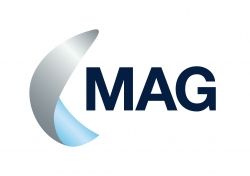 Nick Woods
Nick WoodsChief information officer
Manchester Airports Group
UK
 James Williamson
James WilliamsonCEO
Veovo
UK
Understanding how passengers move through the airport, and how those patterns vary by flight, is key to making the best operational and customer service decisions. But most airports are not equipped to do this. Manchester Airport Group has developed a comprehensive IoT strategy to improve its understanding of customers’ movements and needs – from curb to flight, right across each of its three UK airports. The speakers will present how MAG harnesses anonymous movement data from passenger-related processes and its private wifi network, to reduce congestion, cut waiting times, grow retail and improve operational performance.
What the audience will learn
- Lessons learned with lidar technology – and how its accuracy and flexibility are revolutionizing queue measurement
- The value of a sensor-agnostic approach that combines data from lidar, other sensors, wifi and the AODB to characterize pax flow
- How insights into the passenger journey, tracked by flight, can help influence behavior, build accurate plans and improve operational efficiency
- How to best leverage anonymous tracking data from private wifi networks
- Set your ambitions early: Think big, yet be clear on the steps to get there
15:00
AI-BI-DI: insights into Frankfurt Airport's AI and data strategy
 Verena Dollberg
Verena DollbergProgram director - corporate strategy and digitalization
Fraport
Germany
 Christian Wrobel
Christian WrobelChief data architect
Fraport
Germany
Frankfurt Airport consistently embraces cutting-edge technology to ensure high-quality customer experiences and enhance operations. This presentation will delve into the airport's strategic implementation of artificial intelligence (AI), business intelligence (BI) and data intelligence (DI) to create a seamless, efficient and smart airport ecosystem, highlighting the transformative impact of these technologies on airport management. Learn, among other things, how FRA is using AI for sustainable resource allocation, complaint management and enhancing the employee experience; BI for evaluating waiting times and A-CDM stability; and DI for analyzing passenger shopping behavior.
What the audience will learn
- AI: understand how Frankfurt Airport (FRA) leverages artificial intelligence to optimize customer and employee experiences
- BI: learn how business intelligence is used for process evaluation and process stability
- DI: discover how data intelligence techniques are employed to provide valuable insights for improving the customer experience and operations
15:30
Facilitating the adoption of seamless travel at Malaysia Airports
 Azmel Rasheed
Azmel RasheedGeneral manager operational excellence and guest experience
Malaysia Airports
Malaysia
 Sarah Samuel
Sarah SamuelSenior vice president, airport and airline operations, APAC
Amadeus
Singapore
Passengers traveling through Malaysia's five (5) international airports are now benefitting from a major upgrade to their passenger processing technology. Hear how increasing self-service, reducing queues and improving baggage handling have transformed their terminals.
What the audience will learn
- How to best facilitate the adoption of seamless travel with airlines and passengers alike
- Consider your change management process when onboarding airlines and travelers for biometric passenger processing
- Operational benefits of seamless passenger processing systems – improvement in passenger throughput, increased efficiency at boarding, on-time aircraft turnaround
- The importance of partnership when collaborating with airlines, airports and border control for a seamless passenger experience
16:00 - 16:15
Break
16:15
APU use monitoring via AI to reduce emissions and costs
 Alban Negret
Alban NegretHead of innovation and corporate venture
Groupe ADP
France
 Nathalie Lerambert
Nathalie LerambertSales and trade marketing director
WaltR
France
Group ADP is implementing a groundbreaking solution for air quality and CO2 management at Paris-Charles de Gaulle Airport. Leveraging advanced multi-optical technology combined with AI and real-time data transmission, the system automatically detects APU use and monitors aircraft emissions, delivering critical insights to reduce environmental impact. By integrating with ADP’s data infrastructure, this partnership aims to enhance air quality management and optimize energy consumption, fostering a more sustainable airport operation. With our partner's innovative approach, we’re setting new standards in environmental responsibility and operational efficiency, reinforcing our commitment to sustainability and innovation within airport management.
What the audience will learn
- APU use reduction benefits
- Computer vision and AI
- Collaboration with startup
16:45 - 17:30
Panel discussion: Curbside evolution – data-driven solutions for efficient airport operations and better customer experience
The evolution of technology and processing power has opened many opportunities for the complex infrastructure in states. What was supposed to be the traditional design is now being designed as flexible to cope with future variations in traffic demands. The heart of the flexible infrastructure is derived from robust data collection, which gives the owner the operational insights needed to change operations based on real-time traffic and pedestrian demands.
What the audience will learn
- The unique operational challenges faced at the airport curbside, where traffic congestion, fluctuating pedestrian demands and resource allocation can create bottlenecks
- The types of valuable data that can be collected outside the terminal, including traffic flow, pedestrian movement and vehicle dwell times
- The power of AI-based solution. What challenges can be expected when considering AI-based technologies for curbside management?
- The success story of a US airport's groundbreaking curbside monitoring and analytics system
 Brian Cobb
Brian CobbChief innovation officer
Cincinnati/Northern Kentucky International Airport
USA
 Farukh Ijaz
Farukh IjazPresident and managing partner
Consulting Services USA
USA
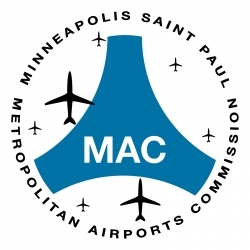 Kyle Scapple
Kyle ScappleAssistant director of airport systems
Metropolitan Airports Commission
USA
 Danny Peleg
Danny PelegVP of sales and business development
Beonic
USA
Starting at 17:45 - SKYTRAX World Airport Awards 2025 ceremony and celebration in the exhibition hall after the conference!
Day 3: Thursday, April 10
N111
Accessibility and assisted travel
09:00 - 15:00
Introduction by Conference Chairs
 Emily Yates
Emily YatesHead of accessibility and inclusive design
Mima
UK
 Roberto Castiglioni MBE
Roberto Castiglioni MBEAccessible air travel evangelist
Reduced Mobility Rights Limited
UK
09:05
Driving economic growth through enhanced passenger access
 Megan Atkins Thoben
Megan Atkins ThobenVice president of operations and customer engagement
Louisville Regional Airport Authority
USA
 Neil Barnfather
Neil BarnfatherChief commercial officer
GoodMaps
USA
As airports compete to elevate passenger experience while optimizing operational efficiency, enhanced wayfinding solutions present a significant opportunity for economic growth. This proposal explores how Louisville Muhammad Ali International Airport (SDF) has harnessed GoodMaps’ innovative indoor wayfinding platform to achieve these goals. Initially developed with the American Printing House for the Blind (APH), GoodMaps’ technology enables accessible, high-precision navigation for all travelers, especially those who are blind or have low vision, are non-English speakers or are unfamiliar with the airport.
What the audience will learn
- Understand the impact of accessible services on airport revenue streams
- Analyze the cost-saving potential of supplementing traditional passenger assistance
- Evaluate the economic benefits of improved passenger independence and satisfaction
09:30
Investing in staff: a holistic perspective
 Chelsea Rodriguez
Chelsea RodriguezAirport volunteers and customer accessibility manager
Seattle-Tacoma International Airport
USA
This presentation focuses on Seattle-Tacoma International Airport's (SEA) approach to investing in staff to further our accessibility program. SEA has 25,000 badge holders across 800 companies, all with their roles, responsibilities and work culture. Yet the many employees who work at SEA are part of the same airport community and our travelers do not distinguish between employers. To reach our many accessibility goals, SEA's customer service department focuses on four interrelated prongs: customer service standards manual; staff education; quality assurance program; and staff recognition. This presentation directly ties to the Passenger Terminal Expo Race to Quality theme.
What the audience will learn
- SEA access program goals and three-pronged focus (facilities, customer service, engagement)
- A holistic approach to investing in staff to elevate accessibility is required
- The four interrelated approaches are customer service standards, staff education, quality assurance and staff recognition
- Lessons learned along the way include nothing about us without us, growing relationship, iterative process, empowering staff
- SEA is on a journey to elevate accessibility – and is eager to continue that education with attendees
09:55
Translate boarding announcements into sign languages for d/Deaf passengers
 Mehdi Masoumi
Mehdi MasoumiCEO
Deaf AI
Canada
This presentation will explore the impact of advanced AI and software technology in transforming accessibility in public transportation, specifically in airports. Attendees will gain insights into the collaborative development process, highlighting partnerships with stakeholders, especially the Deaf community, to create inclusive solutions. By discussing challenges and achievements, the presentation will cover the journey from concept to implementation, emphasizing the importance of co-creation with underserved communities. The session aims to inspire participants to consider innovative approaches for accessibility and inclusion, showcasing how tech-driven solutions can make public spaces more welcoming and functional for all travelers.
What the audience will learn
- The importance of accessibility in transportation hubs for deaf and hard-of-hearing passengers
- How to use technology such as AI and advanced software development to make an impact
- The role of co-development with stakeholders, especially the deaf community, in creating impactful technology
- The process of collaborating with airports to integrate AI-based accessibility solutions into existing infrastructure
- Deaf community-centered development approach: nothing about them without them
10:20 - 11:10
Panel discussion: Fly inclusive – crafting a world where accessibility and inclusion become a reality
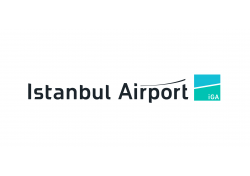 Hilal Kahraman
Hilal KahramanExperience design and segment management deputy manager
iGA Istanbul Airport
Turkey
 Ivan Berazhny
Ivan BerazhnySenior lecturer
Haaga-Helia University of Applied Sciences
Finland
 Michele Parietti
Michele PariettiPRM assistance manager
SEA Milan Airports
Italy
 Stephanie Cadieux
Stephanie CadieuxChief accessibility officer
Country of Canada
Canada
 Linda Ristagno
Linda RistagnoAssistant director external affairs/accessibility and tourism policy
International Air Transport Association (IATA)
SWITZERLAND
11:10 - 11:30
Break
11:30
Designing inclusive airports: charting the course – reimagining accessibility in air travel
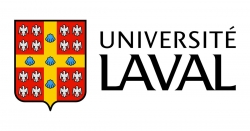 Ernesto Morales
Ernesto MoralesFull professor and researcher
Université Laval – School of Rehabilitation Sciences
Canada
 Matthew Parks
Matthew ParksPartner, architect, aviation lead
Dialog
Canada
Airports are often envisioned as our gateways to adventure, but for those with disabilities they are often gateways to frustration. Whether it’s navigating through a maze of terminals, securing a wheelchair-accessible restroom or finding assistance with luggage, the challenges are numerous. A group of design and accessibility experts is undertaking a three-year qualitative study on the current state of airport accessibility and how we can improve it. Currently underway, the Inclusive Airports study provides innovative, insightful recommendations that will redefine the way we design air travel. Join this session to hear about the preliminary findings and recommendations for terminal design.
What the audience will learn
- Learn about the current state of airport accessibility in Canada
- Learn about the Inclusive Airports study methodology and key findings
- Better understand the challenges faced by those with visible and invisible disabilities when navigating airports
- Learn about the key recommendations from researchers and aviation design experts to promote inclusivity
- Learn about best practices from leading airports around the world to improve accessibility
11:55
Italian initiatives for passengers with disabilities and reduced mobility
 Mark De Laurentiis
Mark De LaurentiisDirector of passenger rights protection department
Ente Nazionale per l'Aviazione Civile
Italy
In 2022 ENAC set up the “Italian Disability Advisory Board” with the aim of establishing a constant dialogue with all the relevant stakeholders dealing with PRM matters in the aviation sector. The purpose is to address existing issues and challenges and find the best and most practical solutions to improve the accessibility and raise the quality standards of the PRM assistance delivered at airports and onboard. The One Click Away initiative represents one of the achievements. Thanks to the work done by the IDAB, the rate of pre-notifications of the PRM assistance raised from 68% in 2022 to 72% in 2023 and 2024.
What the audience will learn
- The importance of working together, as a team, with all the relevant stakeholders involved in accessibility
- Simplification and standardization of the section dedicated to PRMs on airline websites
- Increasing the awareness of prenotification and the correct use of the IATA codes
12:20
Breaking down barriers: leveling up inclusivity with AI sign language
 Brian Cobb
Brian CobbChief innovation officer
Cincinnati/Northern Kentucky International Airport
USA
 Leia Clancy
Leia ClancyHead of growth
Signapse
UK
Experience how an airport and a startup are revolutionizing accessibility for deaf travelers through the integration of American and British Sign Language (ASL/BSL) with AI technology. Learn from industry experts as they discuss the innovative steps taken to create a more inclusive travel experience. Learn about the technology behind ASL integration, the challenges and successes faced during implementation, and the future implications for accessibility standards in the aviation industry.
What the audience will learn
- The power of collaboration: discover how partnerships between technology providers, airports and accessibility advocates can drive significant change
- The importance of inclusivity: the impact of ASL technology on the travel experience and how it can set new standards
- Technological advances: explore the latest developments in sign language technology to reach this point and expand accessibility
- Addressing challenges and overcoming obstacles: learn about deploying the technology and adoption curves
- The future of accessibility: gain insights into the potential future implications of sign language integration
12:45 - 13:30
Conversation: Can wheelchair abuse be uprooted?
 Linda Ristagno
Linda RistagnoAssistant director external affairs/accessibility and tourism policy
International Air Transport Association (IATA)
Switzerland
 William Neece
William NeeceDirector
Ozion
France
 Roberto Castiglioni MBE
Roberto Castiglioni MBEAccessible air travel evangelist
Reduced Mobility Rights Limited
UK
13:30 - 15:00
Lunch
Day 3: Thursday, April 10
N115
Airport business – leadership and strategy
09:00 - 15:00
Introduction by Conference Chair
 Claire Donnellan
Claire DonnellanDirector
Customer Centric Consulting
Australia
09:05 - 09:50
Panel discussion: A megatrends mindset – what keeps airports up at night?
As the world undergoes rapid transformations driven by factors such as climate change, technological innovation, and economic and geopolitical shifts, it is imperative that airports anticipate and address the implications of these megatrends on aviation infrastructure and operations. Without proactive measures, airports and the aviation industry risk facing disruptions that could compromise the safety of aviation operations and the freedom of movement for travelers. Cybersecurity threats, operational disruptions and achieving sustainability goals amidst increasing regulatory pressures are too real. This panel provides an airport and technology/academic perspective on the challenges of megatrends that keep airport executives up at night.
What the audience will learn
- Digital integration: As airports embrace digital integration, AI and automation transform operational efficiency and the passenger experience
- Sustainable and responsible growth: DEN's vision to accommodate 100 million passengers in the context of environmental stewardship
- Changing demographics: Demographic shifts also necessitate inclusive designs to accommodate different age groups, travel purposes and accessibility needs
- Capital investment: Investments being made at DEN and SFO are futureproofing their infrastructures to stay competitive and resilient
- Build trust: Proactive governance, such as SFO's community noise and air quality monitoring systems, builds trust and fosters collaboration
 Mike Nakornkhet
Mike NakornkhetAirport director, chief executive officer
San Francisco International Airport
USA
 Michael Biel
Michael BielChief financial officer
Denver International Airport
USA
 Dr Carlos Kaduoka
Dr Carlos KaduokaVP strategy and business transformation
SITA
USA
 Ronda Chu
Ronda ChuManaging director, finance
San Francisco International Airport
USA
09:50
Resilience, continuity, risk management – a new benchmark for airports
 Dr KJ Devasia
Dr KJ DevasiaAssistant vice president and head
Bangalore International Airport Limited
India
The aviation industry, precisely the airport sector, has been incredibly alert and cognizant of the new kinds of challenges and risks in the post-pandemic era. The increasing number of risks clubbed with the unprecedented impact of climate change prompt airport operators to invest more time and resources in devising strategies to overcome such uncertainties. Enterprise risk management paired with business continuity and systematic response to events are the new benchmark for ensuring organizational resilience in the aviation sector. Privatization of airports and the compulsion of self-financing to add new infrastructure underline the need for a calculated effort in this domain.
What the audience will learn
- Benchmarking risk-response-continuity planning for business resilience in airports
- Integrated approach toward emergency and crisis management to avoid duplication of efforts and efficient management
- How to ensure ROI by investing more into risk management, business continuity and emergency response – best practices
- Innovation and technological intervention and opportunity is resilience planning
- Uniform and standardized practices in business resilience
10:15
Shaping the future: strategic leadership for Saudi Arabia's airports
 Diogenis Papiomytis
Diogenis PapiomytisGeneral manager, corporate strategy
Matarat Holding
Saudi Arabia
This presentation explores the complexities of managing strategy across 27 airports under an airport holding company in Saudi Arabia. The session will start with a forward-looking perspective on Saudi Arabia’s aviation sector over the next decade, showcasing its pivotal role in economic diversification and global connectivity. It will then highlight the challenges of aligning national goals with local operations, fostering collaboration among airports and leveraging synergies to drive efficiency. Attendees will gain insights into transformative developments in the Saudi airport sector, such as privatization, with a focus on how an airport holding manages domestic, regional, tourism and international hub airports.
What the audience will learn
- The challenges of aligning national strategies with local airport operations in a complex, multi-airport environment
- How fostering collaboration and leveraging synergies drives efficiency across a diverse portfolio of 27 airports
- How an airport holding company manages domestic, regional, tourism and international hub airports under a unified strategy
- Managing a PMO for strategic initiatives, including economic regulation reforms and implementing a unified CX strategy rollout
- Strategies for fostering partnerships and collaboration with diverse government and private stakeholders in the aviation sector
10:40
From strategy to success: creating lasting impact
 Claus Grunow
Claus GrunowVP corporate strategy and digitalization
Fraport AG
Germany
In today's fast-paced world, effective strategy and driving change are crucial for creating lasting impact. This keynote explores the core principles of strategic planning, highlighting Fraport's newly launched strategy with its three strategic priorities. By examining best practices and proven methodologies, it will explore how these priorities are designed to drive innovation and operational efficiency and achieve sustainable growth. Learn how Fraport is navigating the complexities of the modern business environment and turning strategic vision into lasting impactful outcomes.
What the audience will learn
- Fraport's newly launched strategy and its three strategic priorities are essential for driving innovation and sustainable growth
- Turning strategic vision into impactful outcomes addresses immediate challenges and ensures long-term success and organizational development
- Proven methods show how to successfully use strategic principles to handle complex business situations
11:10 - 11:30
Break
11:30
Why airports need a strategy
 Cassie Schmid
Cassie SchmidChief strategy officer
Philadelphia International Airport
USA
 Nigel Womersley de Zaldua
Nigel Womersley de ZalduaDirector
ICF
UK
The aviation industry is always in a state of flux. Airlines are developing new routes, with new aircraft and new network strategies. Some are successful and others struggle to keep afloat. Passenger expectations are developing and increasingly sophisticated, and the business of running an airport is developing too, with constant demands on limited resources and a need to adapt to increasingly fast developments in technology. All this mixed with global challenges such as regulation and sustainability make the management of an airport a very complex challenge. Airports need clear and deliverable strategic plans to navigate the turbulent waters of aviation.
What the audience will learn
- The impact and benefits of having a strategic plan that is focused on deliverable outcomes
- The importance of working with stakeholders and understanding their roles in the strategic plan
- How a well-thought-through strategic plan can add real value and benefits to an airport
- Simple methodologies for making a strategic plan really work
- Why an airport strategic plan can help with employee satisfaction and retention
11:55
Conversation: Visionary leadership: creating a future-ready, inclusive workforce
 Karen Ellis
Karen EllisAssistant general manager, chief customer experience officer
Hartsfield-Jackson Atlanta International Airport
USA
 Peter Gargiulo
Peter GargiuloPresident
4QD Strategy Consulting LLC
USA
Join us for an intimate fireside chat as we explore the vision for tomorrow’s workforce from the executive vantage point. This session will delve into the essential qualities to embed in our teams, strategic approaches to developing tomorrow's workforce today and innovative practices to foster a more inclusive industry that resonates with the next generation. Discover insights into the skills, mindsets and cultural shifts needed to attract and retain top talent in a rapidly evolving landscape. Perfect for forward-thinking professionals and leaders committed to shaping a dynamic, inclusive and future-ready workforce.
What the audience will learn
- Essential workforce qualities for future success
- Foster an inclusive culture that resonates with younger generations
- Drive cultural shifts to support a future-ready workforce
12:20 - 12:50
Panel discussion: Denver's Center for Equity and Excellence in Aviation (CEEA)
A first-of-its-kind in the aviation industry, CEEA’s mission is to provide training and career pathways for youth from underserved communities, creating career advancement and an aviation talent pipeline. A blend of training, conference, innovation lab, office and collaboration space, the Center will host industry lectures, community outreach events, workshops and educational activities. The project is being driven by the core values that the Center represents. A partnership between the Great Hall Renovation architect and key minority business partners will enable the project to be 80% designed by MWBE firms. The panel will discuss the structure and success of this mentoring relationship.
What the audience will learn
- How programs like these can benefit the industry through workforce development
- Deepening the connection between airports and local disadvantaged communities
- Program/space concepts for a prototype like CEEA
- Team structure for mentoring and project delivery
- Overall schedule and budget for the project
 Phillip Washington
Phillip WashingtonChief executive officer
Denver International Airport (DEN)
USA
 Yong Cho
Yong ChoPrincipal in charge
Studio Completiva
USA
 Emily Finch
Emily FinchSenior project manager
Stantec Architecture
USA
12:50 - 13:30
Panel discussion: Developing the airport workforce
This discussion will begin with how we attract, then develop and retain the airport workforce. The panel will come with similarities and differences and concrete examples of how they have implemented solutions in their airports. The discussion will also touch upon the hot topic of succession planning and new approaches to learning and development.
What the audience will learn
- Attracting workforce approach applied to concrete airport examples
- New ways to develop the workforce applied to concrete airport examples
- New ways to retain the workforce applied to concrete airport examples
 Fabiola Pfauser
Fabiola PfauserVice president of product management
Munich Airport
Germany
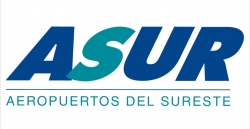 Fernando Landázuri
Fernando LandázuriOperations manager
Cancún Airport
Mexico
 Richard Moxon
Richard MoxonAssociate professor of airport management
Cranfield University Centre for Air Transport Management
UK
 Caelie Tweedie Smith
Caelie Tweedie SmithManager, training programs portfolio
ACI World
CANADA
13:30
Wrap up!
13:35 - 15:05
Lunch
Day 3: Thursday, April 10Sponsored by Turner & Townsend


N103
Airport design, planning and development
09:00 - 15:00
Introduction by Conference Chairs
 Mark Wolfe
Mark WolfePrincipal, head of aviation EMEA
Populous
UK
 Tim Walder
Tim WalderDeputy chair
British Aviation Group (BAG)
UK
09:05
Passenger amenities from design through completion – new terminal programs
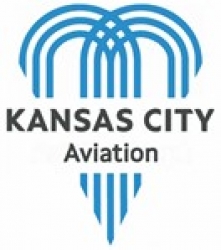 Jade Liska
Jade LiskaDeputy director of aviation
Kansas City Aviation Department, City of Kansas City, Missouri
USA
 Terry Cassidy
Terry CassidyPrincipal
Paslay Group
USA
This is an opportunity to listen and learn from industry leaders within the airport world of constructing new terminals and capital programs around passenger amenities to be inclusive and desired. Learn what innovations and passenger needs are being discussed and implemented. Airports are the center of the 'sense of place' for local travelers while looking for amenities for visitors also. The speakers will also discuss planning for and building for large events and how airports prepare for the World Cup (FIFA 2026). They will also outline lessons learned on planning, designing and implementing a series of amenities to attract all types of travelers.
What the audience will learn
- The opportunity to design and respond to community outreach of what your terminal amenities look like
- Working through design and construction drawings to develop the appropriate amenities for your project
- Developing teams of stakeholders to implement the proper amenities for your community, passengers and terminals
- Programming art, all-gender restrooms, concessions, electric charging stations for GSE, play areas, LEED Gold terminals
- Opportunities to be inclusive and creating a sense of place with amenities designed for the community
09:30
Integrating customer experience insights with sustainable terminal design
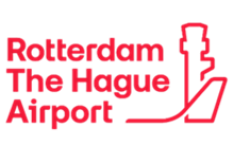 Pieter Huiszoon
Pieter HuiszoonAirport development manager
Rotterdam The Hague Airport
Netherlands
 Pedro Pinto Borges
Pedro Pinto BorgesAirport architect
NACO Netherlands Airport Consultants
Netherlands
Rotterdam The Hague Airport’s (RTHA) recent terminal design prioritizes CX and sustainability. RTHA is the innovation airport of the Royal Schiphol Group, and this is reflected in the terminal design approach. By deeply understanding traveler needs – from ease of navigation to technology and sustainability integration – a design was created that merges architecture with an optimal customer experience. The approach ensures that the terminal not only meets current passenger needs but also adapts to future demands. By combining sustainable architectural design with a comprehensive CX strategy, RTHA is set to deliver a standout travel experience, fostering loyalty and enhancing the airport’s reputation.
What the audience will learn
- Innovative integration of CX and sustainability in terminal design
- Future-ready terminals
- Bespoke design for regional airport
- Net zero terminal design
- Co-creation by airport and designer
09:55
Wellbeing through terminal design. Stansted Airport.
 Mike Hardaker
Mike HardakerChief asset and development officer
MAG (Manchester Airports Group)
UK
 Manuel Cruz
Manuel CruzAviation project director
Pascall+Watson Architects
UK
The spaces we live and work in can have a strong influence in the psychology of their users. In aviation, a terminal design that is focused on the well-being of its users can reduce the stress in passengers, promote more efficient flows and behaviors or boost staff productivity levels. Specific examples will be displayed using the Stansted Transformation Program to illustrate how MAG is investing in improving the customer experience through promotion of well-being within an existing airport.
What the audience will learn
- The importance of well-being in the terminal design
- Techniques and measures through specific examples used in the Stansted Transformation Program
- A view of the future of well-being in terminal design
10:20
Passenger freedom: a new ethos for transformative airport design
 Luis Vidal
Luis VidalFounder and president
Luis Vidal + Architects
Spain
This presentation showcases Luis Vidal’s visionary approach, built on over 30 years of global architectural expertise. It presents an outstanding new design ethos that enhances passenger engagement and profitability, aligning with regions' values while serving as an economic driver. Attendees will explore successful case studies, including Heathrow T2, Pittsburgh's new terminal, Boston Terminal E, Arturo Merino Benítez in Chile, Dallas Airport and Madrid-Barajas T4.
What the audience will learn
- Examine case studies from the visionary concept architect behind Heathrow T2, Madrid-Barajas T4, Pittsburgh, Boston, Dallas and Chile terminals
- Explore how a new architectural ethos for the next generation of airports encourages passenger engagement and drives increased spending
- Learn how this holistic approach attracts premium airlines and services, fostering long-term financial growth and users’ needs
- Discover how airports can be more than hubs; they can be the new flags that reflect the region’s unique values
- Get captivating takeaways from a lifetime dedicated to airport design
10:45 - 11:10
Panel discussion: Experience + education – using design to enrich the passenger experience
Fostering a strong sense of place is essential to every airport environment. Airports around the globe face the challenge of using the built environment to convey the unique narratives of the regions they serve. How can these stories be brought to life in ways that truly enhance the passenger experience? This panel will explore how a design methodology rooted in experiential elements and storytelling can transform the traditional airport environment into a vibrant, engaged community space. We will share examples across CLT that use unexpected elements and sensory experiences as a thesis for implementing concepts at airports across the globe.
What the audience will learn
- Why it matters – spaces rich in immersive, discoverable elements play a critical role in elevating the passenger experience
- How key experiential moments become recognizable via social media and attract passengers even before they reach the airport
- How experiential elements focused on education allow for interpretive moments throughout each passenger’s journey
- Strategies for coordination across entire facilities, positioning elements that support wayfinding strategies, serving as beacons across a cohesive experience
- Empowering the unexpected – explore how interventions encountered throughout the passenger journey offer means for engagement, education, distraction and enjoyment
 Liz Richardson
Liz RichardsonSenior project architect
Perkins&Will
USA
 Zoë Fisher
Zoë FisherSenior associate
Gresham Smith
USA
 Dennis Iskra
Dennis IskraSenior airport architect
Charlotte Douglas International Airport
USA
11:10 - 11:30
Break
11:30
New IATA ADRM 12th Edition: planning for airport construction delivery
 Steve Riano
Steve RianoAviation division manager
Bechtel Corporation
USA
Traditionally, airport designers define the completed project but typically overlook the complexities of construction and associated impacts to ongoing operations. Therefore, construction contractors are often left with developing strategies to address issues of maintaining operational continuity, capacity and passenger experience. With increasing pressure to achieve cost and time efficiency, project delivery regularly compromises passenger service levels during construction. Integrating construction planning into the design process can minimize disruptions and lower project costs. The new IATA ADRM 12th Edition explores strategies for optimizing construction phasing during the planning phase, ensuring seamless operations and avoiding costly, last-minute adjustments during the build phase.
What the audience will learn
- How the IATA ADRM 12th Edition guides the optimization of construction phasing during the planning phase
- The benefits of early construction planning in avoiding costly delays and last-minute changes that compromise the end-state design
- How integrating construction planning into design improves operational continuity and passenger experience during the delivery of airport projects
- Strategies to minimize service disruptions and maintain capacity during airport construction
- Methods for reducing construction time and costs by planning logistics during the design process
11:55
Lessons from major construction projects to keep airports future ready
 Gerard Geurtjens
Gerard GeurtjensProject director
Royal Schiphol Group
Netherlands
Schiphol has a very large capital investment portfolio of billions of euros for the coming years to maintain the level of quality and service but also to create maneuvering space to replace or refurbish existing assets. The presentation discusses the learning points from completed or ongoing major projects and how they are used to ensure that this enormous task is completed as efficiently as possible to secure Schiphol's future.
What the audience will learn
- Organize major projects in a separate division without losing contact with the main organization
- Procurement and tender strategy are a key success factor
- An airport asset is a set of IT systems with walls around it: systems integration is a key success factor
- Long-term availability and commitment of people, contractors, engineers and advisors are key success factors for major projects
12:20 - 12:55
Panel discussion: Elevating passenger experience through prefabrication
SFO’s US$2.6bn Terminal 3 Project seeks to renovate and expand the existing terminal while maintaining live airline operations of 37 gates. The project constructed two temporary elevated passenger corridors to route passengers around the construction site to optimize passenger experience and safety, construction efficiencies and phasing reductions, cost and schedule savings and sustainability. 11 prefabricated modules, each with complex finishes and MEPF/SS systems, were transported across the airfield at night and set into place with a ¾ tolerance. Extensive preplanning and coordination were critical to the success and enabled project delivery one year earlier.
What the audience will learn
- How to operationally maintain a high level of passenger experience during phased construction of a megaproject and existing facility
- The benefits of faster installation through off-site prefabrication, leading to quicker project completion
- The positive impacts on gate operations, including longer availability of active gates and earlier start of terminal construction
- The enhanced safety measures resulting from reduced on-site construction activity, lowering safety risks to the active terminal
- The cost savings achieved through prefabrication, which allows for landside construction and easier working access
 Wesley Tafoya
Wesley TafoyaSenior project manager
United Airlines
USA
 Tina Smith
Tina SmithConstruction executive
Turner Construction Company
USA
 Ryan Fetters
Ryan FettersPrincipal
Gensler
USA
 Julia Katz
Julia KatzProgram manager
San Francisco International Airport (SFO)
USA
12:55 - 13:25
Panel discussion: Modular construction the right way at the world’s busiest airport
Our industry is always faced with the challenge of limiting operational impacts during construction at airports while still meeting schedule and budget expectations. So how do you widen an existing satellite concourse while limiting impacts on airline operations and the passenger experience at the busiest airport in the world? Modular construction, of course! Hear from those involved in the design and delivery of the project about how collaboration, project planning, consensus building and trust allowed for timely decision-making and key stakeholder engagement that ultimately enabled the Atlanta Concourse D Widening project to choose modular construction as the delivery method.
What the audience will learn
- Modular construction benefits: modular construction, used the right way, accelerates project timelines and reduces on-site disruptions during construction
- Understand strategies for keeping airport facilities operational while undergoing major complex, phased construction
- Explore methods for aligning construction goals with stakeholder expectations, including airport operations and passenger experience
- Gain insights into the integration of modular and traditional construction methods to optimize efficiency and minimize impacts
- Discover how the project increases airport capacity and flexibility while minimizing impacts on operational efficiency
 Franklin Rucker
Franklin RuckerSenior deputy general manager, infrastructure
Hartsfield-Jackson Atlanta International Airport
USA
 Chris Rogers
Chris RogersSenior vice president, aviation
WSP USA
USA
 Ross Payton
Ross PaytonPrincipal
Corgan
USA
13:25
Wrap up!
13:30 - 15:00
Lunch
Day 3: Thursday, April 10Sponsored by DESKO


N102
Aviation security, technology, process and people
09:00 - 15:00
Introduction by Conference Chairs
 Anne Marie Pellerin
Anne Marie PellerinFounder and managing partner
LAM LHA
USA
 Neville Hay
Neville HayDirector of training
Interportpolice
UK
09:05 - 10:05
Panel discussion: Joint Open Architecture Steering Group – an international open architecture collaboration
The Joint Open Architecture Steering Group (JOASG), which authored the second edition of the guidance document Open Architecture for Airport Security Systems, is an international group of regulators, airport operators and industry stakeholders collaborating to define and promote the aviation security community’s implementation of open architecture (OA). This discussion will provide insight on use cases, technical standards, demonstrations, standardization, scalability, all things data, intellectual property, T&E/certification, cybersecurity, interoperability, as well as how OA may change the future of screening operations, such as remote screening, dynamic threat screening and staffing, and extend possibilities in the search for prohibited items.
What the audience will learn
- What open architecture for airport security is, and why I should get involved
- How OA benefits me as a large, medium or small airport, and my passengers
- How I can have a voice in the implementation of OA as a regulator, airport operator and OEM/vendor
- How OA evolves the development, testing/certification, procurement and sustainment of airport security technology
- How OA will change screening operations (i.e. remote screening, dynamic threat screening, staffing, etc)
 Eugene Kramer
Eugene KramerHead of cyber for passenger, AVSEC and borders
Heathrow Airport
UK
 Ken Mann
Ken MannSenior vice president product and regulatory
Rapiscan Systems
UK
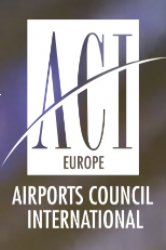 Sébastien Colmant
Sébastien ColmantDirector of aviation and cybersecurity
ACI Europe
Belgium
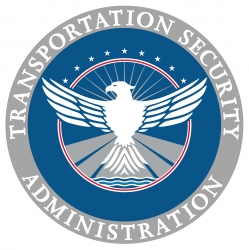 Walter Dickey
Walter DickeySenior technical advisor
Transportation Security Administration
USA
 John C Paulshus
John C PaulshusEnterprise architect
Avinor
NORWAY
10:05 - 10:35
Panel discussion: Part 1 – the impact of artificial intelligence and automation on AVSEC practices
As AI technologies – from machine learning and computer vision to generative AI – continue to shape aviation operations, their influence on aviation security (AVSEC) has become both powerful and complex. This two-part panel will explore the shifting landscape of AI in airport security, asking the right questions in Part 1, and offering grounded, experience-led answers in Part 2. AVSEC is under pressure to do more with less – faster throughput, higher accuracy and seamless passenger journeys – all while managing risk and maintaining public trust. This panel brings together expert voices to examine whether AI is just a cost-saving tool, or if it can genuinely transform AVSEC for the better. Panelists will be available in the break to the audience to discuss the topics covered in Part 1 and provide input into Part 2.
In Part 1, the panelists will unpack the real and perceived capabilities of AI in airport security, framing the fundamental questions the industry must ask before automating high-stakes decisions. What types of AI are currently deployed in airport environments (ML, NLP, video analytics, computer vision, Gen AI)? How is AI framed and understood by those deploying it? Is it narrow, embedded in products, or a standalone solution? What new capabilities does generative AI offer compared to traditional systems? Is AI in AVSEC primarily about reducing cost or about doing something fundamentally new?
What does enhancing operational efficiency really mean? How can AI add value beyond simply streamlining existing processes?
What the audience will learn
- What AI in AVSEC really means in practice – and where Gen AI fits in
- How the framing of AI shapes its use and perceived value
- How to distinguish between hype and real capability in security-focused applications
- The ethical, operational and strategic questions that must precede AI adoption in AVSEC settings
 Eric Kaler
Eric KalerSenior manager, aviation security
Amazon
USA
 Donald Zoufal
Donald ZoufalPresident/lecturer
CrowZnest Consutling, Inc./University of Chicago
USA
 Royce Holden
Royce HoldenCybersecurity market leader
Mead & Hunt
USA
 Pauline Norstrom
Pauline NorstromFounder and CEO
Anekanta Consulting and Anekanta AI
UK
10:35 - 11:05
Panel discussion: Part 2 – the impact of artificial intelligence and automation on AVSEC practices
Part 2 asks 'What answers do we have?' and dives into what is already working in AVSEC. Through examples, expert insights and feedback from the audience, the panel will outline what lessons have been learned, where AI is adding value and how human oversight and automation are being balanced. Topics include proven benefits from AI deployments in security screening and surveillance; areas where Gen AI or video analytics have made measurable improvements; what we have learned about human-AI collaboration in AVSEC – and how we can equip the workforce to use these tools; how we measure success, and the assurance frameworks or regulatory tools emerging; and whether or not we are beginning to see an AI-augmented AVSEC standard taking shape.
What the audience will learn
- What’s working and what’s not – direct from those at the forefront of AVSEC innovation
- How leading airports are implementing AI in a secure, accountable and scalable way
- How Gen AI is being tested or piloted to support intelligence, policy, or risk decision-making
- What success metrics matter most for airport operators and regulators when deploying AI
- Practical insights to inform future planning, procurement and governance decisions
 Eric Kaler
Eric KalerSenior manager, aviation security
Amazon
USA
 Donald Zoufal
Donald ZoufalPresident/lecturer
CrowZnest Consutling, Inc./University of Chicago
USA
 Royce Holden
Royce HoldenCybersecurity market leader
Mead & Hunt
USA
 Pauline Norstrom
Pauline NorstromFounder and CEO
Anekanta Consulting and Anekanta AI
UK
11:05 - 11:30
Break
11:30 - 12:15
Panel discussion: Passing the test – strategies for measuring and evaluating aviation security
The growing availability of technological solutions to support security operations presents aviation security professionals and their organizations with a dizzying array of choices. The speed at which technology to support security operations is developing and using the internet to link solutions places significant pressure on airports and airlines in the selection of technology. Independent third-party evaluations of technology and standards development programs offer a path forward for preparing specifications to select technology and evaluating its function before making procurement decisions. This panel of airport and airline personnel and professionals from independent third-party organizations will evaluate these programs.
What the audience will learn
- Understanding through case studies how airports have built programs for developing specifications and evaluating emerging technologies
- Understanding the value of third-party standards development programs like RTCA to assist airports and airlines with standards for aviation
- Understanding the value of third-party standards testing programs offered to help airports evaluate
- Understanding how to access resources for developing specifications and evaluating security technologies
 Darryl Dowd
Darryl DowdVice president, safety, security and operations
ACI World
Canada
 Jeanne Olivier, AAE, IACE
Jeanne Olivier, AAE, IACEPrincipal
JM Olivier, LLC
USA
 Mark Baker
Mark BakerSenior manager of ASO corporate facilities
Southwest Airlines
USA
 Donald Zoufal
Donald ZoufalPresident/lecturer
CrowZnest Consutling, Inc./University of Chicago
USA
12:15 - 13:00
Panel discussion: Security through the eyes of your adversary
Over the last 10 years, governments and companies have embraced adversary-based testing as the gold standard for understanding the efficacy of security systems. This helps identify vulnerabilities and make meaningful improvements before an actual attacker shows up. This panel will discuss the various approaches to adversary-based security testing to understand the effectiveness of aviation security systems and will examine how Red Team testing in aviation security differs based on whether it is done by commercial entities (security firms, airlines, airports) or government agencies. Lastly, the panel will discuss statistical models that can help improve granularity and drive targeted system improvements.
What the audience will learn
- Various ways covert testing can be used to understand the state of security systems in a real-world application
- How you can scale covert testing programs based on budget, manpower and objectives
- How to use the results of that testing to drive improvements in your security systems
 Carsten Rieber
Carsten RieberSenior chief inspector
German Federal Ministry of the Interior and Community
Germany
 Dr Brandon Behlendorf
Dr Brandon BehlendorfDirector, Center for Advanced Red Teaming and associate professor
ETEC – College of Emergency Preparedness, Homeland Security and Cybersecurity
USA
 Keith Goll
Keith GollManaging principal
Keith Goll Consulting
USA
 Scott Mulligan
Scott MulliganVP, operational compliance
CLEAR
USA
13:00 - 13:30
Panel discussion: What's on your mind and what changes are in the pipeline?
This final open discussion will focus on what's been happening over the past year that affects aviation security, with thoughts on what we can do about it.
 Raquel Chinea
Raquel ChineaHead of cybersecurity, equipment and aviation security risk department
AESA (Spanish Aviation Safety and Security Agency)
Spain
 Jeanne Olivier, AAE, IACE
Jeanne Olivier, AAE, IACEPrincipal
JM Olivier, LLC
USA
 Eric Kaler
Eric KalerSenior manager, aviation security
Amazon
USA
 Neville Hay
Neville HayDirector of training
Interportpolice
UK
13:30 - 15:00
Lunch
Day 3: Thursday, April 10
N104
Customer service, passenger and workforce experience
09:00 - 15:00
Introduction by Conference Chairs
 Jeannie Killebrew, CFPS, PMP
Jeannie Killebrew, CFPS, PMPPresident, Killebrew and CEO, Killebrew, Inc.
Killebrew/Killebrew, Inc.
USA
 Jerry Angrave
Jerry AngraveCustomer experience director
Empathyce
UK
09:05
The ROI of CX: making the business case for customer experience at airports
 Jerry Angrave
Jerry AngraveCustomer experience director
Empathyce
UK
We know intuitively that better experiences lead to better business outcomes, commercially and strategically. But in our very operational and process-driven environment, wafer-thin margins mean there's a need for any activities to add value. Talking to our skeptical stakeholders about the importance of evoking the right emotions in our customers and employees can be challenging. In this session, therefore, Jerry will share his own and other's research that helps quantify the benefits, and show how a focus on customer experience has a very real impact on costs, revenues and reputation. He will compare the changes in a passenger's intended spend at an airport depending on how good or bad the experience is, and show research that validates why service recovery at times of disruption is a huge opportunity, not just a day-to-day operation.
09:30
Creating memorable moments: enhancing experience through guest passes
 Cassie Schmid
Cassie SchmidChief strategy officer
Philadelphia International Airport
USA
The PHL Wingmate Pass is an exclusive amenity granting non-ticketed guests access to the secure side of the airport. This program allows loved ones to share in meaningful airport experiences, such as accompanying family to their gates or planning heartfelt surprises for arriving friends. It also offers exclusive access to airport shops and restaurants. The presentation will showcase how the Wingmate Pass, supported by a strategic marketing and communications plan, has positioned PHL as an innovative, forward-thinking airport by creating memorable guest moments, driving incremental revenue and enhancing the airport's reputation as a leader in positive guest experiences.
What the audience will learn
- Enhanced guest experience: how a guest pass program improves the overall guest experience and fosters meaningful airport moments
- Increased revenue streams: guest pass programs boost revenue through additional spending at airport concessions and parking
- Effective marketing and communications: developing a strategic plan to increase program visibility, drive engagement, and grow revenue and brand
- Elevated airport reputation: offering innovative services like the Wingmate Pass elevates the airport's standing as a leader in positive guest experiences
09:55
The digital journey: an extension of human needs
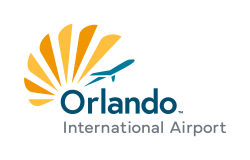 Richard Clarke
Richard ClarkeChief creative officer
Orlando International Airport
USA
At Orlando International Airport, digital tools such as apps, kiosks and information screens help to personalize the travel experience, offering real-time updates on flights, services and other key information for travelers through a multi-digital channel strategy. This technology enhances efficiency and enriches the emotional aspects of travel, allowing passengers to focus on meaningful moments, like reuniting with loved ones or preparing for a business trip, while preserving the human element. During this technological and creative session, we will discuss the importance of technology as an extension of our human capabilities rather than replacing the human factor in the journey.
What the audience will learn
- How AI enhances human abilities, acting as a bridge rather than replacing personal human experience
- How airports have to serve as gateways, leveraging technology to enhance the traveler’s emotional journey
- Orlando's quest for personalization through apps and digital tools improves airport experiences and efficiency
- Why technology in travel should support meaningful moments while preserving the human element
10:20 - 11:00
Panel discussion: How to ‘humanize’ airports and make them more intuitive
This panel session will reveal future strategies that can positively impact non-aviation revenue by making airports more human and less like machines. It will specifically explore how we can develop intuitive, stress-free, emotionally engaging airports that offer a new and futureproofed approach to the commercial experience while responding to passenger expectations and their different missions and physical and emotional states. The panel will provoke dialogue on how an airport can drive passenger comfort, engagement, dwell and spend while considering biophilic design, multisensory environments, ‘soft spaces’, tactility, psychological triggers, visual noise, vistas, visibility and the power of beauty.
What the audience will learn
- How an airport can create truly positive passenger sentiment and become a ‘love brand’
- How airports can become healthy places
- How ‘humanizing’ airports can increase non-aviation revenue
- How we can create airports that are intuitive and stress-free
- How airports can be positive beacons in their local communities
 Nora Immonen
Nora ImmonenVice president (Helsinki)/director, commercial business
Helsinki Airport/Finavia
Finland
 Sammy Patel
Sammy PatelVice president, commercial | CEO, Midway Partnership
Vantage Group
USA
 Jonathan Doughty
Jonathan DoughtyMD
Viklari Consulting
UK
 Lewis Allen
Lewis AllenSenior director
Portland Design
UK
11:00 - 11:20
Break
11:20
On the move: improving passenger experiences in multimodal travel
 Aniek Toet
Aniek ToetPhD candidate
Delft University of Technology and Royal Schiphol Group
Netherlands
As multimodal transportation systems grow, seamless integration between travel modes is becoming vital, particularly at airport hubs. How can connections between trains, buses and planes be made more efficient and passenger-friendly? This presentation draws on real-world journeys and offers practical insights from a passenger-centered view. Learnings include improving wayfinding systems to guide passengers seamlessly across modes, optimizing transit times to balance efficiency and comfort, designing multimodal journeys as cohesive experiences and fostering collaboration among operators to deliver integrated services. With actionable strategies to elevate the passenger experience, this presentation is essential for airports and operators aiming to advance multimodal travel.
What the audience will learn
- The passenger experience cannot be understood in isolated segments, as phases influence one another
- Multimodal instructions, wayfinding and transfer coordination across various transportation modes are essential for a smooth passenger experience
- Offering personal assistance, special transfer services and additional travel options enhance the convenience and comfort of passengers
- Balancing multimodal transit time and ensuring seamless transfers are key to improving overall passenger satisfaction
- Creating pleasant and special waiting areas for multimodal travelers improves the passenger experience
11:45
SFO AIOC: mapping operations with an eye on guest experience
 Jacob Ehrenberg
Jacob EhrenbergProject manager
San Francisco International Airport
USA
 Jason Smith
Jason SmithProjects director
City ID
UK
San Francisco International Airport (SFO) is creating a new Airport Integrated Operations Center (AIOC) to enhance the passenger journey. SFO set the challenge to map the SFO guest experience alongside existing airport operations to support this initiative. Our efforts resulted in a customer journey map that tells the story of SFO's guest and operations journey. In collaboration with airport stakeholders, employees and subject-matter experts, a unique SFO customer journey map was developed, highlighting key experience moments and opportunities for improvement across arrival and departure journeys. It has become a valuable tool for communication, education and celebration across all departments.
What the audience will learn
- Use of customer journey mapping as a strategic communication tool in building empathy with the guest and operations perspective
- Articulating relationships between SFO's stakeholders across all customer journey stages
- Cultivating meaningful collaboration and conversation on operational and service enhancements
- Use of customer journey mapping to support creative service innovation and world-class team working practices
- Identify enablers, barriers, factors and opportunities to maximize guest experience quality and optimize airport operations efficiency
12:10
Achieving operational excellence with reliable flight connections and passenger transfers
 Marcelo De Vasconcellos
Marcelo De VasconcellosHead of operations
International Airport São Paulo - Guarulhos
Brazil
 Ilias Maragakis
Ilias MaragakisAssociate partner
Lufthansa Consulting
Germany
Achieving reliable and seamless flight connections at an airport is no easy task. Airlines, government authorities, ground services and the airport have to find ways to ensure that transferring from one flight to another is easy and painless for passengers. Everything from passenger journey mapping to signage, digital solutions and data analytics needs to be employed to ensure the customer experience remains positive. We will discuss the solutions implemented at the airport and the success factors for achieving a maximum 35% improvement in flight connection and transfer passenger reliability.
What the audience will learn
- Methods to assess your passenger's journey at the airport
- Improve connecting passenger experience at the airport from an airline perspective
- Establishing a fit-for-purpose KPI dashboard for passenger experience
- Solutions for establishing on-time performance at an airport
- Tools and methods for improving flight connection reliability, including stakeholder management
12:35
The evolution of passenger-facing service robots at Munich Airport
Innovation and digitalization manager
Munich Airport T2
Germany
At Munich Airport's T2, we have been testing five different service robots over the last six years. From passenger information to guiding, cleaning or selling snacks and drinks, our fleet engaged in a wide spectrum of tasks, always keeping our passengers entertained. Some robots came to stay, while others had to disappear again. I will take you on a journey through our different projects and give you insights into our challenges and key lessons learned.
What the audience will learn
- First-hand experience of trialing a fully autonomous service robot
- Main challenges on our way to full autonomy
- Key learnings about our passengers' interaction with different service robots
- Moving forward from one robotics PoC to the next
- Simultaneously managing a whole fleet of service robots for different purposes
13:00
The evolution to the conversational travel companion
Customer experience division chief
Aena
Spain
Since its inception in December 2022, our chatbot has transformed the passenger experience on Aena's network. Integrating key flight data, FAQs and points of interest, Oli assists passengers in their daily travels, making their lives easier and becoming the perfect travel companion. Oli's evolution has arrived with the inclusion of GPT. The chatbot has become the engine for physical virtual assistants in airports and now we are pushing to improve the phygital experience. Our ambition is to take the traveler's conversation to the next level, helping the conversation between airport community bots and the customers.
What the audience will learn
- The evolution of chatbots beyond text-only interactions
- There is no conversation without a purpose
- Open conversation in the airport community
13:25
Wrap up!
13:30 - 15:00
Lunch
Day 3: Thursday, April 10
N109
Digital identity and wallets in travel
09:00 - 15:00
Introduction by Conference Chairs
 Annet Steenbergen
Annet SteenbergenIndependent advisor - digital identity in travel
Annet Steenbergen
Netherlands
 Rob Broere
Rob BroereCEO
Travel Must Change
United Arab Emirates
09:05 - 09:50
Panel discussion: Digital identity at airports – it's not just your selfie
This session will focus on the discovery of new technologies for a faster and easier traveler experience. Participants will hear from airlines, airport operators and technology providers about how digital forms of identity enable the traveler to seamlessly and securely transmit identity information using digital identity at various journey points at the airport. Presenters will share lessons learned and best practices in working with a variety of stakeholders, and attendees will learn about successful journey strategies and techniques for bringing this technology to other airport locations.
What the audience will learn
- Illustrate/speak about interconnectivity
- Optimization customer flow
- Utilization/naming convention
- What the identity enables
- Share/illustrate successes and challenges ahead
 Kristin Olsen
Kristin OlsenDirector of product management, travel experience guest digital technology
Alaska Airlines
USA
 Kelly Reynolds
Kelly ReynoldsDirector, terminal/landside operations
Hartsfield-Jackson Atlanta International Airport
USA
 John Bernard
John BernardMarket leader, border control and passenger facilitation
Idemia Public Security North America
USA
 Steve Robinson
Steve RobinsonGlobal business development for airports, air traffic solutions and border management
Collins Aerospace
Singapore
 Rob Broere
Rob BroereCEO
Travel Must Change
UNITED ARAB EMIRATES
09:50
The era of digital travel credentials
 Laurent Loup
Laurent LoupMarket sector senior manager - identity
SICPA
Switzerland
In 2024, border authorities, airports and airlines are still gathering personal details from travelers with manual entry forms or cumbersome scans of physical documents like passports. Pushed by the EU Commission, new digital identity wallets and credentials will allow a secure, trustful, seamless and privacy-preserving exchange of personal data prior to travel and at the gates during security checks. This will massively impact traveler journeys and will require adaptation of processes and tools from all parties. This presentation will provide valuable insights from the EWC EU large-scale pilot currently testing those concepts.
What the audience will learn
- What is a digital travel credential (DTC)
- What is the European digital identity wallet
- How can border authorities, airports and airlines benefits from the new digital identity ecosystems
- EU large-scale pilot
10:15
Digital travel credentials in the EU
 Annieke Logtenberg
Annieke LogtenbergPolicy officer
European Commission
Belgium
On 8 October 2024, the European Commission adopted two proposals to digitalize passports and identity cards, also called ‘EU Digital Travel application', for individuals travelling to and from the Schengen area. This application will allow travellers to create a digital travel credential, which can be used for border checks and to accelerate their travel process. The introduction of digital travel credentials and the entry into operation of the EU Digital Travel application will make border crossings faster and smoother, facilitate freedom of movement and reduce administrative burdens for travellers, and improve the efficiency of border controls, which will strengthen security.
What the audience will learn
- Main elements of the Commission proposals
- Introduction to the EU digital travel application
- Advantages for different stakeholder groups (e.g. passengers, border authorities, etc.)
- Current state of play of the initiative and next steps
10:40
Transforming air travel in India with Digi Yatra
 Suresh Khadakbhavi
Suresh KhadakbhaviCEO
Digi Yatra Foundation
India
The Digi Yatra initiative, a shining example of collaboration between government authorities, airports, airlines, security agencies and technology providers, has revolutionized the passenger experience across Indian airports. With over 7 million users, it stands as the world’s largest deployment of self-sovereign identity (SSI) technology in airport passenger processing. This groundbreaking system ensures seamless and hassle-free identity and travel credential validation, setting a new standard for efficiency and convenience in air travel.
What the audience will learn
- Multistakeholder collaboration in aviation
- At-population-scale implementation
- Data privacy, privacy by design and managing the perception
- W3C standards, self-sovereign identity using verifiable credentials, and decentralized identifiers on a distributed ledger
- Future potential of SSI and decentralized ecosystems
11:05 - 11:25
Break
11:25 - 11:50
Panel discussion: Digital identity and wallets in global travel
 Annieke Logtenberg
Annieke LogtenbergPolicy officer
European Commission
Belgium
 Suresh Khadakbhavi
Suresh KhadakbhaviCEO
Digi Yatra Foundation
India
 Annet Steenbergen
Annet SteenbergenIndependent advisor - digital identity in travel
Annet Steenbergen
NETHERLANDS
11:50
Next phase – the One ID PoC
 Nuria Fermoso
Nuria FermosoSenior manager, customer facilitation
International Air Transport Association (IATA)
Spain
IATA is jointly working with stakeholders on the industry standards to enable the One ID vision in an interoperable manner. Furthermore, IATA and its partners have successfully demonstrated that the industry is ready to deliver a fully digital air travel experience. This was achieved in a proof of concept (PoC) involving two passengers using different digital wallets and travel credentials on a round trip between Hong Kong and Tokyo.
What the audience will learn
- Learn the One ID vision and the industry standards developments
- Learn how the standards theory may become a reality with the PoC
12:15 - 12:40
Conversation: Insights on digital IDs and biometrics as complementary technologies shaping the future
 Patrick Sgueglia
Patrick SguegliaSenior product manager airport experience, partnerships and biometrics
Lufthansa
Germany
 Annet Steenbergen
Annet SteenbergenIndependent advisor - digital identity in travel
Annet Steenbergen
Netherlands
12:40 - 13:25
Panel discussion: Aruba’s digital travel credential: Real-world success
Join the government of Aruba, Indicio, and SITA for a deep dive into how DTCs are transforming border crossings. Learn how Aruba has successfully deployed DTCs to combat fraud, improve data quality, and enable pre-clearance for travelers – plus how embedded biometrics allow a border crossing in under 10 seconds. The panel will also explore what’s next: expanding digital identities beyond the airport to hotels, car rentals, and casinos – seamlessly turning passengers into tourists while enhancing the experience for all stakeholders.
What the audience will learn
- Digital identity is real and useful, including for border crossing
- Empowering the traveler leads to better data quality and a facilitated experience
- The lessons Aruba learned, covering government and airport
- How the technology can be easily integrated into existing aviation processes
- The potential scope for digital identities beyond travel into events, destinations and experiences
 Andrew Hoo
Andrew HooDirector
Aruba Immigration
Aruba
 Heather Dahl
Heather DahlCEO
Indicio
USA
 Michael Zureik
Michael ZureikHead of digital travel strategy and partnerships
SITA
Canada
 Andy Smith
Andy SmithDirector of industry and innovation
SITA
UK
13:25
Wrap up!
13:30 - 15:00
Lunch
Day 3: Thursday, April 10
N105
Facilities management and safety
09:00 - 15:00
Introduction by Conference Chairs
 Michael Jahn
Michael JahnSenior specialist facility management
Fraport AG
Germany
 Ralph Struck
Ralph StruckSenior vice president - facility management
BER Airport Berlin Brandenburg
Germany
09:05
Overcoming passenger boarding bridge operation challenges through simulation and automation
 Daniel Lim
Daniel LimSenior manager, engineering and development
Changi Airport Group (Singapore) Pte Ltd
Singapore
The presentation highlights challenges in passenger boarding bridge (PBB) operations, such as user training, staff productivity and performance consistency. Changi Airport Group addressed these by developing a virtual PBB training simulator, self-diagnostics, enhanced maintenance features and fully automated self-docking capabilities. The virtual simulator offers a risk-free, convenient training environment. Sensors on PBB components enable data analytics for targeted maintenance. Self-diagnostics allow PBBs to check serviceability autonomously. The transformative development of fully autonomous PBB docking capability offers significant savings in operating staff, and more consistent docking performance, which is a big step toward autonomous operation.
What the audience will learn
- Innovative training solutions: virtual PBB simulator offers realistic training, reducing costs and risks and enabling convenient office-based learning
- Enhanced maintenance through technology: sensors enable data analytics for targeted maintenance, improving operational efficiency and spotting anomalies
- Autonomous operations for improved efficiency: autonomous docking reduces staffing needs, enhancing performance and moving toward apron operations that don't require human input
09:30
Behind Closed Doors – transforming airport restrooms into experiential spaces
 Lisa Braun
Lisa BraunSenior manager facility management
BER Airport Berlin Brandenburg
Germany
 Paul Klonowsky
Paul KlonowskyExpert for special projects and policies in facility management
BER Airport Berlin Brandenburg
Germany
The Behind Closed Doors project explores a groundbreaking collaboration between architecture students and BER airport, rethinking restroom design to create unique, experiential spaces. Moving beyond functionality, this project integrates digital art installations, innovative architectural highlights and creative material choices to transform ordinary airport restrooms into immersive environments. Emphasizing sustainability, the use of eco-friendly materials enhances hygiene and ease of cleaning, while reducing environmental impact. The iterative design process fostered a dynamic exchange of ideas, leading to cutting-edge solutions for privacy, accessibility and user comfort. This presentation reveals how restrooms can elevate the traveler’s experience and contribute to overall brand identity.
What the audience will learn
- Understand the importance of creative restroom solutions in reducing stress, creating a welcoming atmosphere and improving passenger satisfaction
- Understand how airports can use restroom design to reflect cultural, artistic and architectural trends, enhancing their overall image
- Discover how sustainable materials in restroom design enhance hygiene, durability and ease of cleaning, benefiting users and maintenance teams
- Learn how iterative collaboration between engineers, architects and students leads to unique restroom designs that elevate functionality and aesthetic value
09:55
Data-driven cleaning: enhancing passenger experience and workforce efficiency at Schiphol
 Martijn Kuiper
Martijn KuiperBusiness consultant - digital and innovation
Schiphol Airport
Netherlands
 Thomas Bechan
Thomas BechanService manager
Amsterdam Airport Schiphol
Netherlands
Smart Facilities is not an innovation but a new way of working, where we aim to implement more data-driven cleaning at Schiphol. This ensures that cleaners are in the right place at the right time, optimizing the passenger experience and improving working conditions for cleaners. Together with our cleaning partners, we work to use data as a key to deploy the right cleaning capacity based on predicted crowd levels to meet our quality targets. This way of collaborating with data at the core of the operating model is innovative and should be shared with the rest of the industry.
What the audience will learn
- How we use data in collaboration with cleaning partners to ensure a cleaner airport, positively impacting the passenger experience
- How we use data from FeedBackNow (smiley boxes) and people counters to direct cleaners, improving their timing and quality of work
- Data collaboration with cleaning partners to determine optimal staffing based on predicted terminal crowd levels, ensuring the highest quality
- Insights (use case) into a future where generative AI supports low-tech maturity groups, ensuring maximum data value extraction
10:20 - 11:05
Panel discussion: Airport infrastructure – everything old is new again!
In an airport asset renewal program operational readiness is essential to ensure minimal disruption, operational continuity and stakeholder alignment during the replacement or upgrade of critical infrastructure. ORAT teams focus on meticulously planning and executing the transition phases, validating operational performance and preparing personnel for the new systems or facilities. This structured approach reduces risks associated with phasing, maintains passenger experience and ensures that existing operations are seamlessly integrated with new assets. ORAT's emphasis on communication and training enables airport staff to adapt efficiently, promoting a smooth handover and sustainable long-term operations.
What the audience will learn
- Minimize disruption: best practices to ensure seamless transitions, reducing operational impact during asset upgrades or facility renewals
- Operational continuity: focus on maintaining uninterrupted airport operations while integrating new systems or infrastructure
- Risk management: identify and mitigate risks associated with complex asset renewal projects, ensuring safety and efficiency
- Stakeholder engagement: coordinate communication among diverse stakeholders to align expectations and maintain project transparency
- Training and adaptation: prepare staff for new processes and technologies, enabling efficient adaptation and sustained operational excellence
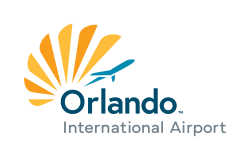 Anthony Davit
Anthony DavitChief operating officer
Orlando International Airport
USA
 Bryan Oldham
Bryan OldhamSenior director of asset management
Denver International Airport
USA
 Michael Christensen, PE, CM
Michael Christensen, PE, CMChief airport development officer
Los Angeles World Airports
USA
ORAT national practice lead
Jacobs
USA
11:05 - 11:25
Break
11:25 - 12:10
Panel discussion: Influence of smooth facility management on customer satisfaction and passenger experience
Efficient and well-structured facility management is a key driver of passenger satisfaction and overall airport experience. From cleanliness and wayfinding to maintenance and accessibility, seamless operations ensure a hassle-free journey for travelers. This panel discussion will explore best practices and innovative strategies airports can implement to optimize facility management, reduce operational disruptions, and enhance passenger comfort. Experts will share insights on the role of predictive maintenance, digital transformation, and sustainable solutions in shaping the future of terminal operations.
What the audience will learn
- The link between facility management and passenger experience – Understanding how a well-managed terminal enhances customer satisfaction
- Proactive maintenance for operational excellence – The importance of predictive and preventive maintenance in ensuring smooth airport operations
- Leveraging new technologies – Exploring digital solutions and automation to improve efficiency in facility management
- Process optimization for greater efficiency – How streamlined workflows can reduce wait times and enhance overall passenger comfort
- Sustainability in facility management – How eco-friendly initiatives can lower operational costs and improve an airport’s environmental footprint
 Brendalynn Taulelei
Brendalynn TauleleiAssistant director, asset management & logistics
Seattle Tacoma International Airport - Port of Seattle
USA
 Lisa Braun
Lisa BraunSenior manager facility management
BER Airport Berlin Brandenburg
Germany
 Thomas Bechan
Thomas BechanService manager
Amsterdam Airport Schiphol
Netherlands
 Michael Jahn
Michael JahnSenior specialist facility management
Fraport AG
GERMANY
 Ralph Struck
Ralph StruckSenior vice president - facility management
BER Airport Berlin Brandenburg
GERMANY
12:10
Smart maintenance via IoT in Paris airports
 Alban Negret
Alban NegretHead of innovation and corporate venture
Groupe ADP
France
 Jade Francine
Jade FrancineCo-founder and chief growth officer
WeMaintain
France
As a leading innovator in transportation and airport infrastructure, We has worked in partnership with Groupe ADP to revolutionize the operations of elevators and escalators in Paris airports. Using cutting-edge IoT technology and AI-driven predictive maintenance, the solution provides real-time monitoring and diagnostics across critical infrastructure. This innovation not only enhances the reliability and safety of our elevators and escalators but also significantly reduces downtime and energy consumption. Soon, the solution will also be integrated into air-conditioning systems, further optimizing operational efficiency. Our collaboration exemplifies our commitment to leveraging advanced technology to elevate airport efficiency and set new standards in operations excellence.
What the audience will learn
- Smart maintenance in airports
- IoT
- Partnership with startup
12:35
Unleashing drone potential for airport management
Engineer
Aena
Spain
This presentation will delve into the innovative projects conducted by AENA, showcasing how drone technology has been integrated into both airside and landside operations to enhance airport management. This will include the challenges encountered and the additional platforms required beyond the drones themselves, as well as examples of the tests conducted. Specific use cases to be covered include infrastructure inspection, runway, and taxiway inspection/PAPI calibration. The presentation will additionally cover how to address the introduction of drones as a tool within an airport network.
What the audience will learn
- Potential of the use of drones for airport management
- Challenges about drone integration inside airports
- How to define and manage a proof of concept about drones
- Learnings and best practices
13:00
Automatic FOD detection integration in Gatwick's smart stand vision
 Tim Paterson
Tim PatersonInnovation lead
Gatwick Airport
UK
 Peter Håkansson
Peter HåkanssonDirector of product management
ADB Safegate
Sweden
Automating the FOD detection process will generate benefits but also comes with challenges. The presentation will explain the challenges Gatwick Airport is facing and how these can be addressed related to automatic FOD detection systems. The presentation will be based on experience from a PoC made at Gatwick Airport.
What the audience will learn
- Expectations about the quality and performance of automated FOD detection systems
- Challenges in implementing automated FOD detection systems
- Safety aspects of automated FOD detection systems
- Efficiency gains by automating FOD walks
- Reporting and analysis
13:25
Wrap up!
13:30 - 15:00
Lunch
Day 3: Thursday, April 10
N101
Increasing airport capacity and flexibility
09:00 - 15:00
Introduction by Conference Chair
 Arturo Garcia
Arturo GarciaCOO
Avports
USA
09:05 - 09:35
Lessons learned in forecasting growth – a recent case study
The modernization of Dallas Love Field was meant to reshape a 50-year-old facility into a long-term hub for one of the largest US carriers. Completed just 10 years ago, the facility has already reached its planned long-term ultimate capacity. We will explore the differences that arose between the original design and activity projections versus the reality of actual growth. We will also explore whether the outcomes of the modernization project itself influenced the subsequent use by the airline. This will be a valuable exploration of the lessons learned in this groundbreaking project.
What the audience will learn
- The importance of airport/airline collaboration for projecting future growth
- The value of time spent evaluating the details of future growth projections
- A case study of the resurgence in US domestic travel post-Covid
- How project outcomes can influence future growth and use
- How changes in the airline industry can affect predominately single-carrier airports
 Patrick Carreno
Patrick CarrenoDirector of aviation
City of Dallas
USA
 Steve Sisneros
Steve SisnerosVice president
Southwest Airlines
USA
 Jonathan Massey
Jonathan MasseyManaging principal
Corgan
USA
09:35
Optimizing airport capacity: Strategies in infrastructure planning
Head of airport masterplans and air navigation planning division
Aena
Spain
 Nuria Aguilar Iglesias
Nuria Aguilar IglesiasHead of the airport planning and intermodality division
Aena
Spain
This presentation explores innovative methodologies to leverage airport capacity in response to growing air traffic demand. Applying advanced data analytics, simulation modelling, and real-time monitoring technologies, we assess current operational bottlenecks and propose dynamic solutions tailored to specific airport environments. Our findings reveal the potential of adaptive scheduling, enhanced air traffic management, infrastructure improvements, and policy adjustments to optimize both airside and landside utilization. By examining case studies from leading global airports, this talk provides actionable insights and a framework for stakeholders to minimize congestion, improve passenger experience, and reduce delays, while balancing environmental sustainability and cost-effectiveness.
What the audience will learn
- Data-driven decision making
- Comprehensive knowledge of infrastructure planning
- Effective capacity management strategies
- Sustainability considerations
- Overcoming capacity challenges
10:00
AI innovation for aviation future
Aviation affairs consultant
Sharjah International Airport Authority
United Arab Emirates
With the tremendous development of AI in all sectors, aviation, as one of the most innovative industries in the world, will be affected by this new technology in its future innovation. No sector in this industry will be prevented from using this technology. AI can be revolutionary in supporting air traffic control and airspace capacity, airport management, customer experience and handling operations. The journey of the passenger would be preplanned from before reaching the airport until boarding, through the retail activities and services provided to customers.
What the audience will learn
- How to increase airspace and airport capacity through the use of AI
- How to improve the customer experience during the journey
- How to optimize the resources and slots for the airspace and airport operations by using AI
- How to enhance the efficiency of handling operations
- How to support airports to increase non-aeronautical revenues
10:25
How to host the Olympic Games in the airport
 Alexandre Jallet
Alexandre JalletProject manager
Groupe ADP
France
The Olympic and Paralympic Games are among the most watched sporting events in the world. How does an airport prepare to welcome thousands of athletes, para-athletes and their luggage of all sizes, as well as delegations from all over the world, all in a concise space of time? This was the challenge taken up by ADP Group teams at the recent Paris Olympic Games, with the creation of a baggage factory dedicated exclusively to these games, the creation of eight changing rooms and the refurbishment of an old boarding hall totally dedicated to athletes and para-athletes.
What the audience will learn
- Increasing airport capacity and flexibility for a few days
- How to create a remote luggage check-in
- Increase accessibility and assisted travel for the Paralympic Games
10:50
Airport coordination for the 2024 G20 summit
 Beatriz Lagnier Gil Ferreira
Beatriz Lagnier Gil FerreiraAirport operations and planning manager
RIOgaleão
Brazil
In 2024, Rio de Janeiro hosted the G20 Summit, bringing together leaders from the world’s 20 largest economies. This presentation will highlight the coordination between the airport, governmental agencies and the aviation community to effectively manage the sudden increase in demand while ensuring smooth arrivals and departures of delegations without disrupting airport operations. By emphasizing collaboration and strategic planning, attendees will learn how to maintain efficient airport operations during high-profile events. The session aims to share valuable insights and best practices, equipping participants to successfully tackle future challenges in large-scale aviation gatherings.
What the audience will learn
- Understand the importance of coordinating efforts between the airport, governmental agencies and the aviation community for effective event management
- Learn techniques to handle sudden increases in demand for flights during major events without disrupting airport operations
- Discover strategies for maintaining smooth arrivals and departures of delegations during high-profile gatherings
- Gain insights into effective crisis management strategies to address potential disruptions during peak operation periods
- Understand the significance of long-term planning and preparedness for future large-scale events in the aviation sector
11:15 - 11:35
Break
11:35
Creating 50% more make-up capacity on the same shop floor
Process developer - baggage
Schiphol Airport
Netherlands
Strategic process developer - baggage
Schiphol Airport
Netherlands
Increased capacity for baggage make-up without extending the building is a dream that can come true in your organization. Looking at the make-up process from a different perspective and with a different mindset will result in extended make-up capacity, space efficiency, cost savings, operational flexibility, energy savings and system robustness. The impact of this concept will change the future of airport planning, starting at our own operational site. Therefore, the ideation is already in execution for implementation. The ins and outs and status quo will be presented by the founders themselves.
What the audience will learn
- How to create a better-performing baggage process
- Extend your baggage handling capacity without extending the building
- Practical guidelines to implement the concept in brown fields and green fields
- Background details in both design and numbers
- Actual status and results from the proof of concept and implementation phasing in a running operation
12:00
Enhancing operational resilience: ML model for runway capacity forecasting
 Cesario Bergamin
Cesario BergaminProcess and data analyst - flight OPS
Zurich Airport
Switzerland
 Dr Martin Buchli
Dr Martin BuchliSenior consultant
d-fine
Switzerland
Zurich Airport experiences significant disruptions due to meteorological phenomena like the Bise wind, which notably reduces runway capacity, leading to frequent flight delays and operational challenges for airlines. In response, a machine learning (ML) model to forecast runway capacity shortages has been developed. This model analyzes meteorological data to provide critical insights for runway concepts, thus enhancing the decision-making process. By improving operational resilience through forecasts, the model aids aviation stakeholders in navigating the increasing frequency of adverse weather conditions, ultimately aiming to minimize disruptions and enhance overall flight efficiency at Zurich Airport.
What the audience will learn
- Weather impact: understanding how meteorological phenomena like the Bise wind significantly affect runway capacity and flight operations
- Machine learning applications: utilizing ML models to analyze weather data can enhance predictive capabilities for operational challenges in aviation
- Decision-making enhancement: critical probability insights from ML models improve operational resilience in response to adverse weather conditions
12:25
Two runways, one airport: unified growth for Olbia and Alghero
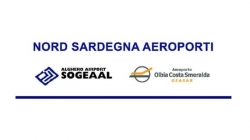 Caterina Brigaglia
Caterina BrigagliaAirport operations manager
Olbia Costa Smeralda Airport
Italy
 Bruno Rampinelli Rota
Bruno Rampinelli RotaManaging director
To70
Italy
This presentation will focus on the long-term development strategies for Olbia and Alghero airports, both undergoing masterplanning to ensure sustainable growth. By leveraging the strengths of each airport and fostering collaboration, these two airports aim to create a unified market in northern Sardinia. The session will highlight how both airports are working together to share knowledge, optimize operations and plan for future capacity while balancing environmental and economic sustainability. Attendees will gain insights into how this collaborative approach can drive growth and enhance connectivity across the region, contributing to a more integrated and sustainable airport network.
What the audience will learn
- Collaborative airport planning: learn how Olbia and Alghero are working together to create a unified development strategy
- Maximizing airport strengths: discover how each airport leverages its unique strengths to contribute to regional growth
- Shared knowledge for sustainable growth: understand the importance of knowledge-sharing in developing long-term, sustainable solutions
- Creating a single market: explore the benefits of integrating Olbia and Alghero into a single market for northern Sardinia
- Strategic regional growth: gain insights into how this collaboration promotes balanced and sustainable development across both airports
12:50 - 13:25
Panel discussion: Runway to airport modernization – overcoming challenges and embracing the future
The panel will discuss the major challenges airports face as global air travel steadily returns to pre-pandemic levels while the airport industry faces significant operational and infrastructural challenges. We will touch on deploying large capital programs that have to balance the critical need to replace aging legacy assets that are at end of life and capacity and address the need to expand infrastructure and develop data and systems to enable effective management, while minimizing operational impact and harnessing digital ecosystems and data to drive B2C business models and revitalize the passenger experience.
What the audience will learn
- Methods to effectively modernize capital planning and asset management for airport programs
- Key areas of focus to organize systems and data to accelerate capital deployment and asset renewal
- Options to utilize digital transformation to transform passenger experience
- Deployment of effective oversight and governance to drive infrastructure and passenger outcomes
 Michael Christensen, PE, CM
Michael Christensen, PE, CMChief airport development officer
Los Angeles World Airports
USA
 Khaled Naja, PE, CCM
Khaled Naja, PE, CCMChief executive officer
Core Group Partners, LLC
USA
 Amir Ganaba
Amir GanabaManaging director and partner
Boston Consulting Group
USA
13:25
Wrap up!
13:30 - 15:00
Lunch
Day 3: Thursday, April 10Sponsored by Schneider Electric


N106
Technovation
09:00 - 15:00
Introduction by Conference Chairs
 Maurice Jenkins
Maurice JenkinsChief innovation officer
Miami International Airport
USA
 Samuel Ingalls
Samuel IngallsPrincipal
Barich
USA
09:05
Automating the last mile: a trial to transform baggage operations
 Idar Sørgjerd
Idar SørgjerdHead of baggage handling
Avinor Oslo Airport
Norway
 Sven Platschorre
Sven PlatschorreDirector of airport solutions
Vanderlande
Netherlands
Join us as we share insights from an innovative trial focused on fully automating the last mile of baggage operations. Avinor and Vanderlande have joined forces to tackle the challenges of labor-intensive handling processes, aiming to benefit the entire industry. This presentation will showcase learnings from a three-month trial at Oslo Airport, where state-of-the-art solutions, including robotic loading, automated container management and integrated software, were put to the test in a live operational environment. Get insights about lessons learned, current technology status, feedback from airlines and handlers, impact on business models and next steps toward fully autonomous baggage operations.
What the audience will learn
- Purpose and preparation: discover the goals driving the collaboration and the steps and timeline behind the automation trial
- Technology status: discover the current status and advances of the trial’s technology
- Stakeholder involvement: understand the feedback and acceptance from airlines and ground handlers on the operational process
- Business model impact: learn how airport investments can impact the business model between airports and airlines
- Operations: learn about the end-to-end process and the impact on live operations with real bags, containers and handlers
09:30
Automated, reliable, trustable conveyability assessment
 Elisabeth Geoffroy
Elisabeth GeoffroyProject manager
Groupe ADP
France
 Felipe Knaesel Koch
Felipe Knaesel KochHead of product and technology innovation
Leonardo
Italy
Medium-size and large airports rely on high-performing automated baggage handling systems to screen and sort thousands of bags per hour. Not all bags are the same, though, and some, perhaps due to their shape or size, have to be handled through dedicated systems (the so-called 'out of gauge' or 'exception' bags). How can airports and airlines ensure that ground handlers are respecting the specifications and ensuring that exception bags are not inserted into the standard baggage handling system? Learn how artificial intelligence can automate the conveyability assessment, ensuring compliance, performance and equipment availability while minimizing bag damage.
What the audience will learn
- How to leverage artificial intelligence to increase automation
- Automated conveyability assessment
- Deploying artificial intelligence-based systems in operations-critical systems
- Cooperation between project owner and equipment provider
- Risk management
09:55
Are quick wins being overlooked while awaiting full baggage automation?
 Maurice van Hooff
Maurice van HooffProject manager – baggage
Royal Schiphol Group
Netherlands
 Kim Abildgaard
Kim AbildgaardSales and business development, transfer belt
Power Stow
Denmark
While fully automated baggage handling is the future, today’s solutions often fail to scale effectively. Airports and handlers face challenges in retaining and recruiting staff, improving working conditions and enhancing the overall efficiency of baggage handling, all of which directly impact aircraft turnaround times, passenger satisfaction and infrastructure utilization. How can we better optimize our current baggage systems to increase efficiency, reduce baggage damage and improve working conditions, all while preparing for future growth and protecting our infrastructure investments?
What the audience will learn
- How to protect your current investments while increasing system capacity
- How to remain productive while enhancing working conditions
- Immediate improvements in baggage handling while awaiting full automation
- The key business drivers behind optimizing baggage handling systems
10:20
Transforming baggage: from building flights to building containers
 Yorick Buys
Yorick BuysHead of baggage
Brussels airport
Belgium
Brussels Airport is transforming its baggage handling from traditional first-in, first-out to batch loading. This transformation actually entails a way bigger transformation than just the bag system. The airport must transform the way handlers operate, how check-in timings are looked at, and much more. This presentation will explain the view of Brussels Airport about this transformation and how it has been approached at the airport.
What the audience will learn
- Baggage sorting system transformations
- Batch building
- Ergonomizing baggage loading by introduction of (semi-)automated loading stations
10:45
IoT and AI for predictive management of concrete pavement
Head of funding and innovation trends
Aena
Spain
The purpose of the eCONPAVE project is to develop an experimental prototype as an intelligent tool for the management of airport pavements. The tool will be capable of making its own decisions based on real-time data obtained from sensors embedded in the materials or placed during the construction process. The main aim is the creation of a new airport pavement management system that will facilitate decision-making based on the different parameters and variables that have an impact on the pavement performance model, replacing or complementing the current inspections. A proof of concept is being built in Adolfo-Suárez Madrid Barajas Airport in January 2025.
What the audience will learn
- How to combine technology for airport pavement monitoring and how this is reflected in the eCONPAVE project
- Define a new concrete construction process with embedded sensors (IoT)
- Obstacles encountered to define and innovate airport pavement management system for real-time decision making
- Results of the proof of concept built at Adolfo-Suárez Madrid Barajas Airport
11:10 - 11:30
Break
11:30
Machine learning AI – changing the flying schedule forever
 James Hill
James HillGroup product and services director
Manchester Airports Group
UK
 Kasper Hounsgaard
Kasper HounsgaardCo-CEO
Copenhagen Optimization
Denmark
For some time our industry has invested heavily in using data to better predict passenger behavior, interests and operations. We thought it might be interesting to apply the same logic to the airfield. Join us as we share how we’ve used the latest in machine learning technology to more accurately predict the actual arrival and departure times of aircraft – and the world of possibility that the capability opens up.
What the audience will learn
- Data-driven operations
- Machine learning AI
- IAOP applied to airfield performance
11:55
Technology to boost airport management
Head of applied innovation
Aena
Spain
 Javier Arenillas Cristobal
Javier Arenillas CristobalInnovation manager
ISDEFE
Spain
In this presentation, we will explore the proof-of-concept projects conducted by Aena and how these technologies have been successfully deployed in recent years, focusing on enhancing airport management through advanced technologies. We will discuss the use of video analytics, artificial intelligence (AI), generative AI (gen AI) and other technologies to monitor the terminal and optimize passenger processes. Additionally, we will take an overview of improving internal management with gen AI-based assistants that facilitate airport staff tasks, ensuring greater operational efficiency.
What the audience will learn
- Tecnhnology to improve airport management
- How AI is being used to optimize processes and improve operational efficiency
- Increase control over airport processes
- How gen AI is facilitating staff tasks and improving internal management
12:20 - 13:20
Panel discussion: Private wireless: – hype or revolution?
This panel discussion dives into the reality of private wireless networks, separating hype from genuine revolution. Industry experts will debate their true potential, examining real-world applications within the aviation ecosystem. Attendees will gain insights into the benefits and challenges while exploring the long-term implications for connected airports and the Internet of Things.
What the audience will learn
- Does a private wireless network make sense for you? It’s not for everyone.
- Does the PWN make more sense indoor and/or outdoors?
- What are the ranges of costs of a PWN?
- What are the key use cases that drive value?
- Can the PWN be monetized? If so, what use cases and how much revenue can be generated?
 Fritz Oswald
Fritz OswaldSenior vice president - IT infrastructure and services
Fraport
Germany
 Johnathan Lewis
Johnathan LewisDirector innovation & customer experience
Miami Dade Aviation Department
USA
 Michael Youngs
Michael YoungsVice president, information technology
Dallas Fort Worth International Airport (DFW)
USA
 Andrea Bertaia
Andrea BertaiaCEO and co-founder
Alba-Robot Srl
Italy
 Norman Fekrat
Norman FekratManaging partner
Imagine Wireless
USA
13:20
Wrap up!
13:30 - 15:00
Lunch
Day 1: Tuesday, April 8
Welcome and opening address
08:25 - 08:55
08:25
Welcome to PTE World CONFERENCE and EXPO 2025!
 Tony Robinson
Tony RobinsonFounder of Passenger Terminal EXPO
UKi Media & Events
UK
08:30
Welcome to Madrid on behalf of Aena and keynote address
Executive vice chairman
Aena
Spain
08:50
Special announcement
 Peter Massey
Peter MasseyCommercial director
UKi Media & Events
UK
Five minute break to make your way to your conference track of choice
Day 3: Thursday, April 10
N115
Airport business – leadership and strategy
09:00 - 15:00
Introduction by Conference Chair
 Claire Donnellan
Claire DonnellanDirector
Customer Centric Consulting
Australia
09:05 - 09:50
Panel discussion: A megatrends mindset – what keeps airports up at night?
As the world undergoes rapid transformations driven by factors such as climate change, technological innovation, and economic and geopolitical shifts, it is imperative that airports anticipate and address the implications of these megatrends on aviation infrastructure and operations. Without proactive measures, airports and the aviation industry risk facing disruptions that could compromise the safety of aviation operations and the freedom of movement for travelers. Cybersecurity threats, operational disruptions and achieving sustainability goals amidst increasing regulatory pressures are too real. This panel provides an airport and technology/academic perspective on the challenges of megatrends that keep airport executives up at night.
What the audience will learn
- Digital integration: As airports embrace digital integration, AI and automation transform operational efficiency and the passenger experience
- Sustainable and responsible growth: DEN's vision to accommodate 100 million passengers in the context of environmental stewardship
- Changing demographics: Demographic shifts also necessitate inclusive designs to accommodate different age groups, travel purposes and accessibility needs
- Capital investment: Investments being made at DEN and SFO are futureproofing their infrastructures to stay competitive and resilient
- Build trust: Proactive governance, such as SFO's community noise and air quality monitoring systems, builds trust and fosters collaboration
 Mike Nakornkhet
Mike NakornkhetAirport director, chief executive officer
San Francisco International Airport
USA
 Michael Biel
Michael BielChief financial officer
Denver International Airport
USA
 Dr Carlos Kaduoka
Dr Carlos KaduokaVP strategy and business transformation
SITA
USA
 Ronda Chu
Ronda ChuManaging director, finance
San Francisco International Airport
USA
09:50
Resilience, continuity, risk management – a new benchmark for airports
 Dr KJ Devasia
Dr KJ DevasiaAssistant vice president and head
Bangalore International Airport Limited
India
The aviation industry, precisely the airport sector, has been incredibly alert and cognizant of the new kinds of challenges and risks in the post-pandemic era. The increasing number of risks clubbed with the unprecedented impact of climate change prompt airport operators to invest more time and resources in devising strategies to overcome such uncertainties. Enterprise risk management paired with business continuity and systematic response to events are the new benchmark for ensuring organizational resilience in the aviation sector. Privatization of airports and the compulsion of self-financing to add new infrastructure underline the need for a calculated effort in this domain.
What the audience will learn
- Benchmarking risk-response-continuity planning for business resilience in airports
- Integrated approach toward emergency and crisis management to avoid duplication of efforts and efficient management
- How to ensure ROI by investing more into risk management, business continuity and emergency response – best practices
- Innovation and technological intervention and opportunity is resilience planning
- Uniform and standardized practices in business resilience
10:15
Shaping the future: strategic leadership for Saudi Arabia's airports
 Diogenis Papiomytis
Diogenis PapiomytisGeneral manager, corporate strategy
Matarat Holding
Saudi Arabia
This presentation explores the complexities of managing strategy across 27 airports under an airport holding company in Saudi Arabia. The session will start with a forward-looking perspective on Saudi Arabia’s aviation sector over the next decade, showcasing its pivotal role in economic diversification and global connectivity. It will then highlight the challenges of aligning national goals with local operations, fostering collaboration among airports and leveraging synergies to drive efficiency. Attendees will gain insights into transformative developments in the Saudi airport sector, such as privatization, with a focus on how an airport holding manages domestic, regional, tourism and international hub airports.
What the audience will learn
- The challenges of aligning national strategies with local airport operations in a complex, multi-airport environment
- How fostering collaboration and leveraging synergies drives efficiency across a diverse portfolio of 27 airports
- How an airport holding company manages domestic, regional, tourism and international hub airports under a unified strategy
- Managing a PMO for strategic initiatives, including economic regulation reforms and implementing a unified CX strategy rollout
- Strategies for fostering partnerships and collaboration with diverse government and private stakeholders in the aviation sector
10:40
From strategy to success: creating lasting impact
 Claus Grunow
Claus GrunowVP corporate strategy and digitalization
Fraport AG
Germany
In today's fast-paced world, effective strategy and driving change are crucial for creating lasting impact. This keynote explores the core principles of strategic planning, highlighting Fraport's newly launched strategy with its three strategic priorities. By examining best practices and proven methodologies, it will explore how these priorities are designed to drive innovation and operational efficiency and achieve sustainable growth. Learn how Fraport is navigating the complexities of the modern business environment and turning strategic vision into lasting impactful outcomes.
What the audience will learn
- Fraport's newly launched strategy and its three strategic priorities are essential for driving innovation and sustainable growth
- Turning strategic vision into impactful outcomes addresses immediate challenges and ensures long-term success and organizational development
- Proven methods show how to successfully use strategic principles to handle complex business situations
11:10 - 11:30
Break
11:30
Why airports need a strategy
 Cassie Schmid
Cassie SchmidChief strategy officer
Philadelphia International Airport
USA
 Nigel Womersley de Zaldua
Nigel Womersley de ZalduaDirector
ICF
UK
The aviation industry is always in a state of flux. Airlines are developing new routes, with new aircraft and new network strategies. Some are successful and others struggle to keep afloat. Passenger expectations are developing and increasingly sophisticated, and the business of running an airport is developing too, with constant demands on limited resources and a need to adapt to increasingly fast developments in technology. All this mixed with global challenges such as regulation and sustainability make the management of an airport a very complex challenge. Airports need clear and deliverable strategic plans to navigate the turbulent waters of aviation.
What the audience will learn
- The impact and benefits of having a strategic plan that is focused on deliverable outcomes
- The importance of working with stakeholders and understanding their roles in the strategic plan
- How a well-thought-through strategic plan can add real value and benefits to an airport
- Simple methodologies for making a strategic plan really work
- Why an airport strategic plan can help with employee satisfaction and retention
11:55
Conversation: Visionary leadership: creating a future-ready, inclusive workforce
 Karen Ellis
Karen EllisAssistant general manager, chief customer experience officer
Hartsfield-Jackson Atlanta International Airport
USA
 Peter Gargiulo
Peter GargiuloPresident
4QD Strategy Consulting LLC
USA
Join us for an intimate fireside chat as we explore the vision for tomorrow’s workforce from the executive vantage point. This session will delve into the essential qualities to embed in our teams, strategic approaches to developing tomorrow's workforce today and innovative practices to foster a more inclusive industry that resonates with the next generation. Discover insights into the skills, mindsets and cultural shifts needed to attract and retain top talent in a rapidly evolving landscape. Perfect for forward-thinking professionals and leaders committed to shaping a dynamic, inclusive and future-ready workforce.
What the audience will learn
- Essential workforce qualities for future success
- Foster an inclusive culture that resonates with younger generations
- Drive cultural shifts to support a future-ready workforce
12:20 - 12:50
Panel discussion: Denver's Center for Equity and Excellence in Aviation (CEEA)
A first-of-its-kind in the aviation industry, CEEA’s mission is to provide training and career pathways for youth from underserved communities, creating career advancement and an aviation talent pipeline. A blend of training, conference, innovation lab, office and collaboration space, the Center will host industry lectures, community outreach events, workshops and educational activities. The project is being driven by the core values that the Center represents. A partnership between the Great Hall Renovation architect and key minority business partners will enable the project to be 80% designed by MWBE firms. The panel will discuss the structure and success of this mentoring relationship.
What the audience will learn
- How programs like these can benefit the industry through workforce development
- Deepening the connection between airports and local disadvantaged communities
- Program/space concepts for a prototype like CEEA
- Team structure for mentoring and project delivery
- Overall schedule and budget for the project
 Phillip Washington
Phillip WashingtonChief executive officer
Denver International Airport (DEN)
USA
 Yong Cho
Yong ChoPrincipal in charge
Studio Completiva
USA
 Emily Finch
Emily FinchSenior project manager
Stantec Architecture
USA
12:50 - 13:30
Panel discussion: Developing the airport workforce
This discussion will begin with how we attract, then develop and retain the airport workforce. The panel will come with similarities and differences and concrete examples of how they have implemented solutions in their airports. The discussion will also touch upon the hot topic of succession planning and new approaches to learning and development.
What the audience will learn
- Attracting workforce approach applied to concrete airport examples
- New ways to develop the workforce applied to concrete airport examples
- New ways to retain the workforce applied to concrete airport examples
 Fabiola Pfauser
Fabiola PfauserVice president of product management
Munich Airport
Germany
 Fernando Landázuri
Fernando LandázuriOperations manager
Cancún Airport
Mexico
 Richard Moxon
Richard MoxonAssociate professor of airport management
Cranfield University Centre for Air Transport Management
UK
 Caelie Tweedie Smith
Caelie Tweedie SmithManager, training programs portfolio
ACI World
CANADA
13:30
Wrap up!
13:35 - 15:05
Lunch
Day 3: Thursday, April 10
N111
Accessibility and assisted travel
09:00 - 15:00
Introduction by Conference Chairs
 Emily Yates
Emily YatesHead of accessibility and inclusive design
Mima
UK
 Roberto Castiglioni MBE
Roberto Castiglioni MBEAccessible air travel evangelist
Reduced Mobility Rights Limited
UK
09:05
Driving economic growth through enhanced passenger access
 Megan Atkins Thoben
Megan Atkins ThobenVice president of operations and customer engagement
Louisville Regional Airport Authority
USA
 Neil Barnfather
Neil BarnfatherChief commercial officer
GoodMaps
USA
As airports compete to elevate passenger experience while optimizing operational efficiency, enhanced wayfinding solutions present a significant opportunity for economic growth. This proposal explores how Louisville Muhammad Ali International Airport (SDF) has harnessed GoodMaps’ innovative indoor wayfinding platform to achieve these goals. Initially developed with the American Printing House for the Blind (APH), GoodMaps’ technology enables accessible, high-precision navigation for all travelers, especially those who are blind or have low vision, are non-English speakers or are unfamiliar with the airport.
What the audience will learn
- Understand the impact of accessible services on airport revenue streams
- Analyze the cost-saving potential of supplementing traditional passenger assistance
- Evaluate the economic benefits of improved passenger independence and satisfaction
09:30
Investing in staff: a holistic perspective
 Chelsea Rodriguez
Chelsea RodriguezAirport volunteers and customer accessibility manager
Seattle-Tacoma International Airport
USA
This presentation focuses on Seattle-Tacoma International Airport's (SEA) approach to investing in staff to further our accessibility program. SEA has 25,000 badge holders across 800 companies, all with their roles, responsibilities and work culture. Yet the many employees who work at SEA are part of the same airport community and our travelers do not distinguish between employers. To reach our many accessibility goals, SEA's customer service department focuses on four interrelated prongs: customer service standards manual; staff education; quality assurance program; and staff recognition. This presentation directly ties to the Passenger Terminal Expo Race to Quality theme.
What the audience will learn
- SEA access program goals and three-pronged focus (facilities, customer service, engagement)
- A holistic approach to investing in staff to elevate accessibility is required
- The four interrelated approaches are customer service standards, staff education, quality assurance and staff recognition
- Lessons learned along the way include nothing about us without us, growing relationship, iterative process, empowering staff
- SEA is on a journey to elevate accessibility – and is eager to continue that education with attendees
09:55
Translate boarding announcements into sign languages for d/Deaf passengers
 Mehdi Masoumi
Mehdi MasoumiCEO
Deaf AI
Canada
This presentation will explore the impact of advanced AI and software technology in transforming accessibility in public transportation, specifically in airports. Attendees will gain insights into the collaborative development process, highlighting partnerships with stakeholders, especially the Deaf community, to create inclusive solutions. By discussing challenges and achievements, the presentation will cover the journey from concept to implementation, emphasizing the importance of co-creation with underserved communities. The session aims to inspire participants to consider innovative approaches for accessibility and inclusion, showcasing how tech-driven solutions can make public spaces more welcoming and functional for all travelers.
What the audience will learn
- The importance of accessibility in transportation hubs for deaf and hard-of-hearing passengers
- How to use technology such as AI and advanced software development to make an impact
- The role of co-development with stakeholders, especially the deaf community, in creating impactful technology
- The process of collaborating with airports to integrate AI-based accessibility solutions into existing infrastructure
- Deaf community-centered development approach: nothing about them without them
10:20 - 11:10
Panel discussion: Fly inclusive – crafting a world where accessibility and inclusion become a reality
 Hilal Kahraman
Hilal KahramanExperience design and segment management deputy manager
iGA Istanbul Airport
Turkey
 Ivan Berazhny
Ivan BerazhnySenior lecturer
Haaga-Helia University of Applied Sciences
Finland
 Michele Parietti
Michele PariettiPRM assistance manager
SEA Milan Airports
Italy
 Stephanie Cadieux
Stephanie CadieuxChief accessibility officer
Country of Canada
Canada
 Linda Ristagno
Linda RistagnoAssistant director external affairs/accessibility and tourism policy
International Air Transport Association (IATA)
SWITZERLAND
11:10 - 11:30
Break
11:30
Designing inclusive airports: charting the course – reimagining accessibility in air travel
 Ernesto Morales
Ernesto MoralesFull professor and researcher
Université Laval – School of Rehabilitation Sciences
Canada
 Matthew Parks
Matthew ParksPartner, architect, aviation lead
Dialog
Canada
Airports are often envisioned as our gateways to adventure, but for those with disabilities they are often gateways to frustration. Whether it’s navigating through a maze of terminals, securing a wheelchair-accessible restroom or finding assistance with luggage, the challenges are numerous. A group of design and accessibility experts is undertaking a three-year qualitative study on the current state of airport accessibility and how we can improve it. Currently underway, the Inclusive Airports study provides innovative, insightful recommendations that will redefine the way we design air travel. Join this session to hear about the preliminary findings and recommendations for terminal design.
What the audience will learn
- Learn about the current state of airport accessibility in Canada
- Learn about the Inclusive Airports study methodology and key findings
- Better understand the challenges faced by those with visible and invisible disabilities when navigating airports
- Learn about the key recommendations from researchers and aviation design experts to promote inclusivity
- Learn about best practices from leading airports around the world to improve accessibility
11:55
Italian initiatives for passengers with disabilities and reduced mobility
 Mark De Laurentiis
Mark De LaurentiisDirector of passenger rights protection department
Ente Nazionale per l'Aviazione Civile
Italy
In 2022 ENAC set up the “Italian Disability Advisory Board” with the aim of establishing a constant dialogue with all the relevant stakeholders dealing with PRM matters in the aviation sector. The purpose is to address existing issues and challenges and find the best and most practical solutions to improve the accessibility and raise the quality standards of the PRM assistance delivered at airports and onboard. The One Click Away initiative represents one of the achievements. Thanks to the work done by the IDAB, the rate of pre-notifications of the PRM assistance raised from 68% in 2022 to 72% in 2023 and 2024.
What the audience will learn
- The importance of working together, as a team, with all the relevant stakeholders involved in accessibility
- Simplification and standardization of the section dedicated to PRMs on airline websites
- Increasing the awareness of prenotification and the correct use of the IATA codes
12:20
Breaking down barriers: leveling up inclusivity with AI sign language
 Brian Cobb
Brian CobbChief innovation officer
Cincinnati/Northern Kentucky International Airport
USA
 Leia Clancy
Leia ClancyHead of growth
Signapse
UK
Experience how an airport and a startup are revolutionizing accessibility for deaf travelers through the integration of American and British Sign Language (ASL/BSL) with AI technology. Learn from industry experts as they discuss the innovative steps taken to create a more inclusive travel experience. Learn about the technology behind ASL integration, the challenges and successes faced during implementation, and the future implications for accessibility standards in the aviation industry.
What the audience will learn
- The power of collaboration: discover how partnerships between technology providers, airports and accessibility advocates can drive significant change
- The importance of inclusivity: the impact of ASL technology on the travel experience and how it can set new standards
- Technological advances: explore the latest developments in sign language technology to reach this point and expand accessibility
- Addressing challenges and overcoming obstacles: learn about deploying the technology and adoption curves
- The future of accessibility: gain insights into the potential future implications of sign language integration
12:45 - 13:30
Conversation: Can wheelchair abuse be uprooted?
 Linda Ristagno
Linda RistagnoAssistant director external affairs/accessibility and tourism policy
International Air Transport Association (IATA)
Switzerland
 William Neece
William NeeceDirector
Ozion
France
 Roberto Castiglioni MBE
Roberto Castiglioni MBEAccessible air travel evangelist
Reduced Mobility Rights Limited
UK
13:30 - 15:00
Lunch
Day 2: Wednesday, April 9Sponsored by Honeywell


N111
Advanced air mobility (AAM), vertiports and infrastructure
09:00 - 17:30
Introduction by Conference Chairs
 Dr Vassilis Agouridas
Dr Vassilis AgouridasCo-chair, IDI platform
ERTICO – ITS Europe
Belgium
 Velissarios Eleftheriou
Velissarios EleftheriouCEO
TotalCDM
Belgium
09:05 - 09:35
Conversation: the highs and lows of pioneering AAM infrastructure
Having spoken and participated at numerous AAM industry events, UAP proposes to bring a more personal touch to PTE by sharing personal highs and lows, from its beginning in 2017 with Airbus as its first client, delivering Air One Coventry with the UK government and Supernal (Hyundai Motor Group), and on to its commercial vertiport model Next-Gen. The focus will shift from eVTOL certification challenges and lack of funding to a more personal account that should make for an engaging discussion with the audience/industry peers.
What the audience will learn
- Navigating a nascent industry (pros and cons of corporate backing)
- UK’s startups in tech and innovation (challenge when transitioning to commercialization)
- Government support in Europe versus the US and China (the importance of centralized funding and unions)
 Andrea Wu
Andrea WuCEO
Urban-Air Port
UK
 Ricky Sandhu
Ricky SandhuFounder and chairman
Urban-Air Port
UK
 Velissarios Eleftheriou
Velissarios EleftheriouCEO
TotalCDM
BELGIUM
09:35
Dubai: countdown to day one air taxi operations
 Duncan Walker
Duncan WalkerCEO
Skyports
UK
This session offers an exclusive insight into the launch of Dubai's pioneering commercial vertiport operations, providing an in-depth status update on the development of the world’s first air taxi network. Attendees will gain a clear understanding of the operational plans for launch day, exploring how the vertiport network will function from both an infrastructure and a passenger experience perspective. The session will delve into the unique challenges and considerations for key stakeholders, including terminal design, airspace management and the passenger journey, illustrating how these elements combine to create a seamless travel experience.
What the audience will learn
- Receive the latest updates on Dubai’s air taxi network and vertiport operations
- Explore operational plans for launch day, focusing on the roles of key stakeholders
- Discover terminal design innovations tailored for air taxi services
10:05
China’s role in scaling advanced air mobility: infrastructure, vertiports and global knowledge transfer
 Jose Ignacio (Nacho) Rexach
Jose Ignacio (Nacho) RexachCCO Europe and Latin America
eHang
Germany
China is accelerating advanced air mobility (AAM) through supportive policies, a growing low-altitude economy and public-private collaboration. With strengths in electric batteries, electric vehicles, telecommunications and drones, China is building a robust AAM ecosystem. Companies like EHang are pioneering vertiport infrastructure, digital air traffic management and global UAM expansion, powered by the country's cutting-edge unmanned eVTOL aircraft technology. By sharing expertise, EHang is shaping safe, scalable AAM integration worldwide. This session explores how China’s regulatory strategies, technological synergies and infrastructure development can inform global AAM implementation, ensuring efficient urban air mobility (UAM) operations in diverse markets.
What the audience will learn
- How China’s policies and regulatory frameworks are accelerating advanced air mobility (AAM) and urban air mobility (UAM) adoption
- How China's low-altitude economy is driving investment in vertiports, air traffic management and supporting infrastructure
- How China’s leadership in electric batteries, EVs, telecommunications and drone technology is accelerating AAM
- How EHang is leveraging unmanned eVTOL technology to advance vertiport networks, digital air traffic systems and scalable urban air mobility solutions, worldwide
10:35 - 10:55
Break
10:55
Success stories: vertiport tests in Europe and LATAM
 Jose Ignacio Rodriguez
Jose Ignacio RodriguezManaging director
Bluenest by Globalvia
Spain
Project manager
Aena
Spain
This presentation will cover the company's experiences, test flights, lessons learned, SESAR projects (such as EUREKA, U-ELCOME and PRIAM) and real use cases in vertiport and drone operations in the airport environment (Guanacaste Airport (LIR) with Vinci – Coriport group, Reserva Conchal heliport with Marriott Group, INTA aerodrome in Rozas and ATLAS Center in Villacarrillo). The EH216 passenger eVTOL and the company's advanced vertiport control solution will be featured.
What the audience will learn
- Vertiport operations with advanced control solutions: UTM, meteorology, 4G coverage, GNSS
- Passenger and cargo eVTOL flight tests
- Innovative air mobility SESAR3 projects outcomes
- AAM emergency procedures
11:25
A regional approach: building northern Italy's AAM network
 Paolo Cappello
Paolo CappelloAdvanced air mobility director and CEO
SEA Milan Airports & Vega Vertical Gateways
Italy
This session will explore how Lombardy is integrating advanced air mobility into its long-term urban and regional infrastructure plans. Attendees will gain insights into how the region is developing an AAM network, focusing on collaborations with key stakeholders, including local and regional governments, air navigation service providers and civil aviation authorities. We will examine the role of Vega in shaping the region’s AAM ecosystem and discuss the strategies behind integrating AAM into broader transportation and development initiatives. This talk will highlight the importance of collaboration and technological innovation in ensuring the success of large-scale infrastructure projects and AAM adoption.
What the audience will learn
- Understand Lombardy’s roadmap for urban and regional AAM operations
- Learn about stakeholder engagement strategies that drive project success
- Explore how AAM solutions align with long-term regional development goals
- Gain insights into how collaboration and technology are advancing AAM infrastructure
11:55 - 12:45
Panel discussion: Futureproofing airports – integrating UAS, AAM and emerging technologies into aviation
As aviation evolves, airports must adapt to technologies like unmanned aircraft systems (UAS), advanced air mobility (AAM) and sustainable infrastructure. Many are uncertain how to begin, especially with emerging technologies and a focus on greener operations. This panel of experts from operations, regulatory bodies and tech providers will offer a roadmap for integrating future innovations. Topics will include infrastructure upgrades, extended reality, vertiport automation, sustainability practices and using smart tech like microgrids for resilient operations, emphasizing global insights and collaboration to highlight how airports can prepare today for the future of aviation.
What the audience will learn
- Learn how to design flexible infrastructure plans for future technologies, minimizing operational disruption
- Understand how smart microgrids enhance airport energy efficiency and resilience for greener operations
- Explore practical actions for creating more sustainable airports while integrating new technologies
- Explore best practices for integrating advanced tech while maintaining safety, security and efficiency
- Gain insights on adapting airport operations for future mobility, enhancing passenger experiences
 Robin Grace
Robin GraceChief of AAM integration and strategy
Massachusetts Department of Transportation Aeronautics
USA
 Calogero Giammusso
Calogero GiammussoHead of operations
UrbanV SpA
Italy
 Cory Cozzens
Cory CozzensCEO
Altaport
USA
 Paul Wheeler
Paul WheelerVice president of aerial innovation
WSP
USA
12:45 - 14:00
Lunch
14:00
Is urban air transportation inclusive or exclusive?
 Victor Bustos
Victor BustosBusiness development director
Ineco
Spain
In recent years, the aviation focus has expanded from airports to urban air mobility (UAM), introducing challenges as unmanned aerial vehicles (UAVs) and new aircraft models demand distinct infrastructural and operational needs. With urban congestion rising and e-commerce logistics booming, the industry faces a dual challenge: integrating airports with UAM systems and embedding them into city infrastructure. Current UAV tests in controlled environments must evolve into accessible, inclusive public transit solutions. If UAM remains exclusive to the wealthy, it will limit integration with existing infrastructure, preventing airports and vertiports from merging into a cohesive, comprehensive urban transportation network.
What the audience will learn
- For decades, masterplans have followed a rigid structure, but the rise of urban air mobility demands flexibility and innovation
- Regulations must evolve to help develop the infrastructure that integrates airport operations with other urban transportation systems
- Analyzing local conditions where UAV facilities are integrated with regional airports to form a network, providing faster, more efficient services
- One of the greatest challenges is finding a balance between investment in future UAM infrastructure and current needs
14:30
Integrating AAM into airport ecosystems
 Gina Dew
Gina DewDirector of government and community relations
Tampa International Airport
USA
TPA has been a leader in Florida and the US on AAM integration. The presentation will focus on our internal committee used to learn more about AAM and how it will impact our community directly, then inform our masterplanning process. In addition, we hosted the first test flight at a major airport in the US and have hosted Florida's first tabletop exercise for AAM. We have also been focused on being a part of the regulatory conversation at the local, state and federal levels.
What the audience will learn
- How to integrate vertiports into the masterplanning process
- Cross-organizational communication and coordination
- Understanding how AAM will impact your community
- Growing community acceptance for AAM
- Leading the regulatory conversations for AAM
14:55 - 15:40
Panel discussion: Advanced air mobility: A US planning perspective
This panel discussion includes a diverse group of airports in the United States and will explore planning and preparing for advanced air mobility from a variety of perspectives. Airports and airport systems from three distinct geographies will comment on the specific challenges and opportunities for advanced air mobility in their markets. Panelists will share what steps their airports have taken to prepare for advanced air mobility, including their approach to engaging utility providers and other important stakeholders. They will share lessons learned and how they are dealing with the dynamic regulatory environment in the United States.
What the audience will learn
- Whether and how airports are prioritizing AAM preparedness
- How airports and vertiport operators are facing uncertainty of regulations
- Business case development for different segments of the US market
- How airports and vertiport operators are working with utility providers
- Stakeholder engagement techniques
Deputy director
Sebring Airport Authority
USA
 Austin Futch
Austin FutchAviation planning and development manager
Dallas Airport System
USA
 Kenyatta Lee
Kenyatta LeeChief of external affairs
Orlando International Airport
USA
 Meghan Sheehan
Meghan SheehanDeputy US aviation manager
AtkinsRéalis
USA
15:40 - 16:00
Break
16:00
Enabling remote management of a distributed vertiport network
 Aaron Erwin
Aaron ErwinAssociate director
Firstco
UK
Explore how digital infrastructure will revolutionize our future transportation systems and urban landscapes. Expect to learn: how lessons can be learned from existing transportation networks to help drive the requirements for future infrastructure; to unify air traffic management, advanced air mobility (AAM) operations and ground infrastructure critical to the viability of the emerging sector; situational awareness, software-assisted decision-making and teleoperations can be leveraged to maximize vertiport efficiency; a modular approach should be taken to first type system design to unlock future scalability.
What the audience will learn
- Digital infrastructure required to remotely monitor and control a network of vertiports
- Situational awareness – integration of digital systems
- Software-assisted operations – automating low-risk/low-value tasks
- Teleoperations – reducing site-based staff
- AAM system unification - Fleet management, air traffic management and vertiport system management
16:30
Vertiport integration and innovative air mobility challenges
Project manager
Aena
Spain
Innovation manager
Aena
Spain
Airports have been the key gateways for intercity travelers. Likewise, vertiports will be the primary gateway for innovative air mobility (IAM). Currently, Aena is involved in multiple European initiatives to explore the technical, operational and business potential of integrating advanced air mobility into its airports. Test flights will be conducted in 2025 and 2026 (Eureka: Palma de Mallorca – Menorca; Opera: Malaga – Granada). During this presentation, the audience will learn about the IAM integration in the airport environment and the main challenges: stand/reg needs, business model of IAM, infrastructure and planning, public acceptance, balance airport capacity, and others.
What the audience will learn
- IAM integration and current challenges for vertiport infrastructures
- Current IAM projects in Europe – solutions proposed and expectations
- Airport operator's point of view on IAM integration in an airport environment
Starting at 17:45 - SKYTRAX World Airport Awards 2025 ceremony and celebration in the exhibition hall after the conference!
Day 1: Tuesday, April 8Sponsored by Arcadis


N109
Airport cities, regions, and transportation connections
09:00 - 17:30
Introduction by Conference Chairs
 Alena Maximova
Alena MaximovaCommunications and EU projects officer
Airport Regions Council
Belgium
 Sergi Alegre Calero
Sergi Alegre CaleroDirector general
ARC - Airport Regions Conference
Belgium
09:05
Securing connectivity is key to the airport city Aviapolis
 Ulla Ruuskanen
Ulla RuuskanenSenior advisor, manager for Avia Network
City of Vantaa and Helsinki Uusimaa Regional Council
Finland
Covid-19 and the war in Ukraine have weakened the connectivity between Helsinki Airport and the airport city Aviapolis. Finland used to be a hub for Asia, but due to the Russian over-flight ban, it has lost air traffic and recovery has been slow. The rail tunnel to Europe is especially topical for ensuring Finland’s connectivity and the security of freight supply. By focusing on a multimodal approach that combines rail, sea, air, and infrastructure improvements, Finland can overcome its isolation and build more robust transportation connections to Europe. A multimodal approach is paramount.
What the audience will learn
- Collaboration and stakeholder management. Collaboration between governments and private companies expands connectivity to remote areas
- Infrastructure investments, integrated transportation connections and strengthening cross-border partnerships and collaboration within Nordic countries
- Advocacy and lobbying: how to promote planning of the tunnel and increase the possibilities of seeking national and EU support
- Economic and social impact for citizens and companies in the airport city Aviapolis and airport area
- Communications: how to build a narrative for multimodality and how to build media relations
09:35
Madrid Airport City project
Airport planning and regulatory control director
AENA
Spain
 Nuria Aguilar Iglesias
Nuria Aguilar IglesiasHead of the airport planning and intermodality division
Aena
Spain
Airport activities are becoming increasingly global as they accompany and enhance the economic activities of the regions. Therefore, new activities are being developed at airports through Airport Cities. In this context, airports act not only as a transportation hub for the air mode but also for other means of transportation in the region they serve. Intermodality is becoming increasingly important, so airport planning must incorporate these concepts, airport cities, and intermodality.
What the audience will learn
- Airport city case studies
10:05
Elevating the new mega airport city in Bishoftu
 Tariq Al-Qanni
Tariq Al-QanniDirector of operations
Dar Al-Handasah Consultants (Shair and Partners)
Jordan
Within a mission to elevate African aviation and significantly advance the region’s air travel infrastructure, Ethiopian Airlines is designing and constructing a mega airport city at Abusera in Bishoftu city. Projected to ultimately host over 110 million passengers a year, the state-of-the-art airport is envisioned to revolutionize air travel in Ethiopia and cement the country’s position at the crossroads of the world’s most rapidly expanding air travel markets — Africa, Asia, and the Middle East — and as Africa’s global transportation hub. The vision spotlights sustainable design and construction, exceptional passenger experience, future readiness, resilience, and community.
What the audience will learn
- The new airport is designed to meet the International Air Transport Association’s forecasts of 200% growth over the coming decade
- With exceptional growth forecast for Africa, the airport provides vital global air connectivity and accelerates economic growth in Ethiopia
- In line with best practices, the airport will be people-centric and intuitive, characterized by sustainability, resilience and future-fitness
- The vision for the airport spotlights sustainability – harnessing renewable energy and incorporating ecologically sound materials and sustainable construction practices
- The architectural approach draws heavily on insights into local communities and cultures to create a new national landmark for Ethiopia
10:35
BLR Airport – a catalyst for urban (re)generation
 Satyaki Raghunath
Satyaki RaghunathChief operating officer
Bangalore International Airport Limited
India
The presentation will delve into BLR airport's growth and rapid development having: aided a fast-tracked growth trajectory in terms of urban development of the surrounding region versus any other part of Bangalore city; served as a catalyst for the development of better surface transportation infrastructure as well as planned commercial and industrial developments within and around the airport campus; led to the development of an urban zone – an airport city which extends far beyond the airport campus; and played to its strengths – complementing the wider regional development.
What the audience will learn
- Leveraging the airport's ability to influence surface connectivity – a key catalyst for RE development
- Focusing on asset categories that leverage the airport's core strengths and are complementary to existing developments outside the airport
- The success of an airport city can be measured only when it is viewed in conjunction with the wider region
11:00 - 11:20
Break
11:20
MultiModX: integrated passenger-centric planning of multimodal transportation networks
 Dr Eric Tchouamou Njoya
Dr Eric Tchouamou NjoyaTeam lead, economics and transportation
Bauhaus Luftfahrt eV
Germany
MultiModX envisions a fully integrated European transportation system where air and rail networks are collaboratively planned and managed to optimize efficiency, predictability, environmental sustainability, and resilience in door-to-door passenger journeys. The project focuses on developing innovative multimodal solutions and decision support tools, featuring a modeling framework with enhanced passenger-centric metrics to effectively mitigate disruptions such as delays, cancellations, and missed connections.
What the audience will learn
- How collaborative planning of air and rail networks improves transportation efficiency and resilience
- Innovative multimodal solutions for optimizing door-to-door passenger journeys
- Using enhanced passenger-centric metrics to address significant disruptions
- Developing decision support tools for multimodal transportation management
- The environmental sustainability benefits of coordinated multimodal transportation systems
11:50
Athens: an intermodal airport hub operating across air, land, and sea
 Nikos Papagiannopoulos
Nikos PapagiannopoulosHead, digital innovation
Athens International Airport
Greece
 Benoit Verbaere
Benoit VerbaereDirector of business development - new markets
SITA
Switzerland
As the trend toward intermodal continues to grow, join our session and explore how Athens International Airport (AIA) leverages advanced technologies in its local ecosystem to enhance operations across air, land, and sea. AIA exemplifies an approach focusing on operational excellence and passenger experience with a strong focus on data exchange. Smart applications can improve aviation performance, safety, passenger convenience, operational efficiency, and resource optimization. As an airport working with airlines, railways, ports, cruises, and ferries, we like to think of an ecosystem of connected travel segment operators, reshaping the industry, improving the experience, and driving efficiency across multiple domains.
What the audience will learn
- What are the elements of an intermodal transportation hub system and how they impact airport operations?
- How the coordination of the different transportation modes can lead to more efficient and effective utilization of airport resources
- Tools and methods to achieve a high level of visibility toward the entire passenger journey through the different transportation modes
- Identification of data sources and definition of data-sharing scenarios that empower the different transportation actors
- The impact that an interconnected travel journey among different modes of transportation has on passenger experience
12:20
A data-driven approach to enhance seamless intermodality at airports
 Jan Eklund
Jan EklundIntermodality strategist
Swedavia Airports
Sweden
 Fredrik Rhodin
Fredrik RhodinStrategist, strategic initiatives and innovation
Swedavia
Sweden
Two strategic initiatives – digital transformation and the airport as a multimodal hub – co-work to develop digital tools and data to optimize and develop sustainable multimodal solutions and solutions for Swedavia's passengers and partners. To assess steps on the path toward seamless and sustainable ground travel to and from the airports, the tools assist Swedavia in strategic planning, stakeholder management and landside operations. The tools, some based on open APIs, also strengthen Swedavia's data-driven abilities and thus provide steps on the digital journey as well.
What the audience will learn
- Swedavia's mission, targets and explorations of indicators for mobility and sustainable travel (on ground)
- Swedavia's exploration and use of new tools to promote sustainable modes of ground transportation
- How digital tools can be applied to assess various schemes and current state of mobility around Sweden
- How Swedavia takes steps toward a deepened data-driven approach in strategy and operations
12:50
PLATINUM SPONSOR: The future of airports as places
 Thijs van Hittersum
Thijs van HittersumHead of strategy
Royal Schiphol Group
Netherlands
 Carolien Gehrels
Carolien GehrelsGlobal director of placemaking
Arcadis
Netherlands
Join Arcadis's global director of placemaking as she explores innovative strategies for transforming airports into sustainable, vibrant hubs. Discover how integrating green technologies, enhancing passenger experiences and fostering community connections can redefine airports as eco-friendly, dynamic spaces that support environmental and economic goals.
What the audience will learn
- Sustainable design principles: learn how airports can incorporate green technologies and eco-friendly materials to reduce environmental footprint and promote sustainability
- Enhanced passenger experience: discover strategies for creating more enjoyable and efficient airport experiences through innovative design and services
- Community integration: understand the importance of fostering connections between airports and their surrounding communities to create vibrant, multifunctional spaces
13:15 - 14:30
Lunch
14:30
Sustainable airport surface access: emerging trends and innovative solutions
 Dr Viktoriia Myroniuk
Dr Viktoriia MyroniukSenior lecturer in aviation, program leader for MSc sustainable air transport
Salford University
UK
Sustainable airport surface access, in particular, emerging trends and innovative solutions aimed at improving sustainability, will be discussed and mapped to the United Nations Sustainable Development Goals. The most prominent real-life examples of best practices and innovative solutions from around the world will illustrate how sustainable airport surface access of the future may look. Examples will include electric and autonomous vehicles, micromobility, car sharing and car-pooling, air-rail integration, mass transit (trains, buses, ferries, etc), digitalization, and many others. Not only the advantages but also the challenges of addressing sustainability issues relevant to airport surface access will be discussed.
What the audience will learn
- ACI’s airport carbon accreditation programme level 5, scope 3 emissions and the importance of making airport surface access sustainable
- Emerging trends and innovative solutions in airport surface access and their mapping to the United Nations sustainable development goals
- Most prominent real-life examples of best practices and innovative solutions in surface access from airports around the world
- Main advantages and challenges of making airport surface access sustainable, as well as recommendations on how to address these
- CO2 emissions as the most important environmental issue in airport surface access and emerging innovative mitigating solutions
15:00
Moving around on the ground, as in the air
 Dieter Scheltjens
Dieter ScheltjensHead of passenger mobility services
Brussels Airport Company
Belgium
Brussels Airport is further developing into an intermodal hub, physically and digitally, by adapting and applying its award-winning aviation network approaches. Route development is a core aviation skill, easily replicated for ground transportation providers. Forecasting power and customer profiling deliver insights for landside mobility services. Further inspirational parallels will be drawn to enable mobility on the ground as well as in the air.
What the audience will learn
- How to enlarge the catchment area with route development for ground transportation
- How to create business models from ground transportation at an airport
- How to become a true sustainable intermodal hub as an airport
- How can we become more data- and forecast-driven in favor of ground transportation
- How to support ground transportation providers with marketing efforts
15:30
EU-funded projects going green: OLGA, TULIPS and STARGATE
 Sergi Alegre Calero
Sergi Alegre CaleroDirector general
ARC - Airport Regions Conference
Belgium
16:00 - 16:20
Break
16:20
PRIAM – planning regional-scale multimodal operations for innovative air mobility
 Juan Blasco Puyuelo
Juan Blasco PuyueloProduct manager
Nommon
Spain
European transportation policy aims to connect 90% of travelers within four hours through a multimodal approach combining high-speed rail and air transportation, focusing on reducing travel times and emissions. However, this strategy faces challenges outside urban areas. PRIAM envisions that within the next decade, regional-scale IAM services will be integrated into the European MaaS ecosystem to address regional connectivity challenges. To this end, PRIAM's goal is to develop tools that integrate IAM into multimodal regional networks across Europe, enhancing passenger experience, capacity, and efficiency while minimizing environmental impacts.
What the audience will learn
- Innovative air mobility (IAM)
- Regional connectivity and passenger needs
- Demand modeling tools
- Data analytics and AI techniques
- Mobile network data
16:45 - 17:25
Panel discussion: Air-to-rail hubs as connectors for regional economic growth
Airports and the communities around them benefit from better integration of multimodal connectivity. This panel will touch on the physical aspects such as ground transportation centers, alignment of rail and airport infrastructure, as well as aligning operationally between flight schedules and the onward-journey bus and train timetables. By efficiently linking the economic centers at the heart of the airport city, its distribution centers at the periphery, and the nearby and neighboring countries’ CBDs with sustainable modes of transportation, air-to-rail hubs start to truly become drivers for regional economic growth – giving back to society.
What the audience will learn
- Best practices in multimodal development at airports
- Case study designs of ground transportation centers at airports
- Integration of air and rail infrastructure
- Opportunities and challenges of aligning flight schedules and the onward-journey bus and train timetables
- How to enhance the economic impact of air-rail integration
 Elke Bossaert
Elke BossaertStrategic accessibility manager
Brussels Airport Company
Belgium
 Marcelo De Vasconcellos
Marcelo De VasconcellosHead of operations
International Airport São Paulo - Guarulhos
Brazil
 Szymon Kachniarz
Szymon KachniarzSenior project manager
Centralny Port Komunikacyjny
Poland
 Barth Donners
Barth DonnersLeading expert - aviation and intermodal transport
Royal HaskoningDHV
NETHERLANDS
17:25
Wrap up!
Join us after the conference for the Opening Day Party sponsored by Ferrovial!
,
Day 1: Tuesday, April 8
N103
Airport design, planning and development
 Mark Wolfe
Mark Wolfe
Principal, head of aviation EMEA
Populous
UK
 Nancy Stern
Nancy Stern
In-house architect
Vancouver Airport Authority
Canada
 Andrea Castellanos Gomez
Andrea Castellanos Gomez
Project director
Odinsa
Colombia
 Jerome Conraud
Jerome Conraud
Associate VP, strategy and governance, airport planning
ADM - Aéroports de Montréal
Canada
 Roel Huinink
Roel Huinink
Chief executive officer
JFK International Air Terminal
USA
 Sergio Pulla
Sergio Pulla
Director
Greater Toronto Airports Authority
CanadaPanel Moderator:

 Dr Filip Czernicki
Dr Filip Czernicki
CEO
CPK - Centralny Port Komunikacyjny
Poland
 Antoinette Erickson
Antoinette Erickson
Senior partner
Foster + Partners
UK
 Zachary Baughman
Zachary Baughman
Managing deputy commissioner - chief development officer
City of Chicago Department of Aviation
USA
 Scott Duncan
Scott Duncan
Partner
SOM
USA
 Paul Griffiths
Paul Griffiths
CEO
Dubai Airports
United Arab Emirates
 Nancy Stern
Nancy Stern
In-house architect
Vancouver Airport Authority
Canada
 Api Appulingam
Api Appulingam
Chief development officer
Philadelphia International Airport (PHL)
USA
 James Gerrald
James Gerrald
Senior capital program advisor
Jacobs
USA
 Lorenz Hagedorn
Lorenz Hagedorn
Head of digitization and strategic process planning aviation
Flughafen Muenchen GmbH
Germany
 Martin Bertling
Martin Bertling
Head of capacity, simulation and infrastructure
Flughafen Muenchen GmbH
Germany
 Marisa Von Wieding
Marisa Von Wieding
VP of operations
The New Terminal One at JFK
USA
 Palmina Whelan
Palmina Whelan
Capital program director
The New Terminal One at JFK
USA
 Bill Grozdanich
Bill Grozdanich
Vice president controls & analytics
DFW Airport
USA
 Michael Cabral
Michael Cabral
Chief of staff, Congonhas Airport
Aena Brasil
Brazil
 Brian Cobb
Brian Cobb
Chief innovation officer
Cincinnati/Northern Kentucky International Airport
USA
 Eduardo Coll
Eduardo Coll
CEO
Leadin Aviation Consulting
Spain
 Martin Kamlah
Martin Kamlah
VP of corporate development and operations
Munich Airport International
GermanyPanel Moderator:
 Geoffrey Ax
Geoffrey Ax
Principal/aviation practice leader
Populous
USA
 Anette Näs
Anette Näs
Project manager for airport development
Swedavia
Sweden
 Ines Fritz
Ines Fritz
Senior architect, airport planner
Nordic Office of Architecture
Norway
 Andrea Guglielmi
Andrea Guglielmi
Infrastructure director
GESAC Naples and Salerno airports
Italy
 Costantino Pandolfi
Costantino Pandolfi
Infrastructure planning director
ENAC
Italy
 Paolo Deforza
Paolo Deforza
Chief sustainability officer
Bergamo Milan Airport - SACBO
Italy
 Tomaso Barilli
Tomaso Barilli
Sustainability manager
Aeroporto di Bologna
ItalyPanel Moderator:
 Denise Farese
Denise Farese
Senior aviation consultant
To70
ITALY
Day 2: Wednesday, April 9
N103
Airport design, planning and development
 Mark Wolfe
Mark Wolfe
Principal, head of aviation EMEA
Populous
UK
 Tim Walder
Tim Walder
Deputy chair
British Aviation Group (BAG)
UK
 Sergio Pulla
Sergio Pulla
Director
Greater Toronto Airports Authority
Canada
 Luuk van Mourik
Luuk van Mourik
Director
Turner & Townsend
USA
 Christina Cassotis
Christina Cassotis
Chief executive officer
Pittsburgh International Airport
USA
 Paul Hoback
Paul Hoback
Executive vice president and chief development officer
Pittsburgh International Airport
USA
 Ted Anasis
Ted Anasis
Manager - airport planning for San Diego International Airport
San Diego County Regional Airport Authority
USA
 Natasha Boshard
Natasha Boshard
Terminal design director
Perth Airport
Australia
 Steve Moreland
Steve Moreland
Chief planning and projects officer
Perth Airport
Australia
 Bill Poole
Bill Poole
Senior vice president, planning and design
Denver International Airport
USA
 Nick Scott
Nick Scott
Managing director
United Airlines
USAPanel Moderator:
 Amy Gaddis
Amy Gaddis
President
Id8 Design + Consulting
USA
 Anna-Ruth Cockerham
Anna-Ruth Cockerham
Accessibility manager
London Gatwick Airport
UK
 Antoinette Erickson
Antoinette Erickson
Senior partner
Foster + Partners
UK
 Emily Yates
Emily Yates
Head of accessibility and inclusive design
Mima
UK
 Pareisse Wilson
Pareisse Wilson
Associate director social impact - access and inclusive design
Mott MacDonald
UK
 Tim Walder
Tim Walder
Deputy chair
British Aviation Group (BAG)
UK
 Elke Bossaert
Elke Bossaert
Strategic accessibility manager
Brussels Airport Company
Belgium
 Korijn Defever
Korijn Defever
General manager
Airport Intelligence
Belgium
 Gianluca Maestri
Gianluca Maestri
Senior masterplanning manager
Heathrow Airport
UK
 Matt Prescott
Matt Prescott
Head of carbon strategy
Heathrow Airport Limited
UK
 Judi Mosqueda
Judi Mosqueda
Chief development officer - design and construction
San Francisco International Airport
USA
 Anne Middlebrook
Anne Middlebrook
Senior program controls manager
TYLin
USA
 Nuria Aguilar Iglesias
Nuria Aguilar Iglesias
Head of the airport planning and intermodality division
Aena
Spain
 Dr Álvaro Rodríguez Sanz
Dr Álvaro Rodríguez Sanz
Head of airport masterplans and air navigation planning division
Aena
Spain
 Jim Szczesniak
Jim Szczesniak
Director of aviation
Houston Airport System
USA
 Mark Perryman
Mark Perryman
President and chief executive officer
Norfolk International Airport
USA
 Ted Anasis
Ted Anasis
Manager - airport planning for San Diego International Airport
San Diego County Regional Airport Authority
USAPanel Moderator:
 Joe Barden
Joe Barden
Executive vice president, airport terminal planning
Landrum & Brown
USA
Day 3: Thursday, April 10
N103
Airport design, planning and development
 Mark Wolfe
Mark Wolfe
Principal, head of aviation EMEA
Populous
UK
 Tim Walder
Tim Walder
Deputy chair
British Aviation Group (BAG)
UK
 Jade Liska
Jade Liska
Deputy director of aviation
Kansas City Aviation Department, City of Kansas City, Missouri
USA
 Terry Cassidy
Terry Cassidy
Principal
Paslay Group
USA
 Pieter Huiszoon
Pieter Huiszoon
Airport development manager
Rotterdam The Hague Airport
Netherlands
 Pedro Pinto Borges
Pedro Pinto Borges
Airport architect
NACO Netherlands Airport Consultants
Netherlands
 Mike Hardaker
Mike Hardaker
Chief asset and development officer
MAG (Manchester Airports Group)
UK
 Manuel Cruz
Manuel Cruz
Aviation project director
Pascall+Watson Architects
UK
 Luis Vidal
Luis Vidal
Founder and president
Luis Vidal + Architects
Spain
 Liz Richardson
Liz Richardson
Senior project architect
Perkins&Will
USA
 Zoë Fisher
Zoë Fisher
Senior associate
Gresham Smith
USAPanel Moderator:
 Dennis Iskra
Dennis Iskra
Senior airport architect
Charlotte Douglas International Airport
USA
 Steve Riano
Steve Riano
Aviation division manager
Bechtel Corporation
USA
 Gerard Geurtjens
Gerard Geurtjens
Project director
Royal Schiphol Group
Netherlands
 Wesley Tafoya
Wesley Tafoya
Senior project manager
United Airlines
USA
 Tina Smith
Tina Smith
Construction executive
Turner Construction Company
USA
 Ryan Fetters
Ryan Fetters
Principal
Gensler
USAPanel Moderator:
 Julia Katz
Julia Katz
Program manager
San Francisco International Airport (SFO)
USA
 Franklin Rucker
Franklin Rucker
Senior deputy general manager, infrastructure
Hartsfield-Jackson Atlanta International Airport
USA
 Chris Rogers
Chris Rogers
Senior vice president, aviation
WSP USA
USAPanel Moderator:
 Ross Payton
Ross Payton
Principal
Corgan
USA
Day 1: Tuesday, April 8Sponsored by Turner & Townsend


N103
Airport design, planning and development
09:00 - 17:30
Introduction by Conference Chairs
 Mark Wolfe
Mark WolfePrincipal, head of aviation EMEA
Populous
UK
In-house architect
Vancouver Airport Authority
Canada
09:05 - 10:00
Panel discussion: Gateways to the Americas – challenges and opportunities of hub
Gateways across the Americas, from Canada and the USA in the north to Colombia, Peru and Argentina in the south, are embarking on major expansion programs to meet capacity demand. Such major capital programs at existing airports result in challenges when it comes to the goal of simultaneously retaining/enhancing customer and stakeholder satisfaction. The panelists will share examples and case studies illustrating how this delicate balance will be addressed in the coming years in the plans and designs at their respective airports.
What the audience will learn
- Challenges of airports in the Americas
- How to balance capacity expansion and customer experience at operational airports
- Case studies from leading hub airports
- How to put customer experience at the heart of planning and design
- Smart planning of airport development to safeguard ongoing operations
 Andrea Castellanos Gomez
Andrea Castellanos GomezProject director
Odinsa
Colombia
 Jerome Conraud
Jerome ConraudAssociate VP, strategy and governance, airport planning
ADM - Aéroports de Montréal
Canada
 Roel Huinink
Roel HuininkChief executive officer
JFK International Air Terminal
USA
 Sergio Pulla
Sergio PullaDirector
Greater Toronto Airports Authority
Canada

10:00
CPK terminal design: a resilient and futureproof scheme
 Dr Filip Czernicki
Dr Filip CzernickiCEO
CPK - Centralny Port Komunikacyjny
Poland
 Antoinette Erickson
Antoinette EricksonSenior partner
Foster + Partners
UK
CPK is one of the largest infrastructure investments in Eastern Europe. This main hub will have a large-scale integration of three main modes of transportation: air, rail and road. The presentation will focus on the flexibility of the terminal and integrated hub design, with its resilience to accommodate unexpected future changes in traffic characteristics and technical developments. In addition, the optimal simplicity of the passenger and baggage flows will be put in the spotlight, along with the sitewide and terminals sustainability strategy.
What the audience will learn
- The audience will learn what makes this – the only new greenfield airport in Europe – different from all other airports
- The way that the CPK hub will function and offer a great passenger experience
- As this is an integrated hub connecting air, rail and bus transportation, how to create an integrated hub experience
- Sustainability and how the site-wide strategies and terminal design support the goal of a net zero operation
10:30
O’Hare 21 – Satellite 1 and TAP program-wide design initiatives
 Zachary Baughman
Zachary BaughmanManaging deputy commissioner - chief development officer
City of Chicago Department of Aviation
USA
 Scott Duncan
Scott DuncanPartner
SOM
USA
The Chicago Department of Aviation (CDA) has embarked on O’Hare 21, a transformational terminal development program that will be implemented over the next decade. SOM is the designer for two major pieces of the Terminal Area Plan, Satellite Concourses 1 and 2. This presentation will provide an update on the overall capital development program, identify and discuss program-wide initiatives, and give an update on the first satellite concourse. Future program initiatives to be addressed include accessible design, climate and security resilience, sustainability, near- and long-term energy transition strategies, and socio-economic inclusion.
What the audience will learn
- What are the major development elements of the O’Hare 21 program and terminal area plans and their associated status?
- What are the design initiatives that were implemented, including lessons learned?
- How will the O’Hare 21 program adapt to the future needs of the aviation industry?
- What are the construction delivery methods being implemented for the numerous program elements?
- How is the vision of the Chicago Department of Aviation and SOM driving the program?
11:00 - 11:15
Break
11:15
Conversation: Reimagining airports – collaboration, innovation and the future of airport design
 Paul Griffiths
Paul GriffithsCEO
Dubai Airports
United Arab Emirates
In-house architect
Vancouver Airport Authority
Canada
The airports of the future will not just manage growth – they will redefine the entire travel experience. The traditional model of airports as transit hubs is outdated. Instead, they must be reimagined as seamless, high-efficiency gateways that remove unnecessary processes, giving passengers more time and choice. The next generation of airports will integrate cutting-edge technology, sustainability and multimodal transportation while fostering deeper collaboration with airlines, regulators and service providers. In this keynote interview, Paul Griffiths, CEO of Dubai Airports, will discuss how DXB is managing record-breaking passenger growth while preparing for the future with Dubai World Central - Al Maktoum International (DWC). Set to become the world’s largest airport by 2033, DWC offers a unique opportunity to rethink airport design, from seamless biometrics and smart automation to sustainable infrastructure and the integration of urban air mobility (UAM) and aerial vehicles. Griffiths will share insights on bridging today’s challenges with the bold vision of tomorrow, creating a blueprint for airports that are smarter, greener and more connected than ever before.
11:45
The PHL vision: a 2026 preparation program
Chief development officer
Philadelphia International Airport (PHL)
USA
Senior capital program advisor
Jacobs
USA
Philadelphia is one of many locations around the world hosting large events in the future. The 250th birthday of America, FIFA World Cup Games, PGA Championship, and many more events will take place in 2026. Since Philadelphia International Airport serves as a gateway for connectivity between passengers around the world and these monumental happenings, how do you prepare the airport for such vast anticipated passenger travel? What kind of program is necessary to address the passenger experience? This presentation will take a deep dive into PHL’s $500 million program, dedicated towards 2026, to solve challenges and improve the airport experience.
What the audience will learn
- PHL Airport’s planning efforts with preparing for the 2026 events in Philadelphia
- Technologies utilized to maintain the PHL Airport program
- The importance of stakeholder engagement during large planning efforts
- Integrating traveler feedback into enhancing the customer experience
- Identifying portfolio synergies and reviewing logistics to balance spending
12:15
Holistic aviation planning: bringing together digitization, infrastructure and sustainability
 Lorenz Hagedorn
Lorenz HagedornHead of digitization and strategic process planning aviation
Flughafen Muenchen GmbH
Germany
 Martin Bertling
Martin BertlingHead of capacity, simulation and infrastructure
Flughafen Muenchen GmbH
Germany
Modern aviation planning should address automation, digitization, infrastructure and sustainability at the same time. In Flughafen Muenchen's view, all aspects must be planned in parallel and not in isolation. The presentation will show how this approach is carried out in Munich, including key learnings and showcasing local projects and how all these aspects can benefit from each other. Digital innovations go hand in hand with optimized capacity and infrastructure planning and at the same time foster sustainable development. The company's vision is a holistic, evolutional planning process for the entire aviation sector of a large hub airport.
What the audience will learn
- Utilize highly digitized airport operations data to optimize and calibrate local simulation models for better infrastructure and capacity planning
- Validate your holistic strategy early with POC to maximize business value and better understand the local adaption of innovative technology
- Identify key projects at your airport, which combine digitization, infrastructure and sustainability and thus help support your holistic approach
- Form interdisciplinary project teams including users, operations and experts to foster better understanding between infrastructure and digitization domains
- Digital sustainability is sustainable digitization
12:45
The New Terminal One: A new global gateway
 Marisa Von Wieding
Marisa Von WiedingVP of operations
The New Terminal One at JFK
USA
 Palmina Whelan
Palmina WhelanCapital program director
The New Terminal One at JFK
USA
The New Terminal One, a new global gateway for JFK Airport, is almost a year away from opening in 2026. This presentation will share the latest developments in this landmark project, which will be the largest terminal at JFK when complete. Learn more about the incredible customer experience that travelers can expect when they fly in and out of the New Terminal One.
What the audience will learn
- Latest developments at New Terminal One, the largest single-asset project financed in the US
- What customers can expect when they travel in and out of the New Terminal One
- What industry players can expect in the year ahead prior to opening
13:15 - 14:15
Lunch
14:15
Development and use of DFW's dynamic operational impact model
 Bill Grozdanich
Bill GrozdanichVice president controls & analytics
DFW Airport
USA
DFW is developing a dynamic model at the forefront of their digital transformation journey, revolutionizing how it plans, executes and communicates ongoing construction efforts at DFW Airport. With the extensive and complex construction projects scheduled over the next several years, DFW recognized the need for a more dynamic and effective approach to improve visibility and timing of passenger-facing events, and to better assess potential operational impacts. This led to the development of what is now called a Dynamic Operational Impact Model. DFW is among the first airports to venture into this innovative space.
What the audience will learn
- Understanding dynamic models in airport operations
- Innovative approaches to operational impact mitigation
- 'What-if' scenario planning with advanced technologies
- Integrating financial and operational planning
- The role of digital transformation in airport management
14:40
Challenge of transforming Congonhas (CGH): the most complex Brazilian airport
 Michael Cabral
Michael CabralChief of staff, Congonhas Airport
Aena Brasil
Brazil
Inaugurated in 1936, Congonhas (CGH) is a historical symbol of São Paulo. With over 10% of Brazilian GDP within a 15km radius, and processing 23 million annual passengers on a 1.5 km² site, the airport faces intense public and media scrutiny. As a result of operational improvements implemented by the new operator, Congonhas achieved a top-three ranking in global on-time performance in four of the last nine months. A US$400m investment is planned through 2028. Concession contract obligations and land-use constraints significantly challenged masterplan development. Multiple airport layouts will be operated until the final configuration, maintaining capacity.
What the audience will learn
- Understand how a space-constrained urban airport like Congonhas (CGH) acts as a powerful economic catalyst for its city
- Analyze strategies for achieving operational excellence and resilience in challenging airport environments, focusing on high on-time performance (OTP)
- Understand the challenges of balancing concession contract obligations, land-use restrictions and community needs in airport development and consultation processes
- Discover how to implement major airport interventions and expansions through phased construction while maintaining operational capacity
- Explore the operator's view of key technologies for the new Congonhas Airport (CGH), to be delivered in 2028
15:05 - 15:50
Panel discussion: AAM – how do you imagine the future business of transportation?
This panel session will discuss the status of advanced air mobility (AAM) as an industry, as well as how airports, operators and regulations around the globe are preparing for the integration of the first new mode of transportation in decades. Be it cargo or passengers, this will create new means of connection for people and goods, as well as potential new business models in the transportation industry as whole and new streams of revenue. The future is upon us and we as an industry we need to be prepared.
What the audience will learn
- How will this affect airports and operators around the globe?
- Identifying new business models and revenue streams
- Understanding the latest updates on eVTOL and AAM
- How to understand infrastructure requirements
- How to get involved in AAM
 Brian Cobb
Brian CobbChief innovation officer
Cincinnati/Northern Kentucky International Airport
USA
 Eduardo Coll
Eduardo CollCEO
Leadin Aviation Consulting
Spain
 Martin Kamlah
Martin KamlahVP of corporate development and operations
Munich Airport International
Germany
 Geoffrey Ax
Geoffrey AxPrincipal/aviation practice leader
Populous
USA
15:50 - 16:10
Break
16:10
Stockholm Arlanda Airport’s 4-step-principle for sustainable development
 Anette Näs
Anette NäsProject manager for airport development
Swedavia
Sweden
 Ines Fritz
Ines FritzSenior architect, airport planner
Nordic Office of Architecture
Norway
With the most recent revision of Arlanda’s development plan, Swedavia is more focused than ever on sustainability – both environmentally and financially. Building on the long-term masterplan, the development plan provides a holistic and balanced approach to creating the necessary capacity at the right time during the coming years.
Swedavia together with Nordic Office of Architecture will showcase how the 4-step-principle has been a strategic tool for assessing various development alternatives, aiming to optimise and reuse already existing infrastructure. The development plan also determines the order of implementation and financial viability, while still providing an agile approach to future challenges.
What the audience will learn
- Swedavia and Nordic’s collaboration and method for holistic long-term development planning and addressing immediate short-term requirements
- Adopting Trafikverkets “4-step-principle” as an overarching strategy and tool for environmental and economic sustainability
- Using a traffic light system to communicate capacity situations of the main passenger functions and future-proof aviation
- The importance of operational innovation to reduce the need for expansion while still providing required capacity and service levels
- How recently finished projects have improved passenger satisfaction and worked towards Swedavia’s vision “Together we enable people to meet”
16:40 - 17:30
Panel discussion: Strategic long-term planning for sustainable and resilient airports
Future airport investments must be aligned with sustainability objectives, ensuring that growth is measured not just by capacity but by the quality of service offered to all stakeholders, including passengers, airlines and local communities. Modern airport planning requires the creation of flexible infrastructures that can adapt to external changes such as technological advances, regulatory shifts and environmental challenges. Capacity should be seen holistically, integrating operational efficiency, environmental responsibility and stakeholder satisfaction to build resilient airports that can meet the evolving demands of the future while contributing to long-term sustainability goals.
What the audience will learn
- Sustainability alignment: future airport investments must prioritize sustainability, balancing growth with environmental responsibility
- Holistic capacity measurement: capacity should be assessed by the quality of service provided to all stakeholders, not just throughput
- Stakeholder engagement: successful planning considers the needs of passengers, airlines, regulators and local communities
- Flexible infrastructure: modern airports require adaptable infrastructures capable of responding to technological, environmental and regulatory changes
- Resilience through sustainability: sustainable planning ensures airports remain resilient, meeting future challenges while maintaining efficiency and service quality
 Andrea Guglielmi
Andrea GuglielmiInfrastructure director
GESAC Naples and Salerno airports
Italy
 Costantino Pandolfi
Costantino PandolfiInfrastructure planning director
ENAC
Italy
 Paolo Deforza
Paolo DeforzaChief sustainability officer
Bergamo Milan Airport - SACBO
Italy
 Tomaso Barilli
Tomaso BarilliSustainability manager
Aeroporto di Bologna
Italy
 Denise Farese
Denise FareseSenior aviation consultant
To70
ITALY
Join us after the conference for the Opening Day Party sponsored by Ferrovial!
Day 2: Wednesday, April 9Sponsored by Turner & Townsend


N103
Airport design, planning and development
09:00 - 17:30
Introduction by Conference Chairs
 Mark Wolfe
Mark WolfePrincipal, head of aviation EMEA
Populous
UK
 Tim Walder
Tim WalderDeputy chair
British Aviation Group (BAG)
UK
09:05
PLATINUM SPONSOR: Mastering complexity – coordinating development programs for the airports of tomorrow
 Sergio Pulla
Sergio PullaDirector
Greater Toronto Airports Authority
Canada
 Luuk van Mourik
Luuk van MourikDirector
Turner & Townsend
USA
Large aviation capital development programs, like Toronto Pearson’s LIFT program, are facing unprecedented challenges, especially when it comes to the growing complexity of projects along with increased funding pressures, stakeholder demands, supply chain constraints and evolving definitions of value. Creating future-ready infrastructure requires balancing immediate and long-term needs, often involving trade-offs between competing priorities. Megatrends are reshaping the sector, driving the demand for innovative, value-based solutions. To manage these complexities from strategy to delivery, program coordination is crucial. Using Toronto Pearson’s LIFT program as a showcase, we zoom in on integrated solutions to address the complex problems that come with delivering multiple large programs concurrently. Additionally, there is a growing emphasis on digital and AI-enabled program management to streamline coordination and improve efficiency through robust governance models to effectively manage these complex programs.
What the audience will learn
- Industry challenges in the transformation of existing and development of new assets to respond to the challenges of today
- Innovations and learning from the transformation of existing airport estates through to the creation of new major airports developments
- How the airport development and delivery approach needs to adapt to create the responding value-based solution
- Building a fit for future agile supply chain to meet the challenge – creating a high-performing value adding supply chain
09:35
Disrupting airport design philosophy at the new PIT
 Christina Cassotis
Christina CassotisChief executive officer
Pittsburgh International Airport
USA
 Paul Hoback
Paul HobackExecutive vice president and chief development officer
Pittsburgh International Airport
USA
An airport is a gateway and its design should reflect the region it serves, imparting a sense of welcome for all visitors and creating a distinct sense of place. The ambitious modernization project underway at Pittsburgh International Airport has coupled functionality for its current business model as an origin-and-destination airport with intuitive design. This session provides insight on the innovative process by which PIT assembled a world-class design and construction team whose visionary objective was to redefine not just structures, but the role of an airport in a region, an industry, and our world.
What the audience will learn
- The innovative process by which PIT assembled a design team and ensured the design would work for all users
- How PIT designed for its current origin-and-destination business model while maintaining flexibility for future growth
- How PIT achieved a distinct sense of place through visual, experiential and functional design aspects
10:05
Planning airport expansion in an urban city by the Pacific Ocean
 Ted Anasis
Ted AnasisManager - airport planning for San Diego International Airport
San Diego County Regional Airport Authority
USA
The presentation will describe and provide key lessons learned for planning and implementing airport expansion of major facilities in a large hub airport located in an urban setting with constrained terrain and sensitive and regulated environmental resources including air, water/groundwater, noise and biological resources in a coastal zone. The presentation will identify measures and design features to reduce the environmental effects of major airport facilities including a 30-gate new airport terminal, expanded aircraft movement and parking areas, a 3-lane entry road, a 5-story parking structure and an underground cistern to capture stormwater runoff and reuse water in flushing for urinals/toilets in the new terminal.
What the audience will learn
- Measures and design features to implement for an airfield and terminal expansion
- Specific measures to reduce environmental effects on air quality, water quality, energy resources and biological/coastal resources
- Discussion of construction of a 900,000-gallon underground cistern below the aircraft apron to collect stormwater for reuse in the airport terminal
- Measures to improve coordination with regulatory agencies to address impacts from traffic, noise, stormwater runoff and air emissions
- How the new 30-gate Terminal 1 fits into a masterplan on a highly constrained airport site of 661 acres
10:35
Australia’s western gateway
 Natasha Boshard
Natasha BoshardTerminal design director
Perth Airport
Australia
 Steve Moreland
Steve MorelandChief planning and projects officer
Perth Airport
Australia
Perth Airport is undergoing an A$5bn consolidation to be completed by 2031. Key projects include a new parallel runway, relocating Qantas operations to a newly built international and domestic terminal, constructing two multistory parking garages and a new airport hotel, and upgrading the terminal precinct’s road network. This presentation will highlight the transformative efforts planned over the next seven years, providing insights into the airport’s future vision, key milestones and how these developments will enhance connectivity and passenger experience, ultimately positioning Perth Airport as a modern, fully integrated aviation hub and Australia’s western gateway.
What the audience will learn
- Summary of Perth Airport’s consolidation projects
- Detailed overview of the runway project
- Detailed overview of the new terminal project
- Insight into the unique position of a joint terminal development between Qantas and PAPL
11:05 - 11:25
Break
11:25 - 11:55
Panel discussion: Collaboration between airlines and airports: navigating airside and landside space
In the ever-evolving aviation landscape, the collaboration between airlines and airports is essential for overcoming the challenges posed by airside and landside space constraints. As air travel continues to grow, optimizing the limited space available becomes increasingly critical for ensuring efficient operations and enhancing the passenger experience.
What the audience will learn
- Strategic planning: a collaborative approach to planning is necessary to create comprehensive strategies that address space constraints
- Digital integration: airport and airline use of technologies to address space problems or reimagine passenger process
- Accessibility: ensuring accessibility for all passengers is a fundamental aspect of collaboration. Airlines and airports must work together
 Bill Poole
Bill PooleSenior vice president, planning and design
Denver International Airport
USA
 Nick Scott
Nick ScottManaging director
United Airlines
USA
 Amy Gaddis
Amy GaddisPresident
Id8 Design + Consulting
USA
11:55 - 12:55
Panel discussion: Designing inclusive airports fit for the future passenger experience
Airports of the future need incremental changes and innovation that anticipate diversity and seek design solutions so that all can travel and work with dignity and inspiration. The panel will expand on the current inclusive design thinking, seek to identify the benefits to the passenger and to the airport, and highlight the interdependencies with sustainable airport development solutions.
What the audience will learn
- How inclusive design is being used in new and existing airport developments
- The benefits of inclusive design to the passenger and the airport
- How to design for a broad spectrum of diversity
- How to make inclusive design standard
- Integrating inclusive design with processes
 Anna-Ruth Cockerham
Anna-Ruth CockerhamAccessibility manager
London Gatwick Airport
UK
 Antoinette Erickson
Antoinette EricksonSenior partner
Foster + Partners
UK
 Emily Yates
Emily YatesHead of accessibility and inclusive design
Mima
UK
 Pareisse Wilson
Pareisse WilsonAssociate director social impact - access and inclusive design
Mott MacDonald
UK
 Tim Walder
Tim WalderDeputy chair
British Aviation Group (BAG)
UK
12:55 - 14:15
Lunch
14:15
A sustainable mobility plan for the airports of tomorrow
 Elke Bossaert
Elke BossaertStrategic accessibility manager
Brussels Airport Company
Belgium
 Korijn Defever
Korijn DefeverGeneral manager
Airport Intelligence
Belgium
This presentation focuses on developing a sustainable airport mobility plan through a collaborative governance model. It emphasizes the need for a bold vision to drive change and the importance of effective stakeholder management, bringing together airport authorities, airlines, ground handlers, related airport businesses, government bodies, transportation authorities and local communities. Examples of key measures and actions will be outlined, including reducing emissions, promoting electric vehicles, improving public transportation access and supporting innovative mobility solutions. The approach fosters collective responsibility and shared ownership for a greener, more efficient airport ecosystem.
What the audience will learn
- What is a sustainable airport mobility plan?
- Who are important stakeholders?
- How and where to start?
- What is the possible impact of a mobility plan?
14:45
Planning sustainable infrastructure at Heathrow
 Gianluca Maestri
Gianluca MaestriSenior masterplanning manager
Heathrow Airport
UK
 Matt Prescott
Matt PrescottHead of carbon strategy
Heathrow Airport Limited
UK
Driven by the Heathrow 2.0 strategy that established our net zero route, Heathrow developed an updated version of the masterplan, which has airport decarbonization as one of the main objectives. By 2050, the goal is to reduce emissions by at least 80%, leaving around 20% of emissions to be removed from the atmosphere to reach net zero. This is expected to happen thanks also to the upgrade of our power network and surface access, the integration of sustainable aviation fuel, the development of hydrogen infrastructures and the replacement of older assets with new ones.
What the audience will learn
- Understanding how Heathrow plans its infrastructure to support net zero ambitions
- What are the main airport infrastructures needed to achieve net zero
- What are the future opportunities driven by future aircraft and air mobility
15:15
Capital plan insights from climate conscious airports
 Judi Mosqueda
Judi MosquedaChief development officer - design and construction
San Francisco International Airport
USA
 Anne Middlebrook
Anne MiddlebrookSenior program controls manager
TYLin
USA
At San Francisco International Airport (SFO), our design and development approach is driven by a commitment to decarbonization. Using whole-systems thinking, we’ve created a roadmap that prioritizes decarbonization across terminals, facilities and projects, while balancing city goals, stakeholder needs and site constraints. As a hub in an innovation-driven city, SFO faces unique challenges, from limited land to growing demand. Yet, California’s leadership in sustainability propels us forward as we integrate progressive practices and advanced technologies to align with the state’s ambitious decarbonization targets.
What the audience will learn
- SFO landscape and goals of the capital program – meeting passenger demand, gate capacity, revenues
- Decarbonization achievements in the first fixed capital program – highlights and awards
- Top-three ongoing challenges and approach for successful outcomes
15:45 - 16:05
Break
16:05
Sustainable airport planning: Innovative approaches to design and development
 Nuria Aguilar Iglesias
Nuria Aguilar IglesiasHead of the airport planning and intermodality division
Aena
Spain
Head of airport masterplans and air navigation planning division
Aena
Spain
This presentation explores the latest trends and innovations in airport design, planning, and development, emphasizing the need for sustainable and efficient infrastructure. We will discuss the integration of advanced technologies, such as smart systems and automation, to enhance passenger experience and operational efficiency. Additionally, we will examine the importance of environmental considerations in airport expansion, including noise reduction and land use. Case studies of successful airport projects will illustrate the best practices and lessons learned. By fostering collaboration among stakeholders, we aim to plan airports that not only meet current traffic demand but also anticipate future growth and challenges in air travel.
What the audience will learn
- Trends and innovations in airport design
- Integration of advanced technologies
- Environmental considerations
- Collaboration among stakeholders
- Case studies and best practices
16:35 - 17:30
Panel discussion: Coastal airports – resiliency in a changing climate
As climate change accelerates and extreme weather events grow increasingly frequent and severe, coastal airports face unique challenges. Rising sea levels, intensified hurricanes and coastal erosion pose significant threats to their infrastructure, operations and economic viability. This panel discussion will delve into innovative strategies and best practices that coastal airports can adopt to enhance their resilience and sustainability in the face of these pressing challenges.
What the audience will learn
- Vulnerability assessments and risk management strategies
- Emergency response and disaster recovery planning
- Incorporating climate-change adaptation into long-term planning
 Jim Szczesniak
Jim SzczesniakDirector of aviation
Houston Airport System
USA
 Mark Perryman
Mark PerrymanPresident and chief executive officer
Norfolk International Airport
USA
 Ted Anasis
Ted AnasisManager - airport planning for San Diego International Airport
San Diego County Regional Airport Authority
USA
 Joe Barden
Joe BardenExecutive vice president, airport terminal planning
Landrum & Brown
USA
Starting at 17:45 - SKYTRAX World Airport Awards 2025 ceremony and celebration in the exhibition hall after the conference!
Day 3: Thursday, April 10Sponsored by Turner & Townsend


N103
Airport design, planning and development
09:00 - 15:00
Introduction by Conference Chairs
 Mark Wolfe
Mark WolfePrincipal, head of aviation EMEA
Populous
UK
 Tim Walder
Tim WalderDeputy chair
British Aviation Group (BAG)
UK
09:05
Passenger amenities from design through completion – new terminal programs
 Jade Liska
Jade LiskaDeputy director of aviation
Kansas City Aviation Department, City of Kansas City, Missouri
USA
 Terry Cassidy
Terry CassidyPrincipal
Paslay Group
USA
This is an opportunity to listen and learn from industry leaders within the airport world of constructing new terminals and capital programs around passenger amenities to be inclusive and desired. Learn what innovations and passenger needs are being discussed and implemented. Airports are the center of the 'sense of place' for local travelers while looking for amenities for visitors also. The speakers will also discuss planning for and building for large events and how airports prepare for the World Cup (FIFA 2026). They will also outline lessons learned on planning, designing and implementing a series of amenities to attract all types of travelers.
What the audience will learn
- The opportunity to design and respond to community outreach of what your terminal amenities look like
- Working through design and construction drawings to develop the appropriate amenities for your project
- Developing teams of stakeholders to implement the proper amenities for your community, passengers and terminals
- Programming art, all-gender restrooms, concessions, electric charging stations for GSE, play areas, LEED Gold terminals
- Opportunities to be inclusive and creating a sense of place with amenities designed for the community
09:30
Integrating customer experience insights with sustainable terminal design
 Pieter Huiszoon
Pieter HuiszoonAirport development manager
Rotterdam The Hague Airport
Netherlands
 Pedro Pinto Borges
Pedro Pinto BorgesAirport architect
NACO Netherlands Airport Consultants
Netherlands
Rotterdam The Hague Airport’s (RTHA) recent terminal design prioritizes CX and sustainability. RTHA is the innovation airport of the Royal Schiphol Group, and this is reflected in the terminal design approach. By deeply understanding traveler needs – from ease of navigation to technology and sustainability integration – a design was created that merges architecture with an optimal customer experience. The approach ensures that the terminal not only meets current passenger needs but also adapts to future demands. By combining sustainable architectural design with a comprehensive CX strategy, RTHA is set to deliver a standout travel experience, fostering loyalty and enhancing the airport’s reputation.
What the audience will learn
- Innovative integration of CX and sustainability in terminal design
- Future-ready terminals
- Bespoke design for regional airport
- Net zero terminal design
- Co-creation by airport and designer
09:55
Wellbeing through terminal design. Stansted Airport.
 Mike Hardaker
Mike HardakerChief asset and development officer
MAG (Manchester Airports Group)
UK
 Manuel Cruz
Manuel CruzAviation project director
Pascall+Watson Architects
UK
The spaces we live and work in can have a strong influence in the psychology of their users. In aviation, a terminal design that is focused on the well-being of its users can reduce the stress in passengers, promote more efficient flows and behaviors or boost staff productivity levels. Specific examples will be displayed using the Stansted Transformation Program to illustrate how MAG is investing in improving the customer experience through promotion of well-being within an existing airport.
What the audience will learn
- The importance of well-being in the terminal design
- Techniques and measures through specific examples used in the Stansted Transformation Program
- A view of the future of well-being in terminal design
10:20
Passenger freedom: a new ethos for transformative airport design
 Luis Vidal
Luis VidalFounder and president
Luis Vidal + Architects
Spain
This presentation showcases Luis Vidal’s visionary approach, built on over 30 years of global architectural expertise. It presents an outstanding new design ethos that enhances passenger engagement and profitability, aligning with regions' values while serving as an economic driver. Attendees will explore successful case studies, including Heathrow T2, Pittsburgh's new terminal, Boston Terminal E, Arturo Merino Benítez in Chile, Dallas Airport and Madrid-Barajas T4.
What the audience will learn
- Examine case studies from the visionary concept architect behind Heathrow T2, Madrid-Barajas T4, Pittsburgh, Boston, Dallas and Chile terminals
- Explore how a new architectural ethos for the next generation of airports encourages passenger engagement and drives increased spending
- Learn how this holistic approach attracts premium airlines and services, fostering long-term financial growth and users’ needs
- Discover how airports can be more than hubs; they can be the new flags that reflect the region’s unique values
- Get captivating takeaways from a lifetime dedicated to airport design
10:45 - 11:10
Panel discussion: Experience + education – using design to enrich the passenger experience
Fostering a strong sense of place is essential to every airport environment. Airports around the globe face the challenge of using the built environment to convey the unique narratives of the regions they serve. How can these stories be brought to life in ways that truly enhance the passenger experience? This panel will explore how a design methodology rooted in experiential elements and storytelling can transform the traditional airport environment into a vibrant, engaged community space. We will share examples across CLT that use unexpected elements and sensory experiences as a thesis for implementing concepts at airports across the globe.
What the audience will learn
- Why it matters – spaces rich in immersive, discoverable elements play a critical role in elevating the passenger experience
- How key experiential moments become recognizable via social media and attract passengers even before they reach the airport
- How experiential elements focused on education allow for interpretive moments throughout each passenger’s journey
- Strategies for coordination across entire facilities, positioning elements that support wayfinding strategies, serving as beacons across a cohesive experience
- Empowering the unexpected – explore how interventions encountered throughout the passenger journey offer means for engagement, education, distraction and enjoyment
 Liz Richardson
Liz RichardsonSenior project architect
Perkins&Will
USA
 Zoë Fisher
Zoë FisherSenior associate
Gresham Smith
USA
 Dennis Iskra
Dennis IskraSenior airport architect
Charlotte Douglas International Airport
USA
11:10 - 11:30
Break
11:30
New IATA ADRM 12th Edition: planning for airport construction delivery
 Steve Riano
Steve RianoAviation division manager
Bechtel Corporation
USA
Traditionally, airport designers define the completed project but typically overlook the complexities of construction and associated impacts to ongoing operations. Therefore, construction contractors are often left with developing strategies to address issues of maintaining operational continuity, capacity and passenger experience. With increasing pressure to achieve cost and time efficiency, project delivery regularly compromises passenger service levels during construction. Integrating construction planning into the design process can minimize disruptions and lower project costs. The new IATA ADRM 12th Edition explores strategies for optimizing construction phasing during the planning phase, ensuring seamless operations and avoiding costly, last-minute adjustments during the build phase.
What the audience will learn
- How the IATA ADRM 12th Edition guides the optimization of construction phasing during the planning phase
- The benefits of early construction planning in avoiding costly delays and last-minute changes that compromise the end-state design
- How integrating construction planning into design improves operational continuity and passenger experience during the delivery of airport projects
- Strategies to minimize service disruptions and maintain capacity during airport construction
- Methods for reducing construction time and costs by planning logistics during the design process
11:55
Lessons from major construction projects to keep airports future ready
 Gerard Geurtjens
Gerard GeurtjensProject director
Royal Schiphol Group
Netherlands
Schiphol has a very large capital investment portfolio of billions of euros for the coming years to maintain the level of quality and service but also to create maneuvering space to replace or refurbish existing assets. The presentation discusses the learning points from completed or ongoing major projects and how they are used to ensure that this enormous task is completed as efficiently as possible to secure Schiphol's future.
What the audience will learn
- Organize major projects in a separate division without losing contact with the main organization
- Procurement and tender strategy are a key success factor
- An airport asset is a set of IT systems with walls around it: systems integration is a key success factor
- Long-term availability and commitment of people, contractors, engineers and advisors are key success factors for major projects
12:20 - 12:55
Panel discussion: Elevating passenger experience through prefabrication
SFO’s US$2.6bn Terminal 3 Project seeks to renovate and expand the existing terminal while maintaining live airline operations of 37 gates. The project constructed two temporary elevated passenger corridors to route passengers around the construction site to optimize passenger experience and safety, construction efficiencies and phasing reductions, cost and schedule savings and sustainability. 11 prefabricated modules, each with complex finishes and MEPF/SS systems, were transported across the airfield at night and set into place with a ¾ tolerance. Extensive preplanning and coordination were critical to the success and enabled project delivery one year earlier.
What the audience will learn
- How to operationally maintain a high level of passenger experience during phased construction of a megaproject and existing facility
- The benefits of faster installation through off-site prefabrication, leading to quicker project completion
- The positive impacts on gate operations, including longer availability of active gates and earlier start of terminal construction
- The enhanced safety measures resulting from reduced on-site construction activity, lowering safety risks to the active terminal
- The cost savings achieved through prefabrication, which allows for landside construction and easier working access
 Wesley Tafoya
Wesley TafoyaSenior project manager
United Airlines
USA
 Tina Smith
Tina SmithConstruction executive
Turner Construction Company
USA
 Ryan Fetters
Ryan FettersPrincipal
Gensler
USA
 Julia Katz
Julia KatzProgram manager
San Francisco International Airport (SFO)
USA
12:55 - 13:25
Panel discussion: Modular construction the right way at the world’s busiest airport
Our industry is always faced with the challenge of limiting operational impacts during construction at airports while still meeting schedule and budget expectations. So how do you widen an existing satellite concourse while limiting impacts on airline operations and the passenger experience at the busiest airport in the world? Modular construction, of course! Hear from those involved in the design and delivery of the project about how collaboration, project planning, consensus building and trust allowed for timely decision-making and key stakeholder engagement that ultimately enabled the Atlanta Concourse D Widening project to choose modular construction as the delivery method.
What the audience will learn
- Modular construction benefits: modular construction, used the right way, accelerates project timelines and reduces on-site disruptions during construction
- Understand strategies for keeping airport facilities operational while undergoing major complex, phased construction
- Explore methods for aligning construction goals with stakeholder expectations, including airport operations and passenger experience
- Gain insights into the integration of modular and traditional construction methods to optimize efficiency and minimize impacts
- Discover how the project increases airport capacity and flexibility while minimizing impacts on operational efficiency
 Franklin Rucker
Franklin RuckerSenior deputy general manager, infrastructure
Hartsfield-Jackson Atlanta International Airport
USA
 Chris Rogers
Chris RogersSenior vice president, aviation
WSP USA
USA
 Ross Payton
Ross PaytonPrincipal
Corgan
USA
13:25
Wrap up!
13:30 - 15:00
Lunch
Day 2: Wednesday, April 9Sponsored by Parsons


N101
Airport design, planning and development – Middle East and Asia Pacific
09:00 - 17:30
Introduction by Conference Chairs
 Ashwini Thorat
Ashwini ThoratChief of design and planning
Adani Airport Holdings Ltd
India
 Carole Aramouni
Carole AramouniDirector of aviation and architecture
Dar/Sidara
United Arab Emirates
 Satyaki Raghunath
Satyaki RaghunathChief operating officer
Bangalore International Airport Limited
India
09:05
Building the new gateway to India
 Satyaki Raghunath
Satyaki RaghunathChief operating officer
Bangalore International Airport Limited
India
Over the past 16 years, Kempegowda International Airport, Bengaluru, has grown to be India's third-busiest airport in terms of passenger and cargo volumes. Over the past five years, we have commissioned a new runway, an award-winning terminal and a reputation for customer-centricity, digital transformation and environmental stewardship. This presentation will outline our journey over the last five years and what we're doing to become the new gateway to India – from an ambitious US$2bn capital program, to partnerships with airlines, investment in world-class infrastructure and a focus on operational and customer experience.
What the audience will learn
- Customer experience and operational excellence
- Hub development and marketing
- Commercial development
- Sustainability
09:30
PLATINUM SPONSOR: King Salman International Airport – the airfield program: challenges and opportunities
 Zuller Botero
Zuller BoteroVice president of airfield development
King Salman International Airport Development Company
Saudi Arabia
 Marios Sentris
Marios SentrisHead of aviation EMEA, program director
Parsons
United Arab Emirates
Through this joint presentation, attendees will gain a comprehensive understanding of the airfield program at King Salman International Airport. The session will also highlight the technical details and construction steps involved in this ambitious project. Attendees will gain an overview of the challenges faced in designing and constructing a program of this scale.
Additionally, the presentation will cover sustainability initiatives integrated into the program, and finally we will emphasize the advantages of a collaborative approach within a delivery partner setup, as exemplified by the success of KSIA.
What the audience will learn
- Comprehensive understanding of the airfield program: attendees will gain a detailed understanding of the airfield program at King Salman International
- Technical and construction details: insights into construction steps, highlighting challenges faced during design and construction of the project
- Sustainability and collaborative approach: discussion on sustainability initiatives and benefits of a collaborative approach within a delivery partner setup at KSIA
09:55 - 10:35
Panel discussion: Beyond the gate – redefining airport terminals for the digital age
The panel will explore how biophilic design, multimedia and innovative architecture redefine airport terminals. It will highlight how natural and digital elements can elevate a traveler’s journey through case studies and best practices. The discussion will focus on trends shaping future terminals, aiming to transform spaces into serene, multisensory environments. In collaboration with the Boiffils design studio, the panel will showcase Singapore Changi Airport's award-winning Terminal 2. Here, Boiffils' biophilic design integrates natural light, ventilation and lush greenery with advanced technology, creating an immersive experience that enables passengers to relax and enjoy nature while traveling.
What the audience will learn
- How to balance technology and natural elements, creating harmonious airport environments that enhance passenger well-being
- How to design and integrate multimedia installations that captivate passengers, inspiring wonder and amazement
- Design strategies and trends that enhance passenger experience through sensory design and technology for a seamless journey
- How to enhance the passenger experience: the latest design strategies and trends for airport terminals, prioritizing comfort, sensory design and technology
 Delfine Ong
Delfine OngGeneral manager, experience creation, airport operations services
Changi Airport Group Singapore
Singapore
 Basile Boiffils
Basile BoiffilsManaging director
Boiffils Architectures
France
 Mikael Charpin
Mikael CharpinOp lead and producer, cities
Moment Factory
Canada
 Elisabeth Sailer
Elisabeth SailerSenior expert in airport commercial management
Elisabeth Sailer
USA
10:35
Maximizing independence and enhancing user experience with inclusive design
 Mark van Doorne
Mark van DoorneVice president of masterplanning
King Salman International Airport Development Company
Saudi Arabia
 Rachel Smalley FCABE MRTPI NRAC
Rachel Smalley FCABE MRTPI NRACHead of inclusive design - cities and places
Jacobs Solutions
UK
We will introduce the groundbreaking planning and design-integrated approach undertaken at KSIA, which will redefine the aviation sector's response to persons with reduced mobility and the provision of special assistance for disabled people.
How end-user requirements relating to age, disability, gender, pregnancy and maternity, and religion or belief, are being integrated seamlessly at KSIA to create a people-focused, welcoming, usable, relevant and futureproofed airport environment will be explained. This first-of-its-kind methodology will significantly reduce demand for management interventions – special assistance – maximizing independence and enhancing the end-user experience.
What the audience will learn
- Inclusive design – making airports work for people
- The five principles of inclusive design
- Maximizing the number of people who can travel independently through and use the airport
- Futureproofing
- Generate efficiencies throughout design and operation
11:05 - 11:25
Break
11:25 - 12:25
Panel discussion: Scaling for success: managing growth in thriving aviation regions
Developing hubs in thriving regions and future megahubs; strategies to handle increasing passenger volumes and cargo demands while maintaining service quality.
What the audience will learn
- Infrastructure expansion and modernization
- Operational efficiency and innovation
- Environmental sustainability
- Stakeholder collaboration
 Athanasios Titonis
Athanasios TitonisChief executive officer
Mactan-Cebu International Airport
Philippines
CEO
Riyadh Airports Company
Saudi Arabia
 B V J K Sharma
B V J K SharmaCEO
Navi Mumbai International Airport Limited
India
 Hamad Al Khater
Hamad Al KhaterChief Operating Officer
Hamad International Airport
Qatar
 Satyaki Raghunath
Satyaki RaghunathChief operating officer
Bangalore International Airport Limited
INDIA
12:25
Vision 2030: Matarat's aviation transformation after two years
 Radouan Nahji
Radouan NahjiGeneral manager for governance and excellence for projects and technical affairs
Matarat Holding Company
Saudi Arabia
 Jan-Bjorn Schomann
Jan-Bjorn SchomannExecutive director
Egis
Saudi Arabia
It's been two years since Matarat Holding Company embarked on a major project to transform Saudi Arabia's 26 airports in line with the Kingdom's Vision 2030. A project of this magnitude requires excellent governance, careful strategic planning, supervision and project control of investments and assets, especially infrastructure. What is the project status today and what key milestones have been achieved? What problems have been encountered and are there any deviations in the implementation of the project? Two years on, the presentation looks at the project's performance and gives an analysis of success factors and lessons learned from a management and operational perspective.
What the audience will learn
- An example of a country-wide airport development project
- Outcomes and insights of a transformative airport project after two years
- Best practice for strategic asset planning, management and performance monitoring
12:55 - 14:15
Lunch
14:15
Narita airport city: heritage and innovation for regional growth
 Shuhei Kuboki
Shuhei KubokiAssistant manager
Narita International Airport Corporation
Japan
 Matthew Gevers
Matthew GeversChief urban and landscape designer
Arup
Hong Kong
Narita Airport is embarking on its most ambitious capital program to date, which includes building a new runway, centralizing all three terminals and developing new support areas. Alongside these upgrades, the airport plans to revitalize the surrounding landside areas with an airport city development. This initiative aims to stimulate regional growth by leveraging the expansion of the airport, providing a living and working environment that attracts national and international talent to the region. Its vision aims to leverage the rich cultural and historical heritage to create a dynamic airport city that honors tradition while embracing innovation.
What the audience will learn
- Understanding the airport city scene in Japan
- The potential role that the airport can play in supporting growth of the regional economy
- The strategic positioning of the Narita region in the national and international context
- The fine balance between the rural settlement context and the development of an international airport hub
- The potential to unlock tourism attraction opportunities in an area often overshadowed by central Tokyo
14:45
Airport City Blueprint – Building a world-class destination at HKIA
 Steven Yiu
Steven YiuExecutive director of airport operations
Airport Authority Hong Kong
Hong Kong
Hong Kong International Airport is pushing forward the Airport City blueprint that entails various commercial developments to create a world-class destination called SKYTOPIA. The presentation will showcase how HKIA leverages its unique advantages of substantial air passenger flow, excellent geographical location as well as the land and marine resources in the vicinity to transform HKIA from an airport to an Airport City, attracting visitors from around the world.
What the audience will learn
- The expanded plan of the airport city vision at HKIA
- Airport city planning
- Commercial development
15:15
Transforming connectivity: Guangzhou's Baiyun T3 and Pearl River Delta Hub
 Jean-Charles Content
Jean-Charles ContentLead architect, APAC
Artelia Airports
Hong Kong
The presentation highlights new airport developments in the Guangzhou megalopolis, crucial for the Greater Bay Area. Baiyun International Airport is advancing into its third expansion phase with Terminal 3, while the Pearl River Delta Hub (Guangzhou New) Airport in Foshan aims to enhance regional connectivity. It showcases innovative designs that prioritize public transportation access, integrating rail networks within ground transportation centers (GTC). Emphasizing seamless connectivity and retail spaces, these projects create a cohesive transportation ecosystem benefiting travelers and local residents. Overall, they reflect a forward-thinking approach to airport design in a rapidly evolving global travel landscape.
What the audience will learn
- Airport development in the Greater Bay Area: expanding connectivity
- Architectural design of upcoming passenger terminal buildings in China
- Functional planning design enhancing passenger flow with intuitive wayfinding
- Passenger-centric design features
15:45 - 16:00
Break
16:00
Planning and design of aerodromes: the airport masterplan design
 Nandita Bhatt
Nandita BhattExecutive director
Airports Authority of India
India
An airport masterplan document provides a road map for efficiently meeting aviation demand through the foreseeable future while preserving the flexibility necessary to respond to changing industry conditions. It is a critical planning tool for determining the future requirements of an airport and provides a vision for realizing its ultimate potential. The primary purpose is to establish an orderly development concept to guide the airport’s short-, medium- and long-term measures and assist airport management and stakeholders in making informed decisions.
What the audience will learn
- To enable the airport to achieve its mission and to provide a framework for long-range planning (20 to 30 years)
- To graphically present preferred airport development concepts
- To comply with all applicable regulatory requirements
- To define the purpose and need for development projects
- To ensure compatible land use development
16:30
Airport development and construction management
 Lakshminarayanan Sankaran
Lakshminarayanan SankaranChief infrastructure officer
Bangalore International Airport Ltd
India
How can airports keep ahead of the curve in capacity building? Airports can stay ahead in capacity building by implementing 5-year plans and scheduling for systematic growth. They should conduct environmental impact analyses to ensure sustainability. Stakeholder engagement is crucial for smooth operations. They should adopt innovative construction strategies and sustainable construction methods to minimize environmental impact. A robust maintenance strategy ensures the longevity of infrastructure. A long-term focus on growth, efficient vendor management, and effective contract completion, handover and closure processes are vital. Defects Liability Period (DLP) management ensures quality control post-construction. This holistic approach ensures airports keep pace with evolving demands.
What the audience will learn
- The need for long-term vision and focus
- The nuances of airport projects
- Stakeholder engagement
- Construction strategies and contract management
- The commissioning and closure of a contract
17:00
A programmatic approach to Kaohsiung's new airport expansion
 Hung-Hsien Lin
Hung-Hsien LinDirector of the aerodrome engineering division
Civil Aviation Administration, Taiwan
Taiwan
 Paul Chuo
Paul ChuoExecutive deputy general manager, Taiwan/Asia
Stantec Consulting Services, Taiwan Branch
Taiwan
Kaohsiung International Airport (IATA; KHHI), Taiwan's second-largest international airport, plans to expand its terminal capacity in two phases without disrupting current operations. The Taiwanese Civil Aviation Administration (CAA) has established a multilayered delivery structure to manage this complex project. A dedicated program manager will oversee the entire plan, ensuring detailed tracking, advantageous procurement strategies and value engineering opportunities, early gains were achieved during the basic design phase, with additional benefits expected in future stages.
What the audience will learn
- An upcoming new airport expansion project in Taiwan as a market opportunity for the industry
- Challenges faced by an airport to maintain operation while undertaking significant improvement works
- How a programmatic approach and team structure can support a complex and major infrastructure upgrade
Starting at 17:45 - SKYTRAX World Airport Awards 2025 ceremony and celebration in the exhibition hall after the conference!
Day 1: Tuesday, April 8Sponsored by DESKO


N102
Aviation security, technology, process and people
09:00 - 17:30
Introduction by Conference Chairs
 Anne Marie Pellerin
Anne Marie PellerinFounder and managing partner
LAM LHA
USA
 Neville Hay
Neville HayDirector of training
Interportpolice
UK
09:05
Enhancing landside security at Hong Kong International Airport (HKIA)
 Duncan Stuart McCosh
Duncan Stuart McCoshDeputy executive director (Operations I)
Aviation Security Company Limited
Hong Kong
After thousands of anti-government protesters occupied HKIA during serious social unrest in 2019, HKIA actively sought to enhance its landside security by implementing a series of measures. These include the establishment of a new, non-LEA contingency response unit, the creation and deployment of a specially trained canine unit to detect explosives, arms, and ammunition, reinvigorating behavioral detection training for airport staff, revitalizing the airport's overall security awareness program and boosting surveillance and monitoring capacity via technology.
What the audience will learn
- Necessity of enhancing landside security using HKIA as an example
- Introduction to the measures in place at HKIA and their effectiveness
- Sharing the joint approach adopted toward landside security at HKIA
- Exchange of best practices and identifying evolving threats
09:35 - 10:35
Panel discussion: Securing the skies – exploring current and future security practices
This panel will take a deep dive into current and future aviation security practices, analyzing the dominant trends of recent years and highlighting key security developments to watch in the AVSEC space. Key topics will include the increasing role of automation, the regulatory push for higher-grade security equipment and the operational impact of remote screening. Special attention will be given to the growing presence of drones in airport security, both as a new security tool (e.g. drone-based perimeter monitoring) and as an emerging threat requiring counter-drone solutions to mitigate risks such as landside attacks and unauthorized intrusions. Additionally, the panel will consider how the rise of advanced air mobility (AAM) operations presents new opportunities to reimagine airport security. Could these developments, for example, drive wider adoption of self-service screening checkpoints? Finally, the panel will explore the impact of conflict on AVSEC practices, questioning whether current security frameworks are resilient enough to respond to emerging and future threats.
What the audience will learn
- The top AVSEC practices set to define the next few years
- How emerging security practices are likely to shape AVSEC operations
- The dual impact of drones – as security solutions and potential threats
- The innovation opportunities linked to the emergence of AAM
 Andy Walker
Andy WalkerSecurity operations manager
Gatwick Airport Ltd
UK
 Konrad Górski
Konrad GórskiManager
PwC Global CoE in Drone Technologies
Poland
 JR Hammond
JR HammondExecutive director
Canadian Advanced Air Mobility
Canada
 Jim Szczesniak
Jim SzczesniakDirector of aviation
Houston Airport System
USA
 Anne Marie Pellerin
Anne Marie PellerinFounder and managing partner
LAM LHA
USA
10:35 - 10:55
Break
10:55
Preparing for the innovative future of airport security by changing the culture
 Audur Sveinsdottir
Audur SveinsdottirDirector of airport security
Isavia
Iceland
 Torben Nielsen
Torben NielsenPartner and founder
Conscious Consulting
Denmark
In an airport environment where the future continuously calls for innovation, the key enabler for successful transformation is a company culture where constructive behavior is valued. In 2021, Isavia, the operator of Keflavik International Airport in Iceland, started a journey of improving employee culture through cascading leadership. This talk will give an insight into how employee culture can negatively affect the process of change, and how an investment in transforming a defensive employee culture into a constructive one had a significant impact on employee satisfaction and consequently the process of change.
What the audience will learn
- How company culture affects implementation of innovative changes
- Method of changing culture within the company
- Results of cultural journey on employee satisfaction link with customer satisfaction
11:25 - 12:25
Panel discussion: Human-factor principles in airport security
This panel will explore the vital role of human factors in aviation security. As security threats evolve, making sure that the aviation security workforce is supported by the organization, has a working environment that enables optimal performance, and that the technology systems are designed with user requirements in mind has never been more important. The panel will discuss the challenges and barriers to ensuring that the security workforce is recruited and selected for the diverse range of roles and responsibilities, trained to required competency standards and able to deliver effective and sustainable performance within an organization and culture that supports workforce professionalism.
What the audience will learn
- How human factors considerations can improve operational efficiency
- The benefits of a highly motivated workforce and the consequences of a poorly motivated workforce
- Best practices in creating a security culture that prioritizes workforce well-being and operational efficiency
- How human factors can support the deployment and use of technology systems
- Financial consequences of not applying human factors
 Alan Tan
Alan TanSenior vice president aerodrome safety and aviation security
Changi Airport Group
Singapore
 Darryl Dowd
Darryl DowdVice president, safety, security and operations
ACI World
Canada
 Piétrick Voyer
Piétrick VoyerDirector of operations
Grantley Adams International Airport
Barbados
 Sophie Hibbin
Sophie HibbinSenior technical advisor
UK Civil Aviation Authority International
UK
 Andrew McClumpha
Andrew McClumphaDirector, standards and practices
InterportPolice
UK
12:25
Enhancing travel security and efficiency through advanced technology
 Timothy Tyler
Timothy TylerDirector external engagements and initiatives
Office of Field Operations CBP
USA
Attendees will learn how CBP is expanding public/private partnerships to implement technology solutions such as facial biometrics and artificial intelligence at air, land and seaports of entry to secure and enhance the customer experience; leveraging touchless technologies and mobile services to give travelers safe and efficient processes to plan for travel to the US; safeguarding data and protecting the privacy of all travelers.
What the audience will learn
- How CBP is leveraging technology to expand capabilities to meet its mission
- Ways that external partners can work with CBP to provide technology solutions
- How CBP is safeguarding data and protecting the privacy of all travelers
12:45 - 14:00
Lunch
14:00 - 15:00
Panel discussion: Risky business – interdisciplinary strategies for managing risk in aviation security
Risk is a constant concern for aviation security professionals, but it can be systematically approached and effectively managed across a spectrum of threat environments. This panel of aviation professionals will delve into the multifaceted nature of risk and its associated challenges, such as climate, cyber threats, third-party actions and products. The panel will discuss the importance of managing risks through information intelligence, process improvements, employee measures and technological advances.
What the audience will learn
- Strategies for addressing risk in high-threat environments
- Application of strategic risk management principles within the aviation sector through case study analysis
- Development of programs to mitigate critical cyber risks
- Employment of intelligence to comprehend and address risk factors
- Utilization of emerging technologies to bolster risk management strategies
 Wendy Reiter
Wendy ReiterDirector of aviation security and public safety
Port of Seattle
USA
 Raquel Chinea
Raquel ChineaHead of cybersecurity, equipment and aviation security risk department
AESA (Spanish Aviation Safety and Security Agency)
Spain
 Antoine Rostworowski
Antoine RostworowskiSenior vice president - programs and commercial services
ACI World
Canada
 David Peeples
David PeeplesCEO
Intellisoft
USA
 Mark Crosby
Mark CrosbyVice president of aviation
McCarthy Building Companies
USA
15:00 - 15:20
Break
15:20
Interview: Accessibility in passenger security
 Andy Walker
Andy WalkerSecurity operations manager
Gatwick Airport Ltd
UK
 Anna-Ruth Cockerham
Anna-Ruth CockerhamAccessibility manager
London Gatwick Airport
UK
Security is a key part of every passenger's journey through the airport and can pose a particular challenge for disabled passengers who require assistance or adaptive searches. This session will focus on the challenges that passengers and security officers face supporting accessibility and inclusion in security, looking at solutions that can create an inclusive passenger experience and maintain an effective security operation.
What the audience will learn
- How to support passengers with hidden disabilities
- Ensuring dignified and efficient searches for passengers with disabilities
- Promoting understanding of disability in large security officer populations
- Ensuring understanding of the security process for passengers with disabilities
- Understanding the effect of next-generation technology on accessibility
15:45 - 16:30
Panel discussion: Innovating security checkpoints for the passenger experience of the future
The US Department of Homeland Security Science and Technology Directorate is advancing aviation screening for passengers and officers by reducing wait times, meeting the needs of travelers with limited mobility and developing new concepts of operations to address the growing number of travelers. Changing the current checkpoint concept will have profound implications for government, airports, airlines and industry. We will discuss transformative and foundational research and development underway, future concepts already being explored, and the challenges and opportunities the world face transitioning research and development into reality.
What the audience will learn
- Moving away from a checkpoint model is possible and the foundational development to enable a dispersed screening environment is underway
- Changing the current checkpoint concept of operations creates broad opportunities for a collaborative business model between airlines, airports and government
- Disjointed regulatory environments hinder the art of the possible, requiring regulators and government stakeholders to streamline efforts
 Dr John Fortune
Dr John FortuneDivision director
DHS Science and Technology Directorate
USA
 Christopher DiPrima
Christopher DiPrimaActing airport planning manager
San Francisco International Airport
USA
 Brian Lewis
Brian LewisSenior engineer - DHS S&T support contractor
Noblis
USA
16:30 - 17:30
Panel discussion: Insider threat - best practices, new measures
Insider threats remain a complex and evolving challenge in aviation security, requiring a multifaceted and practical approach. This panel brings together leading experts from airlines, airports, authorities and law enforcement to exchange best practices and insights. The discussion will explore how to build a strong security culture, engage staff effectively and leverage technology to detect and mitigate insider risks.
What the audience will learn
- Gain real-world insights and best practices from industry leaders tackling insider threats
- Learn how to foster a security culture that encourages vigilance and responsible reporting
- Discover how technology and collaboration enhance insider threat detection and prevention
 Alan Tan
Alan TanSenior vice president aerodrome safety and aviation security
Changi Airport Group
Singapore
 Dr Ben Wong
Dr Ben WongHead of aviation security science, technology and innovation
UK Civil Aviation Authority
UK
 Dr David BaMaung
Dr David BaMaungDirector
Able Security Consultants
UK
 Catherine Piana
Catherine PianaDirector general
Aviation Security Services Association - International
BELGIUM
Join us after the conference for the Opening Day Party sponsored by Ferrovial!
Day 2: Wednesday, April 9Sponsored by DESKO


N102
Aviation security, technology, process and people
09:00 - 17:30
Introduction by Conference Chairs
 Catherine Piana
Catherine PianaDirector general
Aviation Security Services Association - International
Belgium
 Donald Zoufal
Donald ZoufalPresident/lecturer
CrowZnest Consutling, Inc./University of Chicago
USA
 Neville Hay
Neville HayDirector of training
Interportpolice
UK
09:05 - 10:05
Panel discussion: Evolving workforce demographics and recruiting/training/retention in AVSEC
 Audur Sveinsdottir
Audur SveinsdottirDirector of airport security
Isavia
Iceland
 Caelie Tweedie Smith
Caelie Tweedie SmithManager, training programs portfolio
ACI World
Canada
 Scott Dullard
Scott DullardGeneral manager, operations
Melbourne Airport
Australia
 Sophie Hibbin
Sophie HibbinSenior technical advisor
UK Civil Aviation Authority International
UK
 Neville Hay
Neville HayDirector of training
Interportpolice
UK
10:05
Security technologies and new checkpoints: a challenge in airport design, planning and capacity
Head of equipment division
Aena
Spain
The introduction of new security technologies in security checkpoints represents a major challenge, not only on a technical level, but also has a major impact in terms of airport design, planning and capacity. It is necessary to redefine security processes, redesign spaces and adapt infrastructures.
What the audience will learn
- Security technologies and checkpoints design
- Capacity
- Airport planning
10:35
Transforming airport security through an innovative ecosystem
 René García
René GarcíaSecurity director
El Dorado International Airport - OPAIN
Colombia
This presentation explores how advanced technologies and a holistic approach to security optimize passenger flow and enhance operational safety at an international airport. The security ecosystem integrates artificial intelligence, video analytics, autonomous systems and proactive coordination with key stakeholders. The airport has successfully implemented innovative processes, such as automatic baggage diversion and real-time chatbot alerts, to streamline operations while ensuring top-tier security standards. Through these efforts, the airport offers an exceptional passenger experience, balancing accessibility with robust security protocols that respond effectively to evolving risks and challenges.
What the audience will learn
- How artificial intelligence enables predictive insights for proactive risk management
- The effectiveness of video analytics and facial recognition for continuous security monitoring
- The role of in-house technological solutions, such as automatic baggage diversion lines, in reducing wait times
- The importance of stakeholder coordination and early warning systems to maintain seamless airport operations
- Strategies for balancing passenger experience with stringent security protocols, including service training initiatives
11:05 - 11:25
Break
11:25
Shaping the future: capacity planning for Heathrow's security transformation
 Joseph Chadwell
Joseph ChadwellStrategic capacity manager
Heathrow Airport
UK
Heathrow, with more security lanes than all other UK airports combined, faces unique challenges as the country’s biggest and only hub airport. This presentation will explore designing optimal security operations to meet capacity and regulatory objectives at end-state, while striving for an extraordinary airport experience throughout the program delivery. Learn about strategic and modeling approaches for security demand and capacity planning. The presentation will delve into the challenges of meeting the UK security mandate, optimizing construction sequencing and managing capacity transitions during Heathrow’s busiest period ever.
What the audience will learn
- Designing the right capacity to meet future aspirations, balancing the compliance, capacity and service objectives
- Efficiently deliver infrastructure within a limited footprint in a live operational environment
- How to alleviate capacity constraints by balancing speed, cost, service levels and resilience
- Overcoming uncertainty and maintaining a forward-looking approach during a multi-year program
11:55 - 12:55
Panel discussion: Cyber in the aviation security context – defining roles and overlap
Reliance on connectivity and the internet is an increasingly critical feature of aviation security programs. Access control systems, identity management systems, CCTV camera systems, dispatch systems, notification systems and intelligence and information systems are all becoming increasingly interrelated and reliant on cyber connections. In many instances, these can be related to commercial and operational systems. As use of and reliance on cyber expands, so do attack surfaces. All this has occurred as the instances of cyberattacks are on the rise. For aviation cyber experts, there is a significant challenge in hiring and retaining cyber talent to address the current threat landscape, including scaling cyber penetration and threat mitigation practices.
What the audience will learn
- Who needs to be involved in cybersecurity planning and response
- How to develop a collaborative environment with a range of stakeholders seeking to address and respond to growing cyber threats
- How cyberattacks have worked to threaten and impair security systems
- How practices and technologies can be employed to mitigate threats
- How response activities can be shaped to respond to attacks once they occur
 David Nieto
David NietoVice president for EMEA
Aviation ISAC
Spain
 Eric Vautier
Eric VautierGroup CISO
Groupe ADP
France
 Stephanie Warren
Stephanie WarrenAssistant director, information security
Port of Seattle
USA
 Thomas Romig
Thomas RomigChief operations officer
Brussels Airport Company
Belgium
 Jarrett Morgan
Jarrett MorganTechnology market leader
Mead & Hunt
USA
12:55 - 14:15
Lunch
14:15 - 15:15
Panel discussion: Smart security – a collaboration between airports, governments and airlines
The Smart Security Management Group (SSMG) is an international group of regulators, airport operators and government stakeholders who collaborate to drive innovation through aviation security screening technologies and processes, with the aim of raising standards across the globe. This discussion will illustrate the benefits of a multilateral collaborative approach, and provide insight into the outputs and positive impacts that smart security has already delivered across the industry. It will outline future ambitions that are designed to enhance the way in which security screening is conducted for passengers, while delivering the capability to respond to emerging threats and risks.
What the audience will learn
- What is smart security and why I should care?
- As an airport operator, how does smart security benefit me?
- How has the implementation of smart security impacted security screening?
- What is the focus for smart security over the next 10-15 years?
- How do I involve myself in the evolution of smart security as a regulator, airport operator or government agency?
 Scott Dullard
Scott DullardGeneral manager, operations
Melbourne Airport
Australia
 Jason Hausner
Jason HausnerManaging director - passenger facilitation, compliance and technology
Delta Air Lines
USA
 Denis Perron
Denis PerronSenior director of screening technology
CATSA
Canada
 Dr Ben Wong
Dr Ben WongHead of aviation security science, technology and innovation
UK Civil Aviation Authority
UK
 Paul Evans
Paul EvansSecurity technology manager
Heathrow Airport
UK
15:15
Coalition of the willing: aviation worker screening success story @DFW
 Jon (JT) Taylor
Jon (JT) TaylorDirector of public safety
Dallas Fort Worth International Airport
USA
 Andreas Haegele
Andreas HaegeleVP of microwave imaging
Rohde & Schwarz
Germany
Rohde & Schwarz, together with Dallas Fort Worth, aims to create a new de facto standard for US aviation worker screening. The R&S QPS Walk2000 millimeter-wave security scanner was developed specifically to support high-volume security screening in a wide range of operations requiring rapid and accurate screening for metallic and non-metallic threats. In a collaborative approach with DFW, Rohde & Schwarz optimized the system’s detection SW for aviation worker screening to eliminate the required removal of employee badges, name tags, outerwear and belts, supporting efficient aviation worker screening, especially during shift changes.
What the audience will learn
- Coalition of the willing: close collaboration between airports and OEMs produces great innovation
- There's a new, modern solution for aviation worker (and airline crew) screening that considers the specific demands of security lanes
- Millimeter-wave walk-through screening has the potential to modernize and expedite the way security screening happens at airports today
15:45 - 16:05
Break
16:05
Uncovering the hidden threats in airports
 Maurice Jenkins
Maurice JenkinsChief innovation officer
Miami International Airport
USA
 Mark Webb
Mark WebbFounder/CEO
Air Sheriff LLC
USA
In a developing digital landscape – perceived threats in cybersecurity within transportation networks (specifically airports) – MIA (Miami International Airport) has identified that what operations directors commonly believe is a threat versus a changing reality in relation to cyber threats to critical infrastructure – and has identified new technologies powering innovation with observation as the key.
What the audience will learn
- A greater understanding of invisible threats
- The positive impact of innovation in security applications
- Available technology
16:35
YVR delivers next-generation security checkpoint and enhances passenger experience
 Alan Grossert
Alan GrossertDirector, engineering projects
Vancouver Airport Authority
Canada
 Alysia Lawson
Alysia LawsonManager, terminal readiness and delivery
Vancouver Airport Authority
Canada
YVR successfully renovated its busiest security screening point while accommodating all passenger and employee flows with minimal impact on their experience. Originally planned to be completed in three phases, the airport took the bold step to fully close the checkpoint to reduce construction cost and duration. This presentation will explain how the design team, contractor and operations teams collaborated to design and deliver a superior solution within a constrained site to achieve the best results for the airport community.
What the audience will learn
- Early engagement with the operations teams and the construction contractor allowed for various delivery options to be effectively explored
- The use of data was essential to make informed decisions
- A collaborative mindset enabled project participants to bring an agile approach when providing input
- The design evolved during project development, but focused on an enhanced passenger experience throughout
- A renovation can produce an amazing end product; not everything exciting needs to come from new construction
17:00
Product design and management on the Heathrow security program
 Jane Foulkes
Jane FoulkesSenior project manager
Heathrow Airport
UK
 Sam Whitehead
Sam WhiteheadProgram lead
AtkinsRéalis
UK
Developing the next-gen security product, aiming to enhance threat detection and operational efficiency through over £1bn investment in technology and transformational change. This will be Europe’s largest security program, delivering over 100 lanes used by 82 million passengers and colleagues annually. The program must meet tight regulatory deadlines while maintaining full capacity and high customer satisfaction. We implemented a comprehensive trial and pilot approach, controlling product development and change, and generating rich data to optimize designs and enable detailed simulations for accurate demand and capacity forecasting, minimizing operational disruption.
What the audience will learn
- The approach to trialling new technology and processes, and the benefits of doing this prior to procurement
- How product requirements and the product development and regulatory roadmaps are essential to running an effective procurement process
- How a 'pilot' installation can significantly progress learning prior to full product deployment, generating rich data and honing requirements
- How change driven by learning from the 'pilot' installation and early deployments is controlled and managed while meeting deployment timescales
- How data from the 'pilot' is used to build simulations that enable planning that balances demand and capacity through transition
Starting at 17:45 - SKYTRAX World Airport Awards 2025 ceremony and celebration in the exhibition hall after the conference!
Day 3: Thursday, April 10Sponsored by DESKO


N102
Aviation security, technology, process and people
09:00 - 15:00
Introduction by Conference Chairs
 Anne Marie Pellerin
Anne Marie PellerinFounder and managing partner
LAM LHA
USA
 Neville Hay
Neville HayDirector of training
Interportpolice
UK
09:05 - 10:05
Panel discussion: Joint Open Architecture Steering Group – an international open architecture collaboration
The Joint Open Architecture Steering Group (JOASG), which authored the second edition of the guidance document Open Architecture for Airport Security Systems, is an international group of regulators, airport operators and industry stakeholders collaborating to define and promote the aviation security community’s implementation of open architecture (OA). This discussion will provide insight on use cases, technical standards, demonstrations, standardization, scalability, all things data, intellectual property, T&E/certification, cybersecurity, interoperability, as well as how OA may change the future of screening operations, such as remote screening, dynamic threat screening and staffing, and extend possibilities in the search for prohibited items.
What the audience will learn
- What open architecture for airport security is, and why I should get involved
- How OA benefits me as a large, medium or small airport, and my passengers
- How I can have a voice in the implementation of OA as a regulator, airport operator and OEM/vendor
- How OA evolves the development, testing/certification, procurement and sustainment of airport security technology
- How OA will change screening operations (i.e. remote screening, dynamic threat screening, staffing, etc)
 Eugene Kramer
Eugene KramerHead of cyber for passenger, AVSEC and borders
Heathrow Airport
UK
 Ken Mann
Ken MannSenior vice president product and regulatory
Rapiscan Systems
UK
 Sébastien Colmant
Sébastien ColmantDirector of aviation and cybersecurity
ACI Europe
Belgium
 Walter Dickey
Walter DickeySenior technical advisor
Transportation Security Administration
USA
 John C Paulshus
John C PaulshusEnterprise architect
Avinor
NORWAY
10:05 - 10:35
Panel discussion: Part 1 – the impact of artificial intelligence and automation on AVSEC practices
As AI technologies – from machine learning and computer vision to generative AI – continue to shape aviation operations, their influence on aviation security (AVSEC) has become both powerful and complex. This two-part panel will explore the shifting landscape of AI in airport security, asking the right questions in Part 1, and offering grounded, experience-led answers in Part 2. AVSEC is under pressure to do more with less – faster throughput, higher accuracy and seamless passenger journeys – all while managing risk and maintaining public trust. This panel brings together expert voices to examine whether AI is just a cost-saving tool, or if it can genuinely transform AVSEC for the better. Panelists will be available in the break to the audience to discuss the topics covered in Part 1 and provide input into Part 2.
In Part 1, the panelists will unpack the real and perceived capabilities of AI in airport security, framing the fundamental questions the industry must ask before automating high-stakes decisions. What types of AI are currently deployed in airport environments (ML, NLP, video analytics, computer vision, Gen AI)? How is AI framed and understood by those deploying it? Is it narrow, embedded in products, or a standalone solution? What new capabilities does generative AI offer compared to traditional systems? Is AI in AVSEC primarily about reducing cost or about doing something fundamentally new?
What does enhancing operational efficiency really mean? How can AI add value beyond simply streamlining existing processes?
What the audience will learn
- What AI in AVSEC really means in practice – and where Gen AI fits in
- How the framing of AI shapes its use and perceived value
- How to distinguish between hype and real capability in security-focused applications
- The ethical, operational and strategic questions that must precede AI adoption in AVSEC settings
 Eric Kaler
Eric KalerSenior manager, aviation security
Amazon
USA
 Donald Zoufal
Donald ZoufalPresident/lecturer
CrowZnest Consutling, Inc./University of Chicago
USA
 Royce Holden
Royce HoldenCybersecurity market leader
Mead & Hunt
USA
 Pauline Norstrom
Pauline NorstromFounder and CEO
Anekanta Consulting and Anekanta AI
UK
10:35 - 11:05
Panel discussion: Part 2 – the impact of artificial intelligence and automation on AVSEC practices
Part 2 asks 'What answers do we have?' and dives into what is already working in AVSEC. Through examples, expert insights and feedback from the audience, the panel will outline what lessons have been learned, where AI is adding value and how human oversight and automation are being balanced. Topics include proven benefits from AI deployments in security screening and surveillance; areas where Gen AI or video analytics have made measurable improvements; what we have learned about human-AI collaboration in AVSEC – and how we can equip the workforce to use these tools; how we measure success, and the assurance frameworks or regulatory tools emerging; and whether or not we are beginning to see an AI-augmented AVSEC standard taking shape.
What the audience will learn
- What’s working and what’s not – direct from those at the forefront of AVSEC innovation
- How leading airports are implementing AI in a secure, accountable and scalable way
- How Gen AI is being tested or piloted to support intelligence, policy, or risk decision-making
- What success metrics matter most for airport operators and regulators when deploying AI
- Practical insights to inform future planning, procurement and governance decisions
 Eric Kaler
Eric KalerSenior manager, aviation security
Amazon
USA
 Donald Zoufal
Donald ZoufalPresident/lecturer
CrowZnest Consutling, Inc./University of Chicago
USA
 Royce Holden
Royce HoldenCybersecurity market leader
Mead & Hunt
USA
 Pauline Norstrom
Pauline NorstromFounder and CEO
Anekanta Consulting and Anekanta AI
UK
11:05 - 11:30
Break
11:30 - 12:15
Panel discussion: Passing the test – strategies for measuring and evaluating aviation security
The growing availability of technological solutions to support security operations presents aviation security professionals and their organizations with a dizzying array of choices. The speed at which technology to support security operations is developing and using the internet to link solutions places significant pressure on airports and airlines in the selection of technology. Independent third-party evaluations of technology and standards development programs offer a path forward for preparing specifications to select technology and evaluating its function before making procurement decisions. This panel of airport and airline personnel and professionals from independent third-party organizations will evaluate these programs.
What the audience will learn
- Understanding through case studies how airports have built programs for developing specifications and evaluating emerging technologies
- Understanding the value of third-party standards development programs like RTCA to assist airports and airlines with standards for aviation
- Understanding the value of third-party standards testing programs offered to help airports evaluate
- Understanding how to access resources for developing specifications and evaluating security technologies
 Darryl Dowd
Darryl DowdVice president, safety, security and operations
ACI World
Canada
 Jeanne Olivier, AAE, IACE
Jeanne Olivier, AAE, IACEPrincipal
JM Olivier, LLC
USA
 Mark Baker
Mark BakerSenior manager of ASO corporate facilities
Southwest Airlines
USA
 Donald Zoufal
Donald ZoufalPresident/lecturer
CrowZnest Consutling, Inc./University of Chicago
USA
12:15 - 13:00
Panel discussion: Security through the eyes of your adversary
Over the last 10 years, governments and companies have embraced adversary-based testing as the gold standard for understanding the efficacy of security systems. This helps identify vulnerabilities and make meaningful improvements before an actual attacker shows up. This panel will discuss the various approaches to adversary-based security testing to understand the effectiveness of aviation security systems and will examine how Red Team testing in aviation security differs based on whether it is done by commercial entities (security firms, airlines, airports) or government agencies. Lastly, the panel will discuss statistical models that can help improve granularity and drive targeted system improvements.
What the audience will learn
- Various ways covert testing can be used to understand the state of security systems in a real-world application
- How you can scale covert testing programs based on budget, manpower and objectives
- How to use the results of that testing to drive improvements in your security systems
 Carsten Rieber
Carsten RieberSenior chief inspector
German Federal Ministry of the Interior and Community
Germany
 Dr Brandon Behlendorf
Dr Brandon BehlendorfDirector, Center for Advanced Red Teaming and associate professor
ETEC – College of Emergency Preparedness, Homeland Security and Cybersecurity
USA
 Keith Goll
Keith GollManaging principal
Keith Goll Consulting
USA
 Scott Mulligan
Scott MulliganVP, operational compliance
CLEAR
USA
13:00 - 13:30
Panel discussion: What's on your mind and what changes are in the pipeline?
This final open discussion will focus on what's been happening over the past year that affects aviation security, with thoughts on what we can do about it.
 Raquel Chinea
Raquel ChineaHead of cybersecurity, equipment and aviation security risk department
AESA (Spanish Aviation Safety and Security Agency)
Spain
 Jeanne Olivier, AAE, IACE
Jeanne Olivier, AAE, IACEPrincipal
JM Olivier, LLC
USA
 Eric Kaler
Eric KalerSenior manager, aviation security
Amazon
USA
 Neville Hay
Neville HayDirector of training
Interportpolice
UK
13:30 - 15:00
Lunch
Day 1: Tuesday, April 8Sponsored by Plaza Premium


N105
Commercial development – retail, F&B, concessions and experience
09:00 - 17:00
Introduction by Conference Chairs
 Jeremy Corfield
Jeremy CorfieldPartner
CPI
Australia
 Susan Gray
Susan GrayManaging director/partner
Concession Planning International
Australia
09:05
The new age of travel retail: building loyalty through experience
 Marta Abardia Meneses
Marta Abardia MenesesDirector of commercial services
Aena
Spain
The presentation's focus is on innovation and how customer experience can be the key differentiator in the context of travel retail for new generations. This includes the transformation of airport retail – how it’s evolving from transactional to experiential; emotional connection with travelers – the importance of creating memorable moments in a competitive environment; and new generational expectations – how millennials and Gen Z seek authenticity, sustainability and unique experiences.
What the audience will learn
- The evolution of travel retail at airports
- How to achieve what millennial passengers expect from the shopping experience at airports
- Building customer experience and loyalty
09:35
Creating and curating the world's No. 1 choice for airport shopping
 Tab Musleh
Tab MuslehChief retail and hospitality officer
Qatar Airways
Qatar
What makes Hamad International Airport the number one choice for airport shopping? The presentation will focus on 'experiencentricity', a newly coined term that emphasises the importance of creating an exceptional customer experience that permeates the airport shopping environment, leveraging the integrated ecosystem of Qatar Duty Free, Qatar Airways and Hamad International Airport. Travelers are looking for new experiences across the airport, which are perceived to offer greater value for money than traditional retail. By leveraging innovative strategies and recent initiatives, Qatar Duty Free aims to position itself as the leading choice for travelers seeking a unique shopping and dining experience.
What the audience will learn
- Experiencentricity
- The importance of creating an exceptional customer experience that permeates the airport shopping environment
- The benefits of an integrated ecosystem
10:05
The role of commercial planning in LCY's growth story
 Helen Teschauer
Helen TeschauerCommercial director
London City Airport
UK
No longer just for business: a perspective from LCY on growth, a shifting passenger mix and implications for the commercial offer.
What the audience will learn
- What's changed for LCY pre- and post-Covid
- How shifting passenger mix affects commercial planning across all non-aero revenue streams
- Areas to consider as part of plans for future growth
10:35 - 10:55
Break
10:55
Bringing back the magic of travel to the journey itself
 Lennard Niemann
Lennard NiemannManaging director
Gharage
Germany
Over the coming decades, the number of passengers traveling through airports is expected to grow exponentially. While this presents a challenge for the travel industry, it also offers a unique opportunity for change. Imagine transit hubs not only equipped to manage this growth but designed to elevate the entire travel experience. Current frustrations with transit environments could give way to spaces that are seamless, stress-free and designed with people at the center. We take a look at trends and foresight insights and define the factors influencing future traveler experiences.
What the audience will learn
- Which trends will be the influencing factors of future travel experiences
- How airports can evolve beyond their traditional roles to create environments where people actually want to be
- What role technology will play in travel retail
11:25
The evolution of the airport essentials category, and the changing face of electronics
 Andrew Harrison
Andrew HarrisonManaging director, UK travel
WHSmith
UK
11:55
Redefining retail therapy: conscious consumerism's influence on airport shopping
 Swapnal Kulkarni-Chouhan
Swapnal Kulkarni-ChouhanHead of Competence Center (airport management & commercial)
Munich Airport International
Germany
This presentation will explore the emerging trend of conscious consumers and its impact on shopping behavior. It will focus on the evolution of airport shopping experiences, services and convenience in response to this trend. An examination of initiatives undertaken by Munich Airport and EWR will provide insights into their importance in enhancing the overall passenger experience. The presentation will emphasize the significance of embracing evolving retail structures, consumer habits and local communities to meet modern traveler expectations.
What the audience will learn
- Understand the impact of conscious consumerism on shopping behaviors
- Monitor industry trends to stay ahead of the competition
- Adapt to changing retail structures, habits and local communities to meet modern traveler needs
12:25 - 13:45
Lunch
13:45 - 14:30
Panel discussion: The next evolution of CX delighters in an airport
The panel will explore the next evolution of 'CX delighters' within the airport food and beverage ecosystem, presenting key takeaways from extensive research conducted across select US airports and highlighting elements that can transform routine dining into memorable experiences. Insights will reveal how airports can enhance customer journeys through personalized digital touchpoints like pre-trip menu previews and real-time updates, and showcase opportunities for using AI technologies, such as digital avatars, to provide tailored recommendations, anticipate traveler needs and create seamless, engaging interactions that drive loyalty and elevate the travel experience.
What the audience will learn
- Understand how airports can leverage insights from our research methodology to elevate passenger engagement and create more tailored, impactful experiences
- Learn how pre-trip engagements can engage and entice passengers even before they reach the airport
- Explore AI-driven digital avatars that provide personalized food recommendations, guiding passengers based on dietary needs and preferences
- Understand how real-time, spot food offers during delays or disruptions can turn inconveniences into rewarding experiences
- Discover ways to offer in-transit passengers tailored 'food tours', enhancing their layover experience with curated dining stops
 Andrew Weddig
Andrew WeddigExecutive director
Airport Restaurant & Retail Association
USA
 Prof Thorsten Merkle
Prof Thorsten MerkleProfessor of hospitality management
ZHAW Hospitality Management Competency Group
Switzerland
 Sushanta Das
Sushanta DasCEO
tRetail Labs
AUSTRALIA
14:30
Maximizing dwell time potential – the Quito experience
 Santiago Andrade
Santiago AndradeCIO
Quiport
Ecuador
Two key aspects must be considered in airport management: the importance of investigation and systemic observation. In aviation, 'systemically' refers to understanding the interrelationships and dependencies among all stakeholders in the passenger journey. True efficiency cannot be achieved through isolated solutions, which lead only to congestion and poor decision making. By leveraging advanced technology and adopting a holistic perspective, dwell time, or the renowned golden hour, can be managed to streamline processes, maximize commercial revenues and enhance customer satisfaction, ultimately driving business success in the airport sector.
What the audience will learn
- Optimization of operational processes: dwell time directly impacts operational efficiency by identifying bottlenecks and adjusting passenger flow management strategies
- Maximizing commercial revenues: increased passenger dwell time leads to higher spending in commercial concessions, significantly boosting non-aeronautical revenues
- Technological innovation and data analytics: the use of advanced tools and analytics to measure dwell time provides real-time insights
- Enhancing the passenger experience: reducing friction points like security control optimizes dwell time and enhances overall passenger satisfaction
- Strategies to improve critical touchpoints: using technology to streamline processes in key areas, such as security, reduces wait times
15:00
Communication tool driving employees’ motivation and execution quality
 Charlotte Delmas
Charlotte DelmasChief operational performance officer
Lagardère Travel Retail
France
 Matthew Birbeck
Matthew BirbeckVP Southern Europe
Yoobic
Spain
A key challenge in the past few years in travel retail and airports has been recruitment, retention and motivation of staff as a key lever to develop sales and high-quality experiences. TeamUp is a 360° digital communication/social network and operational execution tool focused on enhancing communication with and for field teams. It allows sharing news, best practices and success guidelines, and micro-training easily with all employees through a user-friendly and mobile tool, while allowing employees to easily communicate together and share bottom-up alerts for anything happening on the field. It supports us to face these challenges.
What the audience will learn
- Improving communication with staff improves operational performance (i.e. sales performance)
- Enhanced communication with field teams is a key lever for engagement and retention
- Having a social network dedicated to staff communication and execution helps the HQs in better supporting the field
15:30 - 15:50
Break
15:50 - 16:30
Panel discussion: Inclusive retail – expanding revenues through accessible shopping experiences
This panel will explore how making airport retail more accessible and barrier-free can unlock new revenue opportunities while enhancing the shopping experience for passengers with disabilities. Learn how airports design their commercial spaces (retail, dining and lounges) to cater to a wide range of accessibility needs, from physical disabilities to cognitive and sensory impairments. Panelists will discuss how creating ergonomic retail environments, offering accessible wayfinding solutions for all and implementing universal design principles in retail, lounge and gate areas positively impact non-aeronautical revenues.
What the audience will learn
- How inclusivity measures can also be profitable, maximizing enjoyment and encouraging spend
- The importance of considering those with physical, sensory and cognitive access requirements within retail spaces
- Hints and tips and ‘quick wins’: take home actions that you can implement now
- How to become a more inclusive employer by designing for staff members within retail areas, too
 Emily Yates
Emily YatesHead of accessibility and inclusive design
Mima
UK
 Jacqueline Grossgold
Jacqueline GrossgoldChief customer experience officer, aviation department
The Port Authority of New York and New Jersey (JFK, LGA, EWR, SWF)
USA
 Sevda Fevzi
Sevda FevziPresident and CEO
Sevly Inc.
Canada
 Jean-Sébastien Pard
Jean-Sébastien PardSenior manager, facilitation, passenger services and operations
ACI World
Canada
 Jeremy Corfield
Jeremy CorfieldPartner
CPI
AUSTRALIA
16:30
Seamless and remarkable future gate vision
 Bernadette Berger
Bernadette BergerDirector of innovation
Alaska Airlines
USA
The pre-flight experience at the gate is all at once boring and a chaotic rush. Alaska Airlines is looking ahead to a future shaped by seamless automation, advanced machine learning and remarkable personalization. The presentation will share the company's vision for the future gate experience, influenced by immersive retail and premium hospitality, and how the incubator approach pushes thinking, aligns teams to the North Star and accelerates innovation across the organization.
What the audience will learn
- The largest pain points for guests at the gate; what drives negative behavior
- The embedded gate technology that drives guest behavior and a premium perception
- How Alaska Airlines is preparing for growth through gate design and gate technology
- What is an incubator approach; how Alaska Airlines collaborates with airports and startups in its innovation lab
- How AI will reshape the day of travel for guests, and what airlines and airports should prepare for
Join us after the conference for the Opening Day Party sponsored by Ferrovial!
Day 2: Wednesday, April 9Sponsored by Plaza Premium


N105
Commercial development – retail, F&B, concessions and experience
09:00 - 17:30
Introduction by Conference Chairs
 Jeremy Corfield
Jeremy CorfieldPartner
CPI
Australia
 Susan Gray
Susan GrayManaging director/partner
Concession Planning International
Australia
09:05
Orchestrating commercial transformation across a nationwide network of airports
 Marcus Spahn
Marcus SpahnGeneral manager, non-aero
Matarat Holding
Saudi Arabia
Commercial passenger experience and non-aero revenues at Saudi airports are surging, driven by the country’s clear strategy to transform the airport ecosystem through massive infrastructure projects, commercial developments and the arrival of new operators and concepts. As Saudi Arabia aims to become a global aviation hub, airports are introducing innovative, technology-driven and personalized commercial offers. These initiatives are orchestrated across a nationwide network of 27 airports in an unprecedented effort to elevate passenger experience and drive sustainable commercial growth in line with Saudi Vision 2030 and the National Aviation Strategy goal of reaching 330 million passengers in 2030.
What the audience will learn
- How a country-wide network of airports can leverage synergy effects across commercial revenue streams
- How to balance innovation and technology in fast-paced commercial airport developments
- How strategic partnerships within the non-aero ecosystem help to elevate commercial transformation
- Loyalty programs, e-commerce and digital solutions in non-aero
- Sense of place in a modern airport environment
09:35
Loyalty Hub Munich – jointly breaking new ground
 Vera Jakobsen
Vera JakobsenVP digital
Munich Airport / Flughafen München
Germany
Key account partner manager
Miles & More/Lufthansa Group
Germany
Driven by the belief that collaboration unlocks customer benefits and commercial potential, Lufthansa Group, Munich Airport and the Miles & More loyalty program established the Loyalty Hub. The presentation uncovers the inner workings of this innovative trilateral partnership. Discover how an agile squad of experts in marketing, data analytics and retail collaborates to enhance the customer experience through data sharing and targeted marketing. The presenters will delve into the ideas that shaped this unique alliance, and reveal the results achieved and exciting use cases on the horizon.
What the audience will learn
- How an airline, an airport and a loyalty program can collaborate to drive customer satisfaction and commercial potential
- What working in an agile setup spanning three companies looks like
- What's next: use cases on the horizon
10:05
Elevating experiences: adapting to market, tailoring to passengers at DEN
 Pamela DeChant
Pamela DeChantSenior vice president - concessions
Denver International Airport
USA
 Brett Hartle
Brett HartleVice president - aviation architecture practice leader
HNTB
USA
Explore Denver International Airport’s US$2.5bn Concourse Expansion Program, focusing on its Concessions Development Plan. This presentation examines the creation of resilient, commercially viable concession nodes tailored to evolving market demands and passenger preferences. Presenters will discuss the alignment with the Concessions Masterplan, covering key requirements, analytics, design strategies and industry market outreach. Attendees will gain insights into effective development strategies and witness the successful execution of a concession node – highlighting how thoughtful design enhances the passenger experience while accommodating market variables. Join us to discover innovative approaches in airport concession planning.
What the audience will learn
- Identifying current and future passengers; understanding their tastes
- Designing for resilience, adaptability and operational excellence
- Defining the framework and design parameters for tenant brand expression
10:35 - 10:55
Break
10:55 - 11:25
PLATINUM SPONSOR: Elevating the passenger experience
Airports are undergoing a profound transformation, emerging as vibrant 'aerotropolises' that transcend mere flight connections to forge meaningful links between people and unique experiences. The introduction of sophisticated amenities – such as eclectic dining options, extensive shopping opportunities, personalized passenger services and luxurious lounges –crafts lasting impressions. Meanwhile, the strategic integration of AI technology and innovative smart airport initiatives amplifies operational efficiency, ensuring fluid operations and heightened passenger satisfaction. This revolutionary shift is fundamentally altering our perception of airports, transforming them from mere departure points into immersive destinations where exploration and enjoyment converge.
What the audience will learn
- End-to-end passenger/customer experience at airports
- Technology and innovation to drive customer satisfaction in an airport
- Redefining airport hospitality
 Nora Immonen
Nora ImmonenVice president (Helsinki)/director, commercial business
Helsinki Airport/Finavia
Finland
 Jonathan Song
Jonathan SongChief commercial officer
Plaza Premium Group
Hong Kong
11:25
Improving PX through digital – an omnichannel approach
 Mieke Struik
Mieke StruikSenior manager of commercial strategy and technology
Schiphol Group
Netherlands
 Wouter Van den Broeck
Wouter Van den BroeckManager of commercial strategy and sustainability
Royal Schiphol Group
Netherlands
This presentation focuses on the transition Schiphol Airport is making to reach passengers, from a multichannel approach with best-in-class individual channels to an omnichannel approach allowing passengers to seamlessly transfer between these channels. Online and offline touchpoints are linked along a clear handover strategy, based on user needs. Through the use of a multi-use passenger experience platform, the airport can create personalized experiences for all passengers, bridging the gap between the website and the native app. By focusing on clear passenger needs, Schiphol aims to grow its reach and ultimately introduce more commercial use cases.
What the audience will learn
- How airports can use individual online and offline channels together to create a better passenger experience
- How the passenger experience platform and self-service kiosks can function as a cornerstone of any omnichannel strategy
- The advantages for airports of having a native app
11:55 - 12:45
Panel discussion: Driving digital innovation – transforming airport retail and concessions
This panel will explore the sense and nonsense of how digital innovation is revolutionizing the delivery of products and services in airport environments. From leveraging technologies to enhance the passenger experience to implementing seamless digital solutions for retail and F&B, it will discuss the strategies shaping the future of airport commerce. Industry leaders will share insights on omnichannel integration, digital personalization and how technology is enabling airports to deliver tailored services while maximizing non-aeronautical revenues. Discover how airports are redefining commerce in a rapidly evolving digital landscape.
What the audience will learn
- The role of digital platforms in modernizing airport retail and concession delivery
- How omnichannel strategies bridge in-terminal and online commerce
- Leveraging AI and data analytics to create personalized passenger experiences
- Innovations in digital ordering and fulfillment for F&B and retail
- Best practices for implementing seamless digital solutions in airport environments
 Isabel Zarza
Isabel ZarzaCEO Southern Europe
Avolta
Spain
 Philipp Ahrens
Philipp AhrensSenior vice president, center management
Vienna Airport
Austria
 Raúl Gómez
Raúl GómezCommercial marketing and digital business director
Aena
Spain
 Sammy Patel
Sammy PatelVice president, commercial | CEO, Midway Partnership
Vantage Group
USA
 Martijn Steur
Martijn SteurManaging director
Kinetic Consultancy
NETHERLANDS
12:45 - 14:00
Lunch
14:00
Give the people what they want
 Deanna Zachrisson
Deanna ZachrissonDirector of terminal business development
San Diego International Airport/San Diego County Regional Airport Authority
USA
The presentation will explain how to create successful restaurant and retail programs in a post-pandemic business environment. While the Covid-19 pandemic may seem to be well in the rearview mirror, the conditions for business development in airports will be affected for the foreseeable future. The sustained impacts include industry consolidation, high capital costs, high labor costs, high construction costs and high costs of operation. In the US, the pipeline of new development projects is gushing, with the private sector struggling to keep up, not least in accessing needed capital for investment. Airports have no lesser expectations for creativity and customer satisfaction. Where do both sides meet?
What the audience will learn
- Offer only attractive, viable opportunities
- Understand the financial underpinnings of the business
- Rethink traditional productivity of space
- Understand the built environment
- Avoid artificial constraints on competition
14:30
Airport and commercial partners partnership model for a happier passenger
 Milda Meidienė
Milda MeidienėProject manager
Lithuanian Airports
Lithuania
Lithuanian Airports has more than 180 partners who help to ensure smooth operations, generate non-aviation revenues and contribute to the passenger experience. The last area can be easily measured using tools like NPS, ASQ, or other passenger opinion surveys. However, a much harder task is to find ways and methods to make passengers' experiences genuinely matter to the partners. Since 2018, the ABC tool implemented at Lithuanian Airports has been transformed into a consistent model for creating sustainable partnerships. It is based on continuous and systematic communication, a motivational system, a one-window communication channel and involvement in strategic projects.
What the audience will learn
- How to create a partnership model with commercial partners, which makes passenger happier
- How to motivate commercial partners to implement customer service standards
- How the airport can contribute to a bigger revenue of non-aeronautical partners
- How to build sustainable partnerships at the airport
15:00 - 15:40
Panel discussion: Shaping the future of passenger experience through elevated hospitality
How is the future of airport hospitality evolving to meet diverse passenger needs? Discover how high-end terminal and lounge designs are transforming travel by creating personalized, immersive experiences. Through insightful case studies, this panel will highlight how thoughtful design fosters a tailored sense of place, elevates passenger experiences and prioritizes wellness and quality by blending modern luxury with local culture and innovative offerings. Learn how renowned airports, lounge providers and designers are collaborating to redefine comfort, luxury and the travel journey, while setting new benchmarks in design, sustainability and passenger well-being – shaping the next generation of world-class terminals and lounges.
What the audience will learn
- How collaboration between airports, lounge providers and designers is elevating hospitality standards, fostering innovation and transforming airport hospitality
- How integrating local culture into design reflects an authentic sense of place, bringing deeper connections to the travel
- How inclusive terminal and lounge designs address diverse passenger needs, enhancing comfort, enjoyment and wellness throughout the journey
- Future design trends that prioritize passenger well-being and sustainability, setting benchmarks for terminal environments aligning with evolving passenger demands
- Insight into cross-organizational consensus and strategic planning for an elevated customer experience from curb to gate
 Kevin R Bumen
Kevin R BumenChief financial and commercial officer
San Francisco International Airport
USA
 Chris Gwilliam
Chris GwilliamSenior vice president of global business development
Airport Dimensions
USA
 Samantha Flores
Samantha FloresVice president, director of Hugo
Corgan Associates, Inc.
USA
15:40 - 15:55
Break
15:55
Airport lounge strategy – optimizing space, service and revenue
Partner and head of aviation
Newmark
UK
Airport lounges have come a long way from the first iterations. They allow airlines to differentiate their service offering and reinforce their brand, and independent lounges now offer a new level of passenger service and revenue opportunity for airports. With so many opportunities, how should airports navigate this fast-changing world and ensure they optimize the space, service and revenue opportunities? This presentation looks at the strategy considerations for airports to optimize lounge provision, service and revenue, and how lounge provision should be thought of in the same way as retail categories.
What the audience will learn
- Lounge product evolution
- Trends in lounge provision
- Lounge strategy considerations
- Lounge commercial models
16:25
Are private airport terminals the future of luxury air travel?
 Martin Kamlah
Martin KamlahVP of corporate development and operations
Munich Airport International
Germany
The presentation will explore the growing trend of exclusive, private terminals catering to affluent passengers seeking a premium experience. It will analyze the factors driving the demand for VIP terminals and discuss the unique features and amenities offered by these luxury facilities. Additionally, the presentation will examine the potential impact of this trend on the air travel industry, addressing questions such as whether private terminals will redefine luxury air travel and how traditional airports can adapt to compete in this evolving landscape. Finally, it will draw insights from the VipWing at Munich Airport, offering an exceptional travel experience.
What the audience will learn
- VIP terminal trend: understand the rising demand for exclusive airport experiences and the unique amenities they offer
- Industry impact: explore how private terminals may redefine luxury air travel and challenge traditional airports
- Real-world insights: gain valuable perspective from the success of Munich Airport's VipWing and its exceptional service
16:55
How the future of ultra luxury is being reshaped
 Caroline Blanchet
Caroline BlanchetCMO
Groupe ADP
France
 Amina Belouizdad Porter
Amina Belouizdad PorterCEO
PS Private Suite
USA
Luxury travel is flourishing and there is strong demand for luxury hospitality with the promise of confidentiality and exclusivity at its core. Airport lounges are offering a range of elevated amenities, on-site TSA screening and transportation directly to the tarmac, allowing travelers to bypass the typical hassles of the airport and truly enjoy the process. Currently operating in Los Angeles and Atlanta, there are ambitious plans to expand to major US airports in places such as Miami and Dallas by 2025.
What the audience will learn
- Luxury travel is flourishing and there is strong demand for luxury hospitality
- A global offer is getting structured on an international scale
- Luxury airport amenities for commercial flight passengers
17:25
Wrap up!
Starting at 17:45 - SKYTRAX World Airport Awards 2025 ceremony and celebration in the exhibition hall after the conference!
Day 1: Tuesday, April 8Sponsored by Sunflower


N104
Customer service, passenger and workforce experience
09:00 - 17:30
Introduction by Conference Chairs
 Claire Donnellan
Claire DonnellanDirector
Customer Centric Consulting
Australia
 Jerry Angrave
Jerry AngraveCustomer experience director
Empathyce
UK
09:05
Unlocking the secrets to an enjoyable airport journey
 Raquel Blanco Martin
Raquel Blanco MartinHead of services and passenger experience division
Aena
Spain
Head of facilitation and passenger experience
Aena
Spain
This presentation looks into the strategies that make an airport a truly enjoyable place for passengers. By examining Aena's award-winning airports, this session will provide actionable insights to transform the airport from a transit space into a destination passengers look forward to.
What the audience will learn
- The key elements that make an airport enjoyable
- Concrete steps to enhance relaxation, comfort and overall passenger enjoyment
- Ways to leverage passenger feedback to deliver a consistently enjoyable experience
09:35
2024 Olympics and Paralympics in Paris airports: wide open
 Régis Lacote
Régis LacoteManaging director of Paris CDG Airport
Groupe ADP
France
The presentation will cover following aspects: measuring the challenge of welcoming such a global event; a long-run preparation and test phase for infrastructure and operations; a multidimensional human, organizational and technical airport mobilization; capitalizing on an exceptional moment; and lessons and heritage for hospitality, especially toward people with disabilities.
What the audience will learn
- Challenges of an airport when it comes to welcoming a global sports event
- Specific processes regarding hospitality: people with disabilities, VIP, baggage – especially oversized
- Management of an exceptional project for an airport group
- Operation coordination, performance and robustness in the context of an exceptional event
10:05
Connecting teams – inspiring excellence and delivering unforgettable journeys
 Clare Armstrong
Clare ArmstrongHead of guest experience
London Luton Airport Operations Ltd
UK
London Luton has created a world-class airport experience by transforming the workplace culture into one that values simplicity, hospitality, safety and accessibility, ensuring every guest interaction is positive and memorable.
What the audience will learn
- Empowering employees to deliver seamless, enjoyable and personalized travel experiences
- Instilling a sense of ownership in every employee for the entire guest journey
- Breaking down silos and encouraging a 'one team' mentality, ensuring a unified approach to guest service
- Encouraging staff to share insights, tips and expertise that can enhance operational efficiency and build great loyalty
- Creating consistent, exceptional experiences that inspire trust and long-term relationships with guests
10:35 - 10:55
Break
10:55
Airport management customer experience
 Askin Demir
Askin DemirCEO
LAS SA Limak AIBD Summa AIBD Airport Senegal
Senegal
The presenter will share his knowledge and opinions on the contributions made by AIBD Airport of Senegal, which opened in 2017, to the Senegalese economy and promotion, and the improvements that have been made in passenger experience with the ACI ASQ program over the past eight years.
What the audience will learn
- Western African airport experience and developments
- Customer experience with an African view
- The position and importance of the African aviation market
11:25
Redefining airport experience to unlock traveler satisfaction
 Valerie St-James
Valerie St-JamesSenior director of market research and customer insights
ACI World
Canada
This session presents key findings from the ASQ 2024 global traveler survey, showcasing how evolving traveler expectations require the air travel industry to continuously adapt to deliver the best experience. Inspired by global trends shaping consumer behaviors, travelers now seek experiences that are positive, seamless and convenient, enhanced, entertaining and sustainable. Seeking efficiency through streamlined automation, travelers increasingly value unique, high-quality, authentic experiences while expecting visible sustainability efforts from airports.
What the audience will learn
- How airports can make the journey more enjoyable and less stressful for passengers
- How airports can address new customer needs and expectations while aligning operations with travelers' eco-conscious demands
- How travelers are increasingly comfortable sharing personal information to enable a more streamlined journey
- How Gen Z – the emerging dominant demographic – may drive airports to prioritize differently to create experiences that better meet their needs
11:55 - 12:30
Panel discussion: Powering passenger experiences: the regulator-operator alliance
This panel will emphasize stakeholder collaboration in airports, highlighting how alignment between regulators and operators improves passenger experiences and service standards. Panelists will discuss airport quality of service (QoS) frameworks, showcasing how they ensure consistent service and streamline operations. Examples will demonstrate effective collaboration in managing diverse stakeholder interests. By fostering clear communication and joint decision-making, these partnerships address challenges, align regulatory goals with operational needs and drive innovative solutions. The result is enhanced efficiency, improved customer satisfaction and sustainable growth in the aviation industry, benefiting both passengers and stakeholders.
What the audience will learn
- Key lessons learned from the collaboration of regulators and airport operators
- Measuring airport levels of service
- Establishing trust through data
 Pushpalatha Subramaniam
Pushpalatha SubramaniamDirector, consumer and public affairs
Malaysian Aviation Commission (MAVCOM)
Malaysia
 Ramón Miró
Ramón MiróCEO
Quiport - Quito International Airport
Ecuador
 Florian Eggenschwiler
Florian EggenschwilerChief product officer
Xovis
SWITZERLAND
12:30 - 13:45
Lunch
13:45
Level up your feedback: gamified surveys for soaring customer satisfaction
 Brian Cobb
Brian CobbChief innovation officer
Cincinnati/Northern Kentucky International Airport
USA
Explore an innovative gamified survey platform that can transform the way airports, airlines and mutual parties gather guest feedback. We'll delve into the power of gamification to increase survey participation, engagement, rich data and value-added insights. Hear real-world examples and best practices to implement a successful gamified survey program.
What the audience will learn
- Boost participation rates: discover how gamification elements like points, badges and leaderboards can incentivize passengers to complete surveys
- Enhance engagement: explore interactive survey formats that go beyond traditional questionnaires and help build site-specific detailed personas
- Actionable insights: learn how to leverage data from gamified surveys to identify key areas for improvement and make informed decisions
- Improved customer satisfaction: see how a gamified survey approach can foster positive passenger interactions and higher customer satisfaction
- Measurable ROI: understand how increased survey response rates and valuable data insights can translate into measurable improvements
14:15
Through check-in in less than 5 minutes
 Ben Brookman
Ben BrookmanManaging director
Alaska Airlines
USA
 Karl McGrath
Karl McGrathSenior manager
Airbiz
Canada
From vision setting to delivery, this presentation will explore the pathway to realizing a vision for a new passenger experience across the Alaska Airlines network. With multiple projects opened in 2024 (PDX and SFO) and the Seattle-Tacoma check-in area set to open in 2025, Alaska Airlines is set to be a leader in North America through the use of technology to streamline the passenger journey. Biometrics and self-serve equipment will be critical features enabling passengers to flow through the check-in process in less than 5 minutes.
What the audience will learn
- Values and objectives at the heart of the vision and the pathway to success with top-to-bottom organizational commitment
- Analytics and planning for new technology
- Challenges in realizing the vision – executive level to operational
14:45
The end of the stop-and-go process
 Dr Lutz Weisser
Dr Lutz WeisserManaging director
Munich Airport International
Germany
The process for passengers from arrival at the airport until boarding the aircraft is characterized by several stops and interruptions. Based on this status quo and related pain points, there are interesting innovations that could enhance the current stop-and-go process for passengers and thus lead to a more convenient passenger experience. The use of biometrics in different steps of the process, optimization of the baggage journey and personalization are some examples that will be reflected.
What the audience will learn
- What are the current pain points in the stop-and-go process for passengers at the airport?
- How does Munich Airport enable smoother hand luggage screening by using state-of-the-art CT scanners?
- Which data protection concerns should be taken into account when implementing those new technologies?
15:15 - 15:30
Break
15:30
Schiphol Airport diversity, equity and inclusion initiatives simulation
 Laurens van Oostendorp
Laurens van OostendorpProduct owner development and VR innovator
Schiphol Airport
Netherlands
 Karl Traeger
Karl TraegerPrincipal - aviation sector leader
Architectus
Australia
With awareness of neurodiversity in our communities increasing, airports have a responsibility to respond by understanding and developing a more sophisticated approach to implementing nuanced diversity, equity and inclusion (DEI), nature’s benefits simulation and cultural interpretation touchpoint initiatives throughout the passenger journey, effectively improving the user experience at airports for everyone. In a world first, Schiphol Airport has used the Architectus airport user experience system (A-UX) to develop a fully interactive, multiplayer desktop and virtual reality system to simulate a suite of initiatives that allows the airport to test their potential integration into new and refurbished facilities.
What the audience will learn
- The range of DEI, nature’s benefits and cultural interpretation initiatives we have explored using the Schiphol Airport A-UX simulation
- DEI touchpoint initiative VR testing and preliminary outcomes
- The simulation development process and the software we used to generate the interactive airport models for standalone VR headset use
- How interactive simulation may help people with disabilities and travel anxiety manage their anxiety
- The possible future of AI coordinated touchpoint experiences for a positive passenger journey experience for all
16:00 - 16:45
Panel discussion: From ‘why’ to ‘how’ – developing practical guidance for airport accessibility
People with disability often face barriers when traveling. The existing compliance-based approach to planning is not fit for purpose, and the facilities and services that airports provide must be accessible and barrier-free. Building on the ACI Airports and Accessible Travel: a Practical Guide, this panel moves the conversation from why accessibility is important, to how airports can do better in providing meaningful inclusion. This panel will highlight practical tools to enhance the experience for passengers and employees with disabilities while exploring how standardized practices can encourage more people to travel with confidence and unlock new commercial opportunities.
What the audience will learn
- How to move from a compliance-based to outcomes-based planning approach
- How airports can ensure consistency in accessible practices
- Tools used to integrate employee and customer experience and accessibility
- Approaches to ensuring barrier-free technology and digital resources implemented at the airport and by airports' aviation partners
- Learn the critical importance of designing with people with lived experience to ensure accessibility solutions truly meet their needs
 Darron Freegard
Darron FreegardTerminal planning and strategy manager
Perth Airport
Australia
 Antoine Rostworowski
Antoine RostworowskiSenior vice president - programs and commercial services
ACI World
Canada
 Dr Kirk Goodlet
Dr Kirk GoodletSenior director
InterVistas Consulting
Canada
 Claire Donnellan
Claire DonnellanDirector
Customer Centric Consulting
AUSTRALIA
16:45 - 17:30
Panel discussion: Unseen challenges – improving the travel experience for passengers with hidden disabilities
Every passenger’s needs go beyond what we can see – their reason for flying, invisible struggles and personal stories lie behind appearances. With 80% of the global population affected by hidden disabilities – neurological, cognitive, physical or sensory – airports must adapt. Creating a more inclusive journey involves meeting the unseen needs of passengers and staff through collective efforts in assistance programs, compliance and design strategies. This panel brings together perspectives from across the travel experience, drawing on research, real-world examples and personal insights to discuss how the travel journey can be a more compassionate, inclusive and seamless one.
What the audience will learn
- Learn about current research on specific needs of hidden disabilities that affect travelers and impact the airport design
- Explore how terminal design, including wayfinding, rest areas and sensory-friendly spaces, can accommodate hidden disabilities and benefit all travelers
- Identify operational programs like the Hidden Disabilities Sunflower or the Silent Airport Initiative to provide immediate support to passengers and staff
- Understand the importance of staff education and awareness in supporting passengers with hidden disabilities and fostering a compassionate environment
- Discover how airports, airlines, designers and advocates collaborate to develop innovative solutions, integrating technology and human touch for inclusion
 Anna-Ruth Cockerham
Anna-Ruth CockerhamAccessibility manager
London Gatwick Airport
UK
 Clare Kumar
Clare KumarCanadian regional director; host of the Happy Space Podcast
Hidden Disabilities Sunflower Program
Canada
 Denise McElroy
Denise McElroySenior manager
Southwest Airlines
USA
 Mehdi Masoumi
Mehdi MasoumiCEO
Deaf AI
Canada
 Melissa Hoelting
Melissa HoeltingAssistant director of Hugo
Corgan
USA
Join us after the conference for the Opening Day Party sponsored by Ferrovial!
Day 2: Wednesday, April 9
Customer service, passenger and workforce experience
09:00 - 17:30
Introduction by Conference Chairs
 Claire Donnellan
Claire DonnellanDirector
Customer Centric Consulting
Australia
 Jerry Angrave
Jerry AngraveCustomer experience director
Empathyce
UK
09:05
Conversation: Building experiences, driving transformation – a T4 state of mind
 Roel Huinink
Roel HuininkChief executive officer
JFK International Air Terminal
USA
 Sevda Fevzi
Sevda FevziPresident and CEO
Sevly Inc.
Canada
The CEO and president of JFKIAT, Roel Huinink, and Sevda Fevzi, the president and CEO of Sevly, will explore the transformational journey of JFK Terminal 4, marked by major infrastructure upgrades and operational enhancements. This conversation will delve into managing terminal growth, the evolving 'soul' of the building, and the impact of the transformation across key pillars: employee, airline, passenger and commercial experiences. Key insights will focus on aligning these pillars to enhance the customer experience, the role of leadership in driving cultural change, and how this transformation is reshaping not only the terminal’s physical space but also the human experiences that bring it to life.
What the audience will learn
- Managing an iconic terminal transformation effectively and sustainably
- Aligning CX and EX vision in a large terminal redevelopment
- Driving operational efficiency with enhanced passenger experiences
- Engaging and supporting our community during a terminal transformation
- Maintaining service quality amid terminal growth
09:35
Terminal 2025: it's all in the details
Managing director, corporate real estate strategy and asset management
Delta Air Lines
USA
 Kathleen Boyd
Kathleen BoydCEO
FlyBoyd International
USA
The airline and its consultants have spent the last several years repeatedly auditing its hub airports across 600 variables and prioritizing customer experience improvements. Customer experience excellence is a moving target at airports, with almost daily upgrades across the industry. Nevertheless, great progress has been made, including wayfinding, digital signage, security, seating, restrooms, Wi-Fi, clubrooms, baggage, check-in, transit, concessions, website and accessibility. The airline is hyper-focused on the customer experience on the ground and in the air.
What the audience will learn
- Airport excellence is a moving target
- What gets measured gets managed
- Customer needs are constantly changing
- Improvements in the customer experience not only drive customer satisfaction but also generate revenues
10:05
From metrics to moments: five steps to a unique PX
Head of facilitation and passenger experience
Aena
Spain
This session unveils a five-step framework for enhancing passenger experience across an airport network. Gain insights into personalized service delivery, data-driven decision-making and innovative and practical approaches to meet and exceed passenger expectations.
What the audience will learn
- Strategies for managing the passenger experience across a complex airport network
- How Aena delivers a seamless and consistent experience in diverse airport environments
- The impact of integrating passenger feedback and operational data to improve the airport experience
- The role of the airport community in enhancing passenger satisfaction
10:35 - 10:55
Break
10:55
Good customer service, passenger and personnel experience for multiple airports
 Synkero Missick
Synkero MissickExecutive terminal manager
Turks and Caicos Airports Authority
Turks & Caicos Islands
As the manager overseeing six airports, Synkero prioritizes creating an exceptional customer service experience that ensures that passengers and personnel feel valued and supported. For passengers, the focus is on seamless travel, from efficient check-ins to comfortable terminals, while maintaining the highest standards of safety and care. For personnel, Turks and Caicos Airports Authority fosters a culture of empowerment, professional growth and teamwork, knowing that a motivated and well-supported staff is key to delivering outstanding service. By balancing operational efficiency with a people-first approach, we aim to make every journey a positive, memorable experience and every employee feel integral to our mission.
What the audience will learn
- Foster a supportive, growth-oriented environment for personnel
- Ensure safety and comfort are consistently maintained
- Cultivate a customer-first mindset across all airport operations
- Encourage collaboration between departments for smooth operations
- Adapt to evolving passenger needs and expectations
11:25
Dakar Airport – a lever for sustainable tourism development
 Yacine Kebe
Yacine KebeDirector of safety environment quality
LAS - Dakar Blaise Diagne Airport
Senegal
Recognized as a regional pioneer in customer experience, Dakar Blaise Diagne Airport is redesigning its passenger experience program. Redefining the airport personas led to a better understanding of the new travelers and guided Dakar Airport toward a more conscious partnership with the tourism industry and the national stakeholders to infuse new ideas and initiatives in their customer experience programs. The current wave of travelers are more environmentally aware. They want meaningful experiences and they are also mindful of their footprint. Aligning tourism and airport strategies might be our best option to deliver the desired journey while boosting tourism development.
What the audience will learn
- Aligning airport strategy with national orientations to boost airport performance, and linking passenger experience to national tourism and economic development
- Sustainability is part of the passenger experience – increasing passenger traffic must go hand in hand with eco-responsible initiatives
- Partnership is the new form of leadership, reaching different and unusual stakeholders as a key to diversifying revenue
- Methods and Initiatives to get government stakeholders that play a crucial role (police, customs) involved in airport passenger experience
- Inception of the Dakar Blaise Diagne Airport fashion show
11:55
Vacation vibes at MCIA: a unique airport experience
 Ricia Vinelli Montejo
Ricia Vinelli MontejoHead of customer experience
Mactan-Cebu International Airport
Philippines
Mactan-Cebu International Airport, celebrated for its unique architecture, believes a traveler’s vacation begins the moment they enter the terminal. Committed to operational excellence and a seamless experience, the airport ensures that every journey is smooth and stress-free. As a gateway to paradise, MCIA not only offers access to stunning destinations but also creates a warm and welcoming atmosphere within its facilities. Two factors distinguish MCIA: its prime location and its people. Known for their friendliness and hospitality, the staff provide an efficient yet unforgettable experience, embodying the warmth and beauty of the region from the moment travelers arrive.
What the audience will learn
- Airport architecture that complements the character of the destination
- Personalized customer experience
- Investing in staff development to enhance the quality of airport personnel
12:25
Passenger experience in a small Caribbean/Atlantic airport
 Jason Inniss
Jason InnissDirector of airport operations
Bermuda Skyport Corporation
Bermuda
As a small airport in the Caribbean/North Atlantic, we face unique challenges and opportunities as we navigate the airport business on a small developing island. The presentation will highlight Bermuda's unique perspective and our achievements to date regarding the passenger experience. This will include how we are able to provide high-quality service despite capacity constraints and staffing limitations, and the number of ACI awards we have received.
What the audience will learn
- Importance of capacity assessment and management to ensure positive passenger experiences
- Stakeholder engagement to ensure that the vision is aligned with all stakeholders
- How small airports need to adopt technologies that improve passenger facilitation
- How important it is to create a positive passenger experience with a sense of place and occasion
- Unique operation in Bermuda with dual terminal operations in a single terminal. US pre-clearance and international services
12:55 - 14:15
Lunch
14:15
Universal accessibility in air transportation at Aena
 Daniel de la Hoz
Daniel de la HozHead of accessibility
Aena
Spain
 Gemma Yela Gancho
Gemma Yela GanchoHead of airport services and facilities Malaga Costa del Sol Airport
Aena
Spain
Aena promotes universal accessibility in its airports to ensure comfortable and safe travel for all passengers, including those with visible and invisible disabilities. Initiatives such as 'Barrier Free' service and the invisible disabilities badge provide personalized assistance and tools to reduce stress. Improvements include adapted infrastructure, such as specialized bathrooms (ostomy) and sensory rooms, accessible technology and visual guides.
All these initiatives will be explained using Málaga – Costa del Sol Airport as a practical example, as it provides an inclusive experience that respects the autonomy and rights of all passengers. Additionally, it has been recognized by ACI as highly commended in terms of accessibility.
What the audience will learn
- The importance of universal accessibility as an organizational philosophy
- Innovation in the service of inclusion
- Personalization and empathy in passenger service
- Case study of how all of this has been implemented in Malaga- Costa del Sol Airport
14:45 - 15:45
Panel discussion: From raising awareness to taking action to making progress
 Sophie Morgan
Sophie MorganTV host and founder of Rights on Flights
Making Space
UK
 Linda Ristagno
Linda RistagnoAssistant director external affairs/accessibility and tourism policy
International Air Transport Association (IATA)
Switzerland
 Heather Ansley
Heather AnsleyChief policy officer
Paralyzed Veterans of America
USA
 Elizabeth Hegarty
Elizabeth HegartyManaging director, aviation and transport
Wilson James
UK
 Brian Cobb
Brian CobbChief innovation officer
Cincinnati/Northern Kentucky International Airport
USA
 Roberto Castiglioni MBE
Roberto Castiglioni MBEAccessible air travel evangelist
Reduced Mobility Rights Limited
UK
15:45 - 16:00
Break
16:00
Inclusive aviation: an EU-project to bridge skills gaps
 Ivan Berazhny
Ivan BerazhnySenior lecturer
Haaga-Helia University of Applied Sciences
Finland
The presentation will outline the trends in education and training, focusing on knowledge, competences and skills relevant to aviation staff involved in planning and delivering service to passengers with a variety of assistance needs (PWDs, PRMs, etc) and the gaps that still exist. The presentation will also share the deliverables of the EU-funded INCLAVI (inclusive aviation) project as an example of a collaborative solution between the aviation industry and academia to bridge such gaps in awareness and competencies of staff, resulting in a more impactful, cost-efficient and humane service delivery.
What the audience will learn
- Fast-paced changes in education industry and in aviation
- Optimal formats for education and training of current and future aviation professionals
- Accessibility as a subject to learn and a skill to practice
- EU funding as a strategic tool to drive changes forward toward a more inclusive and accessible aviation
- INCLAVI curriculum, results from piloting across various occupational groups in aviation
16:30
Empowering airport staff through sustainable training solutions
 Fabiola Pfauser
Fabiola PfauserVice president of product management
Munich Airport
Germany
Join us as we delve into the transformative impact of sustainable training solutions on airport staff and passenger experience. Focusing on the Munich Airport Academy, we will discuss innovative learning methods, cross-industry collaborations and comprehensive development strategies designed to empower employees. By showcasing the academy's cutting-edge facilities and examining the connection between training programs and operational success, this presentation will illuminate how a conducive learning environment can elevate employee satisfaction and better prepare airports for future challenges.
What the audience will learn
- Innovative training methods for staff development
- Impact of learning environment on performance
- Sustainable strategies for a future-ready workforce
17:00
Relieving the lifting load for aircraft handlers
 Maurice van Hooff
Maurice van HooffProject manager – baggage
Royal Schiphol Group
Netherlands
Schiphol was looking into various lifting aids. Due to laws related to working conditions, Schiphol had to invest in better working conditions for everyone on the airport – as soon as possible. We had to improve working conditions while pilots and testing were still going on. Various items were procured, installed and modified on the spot. Within a really short timeframe, we had to break through the long processes of project management at a large airport, install untested lifting aids and develop, engineer and install them on the spot, collaborating with various stakeholders and trusted partners.
What the audience will learn
- The importance of taking accountability for all personnel, also from other companies
- Managing expectations with stakeholders
- How to get things done at a large airport
- Creating tailor-made solutions with standard products
Starting at 17:45 - SKYTRAX World Airport Awards 2025 ceremony and celebration in the exhibition hall after the conference!
Day 3: Thursday, April 10
N104
Customer service, passenger and workforce experience
09:00 - 15:00
Introduction by Conference Chairs
 Jeannie Killebrew, CFPS, PMP
Jeannie Killebrew, CFPS, PMPPresident, Killebrew and CEO, Killebrew, Inc.
Killebrew/Killebrew, Inc.
USA
 Jerry Angrave
Jerry AngraveCustomer experience director
Empathyce
UK
09:05
The ROI of CX: making the business case for customer experience at airports
 Jerry Angrave
Jerry AngraveCustomer experience director
Empathyce
UK
We know intuitively that better experiences lead to better business outcomes, commercially and strategically. But in our very operational and process-driven environment, wafer-thin margins mean there's a need for any activities to add value. Talking to our skeptical stakeholders about the importance of evoking the right emotions in our customers and employees can be challenging. In this session, therefore, Jerry will share his own and other's research that helps quantify the benefits, and show how a focus on customer experience has a very real impact on costs, revenues and reputation. He will compare the changes in a passenger's intended spend at an airport depending on how good or bad the experience is, and show research that validates why service recovery at times of disruption is a huge opportunity, not just a day-to-day operation.
09:30
Creating memorable moments: enhancing experience through guest passes
 Cassie Schmid
Cassie SchmidChief strategy officer
Philadelphia International Airport
USA
The PHL Wingmate Pass is an exclusive amenity granting non-ticketed guests access to the secure side of the airport. This program allows loved ones to share in meaningful airport experiences, such as accompanying family to their gates or planning heartfelt surprises for arriving friends. It also offers exclusive access to airport shops and restaurants. The presentation will showcase how the Wingmate Pass, supported by a strategic marketing and communications plan, has positioned PHL as an innovative, forward-thinking airport by creating memorable guest moments, driving incremental revenue and enhancing the airport's reputation as a leader in positive guest experiences.
What the audience will learn
- Enhanced guest experience: how a guest pass program improves the overall guest experience and fosters meaningful airport moments
- Increased revenue streams: guest pass programs boost revenue through additional spending at airport concessions and parking
- Effective marketing and communications: developing a strategic plan to increase program visibility, drive engagement, and grow revenue and brand
- Elevated airport reputation: offering innovative services like the Wingmate Pass elevates the airport's standing as a leader in positive guest experiences
09:55
The digital journey: an extension of human needs
 Richard Clarke
Richard ClarkeChief creative officer
Orlando International Airport
USA
At Orlando International Airport, digital tools such as apps, kiosks and information screens help to personalize the travel experience, offering real-time updates on flights, services and other key information for travelers through a multi-digital channel strategy. This technology enhances efficiency and enriches the emotional aspects of travel, allowing passengers to focus on meaningful moments, like reuniting with loved ones or preparing for a business trip, while preserving the human element. During this technological and creative session, we will discuss the importance of technology as an extension of our human capabilities rather than replacing the human factor in the journey.
What the audience will learn
- How AI enhances human abilities, acting as a bridge rather than replacing personal human experience
- How airports have to serve as gateways, leveraging technology to enhance the traveler’s emotional journey
- Orlando's quest for personalization through apps and digital tools improves airport experiences and efficiency
- Why technology in travel should support meaningful moments while preserving the human element
10:20 - 11:00
Panel discussion: How to ‘humanize’ airports and make them more intuitive
This panel session will reveal future strategies that can positively impact non-aviation revenue by making airports more human and less like machines. It will specifically explore how we can develop intuitive, stress-free, emotionally engaging airports that offer a new and futureproofed approach to the commercial experience while responding to passenger expectations and their different missions and physical and emotional states. The panel will provoke dialogue on how an airport can drive passenger comfort, engagement, dwell and spend while considering biophilic design, multisensory environments, ‘soft spaces’, tactility, psychological triggers, visual noise, vistas, visibility and the power of beauty.
What the audience will learn
- How an airport can create truly positive passenger sentiment and become a ‘love brand’
- How airports can become healthy places
- How ‘humanizing’ airports can increase non-aviation revenue
- How we can create airports that are intuitive and stress-free
- How airports can be positive beacons in their local communities
 Nora Immonen
Nora ImmonenVice president (Helsinki)/director, commercial business
Helsinki Airport/Finavia
Finland
 Sammy Patel
Sammy PatelVice president, commercial | CEO, Midway Partnership
Vantage Group
USA
 Jonathan Doughty
Jonathan DoughtyMD
Viklari Consulting
UK
 Lewis Allen
Lewis AllenSenior director
Portland Design
UK
11:00 - 11:20
Break
11:20
On the move: improving passenger experiences in multimodal travel
 Aniek Toet
Aniek ToetPhD candidate
Delft University of Technology and Royal Schiphol Group
Netherlands
As multimodal transportation systems grow, seamless integration between travel modes is becoming vital, particularly at airport hubs. How can connections between trains, buses and planes be made more efficient and passenger-friendly? This presentation draws on real-world journeys and offers practical insights from a passenger-centered view. Learnings include improving wayfinding systems to guide passengers seamlessly across modes, optimizing transit times to balance efficiency and comfort, designing multimodal journeys as cohesive experiences and fostering collaboration among operators to deliver integrated services. With actionable strategies to elevate the passenger experience, this presentation is essential for airports and operators aiming to advance multimodal travel.
What the audience will learn
- The passenger experience cannot be understood in isolated segments, as phases influence one another
- Multimodal instructions, wayfinding and transfer coordination across various transportation modes are essential for a smooth passenger experience
- Offering personal assistance, special transfer services and additional travel options enhance the convenience and comfort of passengers
- Balancing multimodal transit time and ensuring seamless transfers are key to improving overall passenger satisfaction
- Creating pleasant and special waiting areas for multimodal travelers improves the passenger experience
11:45
SFO AIOC: mapping operations with an eye on guest experience
 Jacob Ehrenberg
Jacob EhrenbergProject manager
San Francisco International Airport
USA
 Jason Smith
Jason SmithProjects director
City ID
UK
San Francisco International Airport (SFO) is creating a new Airport Integrated Operations Center (AIOC) to enhance the passenger journey. SFO set the challenge to map the SFO guest experience alongside existing airport operations to support this initiative. Our efforts resulted in a customer journey map that tells the story of SFO's guest and operations journey. In collaboration with airport stakeholders, employees and subject-matter experts, a unique SFO customer journey map was developed, highlighting key experience moments and opportunities for improvement across arrival and departure journeys. It has become a valuable tool for communication, education and celebration across all departments.
What the audience will learn
- Use of customer journey mapping as a strategic communication tool in building empathy with the guest and operations perspective
- Articulating relationships between SFO's stakeholders across all customer journey stages
- Cultivating meaningful collaboration and conversation on operational and service enhancements
- Use of customer journey mapping to support creative service innovation and world-class team working practices
- Identify enablers, barriers, factors and opportunities to maximize guest experience quality and optimize airport operations efficiency
12:10
Achieving operational excellence with reliable flight connections and passenger transfers
 Marcelo De Vasconcellos
Marcelo De VasconcellosHead of operations
International Airport São Paulo - Guarulhos
Brazil
 Ilias Maragakis
Ilias MaragakisAssociate partner
Lufthansa Consulting
Germany
Achieving reliable and seamless flight connections at an airport is no easy task. Airlines, government authorities, ground services and the airport have to find ways to ensure that transferring from one flight to another is easy and painless for passengers. Everything from passenger journey mapping to signage, digital solutions and data analytics needs to be employed to ensure the customer experience remains positive. We will discuss the solutions implemented at the airport and the success factors for achieving a maximum 35% improvement in flight connection and transfer passenger reliability.
What the audience will learn
- Methods to assess your passenger's journey at the airport
- Improve connecting passenger experience at the airport from an airline perspective
- Establishing a fit-for-purpose KPI dashboard for passenger experience
- Solutions for establishing on-time performance at an airport
- Tools and methods for improving flight connection reliability, including stakeholder management
12:35
The evolution of passenger-facing service robots at Munich Airport
Innovation and digitalization manager
Munich Airport T2
Germany
At Munich Airport's T2, we have been testing five different service robots over the last six years. From passenger information to guiding, cleaning or selling snacks and drinks, our fleet engaged in a wide spectrum of tasks, always keeping our passengers entertained. Some robots came to stay, while others had to disappear again. I will take you on a journey through our different projects and give you insights into our challenges and key lessons learned.
What the audience will learn
- First-hand experience of trialing a fully autonomous service robot
- Main challenges on our way to full autonomy
- Key learnings about our passengers' interaction with different service robots
- Moving forward from one robotics PoC to the next
- Simultaneously managing a whole fleet of service robots for different purposes
13:00
The evolution to the conversational travel companion
Customer experience division chief
Aena
Spain
Since its inception in December 2022, our chatbot has transformed the passenger experience on Aena's network. Integrating key flight data, FAQs and points of interest, Oli assists passengers in their daily travels, making their lives easier and becoming the perfect travel companion. Oli's evolution has arrived with the inclusion of GPT. The chatbot has become the engine for physical virtual assistants in airports and now we are pushing to improve the phygital experience. Our ambition is to take the traveler's conversation to the next level, helping the conversation between airport community bots and the customers.
What the audience will learn
- The evolution of chatbots beyond text-only interactions
- There is no conversation without a purpose
- Open conversation in the airport community
13:25
Wrap up!
13:30 - 15:00
Lunch
Day 3: Thursday, April 10
N109
Digital identity and wallets in travel
09:00 - 15:00
Introduction by Conference Chairs
 Annet Steenbergen
Annet SteenbergenIndependent advisor - digital identity in travel
Annet Steenbergen
Netherlands
 Rob Broere
Rob BroereCEO
Travel Must Change
United Arab Emirates
09:05 - 09:50
Panel discussion: Digital identity at airports – it's not just your selfie
This session will focus on the discovery of new technologies for a faster and easier traveler experience. Participants will hear from airlines, airport operators and technology providers about how digital forms of identity enable the traveler to seamlessly and securely transmit identity information using digital identity at various journey points at the airport. Presenters will share lessons learned and best practices in working with a variety of stakeholders, and attendees will learn about successful journey strategies and techniques for bringing this technology to other airport locations.
What the audience will learn
- Illustrate/speak about interconnectivity
- Optimization customer flow
- Utilization/naming convention
- What the identity enables
- Share/illustrate successes and challenges ahead
 Kristin Olsen
Kristin OlsenDirector of product management, travel experience guest digital technology
Alaska Airlines
USA
 Kelly Reynolds
Kelly ReynoldsDirector, terminal/landside operations
Hartsfield-Jackson Atlanta International Airport
USA
 John Bernard
John BernardMarket leader, border control and passenger facilitation
Idemia Public Security North America
USA
 Steve Robinson
Steve RobinsonGlobal business development for airports, air traffic solutions and border management
Collins Aerospace
Singapore
 Rob Broere
Rob BroereCEO
Travel Must Change
UNITED ARAB EMIRATES
09:50
The era of digital travel credentials
 Laurent Loup
Laurent LoupMarket sector senior manager - identity
SICPA
Switzerland
In 2024, border authorities, airports and airlines are still gathering personal details from travelers with manual entry forms or cumbersome scans of physical documents like passports. Pushed by the EU Commission, new digital identity wallets and credentials will allow a secure, trustful, seamless and privacy-preserving exchange of personal data prior to travel and at the gates during security checks. This will massively impact traveler journeys and will require adaptation of processes and tools from all parties. This presentation will provide valuable insights from the EWC EU large-scale pilot currently testing those concepts.
What the audience will learn
- What is a digital travel credential (DTC)
- What is the European digital identity wallet
- How can border authorities, airports and airlines benefits from the new digital identity ecosystems
- EU large-scale pilot
10:15
Digital travel credentials in the EU
 Annieke Logtenberg
Annieke LogtenbergPolicy officer
European Commission
Belgium
On 8 October 2024, the European Commission adopted two proposals to digitalize passports and identity cards, also called ‘EU Digital Travel application', for individuals travelling to and from the Schengen area. This application will allow travellers to create a digital travel credential, which can be used for border checks and to accelerate their travel process. The introduction of digital travel credentials and the entry into operation of the EU Digital Travel application will make border crossings faster and smoother, facilitate freedom of movement and reduce administrative burdens for travellers, and improve the efficiency of border controls, which will strengthen security.
What the audience will learn
- Main elements of the Commission proposals
- Introduction to the EU digital travel application
- Advantages for different stakeholder groups (e.g. passengers, border authorities, etc.)
- Current state of play of the initiative and next steps
10:40
Transforming air travel in India with Digi Yatra
 Suresh Khadakbhavi
Suresh KhadakbhaviCEO
Digi Yatra Foundation
India
The Digi Yatra initiative, a shining example of collaboration between government authorities, airports, airlines, security agencies and technology providers, has revolutionized the passenger experience across Indian airports. With over 7 million users, it stands as the world’s largest deployment of self-sovereign identity (SSI) technology in airport passenger processing. This groundbreaking system ensures seamless and hassle-free identity and travel credential validation, setting a new standard for efficiency and convenience in air travel.
What the audience will learn
- Multistakeholder collaboration in aviation
- At-population-scale implementation
- Data privacy, privacy by design and managing the perception
- W3C standards, self-sovereign identity using verifiable credentials, and decentralized identifiers on a distributed ledger
- Future potential of SSI and decentralized ecosystems
11:05 - 11:25
Break
11:25 - 11:50
Panel discussion: Digital identity and wallets in global travel
 Annieke Logtenberg
Annieke LogtenbergPolicy officer
European Commission
Belgium
 Suresh Khadakbhavi
Suresh KhadakbhaviCEO
Digi Yatra Foundation
India
 Annet Steenbergen
Annet SteenbergenIndependent advisor - digital identity in travel
Annet Steenbergen
NETHERLANDS
11:50
Next phase – the One ID PoC
 Nuria Fermoso
Nuria FermosoSenior manager, customer facilitation
International Air Transport Association (IATA)
Spain
IATA is jointly working with stakeholders on the industry standards to enable the One ID vision in an interoperable manner. Furthermore, IATA and its partners have successfully demonstrated that the industry is ready to deliver a fully digital air travel experience. This was achieved in a proof of concept (PoC) involving two passengers using different digital wallets and travel credentials on a round trip between Hong Kong and Tokyo.
What the audience will learn
- Learn the One ID vision and the industry standards developments
- Learn how the standards theory may become a reality with the PoC
12:15 - 12:40
Conversation: Insights on digital IDs and biometrics as complementary technologies shaping the future
 Patrick Sgueglia
Patrick SguegliaSenior product manager airport experience, partnerships and biometrics
Lufthansa
Germany
 Annet Steenbergen
Annet SteenbergenIndependent advisor - digital identity in travel
Annet Steenbergen
Netherlands
12:40 - 13:25
Panel discussion: Aruba’s digital travel credential: Real-world success
Join the government of Aruba, Indicio, and SITA for a deep dive into how DTCs are transforming border crossings. Learn how Aruba has successfully deployed DTCs to combat fraud, improve data quality, and enable pre-clearance for travelers – plus how embedded biometrics allow a border crossing in under 10 seconds. The panel will also explore what’s next: expanding digital identities beyond the airport to hotels, car rentals, and casinos – seamlessly turning passengers into tourists while enhancing the experience for all stakeholders.
What the audience will learn
- Digital identity is real and useful, including for border crossing
- Empowering the traveler leads to better data quality and a facilitated experience
- The lessons Aruba learned, covering government and airport
- How the technology can be easily integrated into existing aviation processes
- The potential scope for digital identities beyond travel into events, destinations and experiences
 Andrew Hoo
Andrew HooDirector
Aruba Immigration
Aruba
 Heather Dahl
Heather DahlCEO
Indicio
USA
 Michael Zureik
Michael ZureikHead of digital travel strategy and partnerships
SITA
Canada
 Andy Smith
Andy SmithDirector of industry and innovation
SITA
UK
13:25
Wrap up!
13:30 - 15:00
Lunch
Day 1: Tuesday, April 8Sponsored by Equans


N115
Environment and sustainability
09:00 - 17:30
Introduction by Conference Chairs
 Emanuel Fleuti
Emanuel FleutiHead of sustainability and environment
Zurich Airport
Switzerland
 Dr Mary Kerins
Dr Mary KerinsFormer head of health, safety, sustainability and environment at DAA
Mary Kerins
Ireland
09:05
Turning sunlight into fuel
 Dr Philipp Furler
Dr Philipp FurlerCo-CEO and co-founder
Synhelion SA
Switzerland
The cleantech scale-up company Synhelion produces solar fuels to defossilize the transportation sector. Synhelion produces solar jet fuel, diesel and gasoline that can directly replace fossil fuels and are fully compatible with existing global fuel infrastructure. Its sustainable solar fuels close the carbon cycle as they only emit as much CO2 as went into their production. In 2024, Synhelion inaugurated the world’s first industrial-scale solar fuel plant in Germany. RISE, Synhelion’s first commercial production plant, will be located in Spain and is scheduled to produce solar fuels from 2027. The company will then continue to scale its solar fuel technology.
What the audience will learn
- How to turn sunlight into fuel
- Why renewable fuels are essential for a net-zero transportation sector
- Why it is important to scale-up renewable fuel technologies now
09:35 - 10:35
Panel discussion: Challenges and benefits of integrating alternative fuels in airport development
This panel discussion addresses the critical climate risks facing the aviation industry, with a focus on transitioning to alternative fuel technologies, especially hydrogen infrastructure. Participants will explore the challenges and opportunities in adopting alternative fuels such as electric and/or hydrogen as a sustainable solution to mitigate climate change impacts. The session highlights the five key risk areas – spatial, operational, safety, stakeholder and financial – that airports must navigate. Featuring real-world case studies and actionable insights, the discussion emphasizes the role of innovative strategies and infrastructure development in driving resilience and sustainability within the sector.
What the audience will learn
- Discover the potential of hydrogen as a sustainable alternative fuel in aviation
- Analyze the risks associated with transitioning to hydrogen infrastructure
- Explore solutions for addressing spatial, operational and safety challenges in adopting new technologies
- Learn from case studies on managing stakeholder and financial risks during energy transitions
- Understand how airports can develop resilient infrastructure to support alternative fuel adoption
 Anna Björk Bjarnadóttir
Anna Björk BjarnadóttirChief service and operations officer
Isavia, Keflavik Airport
Iceland
 Chris van Dijk
Chris van DijkSenior strategic advisor, sustainability
Royal Schiphol Group
Netherlands
 John Nilsson
John NilssonStrategic manager
Swedavia
Sweden
 Julian Klaaßen
Julian KlaaßenDeputy head, environmental department
Flughafen Hamburg GmbH
Germany
 Vivekanandhan Sindhamani
Vivekanandhan SindhamaniHead of sustainable aviation and resilience
NACO, Netherlands Airport Consultants
NETHERLANDS
10:35 - 10:55
Break
10:55
The challenge of reducing third-party emissions at airports
Head of environmental sustainability
Aena
Spain
Msc aeronautic engineer, sustainability
Aena
Spain
In order to effectively address an airport's Scope 3 emissions inventory, which involves more than 95% of its carbon footprint emissions, it is essential to work closely and collaboratively with customers and suppliers to maintain the commitment of the parties involved to the long-term exchange of information. The growing escalation of the sector toward achieving net zero objectives makes it necessary to define a decarbonization strategy through measurable actions, which inevitably includes considering upstream Scope 3 emissions, which correspond mostly to the performance of suppliers.
What the audience will learn
- Scope 3 emissions calculation
- Actions to boost the decarbonization of third parties
- How to involve third parties in the net zero commitment
11:25
Fiumicino Airport accessibility: the challenge to reduce Scope 3 emissions
 Francesco Piccirilli
Francesco PiccirilliHead of infrastructure planning
Aeroporti di Roma
Italy
Aeroporti di Roma places the issue of sustainability as a pillar of its strategy and development. Targets are very ambitious: to reach net zero emissions for operations under direct control (Scope 1 + Scope 2) by 2030, ahead of the targets set by the European airport sector, and define the roadmap to reduce Scope 3 emissions. Infrastructure development projects across the network play a key role and need to be integrated to assess the benefits with respect to the evolution of passengers and airport operators. ADR illustrates its methodology.
What the audience will learn
- Scope 3
- Airport planning
- Airport accessibility
11:55
Hybrid approach to assess goods and services in Scope 3
 Emanuel Fleuti
Emanuel FleutiHead of sustainability and environment
Zurich Airport
Switzerland
Expectations and regulatory developments resulted in standards that require companies to disclose their whole value chain greenhouse gas emissions. While this may be easy for certain categories, it’s challenging for goods and services and capital assets. This presentation discusses the hybrid approach Zurich Airport has taken to strike a balance between completeness, accuracy and effort. The audience will learn how to understand the airport’s goods and services in the context of greenhouse gases, and turn information into data, enabling a complete yet accurate GHG inventory with additional upscale potential.
What the audience will learn
- Hybrid approach to GHG inventory development
- Risks and chances of various calculation approaches
- Actual calculation examples
12:25 - 13:45
Lunch
13:45
Harnessing solar power: the OLGA project's vision for sustainable airports
 Laurine Feinberg
Laurine FeinbergSenior project manager for HVAC (heating, ventilation and air-conditioning)
Groupe ADP
France
 Rune Lind Pedersen
Rune Lind PedersenStrategic marketing manager
ITW GSE
Denmark
The OLGA project, involving Groupe ADP, aims to enhance airport sustainability and efficiency through innovative solutions. It focuses on optimizing energy consumption, reducing carbon emissions and integrating renewable energy sources, fostering collaboration among stakeholders to create a more environmentally friendly infrastructure. In line with these goals, the project will experiment with solar energy by installing photovoltaic panels on a telescopic boarding bridge at Charles de Gaulle Airport. These will charge a battery that will supply the 400Hz ground power unit, which in turn will supply the aircraft with emission-free generated electricity, only relying on 50Hz supply as backup.
What the audience will learn
- Recognizing the role of collaboration among various stakeholders in developing environmentally friendly infrastructure and solutions for tomorrow
- Understanding how to integrate solar energy, battery systems and ground power units to support efficient airport operations and enhance sustainability
- Exploring the use of photovoltaic panels on boarding bridges as a practical application of solar technology in aviation
14:15
Dalaman Airport sustainability initiatives
 Javier Lopez Rivero
Javier Lopez RiveroDalaman Airport asset manager
Ferrovial Airports
Spain
This presentation highlights the innovative sustainability initiatives implemented at Dalaman Airport, aimed at reducing its environmental impact and promoting eco-friendly practices within the aviation sector. The speaker will discuss various strategies that have been adopted, including energy-efficient infrastructure, waste reduction programs and the integration of renewable energy sources. A key focus will be on the airport’s collaboration with local communities and stakeholders to promote sustainable tourism while maintaining operational efficiency. The presentation will also cover the challenges faced during the implementation of these initiatives and the measurable outcomes achieved thus far.
What the audience will learn
- Sustainability measures being undertaken by Dalaman Airport
- Dalaman Airport's actions toward achieving various levels of ACI Airport Carbon Accreditation
- Insight into energy-efficient infrastructure and renewable energy use in aviation
14:45
A year of progress in airport carbon action
 Alexandre de Joybert
Alexandre de JoybertDirector of sustainability
ACI Europe (Airports Council International Europe)
Belgium
This presentation will summarize the progress achieved and key milestones of the Airport Carbon Accreditation (ACA) program, the leading global framework for carbon management certification in the airport sector. Since its launch, ACA has demonstrated remarkable growth and adaptability, aligning with the latest scientific findings and evolving societal expectations. The presentation will showcase the significant results in terms of carbon reduction and participation growth during the last reporting period. The session will also provide an update on ACI Europe's net zero resolution, outlining progress and future directions, in particular regarding the recently introduced ACA Level 5.
What the audience will learn
- Latest developments in Airport Carbon Accreditation
- Recent trends and figures in airport carbon emission reductions
- Progress on airports' net zero climate goal and Level 5
15:15 - 15:35
Break
15:35
Adapting Caribbean and Latin American airports to climate change
 Rachel Burbidge
Rachel BurbidgeSenior policy officer, environment and climate change
ACI - Latin America-Caribbean and Eurocontrol
Belgium
Climate change is a significant and accelerating risk for airports in the Caribbean and Latin America (LAC). Higher temperatures, heavy precipitation and stronger storms are already impacting infrastructure and disrupting operations, and this will only increase. Given the social and economic criticality of airports to the region, it is vital that they adapt and build resilience. However, to date, knowledge of potential impacts and adaptation measures is limited. This new ACI-LAC study presents novel insights into the key climate challenges that LAC airports will face and the actions that are needed to develop a climate-resilient regional airport sector.
What the audience will learn
- How will climate change impact airports in Latin America and the Caribbean and what will be the biggest challenges?
- What are LAC airports doing to adapt and build resilience to climate change and what further action is required?
- To what extent do LAC airports consider themselves prepared for the impacts of climate change?
- What are the five key actions that the LAC airport sector can take to accelerate climate adaptation action?
16:00
Assessing the impact of global warming on airfield pavement lifespan
 Lancer Loua
Lancer LouaPavement expert - head of lab unit
Groupe ADP
France
 Enzo Mariette
Enzo MarietteProgram manager
DGAC/STAC
France
Within a research and development partnership agreement, Group ADP laboratory and the French civil aviation authority (STAC) installed several temperature sensors inside pavements to study the impact of global warming on the service life of airfield pavement. Based on the data collected, this presentation will show the evolution of pavement temperature over time, with the aim of recalculating the equivalent temperature required for pavement design and analyzing its impact on damage in the design criteria. In the long term, the aim is to move toward sustainable construction of airfield infrastructures to respond to the impacts of climate change.
What the audience will learn
- Damage and lifespans versus current equivalent temperature. Study of the sensitivity of temperature on mechanical design
- Evolution of pavement temperatures compared with global Earth temperatures
- Presentation of the temperature databases in different pavement test areas: STAC (Bonneuil-sur-Marne) and Aéroport de Paris Orly
16:30
Climate-proofing airports for the 21st century – smart surfaces and safe workers
 Judi Mosqueda
Judi MosquedaChief development officer - design and construction
San Francisco International Airport
USA
 Greg Kats
Greg KatsCEO and founder
Smart Surfaces Coalition
USA
Large, dark, impervious surfaces make airports particularly vulnerable to increasing outdoor air temperatures and larger storms associated with climate change. Roof and pavement materials absorb sunlight, warming the surrounding buildings and environment. Using satellite imagery and climate modeling, the San Francisco International Airport assessed the impact of existing surfaces on local air temperatures and explored smart surface solutions: cool, green and porous infrastructure. Cost-benefit analyses quantified the environmental, social and economic impact of future innovative surface investments. This evaluation led SFO to update its sustainable planning, design and construction standards to protect outdoor workers, reduce carbon emissions and enhance airport resilience.
What the audience will learn
- Dark, impervious surfaces, like pavement and roofs, absorb sunlight and increase temperatures, worsening worker health and productivity
- Smart surfaces improve environments and reduce temperatures for outdoor workers while reducing an airport’s impact on climate change
- Reflective, porous, and green surfaces cost-effectively reduce local temperatures, manage stormwater, cut energy use, lower emissions and safeguard worker health
- Cool surfaces mitigate climate warming by reflecting sunlight into space and reducing the amount of heat trapped by greenhouse
- How an operational airport incorporated smart surface requirements into its design and construction standards and guidelines
17:00
Climate change risks on health and safety at Venice Airport
 Davide Bassano
Davide BassanoHead of sustainability
Gruppo Save – SAVE SpA
Italy
 Guido Di Bartolomei
Guido Di BartolomeiNational HSEQ leader
WSP Italia Srl
Italy
Climate hazards have nowadays been acknowledged as key risk factors for airports, with the main focus on physical risks to the complex system of infrastructures and its key technological components. Nevertheless, the impacts of climate change on workers’ health and safety are usually not included in the classical climate change risk assessment framework, as such aspects are traditionally studied from an occupational risk perspective, dealing with exposure to extreme weather conditions without a structured model for considering the projected changes. The presentation describes the approach taken by Save to cover occupational health and safety aspects in climate change risk assessment for Venice Airport.
What the audience will learn
- The drivers that led Save to structure a comprehensive framework for climate risk assessment for airport infrastructures and personnel
- How to transform current management culture to enhance airports' operational ability to become more climate-resilient, considering workers as strategic asset
- The theoretical framework of including vulnerability of workers within a climate risk assessment methodology in line with relevant standards
- A set of potential impacts of relevant climate hazards from the OHS perspective for an airport
- How to mitigate the effects of acute and chronic events with measures dedicated to health and safety of workers
Join us after the conference for the Opening Day Party sponsored by Ferrovial!
Day 2: Wednesday, April 9Sponsored by Equans


N115
Environment and sustainability
09:30 - 17:30
Introduction by Conference Chairs
 Emanuel Fleuti
Emanuel FleutiHead of sustainability and environment
Zurich Airport
Switzerland
 Dr Mary Kerins
Dr Mary KerinsFormer head of health, safety, sustainability and environment at DAA
Mary Kerins
Ireland
09:35
Airport urban integration and mobility with Envision sustainability framework
 Hélène Dubé
Hélène DubéSustainability in projects team lead
AtkinsRéalis
Canada
The aviation industry faces dual challenges: accommodating growing air traffic while minimizing environmental impacts and meeting sustainability goals. The Envision sustainability approach underscores the importance of thoughtful infrastructure planning and collaboration for long-term sustainability. Integrating rail transportation with airports can create a more sustainable, efficient and resilient network, benefiting passengers and the environment. This conference will present best practices and forward-thinking strategies to drive the future of sustainable aviation and urban mobility.
What the audience will learn
- Using a standardized framework like Envision allows for effective measurement and enhancement of a project’s overall sustainability performance
- Integrating rail transit with airports enhances the travel experience, making it more comfortable and predictable while reducing carbon emissions
- Innovative rail connections enhance airport sustainability and passenger convenience, emphasizing urban integration as airports are city gateways
- Rail systems reduce the need for extensive parking and road infrastructure, leading to cost savings in operations and urban planning
- Comprehensive risk management ensures long-term durability, reducing risks and total ownership costs by minimizing replacement and maintenance expenses
10:05
Sustainability in the landscape of developing country – Pakistan's case study
Deputy director - commercial
Pakistan Airports Authority
Pakistan
The presentation will elaborate on how the Pakistan Airports Authority has integrated sustainability into every aspect of airport management and operations. To improve upon green initiatives and abide by IATA’s related manuals, the country’s major airports are being outsourced to further the cause. Current achievements include the installation of solar panels by air cargo companies, the digitalization of official records, the prohibition of single-use plastics by airlines, a water recycling initiative at Islamabad's capital airport, and the establishment of an orchard farm adjacent to Karachi Airport. Future prospects involve sustainability-focused digitalization, including e-boarding passes, digital parking receipts and electronic retail invoices.
What the audience will learn
- Pakistan's contributions toward green initiatives in the aviation industry
- Passenger involvement in sustainability initiatives
- Future prospects and avenues to further the cause of green aviation
10:35
Photovoltaic plan: development of PV plants at airports – specificities
 Antonio Rosselló Caldentey
Antonio Rosselló CaldenteyInfrastructures director
Aena
Spain
Presentation of Aena's photovoltaic plan, objectives, challenges and difficulties in its execution, as well as the unique execution aspects due to being within an airport, especially those related to aeronautical safety.
What the audience will learn
- Specifities of development of PV plants in airports
- Aena's strategy for decarbonization
- New technology for PV plants
11:05 - 11:25
Break
11:25 - 11:55
PLATINUM SPONSOR: Decarbonization solutions: digital technology serving the environment
The discussion will focus on technical solutions for a safe, reliable, smart and sustainable future for airports. Taking the example of solutions implemented in France, and in the Netherlands at Royal Schiphol Airport, we will examine how we can improve energy efficiency and accelerate the decarbonization of airports. We will detail how digital solutions like digital twins can enhance decision-making and operational performance in electrical, mechanical and control systems across terminals and passenger and luggage flow management.
What the audience will learn
- Sustainable solutions for airport terminals: geothermal, heat pumps for buildings
- Alternative for APU and reducing CO2 emissions from aircraft
- Digital solutions for operational performance
 Lucia Bergamini
Lucia BergaminiPortfolio manager - sustainability
Royal Schiphol Group
Netherlands
 Bram Fransen
Bram FransenCommercial director West NL
Equans Netherlands
Netherlands
 Hop Ton That
Hop Ton ThatGeneral manager international airport and ATC systems, Ineo
Equans
FRANCE
11:55
Nature-based solutions for sustainable airport design
 Arthur Perkins
Arthur PerkinsArchitect
Arthur Perkins – Conseil
France
The presentation will illustrate the nature-based approach to development recommended in the 2022 ADRM, with a focus on site planning and design. As the ADRM states, “the construction … of an airport can transform the environment through the disruption of land and waterways, … loss of natural habitats, farmland and human settlements”, as well as the impact on its surroundings. In a sustainable approach that mitigates environmental disruption, the fundamental priority of aeronautical design standards is balanced by nature-based solutions to strengthen the natural resources of the airport site, ensuring healthy air, water and soil, rich biodiversity and climate-change resiliency.
What the audience will learn
- Site-specific landscape planning concepts to create a sustainable airport environment. Examples from Oslo, Munich and Kathmandu
- Nature-based solutions for environmental public health to minimize heat islands, water pollution and aircraft noise. Examples from Réunion, Paris-Orly and Amsterdam-Schiphol
- Best practices in landscape management to restore habitat and promote biodiversity and carbon capture. Examples from Paris-Orly and CDG
- Land planning for self-reliance in water, energy, food and waste cycles. Examples from San Diego and Cochin
- Strategies for climate resiliency in storm surge protection and flood mitigation. Examples from innovative landscape and green infrastructure design firms
12:25
Approach to resilience at Portland International Airport
 Dan Pippenger
Dan PippengerChief aviation officer
Port of Portland
USA
 Brad Wilson
Brad WilsonSenior principal
PAE
USA
The PDXNext project is a US$2bn redevelopment of Portland’s airport, designed for high resilience in the face of growing environmental concerns. Using strategies that address the terminal building along with the airport infrastructure as a whole, the project created a future-ready airport. This presentation will explain how the team doubled terminal capacity while halving energy intensity, and why they included a ground-source heat pump, high-performance façade, and extensive daylighting. Join our presentation to discover how these innovations make PDX a future-ready building and how these strategies can be implemented in other projects.
What the audience will learn
- Impact: learn about the critical role that an airport plays in a region’s resilience
- Planning: explore Portland International Airport’s seismic and climate resilience planning process and how it reinforces the port’s guiding principles
- Analysis: understand how the airport infrastructure, structures and building systems were analyzed and prioritized
- Implementation: learn about the airport’s proactive approach to resilience and how it’s being implemented through the PDXNext program
12:55 - 14:15
Lunch
14:15
Heathrow Airport: how to develop a zero waste strategy
 Nick Gabriel
Nick GabrielSenior environmental sustainability manager
Heathrow Airport Limited
UK
 Steve Blackburn
Steve BlackburnTechnical director, sustainable consumption
WSP UK
UK
Heathrow is committed to reducing operational waste by 2030 against rising passenger numbers. In collaboration with consultancy firm WSP, Heathrow is drafting a new strategy that details interventions to avoid waste and increase reuse and recycling rates, potentially eradicating 3,500 tonnes of waste.
The range of interventions is extensive, addressing supply chains, use or management of plastics, organics, glass and residual wastes from airside, landside and aircraft. Each is analyzed to understand potential contributions to waste. Stakeholders informed the identification of interventions, nurturing ownership across the business. The presenters are pleased to share insights into the strategy formulation and proposed interventions.
What the audience will learn
- Interventions that attendees can consider to tackle waste across their own airport estates
- Best practices and lessons learned from colleagues in other airports who have implemented similar interventions
- The process of developing a zero waste strategy: ideation, modeling and stakeholder engagement
14:45
Sustainable business change – toward a value-driven Schiphol
 Annieke Smith
Annieke SmithSustainability advisor
Royal Schiphol Group
Netherlands
 Boaz Wasser
Boaz WasserSustainability advisor
Royal Schiphol Group
Netherlands
Schiphol is aiming to become a fully circular airport by 2050. We cannot predict the future, but trends such as scarcity of materials and personnel and rising prices are clearly visible. Based on this, we are developing a plan to tackle the business change for Schiphol. Achieving this change requires collaboration between four main building blocks: circular chain management, asset lifecycle management, material flow management and data. Well-defined KPIs and data are key for our success. They give us the proper tools to monitor and steer our circular performance.
What the audience will learn
- Learning by doing: to realize our 2050 goal of being a fully circular airport, we must act now
- A value-driven organization needs actionable data on sustainability in order to guide decision-making
- Defining clear responsibilities and an integral approach throughout the entire lifecycle chain is a necessity for success
15:10
This is it! Circular airports are becoming a reality
 Rita Jónyer
Rita JónyerCircular economy analyst
Avinor
Norway
 Sara Solis
Sara SolisCircular economy lead
Royal Schiphol Group
Netherlands
 Anne Rademaker
Anne RademakerCircular airports lead
Excess Materials Exchange
Netherlands
Airports are socio-economic ecosystems that live at the point where passengers change modes of transportation to reach their chosen destinations. Faced with societal challenges such as climate change and resource scarcity, airports themselves have embarked on a journey toward a sustainable identity that embraces their primary function of moving people. As part of this adaptation, airport operators have many reasons to consider the benefits of integrating circularity into their daily operations. Listen to some of the EU's leading airports that have gone beyond the pioneering stage to provide blueprints for understanding resource flows and how airports can benefit from circularity.
What the audience will learn
- How to move from waste to resource thinking by understanding the nature/value of resource streams in daily airport operations
- How to implement the systemic reuse and recycling of infrastructure and construction materials in airports
- How to implement consumer-friendly and economically viable options to eliminate consumables in airport operations
- How the circularity projects implemented at leading EU airports can be adopted by fellow airports
- How/where to access relevant information to increase circularity aspects in airports' individual sustainability roadmaps
15:45 - 16:00
Break
16:00
FlyingGreen: a one-stop shop supporting aviation decarbonization and climate adaptation
 Dr Tamara Pejović
Dr Tamara PejovićDeputy head of aviation sustainability
Eurocontrol
Belgium
 Rachel Burbidge
Rachel BurbidgeSenior policy officer, environment and climate change
ACI - Latin America-Caribbean and Eurocontrol
Belgium
As the aviation industry continues to grow, it is crucial to address the associated environmental challenges. Eurocontrol’s FlyingGreen provides states, ANSPs, airports and other aviation stakeholders with the tools and resources they need to adopt green practices and strive toward a more sustainable future. The platform is freely available and free of charge. Its four pillars provide support to stakeholders in addressing the most pressing decarbonization priorities: reducing emissions (NetZero), transitioning to more sustainable fuel (Fuelling Decarb), building climate change resilience to ensure efficient, safe operations (ClimAdapt) and accelerating aviation's access to green funding (DecarbFin).
What the audience will learn
- How to use the platform to measure and monitor emissions and explore estimated future emissions scenarios
- How to assess the sustainable aviation fuel production potential and the gaps between the quantities needed and production capabilities
- How to take the first steps in initiating a climate-change risk assessment and identify adaptation and resilience actions
- How to identify funding opportunities, and understand and take actions to comply with EU taxonomy and CSRD reporting
16:30 - 17:25
Panel discussion: Adopting alternative energy measures – methods and progress
During recent years, the world has experienced the effects of climate change and the relevant need for a new business model. The airport sector is trying to mitigate its environmental impact by experimenting with new development strategies in which decarbonization is no longer a quality aspect but a real key driver for decision-makers. Some airports started with sustainable strategies many years ago, others just a few years ago – but how has it gone? Are these strategies still smart, reliable, strong? What should we expect by 2030 or 2050? What are the relevant lessons learned that we can share?
What the audience will learn
- Examples of alternative energy measures as a reference of airport sector development
- What progress has been made through decarbonization strategies, compared with the expectation, after some years of application?
- What lessons can help other decarbonization strategies be more reliable?
 Dr Giampiero Goretti
Dr Giampiero GorettiHead of energy management and decarbonization
ADR – Aeroporti di Roma
Italy
 Mohamed Charkas, PMP, LEED Green Associate
Mohamed Charkas, PMP, LEED Green AssociateExecutive vice president of infrastructure and development
DFW International Airport
USA
 Michelle Sandbrink
Michelle SandbrinkProject manager, corporate strategy and sustainability
Fraport AG
Germany
Plant development and infrastructure asset manager
Aeroporto G. Marconi di Bologna
ITALY
17:25
Wrap up!
Starting at 17:45 - SKYTRAX World Airport Awards 2025 ceremony and celebration in the exhibition hall after the conference!
Day 3: Thursday, April 10
N105
Facilities management and safety
09:00 - 15:00
Introduction by Conference Chairs
 Michael Jahn
Michael JahnSenior specialist facility management
Fraport AG
Germany
 Ralph Struck
Ralph StruckSenior vice president - facility management
BER Airport Berlin Brandenburg
Germany
09:05
Overcoming passenger boarding bridge operation challenges through simulation and automation
 Daniel Lim
Daniel LimSenior manager, engineering and development
Changi Airport Group (Singapore) Pte Ltd
Singapore
The presentation highlights challenges in passenger boarding bridge (PBB) operations, such as user training, staff productivity and performance consistency. Changi Airport Group addressed these by developing a virtual PBB training simulator, self-diagnostics, enhanced maintenance features and fully automated self-docking capabilities. The virtual simulator offers a risk-free, convenient training environment. Sensors on PBB components enable data analytics for targeted maintenance. Self-diagnostics allow PBBs to check serviceability autonomously. The transformative development of fully autonomous PBB docking capability offers significant savings in operating staff, and more consistent docking performance, which is a big step toward autonomous operation.
What the audience will learn
- Innovative training solutions: virtual PBB simulator offers realistic training, reducing costs and risks and enabling convenient office-based learning
- Enhanced maintenance through technology: sensors enable data analytics for targeted maintenance, improving operational efficiency and spotting anomalies
- Autonomous operations for improved efficiency: autonomous docking reduces staffing needs, enhancing performance and moving toward apron operations that don't require human input
09:30
Behind Closed Doors – transforming airport restrooms into experiential spaces
 Lisa Braun
Lisa BraunSenior manager facility management
BER Airport Berlin Brandenburg
Germany
 Paul Klonowsky
Paul KlonowskyExpert for special projects and policies in facility management
BER Airport Berlin Brandenburg
Germany
The Behind Closed Doors project explores a groundbreaking collaboration between architecture students and BER airport, rethinking restroom design to create unique, experiential spaces. Moving beyond functionality, this project integrates digital art installations, innovative architectural highlights and creative material choices to transform ordinary airport restrooms into immersive environments. Emphasizing sustainability, the use of eco-friendly materials enhances hygiene and ease of cleaning, while reducing environmental impact. The iterative design process fostered a dynamic exchange of ideas, leading to cutting-edge solutions for privacy, accessibility and user comfort. This presentation reveals how restrooms can elevate the traveler’s experience and contribute to overall brand identity.
What the audience will learn
- Understand the importance of creative restroom solutions in reducing stress, creating a welcoming atmosphere and improving passenger satisfaction
- Understand how airports can use restroom design to reflect cultural, artistic and architectural trends, enhancing their overall image
- Discover how sustainable materials in restroom design enhance hygiene, durability and ease of cleaning, benefiting users and maintenance teams
- Learn how iterative collaboration between engineers, architects and students leads to unique restroom designs that elevate functionality and aesthetic value
09:55
Data-driven cleaning: enhancing passenger experience and workforce efficiency at Schiphol
 Martijn Kuiper
Martijn KuiperBusiness consultant - digital and innovation
Schiphol Airport
Netherlands
 Thomas Bechan
Thomas BechanService manager
Amsterdam Airport Schiphol
Netherlands
Smart Facilities is not an innovation but a new way of working, where we aim to implement more data-driven cleaning at Schiphol. This ensures that cleaners are in the right place at the right time, optimizing the passenger experience and improving working conditions for cleaners. Together with our cleaning partners, we work to use data as a key to deploy the right cleaning capacity based on predicted crowd levels to meet our quality targets. This way of collaborating with data at the core of the operating model is innovative and should be shared with the rest of the industry.
What the audience will learn
- How we use data in collaboration with cleaning partners to ensure a cleaner airport, positively impacting the passenger experience
- How we use data from FeedBackNow (smiley boxes) and people counters to direct cleaners, improving their timing and quality of work
- Data collaboration with cleaning partners to determine optimal staffing based on predicted terminal crowd levels, ensuring the highest quality
- Insights (use case) into a future where generative AI supports low-tech maturity groups, ensuring maximum data value extraction
10:20 - 11:05
Panel discussion: Airport infrastructure – everything old is new again!
In an airport asset renewal program operational readiness is essential to ensure minimal disruption, operational continuity and stakeholder alignment during the replacement or upgrade of critical infrastructure. ORAT teams focus on meticulously planning and executing the transition phases, validating operational performance and preparing personnel for the new systems or facilities. This structured approach reduces risks associated with phasing, maintains passenger experience and ensures that existing operations are seamlessly integrated with new assets. ORAT's emphasis on communication and training enables airport staff to adapt efficiently, promoting a smooth handover and sustainable long-term operations.
What the audience will learn
- Minimize disruption: best practices to ensure seamless transitions, reducing operational impact during asset upgrades or facility renewals
- Operational continuity: focus on maintaining uninterrupted airport operations while integrating new systems or infrastructure
- Risk management: identify and mitigate risks associated with complex asset renewal projects, ensuring safety and efficiency
- Stakeholder engagement: coordinate communication among diverse stakeholders to align expectations and maintain project transparency
- Training and adaptation: prepare staff for new processes and technologies, enabling efficient adaptation and sustained operational excellence
 Anthony Davit
Anthony DavitChief operating officer
Orlando International Airport
USA
 Bryan Oldham
Bryan OldhamSenior director of asset management
Denver International Airport
USA
 Michael Christensen, PE, CM
Michael Christensen, PE, CMChief airport development officer
Los Angeles World Airports
USA
ORAT national practice lead
Jacobs
USA
11:05 - 11:25
Break
11:25 - 12:10
Panel discussion: Influence of smooth facility management on customer satisfaction and passenger experience
Efficient and well-structured facility management is a key driver of passenger satisfaction and overall airport experience. From cleanliness and wayfinding to maintenance and accessibility, seamless operations ensure a hassle-free journey for travelers. This panel discussion will explore best practices and innovative strategies airports can implement to optimize facility management, reduce operational disruptions, and enhance passenger comfort. Experts will share insights on the role of predictive maintenance, digital transformation, and sustainable solutions in shaping the future of terminal operations.
What the audience will learn
- The link between facility management and passenger experience – Understanding how a well-managed terminal enhances customer satisfaction
- Proactive maintenance for operational excellence – The importance of predictive and preventive maintenance in ensuring smooth airport operations
- Leveraging new technologies – Exploring digital solutions and automation to improve efficiency in facility management
- Process optimization for greater efficiency – How streamlined workflows can reduce wait times and enhance overall passenger comfort
- Sustainability in facility management – How eco-friendly initiatives can lower operational costs and improve an airport’s environmental footprint
 Brendalynn Taulelei
Brendalynn TauleleiAssistant director, asset management & logistics
Seattle Tacoma International Airport - Port of Seattle
USA
 Lisa Braun
Lisa BraunSenior manager facility management
BER Airport Berlin Brandenburg
Germany
 Thomas Bechan
Thomas BechanService manager
Amsterdam Airport Schiphol
Netherlands
 Michael Jahn
Michael JahnSenior specialist facility management
Fraport AG
GERMANY
 Ralph Struck
Ralph StruckSenior vice president - facility management
BER Airport Berlin Brandenburg
GERMANY
12:10
Smart maintenance via IoT in Paris airports
 Alban Negret
Alban NegretHead of innovation and corporate venture
Groupe ADP
France
 Jade Francine
Jade FrancineCo-founder and chief growth officer
WeMaintain
France
As a leading innovator in transportation and airport infrastructure, We has worked in partnership with Groupe ADP to revolutionize the operations of elevators and escalators in Paris airports. Using cutting-edge IoT technology and AI-driven predictive maintenance, the solution provides real-time monitoring and diagnostics across critical infrastructure. This innovation not only enhances the reliability and safety of our elevators and escalators but also significantly reduces downtime and energy consumption. Soon, the solution will also be integrated into air-conditioning systems, further optimizing operational efficiency. Our collaboration exemplifies our commitment to leveraging advanced technology to elevate airport efficiency and set new standards in operations excellence.
What the audience will learn
- Smart maintenance in airports
- IoT
- Partnership with startup
12:35
Unleashing drone potential for airport management
Engineer
Aena
Spain
This presentation will delve into the innovative projects conducted by AENA, showcasing how drone technology has been integrated into both airside and landside operations to enhance airport management. This will include the challenges encountered and the additional platforms required beyond the drones themselves, as well as examples of the tests conducted. Specific use cases to be covered include infrastructure inspection, runway, and taxiway inspection/PAPI calibration. The presentation will additionally cover how to address the introduction of drones as a tool within an airport network.
What the audience will learn
- Potential of the use of drones for airport management
- Challenges about drone integration inside airports
- How to define and manage a proof of concept about drones
- Learnings and best practices
13:00
Automatic FOD detection integration in Gatwick's smart stand vision
 Tim Paterson
Tim PatersonInnovation lead
Gatwick Airport
UK
 Peter Håkansson
Peter HåkanssonDirector of product management
ADB Safegate
Sweden
Automating the FOD detection process will generate benefits but also comes with challenges. The presentation will explain the challenges Gatwick Airport is facing and how these can be addressed related to automatic FOD detection systems. The presentation will be based on experience from a PoC made at Gatwick Airport.
What the audience will learn
- Expectations about the quality and performance of automated FOD detection systems
- Challenges in implementing automated FOD detection systems
- Safety aspects of automated FOD detection systems
- Efficiency gains by automating FOD walks
- Reporting and analysis
13:25
Wrap up!
13:30 - 15:00
Lunch
Day 1: Tuesday, April 8Sponsored by Equans


N101
Future airports
09:00 - 17:30
Introduction by Conference Chairs
 Joël Couillandeau
Joël CouillandeauCEO
Merchant Aviation, Groupe ADP
USA
 Rick Belliotti
Rick BelliottiDeputy chief officer - information technology
Austin-Bergstrom International Airport
USA
09:05
Aena Ventures – join the airport revolution!
Head of ideation and entrepreneurship
Aena
Spain
After launching two editions of Aena Ventures, the open innovation program to collaborate with startups at Aena, we already have several projects born from this initiative being deployed. Aena Ventures, one of the most successful airport acceleration programs worldwide, reinforces Aena's innovative positioning and its internal culture of innovation, and fosters collaboration with startups to address the airport sector's main challenges. In this session, we will explain how the program works and the projects currently being deployed in our airports that have originated from this initiative.
What the audience will learn
- Aena Ventures: Aena's startup acceleration process
- Projects of the first and second edition of Aena Ventures
- From trials to deployment
- Open innovation strategy in airports
- Collaboration between large companies and startups
09:30
Haneda Airport's strategy for realizing the future airport
 Yuto Tokumitsu
Yuto TokumitsuAssistant manager
Haneda Future Development Co. Ltd
Japan
 Atsushi Ikeda
Atsushi IkedaDirector
Japan Airport Terminal Co. Ltd
Japan
 Kyohei Hakata
Kyohei HakataAX team leader
Azusa Sekkei Co. Ltd
Japan
Japan Airport Terminal established Haneda Innovation City in 2020 as part of a smart city development PFI in the airport area to conduct experimental demonstrations in next-generation mobility, health and robotics. In 2024, it founded Terminal.0, a corporate participation-based incubation center on the same premises, aiming at introducing new advanced technologies to the airport. Research is underway in cutting-edge airport technologies, spatial design and digital transformation supporting airport operations. Haneda Airport strives to create an unprecedented airport for the future through the research undertaken at these two airport-adjacent facilities that act as hubs for various innovative initiatives and demonstrations.
What the audience will learn
- The future masterplan for the entire Haneda Airport
- The purpose of the airport city located adjacent to the airport
- The process from planning to realization of the incubation center
- The status of corporate participation, initiatives and milestones of the incubation center
- Methods for verifying advanced technologies and approaches to introducing new technologies
10:05 - 10:50
Panel discussion: Innovation beyond technology
This panel will explore non-technology-driven innovation—creative approaches that transform operations, improve passenger experiences, and drive resilience in an evolving industry.
From enhancing customer service and streamlining processes to fostering stronger partnerships and empowering teams, our panelists will share real-world examples of how airports and airlines are leading meaningful change without relying solely on tech. We’ll dive into topics like operational excellence, sustainability initiatives, redefined business models, and community engagement, showcasing the power of human-centered solutions.
 Bernadette Berger
Bernadette BergerDirector of innovation
Alaska Airlines
USA
 Karin Gylin
Karin GylinHead of strategic development and innovation
Swedavia Airports
Sweden
 Giovanni Gennaro
Giovanni GennaroHead of open innovation
Aeroporti di Roma
Italy
 Rick Belliotti
Rick BelliottiDeputy chief officer - information technology
Austin-Bergstrom International Airport
USA
10:50 - 11:10
Break
11:10 - 11:55
Conversation: Tomorrow's airports and aviation – how do CEOs see the industry evolving through the integration of AI and eVTOL?
 Candace McGraw
Candace McGrawCEO
Cincinnati/Northern Kentucky International Airport
USA
 Justin Erbacci
Justin ErbacciDirector general
ACI World
Canada
 Antoine Rostworowski
Antoine RostworowskiSenior vice president - programs and commercial services
ACI World
CANADA
11:55 - 12:55
The edge of now
 John Picard
John PicardFounder/futurist
JPA
USA
 Brian Cobb
Brian CobbChief innovation officer
Cincinnati/Northern Kentucky International Airport
USA
 Tim Donovan
Tim DonovanCEO
Donovan Energy
USA
12:55 - 14:15
Lunch
14:15
ADR’s runway to the future: transforming the airport of the future
 Giovanni Gennaro
Giovanni GennaroHead of open innovation
Aeroporti di Roma
Italy
The smart city environment of Fiumicino Airport allows us to co-create and test solutions with startups in a real-world environment, ensuring that every innovation is practical, scalable and directly beneficial to passengers and operations. Three years ago, ADR launched the Runway to the Future startup program, which supports startups in developing their solutions within our airport over a period of eight months, guided by business mentors. This program is uniquely designed to nurture startups that address the specific operational and sustainability challenges faced by airports. Our accelerator program and Startups PoC highlight ADR's commitment to enhancing the passenger experience, improving operational efficiency, and autonomous operations.
What the audience will learn
- Mission of ADR
- Our smart city
- Our ADR call4startups
- Our PoC
- Our joint call – airport for innovation
14:40 - 15:55
Panel discussion: Back to basics, simplifying to reinvent the future
Join an engaging and forward-looking discussion with international airport leaders as they explore the foundational principles of moving people and goods while reimagining the future of the aviation industry. This panel will delve into strategies for addressing aging infrastructure, navigating a rapidly evolving geopolitical landscape, responding to global events, and redefining the travel experience for a new era of world-class excellence.
 Paul Griffiths
Paul GriffithsCEO
Dubai Airports
United Arab Emirates
 Aude Ferrand
Aude FerrandCEO and CCO
TAV Operation Services and TAV Airports Holding
Turkey
 James D Heitmann
James D HeitmannChief operating officer
Port Authority of New York & New Jersey
USA
 John Ackerman
John AckermanChief executive officer
Los Angeles World Airports
USA
 Kiran Merchant
Kiran MerchantVice chairman
Merchant Aviation
USA
15:55 - 16:15
Break
16:15
Future airports: enerports
 Laura Arias
Laura AriasHead of sustainable technologies department
Aena SME SA
Spain
The idea is to discuss the transformation of airports into sustainable energy hubs, focusing on innovative technologies for renewable energy production and storage at airports, and how this energy can be managed most efficiently. The role of airports as hydrogen hubs and the introduction of zero-emission aircraft will also be addressed, along with the necessary adaptations in airport infrastructure and operations. Additionally, the benefits and advantages of transforming airports into energy hubs, including the potential to drive new business models and diversify airport income streams, will also be explored.
What the audience will learn
- Airports as energy hubs: production, storing and smart energy management at airports
- Integration of zero-emission aircraft at airports
- New business models for airports as energy hubs
16:40 - 17:25
Panel discussion: Airport futures – what can we learn from the past and other industries?
What if the future of airports were driven by cross-industry innovation? Other industries are also experiencing rapid transformation and are faced with similar or specific challenges and disruptions, whether it is sustainability, regulatory evolutions, customer experience or technological leaps. Ports are revolutionizing logistics and facing increased pressures to reduce emissions, driven by the market. Rail is leading in electrification and multimodal travel, while reimagining the passenger experience. Join us as we explore with our panelists how challenges and breakthroughs in other industries can help transform airports into smarter, greener and more efficient hubs.
 Baptiste Maurand
Baptiste MaurandDirector, engineering and projects, member of the Executive Committee
Groupe ADP
France
 Bill Poole
Bill PooleSenior vice president, planning and design
Denver International Airport
USA
 Bruno Mario Lochbrunner
Bruno Mario LochbrunnerInnovation manager
SBB AG
Switzerland
 Rahel de Vriend
Rahel de VriendHead of innovation research and scouting
TNW
Netherlands
 Joël Couillandeau
Joël CouillandeauCEO
Merchant Aviation, Groupe ADP
USA
17:25
Wrap up!
Join us after the conference for the Opening Day Party sponsored by Ferrovial!
Day 3: Thursday, April 10
N101
Increasing airport capacity and flexibility
09:00 - 15:00
Introduction by Conference Chair
 Arturo Garcia
Arturo GarciaCOO
Avports
USA
09:05 - 09:35
Lessons learned in forecasting growth – a recent case study
The modernization of Dallas Love Field was meant to reshape a 50-year-old facility into a long-term hub for one of the largest US carriers. Completed just 10 years ago, the facility has already reached its planned long-term ultimate capacity. We will explore the differences that arose between the original design and activity projections versus the reality of actual growth. We will also explore whether the outcomes of the modernization project itself influenced the subsequent use by the airline. This will be a valuable exploration of the lessons learned in this groundbreaking project.
What the audience will learn
- The importance of airport/airline collaboration for projecting future growth
- The value of time spent evaluating the details of future growth projections
- A case study of the resurgence in US domestic travel post-Covid
- How project outcomes can influence future growth and use
- How changes in the airline industry can affect predominately single-carrier airports
 Patrick Carreno
Patrick CarrenoDirector of aviation
City of Dallas
USA
 Steve Sisneros
Steve SisnerosVice president
Southwest Airlines
USA
 Jonathan Massey
Jonathan MasseyManaging principal
Corgan
USA
09:35
Optimizing airport capacity: Strategies in infrastructure planning
Head of airport masterplans and air navigation planning division
Aena
Spain
 Nuria Aguilar Iglesias
Nuria Aguilar IglesiasHead of the airport planning and intermodality division
Aena
Spain
This presentation explores innovative methodologies to leverage airport capacity in response to growing air traffic demand. Applying advanced data analytics, simulation modelling, and real-time monitoring technologies, we assess current operational bottlenecks and propose dynamic solutions tailored to specific airport environments. Our findings reveal the potential of adaptive scheduling, enhanced air traffic management, infrastructure improvements, and policy adjustments to optimize both airside and landside utilization. By examining case studies from leading global airports, this talk provides actionable insights and a framework for stakeholders to minimize congestion, improve passenger experience, and reduce delays, while balancing environmental sustainability and cost-effectiveness.
What the audience will learn
- Data-driven decision making
- Comprehensive knowledge of infrastructure planning
- Effective capacity management strategies
- Sustainability considerations
- Overcoming capacity challenges
10:00
AI innovation for aviation future
Aviation affairs consultant
Sharjah International Airport Authority
United Arab Emirates
With the tremendous development of AI in all sectors, aviation, as one of the most innovative industries in the world, will be affected by this new technology in its future innovation. No sector in this industry will be prevented from using this technology. AI can be revolutionary in supporting air traffic control and airspace capacity, airport management, customer experience and handling operations. The journey of the passenger would be preplanned from before reaching the airport until boarding, through the retail activities and services provided to customers.
What the audience will learn
- How to increase airspace and airport capacity through the use of AI
- How to improve the customer experience during the journey
- How to optimize the resources and slots for the airspace and airport operations by using AI
- How to enhance the efficiency of handling operations
- How to support airports to increase non-aeronautical revenues
10:25
How to host the Olympic Games in the airport
 Alexandre Jallet
Alexandre JalletProject manager
Groupe ADP
France
The Olympic and Paralympic Games are among the most watched sporting events in the world. How does an airport prepare to welcome thousands of athletes, para-athletes and their luggage of all sizes, as well as delegations from all over the world, all in a concise space of time? This was the challenge taken up by ADP Group teams at the recent Paris Olympic Games, with the creation of a baggage factory dedicated exclusively to these games, the creation of eight changing rooms and the refurbishment of an old boarding hall totally dedicated to athletes and para-athletes.
What the audience will learn
- Increasing airport capacity and flexibility for a few days
- How to create a remote luggage check-in
- Increase accessibility and assisted travel for the Paralympic Games
10:50
Airport coordination for the 2024 G20 summit
 Beatriz Lagnier Gil Ferreira
Beatriz Lagnier Gil FerreiraAirport operations and planning manager
RIOgaleão
Brazil
In 2024, Rio de Janeiro hosted the G20 Summit, bringing together leaders from the world’s 20 largest economies. This presentation will highlight the coordination between the airport, governmental agencies and the aviation community to effectively manage the sudden increase in demand while ensuring smooth arrivals and departures of delegations without disrupting airport operations. By emphasizing collaboration and strategic planning, attendees will learn how to maintain efficient airport operations during high-profile events. The session aims to share valuable insights and best practices, equipping participants to successfully tackle future challenges in large-scale aviation gatherings.
What the audience will learn
- Understand the importance of coordinating efforts between the airport, governmental agencies and the aviation community for effective event management
- Learn techniques to handle sudden increases in demand for flights during major events without disrupting airport operations
- Discover strategies for maintaining smooth arrivals and departures of delegations during high-profile gatherings
- Gain insights into effective crisis management strategies to address potential disruptions during peak operation periods
- Understand the significance of long-term planning and preparedness for future large-scale events in the aviation sector
11:15 - 11:35
Break
11:35
Creating 50% more make-up capacity on the same shop floor
Process developer - baggage
Schiphol Airport
Netherlands
Strategic process developer - baggage
Schiphol Airport
Netherlands
Increased capacity for baggage make-up without extending the building is a dream that can come true in your organization. Looking at the make-up process from a different perspective and with a different mindset will result in extended make-up capacity, space efficiency, cost savings, operational flexibility, energy savings and system robustness. The impact of this concept will change the future of airport planning, starting at our own operational site. Therefore, the ideation is already in execution for implementation. The ins and outs and status quo will be presented by the founders themselves.
What the audience will learn
- How to create a better-performing baggage process
- Extend your baggage handling capacity without extending the building
- Practical guidelines to implement the concept in brown fields and green fields
- Background details in both design and numbers
- Actual status and results from the proof of concept and implementation phasing in a running operation
12:00
Enhancing operational resilience: ML model for runway capacity forecasting
 Cesario Bergamin
Cesario BergaminProcess and data analyst - flight OPS
Zurich Airport
Switzerland
 Dr Martin Buchli
Dr Martin BuchliSenior consultant
d-fine
Switzerland
Zurich Airport experiences significant disruptions due to meteorological phenomena like the Bise wind, which notably reduces runway capacity, leading to frequent flight delays and operational challenges for airlines. In response, a machine learning (ML) model to forecast runway capacity shortages has been developed. This model analyzes meteorological data to provide critical insights for runway concepts, thus enhancing the decision-making process. By improving operational resilience through forecasts, the model aids aviation stakeholders in navigating the increasing frequency of adverse weather conditions, ultimately aiming to minimize disruptions and enhance overall flight efficiency at Zurich Airport.
What the audience will learn
- Weather impact: understanding how meteorological phenomena like the Bise wind significantly affect runway capacity and flight operations
- Machine learning applications: utilizing ML models to analyze weather data can enhance predictive capabilities for operational challenges in aviation
- Decision-making enhancement: critical probability insights from ML models improve operational resilience in response to adverse weather conditions
12:25
Two runways, one airport: unified growth for Olbia and Alghero
 Caterina Brigaglia
Caterina BrigagliaAirport operations manager
Olbia Costa Smeralda Airport
Italy
 Bruno Rampinelli Rota
Bruno Rampinelli RotaManaging director
To70
Italy
This presentation will focus on the long-term development strategies for Olbia and Alghero airports, both undergoing masterplanning to ensure sustainable growth. By leveraging the strengths of each airport and fostering collaboration, these two airports aim to create a unified market in northern Sardinia. The session will highlight how both airports are working together to share knowledge, optimize operations and plan for future capacity while balancing environmental and economic sustainability. Attendees will gain insights into how this collaborative approach can drive growth and enhance connectivity across the region, contributing to a more integrated and sustainable airport network.
What the audience will learn
- Collaborative airport planning: learn how Olbia and Alghero are working together to create a unified development strategy
- Maximizing airport strengths: discover how each airport leverages its unique strengths to contribute to regional growth
- Shared knowledge for sustainable growth: understand the importance of knowledge-sharing in developing long-term, sustainable solutions
- Creating a single market: explore the benefits of integrating Olbia and Alghero into a single market for northern Sardinia
- Strategic regional growth: gain insights into how this collaboration promotes balanced and sustainable development across both airports
12:50 - 13:25
Panel discussion: Runway to airport modernization – overcoming challenges and embracing the future
The panel will discuss the major challenges airports face as global air travel steadily returns to pre-pandemic levels while the airport industry faces significant operational and infrastructural challenges. We will touch on deploying large capital programs that have to balance the critical need to replace aging legacy assets that are at end of life and capacity and address the need to expand infrastructure and develop data and systems to enable effective management, while minimizing operational impact and harnessing digital ecosystems and data to drive B2C business models and revitalize the passenger experience.
What the audience will learn
- Methods to effectively modernize capital planning and asset management for airport programs
- Key areas of focus to organize systems and data to accelerate capital deployment and asset renewal
- Options to utilize digital transformation to transform passenger experience
- Deployment of effective oversight and governance to drive infrastructure and passenger outcomes
 Michael Christensen, PE, CM
Michael Christensen, PE, CMChief airport development officer
Los Angeles World Airports
USA
 Khaled Naja, PE, CCM
Khaled Naja, PE, CCMChief executive officer
Core Group Partners, LLC
USA
 Amir Ganaba
Amir GanabaManaging director and partner
Boston Consulting Group
USA
13:25
Wrap up!
13:30 - 15:00
Lunch
Day 1: Tuesday, April 8
| Sponsored by | |
|---|---|
 |  |
N111
Management and operations – increasing capacity and efficiency, airside
09:00 - 17:30
Introduction by Conference Chairs
 Etienne van Zuijlen
Etienne van ZuijlenManaging director
e10CDM
Netherlands
 Velissarios Eleftheriou
Velissarios EleftheriouCEO
TotalCDM
Belgium
09:05
Improving on-time performance (OTP) at Heathrow
 Rod Fraser
Rod FraserHead of strategic planning
Heathrow Airport
UK
Kata Cserep
Global aviation lead, partner
PA Consulting
UK
Global aviation lead, partner
PA Consulting
UK
Improved punctuality is key to achieving Heathrow Airport’s strategic objectives and, like many major airports, a changing operating environment is making improvements challenging. Heathrow worked on its journey to a double-digit (14 ppt) improvement in punctuality by setting up an integrated portfolio of initiatives. These initiatives will deliver ongoing customer experience, safety and efficiency enhancements that will benefit airlines, employees, passengers and the environment. Delivery required a collaborative approach, working with stakeholders across the airport, including airlines and ground handlers, with the goal to deliver effective change in the short and longer terms.
What the audience will learn
- A successful approach to improving punctuality
- The critical factors that drove the improvement in OTP
- Making use of all available data
- Putting the plan in place
- Taking a collaborative and integrated approach to working with stakeholders across the airport ecosystem
09:35
Futureproofing aviation: strategies for climate-induced disruption
 Marius Pernea
Marius PerneaProduct manager
AirportLabs
Romania
As extreme weather events intensify, airports face increasing challenges in maintaining operational resilience and passenger safety. This presentation explores how airports can create comprehensive disaster preparedness strategies by balancing technological solutions with human-centered approaches. Learn to leverage both data-driven systems and on-the-ground expertise to navigate complex climate-related challenges, enhancing collaborative capabilities and response strategies.
Learn how to empower airports to enhance their collaborative capabilities and response strategies in the face of extreme disruptions and climate change. The presentation emphasizes the importance of holistic approaches, combining technological solutions with human insight and cross-stakeholder collaboration.
What the audience will learn
- How to integrate automated systems with human decision-making processes during climate-related crises
- Strategies for fostering knowledge sharing and collaborative problem-solving across diverse airport stakeholder groups
- Strategies for fostering knowledge sharing and collaborative problem-solving across diverse airport stakeholder groups
10:05
Creating the new standard for airside operations
 Jasper Daams
Jasper DaamsHead of airside process management
Royal Schiphol Group
Netherlands
Airports are at a crossroads and must reinvent themselves to operate sustainably, creating a healthy working environment, maintaining standards of service and readying airport infrastructure for the future. In this presentation, you will learn how a major European hub deals with a legacy on assets, working conditions and a lack of space while quality standards are increasing as well as traffic demand. The presentation focuses on the bold solutions needed to make changes stick, such as new operational procedures to reduce the exposure of airside workers to aircraft emissions, and how the role of the airport changes in this context.
What the audience will learn
- The current operational developments at Amsterdam Airport Schiphol’s airside including safety KPIs and on-time performance
- The impact of new societal and customer requirements on airside, including the national labor authority and aircraft upscaling
- How Schiphol established new ways of cooperation with all stakeholders and shifted its focus from efficiency to quality
10:35 - 10:55
Break
10:55
Machine learning automation of target off-block time
Ondrej Melich
Terminal operations director
Prague Airport
Czech Republic
Terminal operations director
Prague Airport
Czech Republic
 Dr Paolino De Falco
Dr Paolino De FalcoProject leader and data scientist
Eurocontrol Innovation Hub
France
Airports utilizing collaborative decision-making (A-CDM) rely on accurate estimates of target off-block time (TOBT) set by airlines or ground handlers. This time indicates the end of ground handling, including possible ground delays, and should be updated whenever changes in the handling progress occur. Last-minute changes in TOBT can disrupt pre-departure sequence and air traffic flow management, making its timely and accurate estimate vital. As one of the EATIN (Eurocontrol Air Transport Innovation Network) initiatives, this work presents a machine learning model for TOBT predictions, their implementation into Prague Airport’s operating system and their distribution to stakeholders and the network manager.
What the audience will learn
- A machine learning model for turnaround and target off-block time predictions
- The validation steps and integration of machine learning into Prague Airport's operating system
- The approach used at Prague Airport to automatically distribute the model's outcome to stakeholders and the network manager
- An analysis showing the acceptance of the model's outcome by ground handlers at Prague Airport
11:20 - 12:10
Panel discussion: Existing AI/ML experience in airport ops – are the benefits real?
The panel will focus on existing use cases at their airports.
 Christian Wrobel
Christian WrobelChief data architect
Fraport
Germany
 Jasper Daams
Jasper DaamsHead of airside process management
Royal Schiphol Group
Netherlands
 Samuel í Hjøllum Rude
Samuel í Hjøllum RudeHead of operational airport services
Copenhagen Airports
Germany
 Thomas Romig
Thomas RomigChief operations officer
Brussels Airport Company
Belgium
 Velissarios Eleftheriou
Velissarios EleftheriouCEO
TotalCDM
BELGIUM
12:10 - 13:00
Panel discussion: From A-CDM to TAM – the inside story
 Khalid Ishaq
Khalid IshaqHead of AOCC integration
Dubai Airports
United Arab Emirates
 Korijn Defever
Korijn DefeverGeneral manager
Airport Intelligence
Belgium
 Gerardo del Caz Esteso
Gerardo del Caz EstesoGeneral manager
Altitudes Professional Services
United Arab Emirates
 Sergio Martins
Sergio MartinsDirector, air traffic management - Latin America and the Caribbean
Saab
Brazil
 Velissarios Eleftheriou
Velissarios EleftheriouCEO
TotalCDM
BELGIUM
13:00 - 14:15
Lunch
14:15 - 15:10
Panel discussion: AI/ML experience in airport operations, accelerating toward total airport management
Discussing what comes next: the outlook on 2nd and 3rd generation AI/ML tools and integrated Total Airport Management (TAM) platforms. Panelists will begin by introducing their previous airports' use cases of AL/ML projects for airport operations, share lessons learned, and the issues that airports today need to consider when assessing system requirements, implementation, and deploying artificial intelligence effectively and responsibly. The panel will discuss the journey ahead to support TAM, future developments and desired outcomes.
What the audience will learn
- The progress about operational AI/ML technology use at airports around the world
- Not all airport systems need to be AI/ML driven at once
 Albert van Veen
Albert van VeenVice president, innovation and chief information officer
Vancouver Airport Authority
Canada
 Cédric Laurier
Cédric LaurierChief technical officer
Gatwick Airport
UK
 Dave LaPorte
Dave LaPorteChief operating officer
Denver International Airport
USA
 Patrick Muller
Patrick MullerCOO
Matarat
Saudi Arabia
 Bob Kwik
Bob KwikWorldwide head of airports
Amazon Web Services
UK
 Etienne van Zuijlen
Etienne van ZuijlenManaging director
e10CDM
NETHERLANDS
15:10
Optimizing 13 state airport operations with remote parking stand technologies
 Sinan Doğan
Sinan DoğanInformation and communication security branch manager
Türkiye Directorate General of State Airports Authority
Turkey
 Aziz Can Aksoyek
Aziz Can AksoyekVice president Turkey and APAC
TAV Technologies
Turkey
This project, led by the Republic of Turkey's Ministry of Transport and Infrastructure, implements advanced remote parking stand optimization (airport resource management systems) across 13 airports managed by the General Directorate of State Airports Authority (DHMI). It aims to enhance operational efficiency by optimizing stand use, ensuring effective resource allocation, reducing aircraft delays and improving traffic flow. The initiative fosters seamless multi-airport coordination and scalability for future growth. Attendees will learn how innovative solutions transform airport operations, including strategies for efficient resource management, the impact of optimized stands on minimizing delays, and the benefits of scalable, futureproof multi-airport collaboration.
What the audience will learn
- Understand how remote parking stand optimization boosts efficiency by streamlining aircraft turnaround and reducing operational delays
- Learn how real-time resource management ensures the smooth allocation of airport gates, vehicles and parking stands
- Explore the impact of centralized, multi-airport coordination on infrastructure optimization and long-term growth
15:40 - 16:00
Break
16:00
Do you know your boarding time?
 Johanna Kaulbars
Johanna KaulbarsBusiness analyst
FraAlliance
Germany
 Andreas Hofmann
Andreas HofmannDirector of business development
Amorph Systems
Germany
Passenger boarding is still seen as one of the most critical process steps when it comes to passenger satisfaction. Airports only randomly engage as boarding is seen as a process for airlines to handle. However, both parties should have a keen interest in this process. For airlines, it is crucial to keep their turnaround on schedule as this has an impact on staffing and resource allocation. For airports, an inefficient process means potential delays and blocking of resources. Therefore, FraAlliance has focused on optimizing the boarding process at two gates at Frankfurt Airport.
What the audience will learn
- Why the boarding process is crucial for the passenger experience
- Measuring the right KPIs in the right place
- What is next after passenger allocation during boarding
16:30
Aircraft ground handling: to automate or not automate
 Dr Diego Alonso Tabares
Dr Diego Alonso TabaresAirport operations senior engineer
Airbus
France
Aircraft ground handling is an old-fashioned business, with high demand for manpower resources and little technology used. The potential for automation is enormous but if not done yet, why is that?
The state of the art in automation technologies and application to specific examples of aircraft ground handling will be shown. The trade-off between the status quo and automated solutions will be presented. Success stories and failures will be shared.
What the audience will learn
- State of the art in automation technologies available for aircraft ground handling automation
- How to trade off different technologies and processes
- Blockers for implementation and successful examples
16:55
Integrating ground vehicle automation into aviation: putting theory into practice
 Brian Cobb
Brian CobbChief innovation officer
Cincinnati/Northern Kentucky International Airport
USA
 Miles Garner
Miles GarnerSales and marketing director
Aurrigo
UK
Discover how autonomous vehicles are transforming the aviation industry. From improving experiences to enhancing operational efficiency, this presentation will delve into the latest advances and future possibilities in autonomous aviation. Learn about the benefits, challenges and real-world applications and integrations of this groundbreaking technology.
What the audience will learn
- Efficiency: understand how autonomous vehicles can streamline airport operations, reduce costs and improve turnaround times
- Safety: explore the enhanced safety measures enabled by autonomous technology, including accident prevention and improved working conditions
- Innovation: discover the cutting-edge technologies and advances propelling the autonomous aviation industry forward
- Benefits: learn about the tangible benefits for airlines, airports and passengers, including improved experiences and economic advantages
- Challenges: understand the potential challenges and considerations associated with implementing autonomous vehicles in the aviation sector
17:25
Wrap up!
Join us after the conference for the Opening Day Party sponsored by Ferrovial!
Day 1: Tuesday, April 8Sponsored by Schneider Electric


N106
Technovation
09:00 - 17:30
Introduction by Conference Chairs
 Maurice Jenkins
Maurice JenkinsChief innovation officer
Miami International Airport
USA
 Samuel Ingalls
Samuel IngallsPrincipal
Barich
USA
09:05
A holistic approach to automatization in a busy hub terminal
Managing director
Terminal 2 Company - Munich Airport
Germany
Managing director
Terminal 2 Company - Munich Airport
Germany
In times of critical staff shortage and a significant increase in operating costs, airports worldwide turn to automatization as a remedy. Although solutions are readily available in the market, the implementation of advanced technologies, such as robotics, biometrics, autonomous vehicles and self-service touchpoints, in a heavily regulated live operational environment poses major challenges to airport and terminal operators alike. This presentation provides insights into how the Terminal 2 company at Munich Airport copes with these challenges and which solutions have proved successful in transforming a busy terminal handling 30 million passengers per annum into a premium hub.
What the audience will learn
- How to set the stage for automatization in terminal infrastructure
- Where to apply automated or self-service solutions and where to rely on human interaction to enhance the customer experience
- How to measure the success of automatization
- What is coming up next?
09:35
The (untapped) potential of robotization in aviation
 Siddhant Mehra
Siddhant MehraIntelligence analyst
Lufthansa Innovation Hub
Germany
The presentation will explore the potential of robotics in aviation, highlighting key use cases that can elevate ground operations. It will also provide insights into the types of robots, mapped on the basis of their technological complexity and potential applications across aviation, from baggage handling and security to enhancing passenger services. The session will cover how robots can automate and optimize ground operations, driving efficiency and improving the passenger experience.
What the audience will learn
- There has been a notable increase in VC deals for robotics startups
- The major areas in airline operations where robotics can truly play an effective role
- Major categories of robots and their technological complexity, along with use cases
10:05
Maximizing return on investment for digital twin technology at airports
 Albert van Veen
Albert van VeenVice president, innovation and chief information officer
Vancouver Airport Authority
Canada
Vancouver International Airport (YVR) presents its cutting-edge digital twin platform, developed to drive operational excellence, sustainability and customer experience. In production since 2022, YVR’s digital twin aggregates vast sources of data to provide real-time situational awareness across the airport’s ecosystem, enabling efficient asset management and better, faster data-driven decisions. Discover how YVR’s proven technology enhances airport efficiency, resilience and sustainability, offering a cost-effective, collaborative solution to the challenges faced by today’s aviation industry.
What the audience will learn
- Learn how YVR maximizes its investment into digital twin technology and creates outcome-based use cases to drive digital transformation
- Learn how YVR uses agile methodologies and a minimum viable product (MVP) approach to ensure adoption of technology
- Learn about the airport's future roadmap for its digital twin development
10:35 - 11:00
Break
11:00
Aeroporti di Roma – integrated autonomous solutions
 Giovanni Gennaro
Giovanni GennaroHead of open innovation
Aeroporti di Roma
Italy
At Aeroporti di Roma, we've integrated several autonomous solutions to improve operations and passenger experience. WHILL, an autonomous wheelchair, has provided over 52.5 hours of service with a 90% satisfaction rate for passengers with reduced mobility. The Guimu robot inspects runways and taxiways, offering insights and maintenance recommendations. Ottonomy delivers food and beverages autonomously, ensuring a contactless and comfortable dining experience. In 2025, we'll begin testing Hivebotics, an autonomous restroom-cleaning robot. These innovations reflect our commitment to safety, efficiency and passenger comfort.
What the audience will learn
- Why we select these solutions
- Why we select this solution to improve our efficiency
- Why we accelerate robotic solutions
- Why we test solutions in our smart city
- Why we test solutions within eight months
11:25 - 12:25
Panel discussion: The soul of a digital twin – can you have one without the other?
Data fuels them, visualizations bring them to life. But which reigns supreme in the world of digital twins? Our expert panel tackles this burning question, exploring the delicate interplay of data accuracy and visualization impact, the challenges of integrating both seamlessly, and the future trends that could redefine the concept of digital twins.
 Albert van Veen
Albert van VeenVice president, innovation and chief information officer
Vancouver Airport Authority
Canada
 Michael Youngs
Michael YoungsVice president, information technology
Dallas Fort Worth International Airport (DFW)
USA
 Dr Rolf Felkel
Dr Rolf FelkelSVP applications and partner management
Fraport
GERMANY
12:25 - 13:45
Lunch
13:45
Putting people and culture at the heart of digital transformation
 Karin Gylin
Karin GylinHead of strategic development and innovation
Swedavia Airports
Sweden
 Malin Kristianson
Malin KristiansonHead of business intelligence
Swedavia
Sweden
As digital transformation and innovation is accelerating within the aviation industry, we are all seeking to maximize the value from data and new technology. At the heart of this value creation are people. People need to embrace innovation and need to use the new solutions and data in order to create value. Swedavia has been working actively for several years to promote a culture of innovation and a culture where employees are open and empowered to use new digital solutions and data as a part of their daily work.
What the audience will learn
- How Swedavia is working to build a culture of innovation and digital- and data-driven airports
- Examples of specific actions to empower the people and enhance the culture
- Cross-company collaboration for a data-driven culture
- Democratization of data and how business intelligence is supporting access and use of data
- Key learnings on motivators and obstacles in establishing a culture
14:15
Presentation continued with participation from Karin, Malin, Sam, Maurice, and you, the audience!
 Karin Gylin
Karin GylinHead of strategic development and innovation
Swedavia Airports
Sweden
 Malin Kristianson
Malin KristiansonHead of business intelligence
Swedavia
Sweden
14:45
Mastering passenger flow: The key to elevating airport experiences
 Eduardo Valencia
Eduardo ValenciaCIO
Metropolitan Airports Commission, MSP
USA
 Benjamín Moreno
Benjamín MorenoChief executive officer
Airport Gurus
Spain
In the quest for customer-centricity, airports must unlock the full potential of passenger insights. Understanding 'who is where and for how long' isn't just important—it's critical to elevating the passenger experience. This session will dive into the cutting-edge technologies that empower airports to track and analyze passenger ow and review use cases on how to use them.
Join us on an enlightening journey as we share our experience on how Aiport Gurus helped Minneapolis-Saint Paul International Airport (MSP) identify key use cases, tackle existing challenges, and uncover new opportunities.
What the audience will learn
- Get a deep understanding about technology selection process, searching for solutions that provide actionable insights, maximum leverage, and long-term sustainability
- Explore how comprehensive data on curbside patterns, lobby utilization, check-in processes, security wait times, concession activity can transform operations
- Learn how capturing passenger sentiment, mapping the journey of all travellers becomes a strategic asset for forward- thinking airports
15:15 - 15:45
Panel discussion: How Houston Airports and Southwest Airlines unlock customer experience with digital
The Houston Airport System and Southwest Airlines have made remarkable improvements in their customer engagement priorities using digital technologies and data analytics. The CTO and emerging trend advisor of these organizations will present case studies demonstrating how they have incorporated emerging technologies in sensing and data analytics to significantly address and improve their customer and guest engagement. Digital technologies include advanced sensing, data analytics and digital channel integration. Houston has had excellent success with Passenger Journey Scorecard and Southwest with Guest Experience Digital Design.
What the audience will learn
- How innovative airports are leveraging their digital technologies to solve customer pain points and enhance their journey
- How advances in data acquisition, analytics and intelligence are emerging in aviation
- Advancing the IT/technology function engagement successfully with customer experience
- What global airports do to turn their digital focus outward to the traveler market
 Darryl Daniel
Darryl DanielChief technology officer/deputy director aviation
Houston Airport System
USA
 Kevin Kleist
Kevin KleistSenior emerging trends advisor
Southwest Airlines
USA
 David Kipp
David KippVP aviation
Burns Engineering
USA
15:45 - 16:00
Break
16:00
How AI helps Sabiha Gökçen with pax experience and operations
 Ismihan Baysal Anderson
Ismihan Baysal AndersonIT and automation director
Istanbul Sabiha Gökçen International Airport
Turkey
Sabiha Gökçen International Airport has introduced Savvy, one of the very first generative AI digital assistant for passengers. Savvy has been trained on airport passenger service documents and CRM records. The passengers can receive help in a conversational format rather that a classic rule-based chat format.
What the audience will learn
- How Savvy helps passengers
- How Savvy is going to evolve
- How Savvy is being developed and the infrastructure behind it
- The challenges while developing Savvy
16:25
Data to departure: Optimizing total airport management through passenger insights
 Patrick Bergman
Patrick BergmanBusiness Analyst
Royal Schiphol Group
Netherlands
 Rob van der Leek
Rob van der LeekProduct owner
Royal Schiphol Group
Netherlands
Imagine a seamless airport journey from check-in to boarding, enabled by total airport management. By combining predictive data and smart tools, Schiphol can forecast passenger flow months in advance across check-in, security and more. As departure day nears, real-time insights help operational teams manage wait times, occupancy and key areas. This data-driven approach enables proactive management, reduces congestion and improves the passenger experience. Collaboration between tools and ground teams is key to smooth operations. Today’s presentation will show how data-driven decision-making is transforming the airport journey from start to finish.
What the audience will learn
- Collaboration between tools and staff is key
- Combining data for better insights
- Intelligent tools will enable staff to make data-supported decisions
- Proactive passenger management improves safety and experience
- Combine and utilize specialized tools to create synergy
16:55 - 17:30
Panel discussion: AI's impact on the airport workforce
This panel will explore the transformative effects of artificial intelligence on the airport workforce, focusing on challenges and opportunities. Topics will include AI-driven automation of core processes, passenger experience and predictive maintenance, which promise to enhance efficiency and safety. The discussion will also address potential workforce displacement and strategies for upskilling employees to work alongside advanced technologies. Attendees will gain insights into how AI can augment human roles, improve passenger experiences and streamline airport operations, ensuring a more resilient and adaptive workforce for the future.
What the audience will learn
- Airport, airline and government applications for AI-driven automation to enhance efficiency, experience and security
- Ways airports leverage AI for predictive maintenance to improve operational efficiency
- Strategies for upskilling employees to work alongside advanced AI technologies
- Insights into how AI can augment human roles and improve passenger experiences
- Current applications of AI in airports around the world and possible uses in the future
 Maurice Jenkins
Maurice JenkinsChief innovation officer
Miami International Airport
USA
 Kristen Berndt
Kristen BerndtDirector of baggage strategy and innovation
United Airlines
USA
 Kellen Schroeter
Kellen SchroeterCEO
Pattern
USA
 Chris Runde
Chris RundeVice president of aviation
Introba
USA
Join us after the conference for the Opening Day Party sponsored by Ferrovial!
Day 2: Wednesday, April 9Sponsored by Schneider Electric


N106
Technovation
09:00 - 17:30
Introduction by Conference Chairs
 Maurice Jenkins
Maurice JenkinsChief innovation officer
Miami International Airport
USA
 Samuel Ingalls
Samuel IngallsPrincipal
Barich
USA
09:05
PLATINUM SPONSOR: How JFK International Airport took on the energy transition
 Jennifer Aument
Jennifer AumentChief executive officer
The New Terminal One at JFK
USA
 Ravichandra Kshirsagar
Ravichandra KshirsagarVice president, microgrid
Schneider Electric
France
New York City’s JFK International Airport is undergoing a US$19bn transformation into a world-class global gateway. By 2050, the terminal must reach net zero emissions while protecting uptime in an era of increasingly extreme weather. With these goals in mind, the terminal sought a solution that delivers both decarbonization and resilience. To do so, it deployed a microgrid featuring the largest rooftop solar array on any US airport, along with battery storage, fuel cells and more.
What the audience will learn
- Innovative microgrid solution: robust solution for decarbonization while ensuring resilience against extreme weather and regional grid outages
- Commitment to net zero emissions: incorporating new designs to reach sustainability goals
- Implementation insights: funding strategies behind this groundbreaking energy project and the lessons learned during its implementation
09:30
The agentic AI era meets the aviation industry
 Dalila Haidar
Dalila HaidarSenior industry advisor, travel, transportation and logistics, MEA
Microsoft
United Arab Emirates
Discover the transformative power of AI in the airport industry! This presentation will explore the evolution from AI to GenAI and the agentic AI world, highlighting how AI agents revolutionize customer experience and airport operations. It will demonstrate how AI agents enhance the traveler's journey at various touchpoints, making experiences more personalized and connected, while also boosting operational efficiency through seamless and integrated airport processes.
What the audience will learn
- What is an AI agent in the world of GenAI?
- Strategies to bring it to life within the industry
- Inspiring use cases that can add significant value
09:40
Navigating the AI transformation: opportunities and challenges for airports
 Bob Kwik
Bob KwikWorldwide head of airports
Amazon Web Services
UK
This session will explore how airports are adopting artificial intelligence (AI) technologies to optimize operations and enhance the passenger experience. Participants will learn about airports using AI, where the technology is mature with proven benefits, ongoing trials and early-stage projects, and the potential impact of new advances in technology. The session will also address the challenges of AI implementation for airports, including risk management, governance, stakeholder engagement and technology foundation.
What the audience will learn
- Examples of airports successfully implementing AI technologies
- Lessons and insights from real-world airport AI projects
- Understand the key considerations and strategies for overcoming barriers to successful AI implementation in airports
09:50 - 10:40
Panel discussion: AI, automation and robotics – the airport is coming alive!
 Steven Yiu
Steven YiuExecutive director of airport operations
Airport Authority Hong Kong
Hong Kong
 Giovanni Gennaro
Giovanni GennaroHead of open innovation
Aeroporti di Roma
Italy
 Dalila Haidar
Dalila HaidarSenior industry advisor, travel, transportation and logistics, MEA
Microsoft
United Arab Emirates
 Borja Escribano
Borja EscribanoInnovation manager
Isdefe (on behalf of Aena)
Spain
 Bob Kwik
Bob KwikWorldwide head of airports
Amazon Web Services
UK
 Maurice Jenkins
Maurice JenkinsChief innovation officer
Miami International Airport
USA
10:40 - 11:00
Break
11:00
You think you're innovative? Think again
 Vera Jakobsen
Vera JakobsenVP digital
Munich Airport / Flughafen München
Germany
 Sherin Dawoud
Sherin DawoudInnovation manager
Flughafen München
Germany
This presentation takes a bold approach, challenging conventional wisdom about what it means to innovate in complex, established industries like aviation. Through an engaging dialog, an insider with 12+ years of airport experience and an aviation newcomer bringing fresh perspectives will reveal the hard lessons they've learned about driving real change in an environment where risk often is not an option. Expect candid discussions on navigating resistance, avoiding superficial innovation and creating the conditions for lasting transformation.
What the audience will learn
- How to set up, structure and focus your innovation strategy
- Strategies for fostering an innovation environment by focusing on the underlying processes
- Concrete tips for your innovation toolkit and some pitfalls to avoid when creating it
- An (almost) outsider viewpoint on innovation at airports
11:30
Airport technology improvement program
 Iyad Hindiyeh
Iyad HindiyehChief digital transformation officer
San Francisco International Airport
USA
 David Ploog
David PloogManaging partner
M2P Consulting
USA
A technology-forward improvement program at airports provides a framework to transform the design of airport technology infrastructure, strengthen cyber defense, augment the guest experience and help airports embrace emerging technologies. It brings business problems into the foreground but also attempts to change the narrative: to challenge the way the industry approaches technology implementations. SFO’s Technology Improvement Program seeks to ignite technology innovation by establishing technology as a valued strategic partner while pursuing airport asset optimization. While fostering new ways to engage the industry, SFO aims to create collaboration opportunities novel to aviation, and inspire others to embark on similar journeys.
What the audience will learn
- Igniting technology innovation to address business and operational challenges
- Establishing technology as a valued strategic partner in pursuing airport asset optimization
- A new approach to fostering industry engagement
- Digitally enabled seamless guest experience throughout their journey
12:00
Utilizing shared data and situational awareness to improve airport performance
 Timo Jarvela
Timo JarvelaVice president
Finavia Helsinki Airport
Finland
The presentation demonstrates how shared data and situational awareness can significantly enhance airport operations, using Helsinki Airport as a case study. Finavia’s airport operations system (AOS) integrates situational awareness and efficiency across airport processes (passenger, baggage, airside). The presentation highlights how Finavia has started building a system toward the extended AOP (airport operations plan).
What the audience will learn
- How to improve airport stakeholder cooperation and data sharing between processes and organizations
- How to unify data and create common situational awareness
- How to streamline operations and increase transparency
- Development path for AOP implementation
12:30 - 13:15
Panel discussion: AI in airports, a year later – real vs aspirational
The panel will outline the industry-specific scenarios for generative AI, debunking what is a near-term outcome versus more futuristic potential uses. MIA and YVR will share how they are currently using AI and generative AI, and the use cases that have been enabled by generative AI.
What the audience will learn
- Actual use of AI at MIA
- Actual use of AI at YVR
- Use cases under development
- Use cases on the horizon (further out)
 Verena Dollberg
Verena DollbergProgram director - corporate strategy and digitalization
Fraport
Germany
 Basil Binns, III
Basil Binns, IIIDeputy aviation director
Miami-Dade Aviation Department
USA
 Carin Chapman
Carin ChapmanDirector of automation
Koniag Government Services
USA
 Eve Machol
Eve MacholDirector of airport industry innovation
Microsoft
USA
13:15 - 14:15
Lunch
14:15
Airports for Innovation (A4I) – united to innovate
 Vera Jakobsen
Vera JakobsenVP digital
Munich Airport / Flughafen München
Germany
Head of ideation and entrepreneurship
Aena
Spain
 Giovanni Gennaro
Giovanni GennaroHead of open innovation
Aeroporti di Roma
Italy
Airports for Innovation (A4I) is a global alliance of 10 leading airports worldwide, co-founded by Aena and Aeroporti di Roma, that share a common goal: to foster collaboration to improve passenger experience and airport operations, always with a more sustainable and innovative approach. We seek to promote joint innovative solutions that could be standardized and extended to other airports and adopted in the long term by the industry at large. For the first time ever, leading airports worldwide join forces to launch an international call for startups, where projects will have to be developed between several airports of the network.
What the audience will learn
- Airports for Innovation (A4I) network: Aena, AdR, Athens, Nice, Munich, Dallas, Vancouver, Dubai, Oman and Tokyo airports
- International collaboration between airports to solve common industry challenges
- Joint call for startups
- Pilot projects of the A4I network
- Open innovation strategy in airports
14:35
How MAG uses lidar and curb-to-gate insight to transform experiences
 Nick Woods
Nick WoodsChief information officer
Manchester Airports Group
UK
 James Williamson
James WilliamsonCEO
Veovo
UK
Understanding how passengers move through the airport, and how those patterns vary by flight, is key to making the best operational and customer service decisions. But most airports are not equipped to do this. Manchester Airport Group has developed a comprehensive IoT strategy to improve its understanding of customers’ movements and needs – from curb to flight, right across each of its three UK airports. The speakers will present how MAG harnesses anonymous movement data from passenger-related processes and its private wifi network, to reduce congestion, cut waiting times, grow retail and improve operational performance.
What the audience will learn
- Lessons learned with lidar technology – and how its accuracy and flexibility are revolutionizing queue measurement
- The value of a sensor-agnostic approach that combines data from lidar, other sensors, wifi and the AODB to characterize pax flow
- How insights into the passenger journey, tracked by flight, can help influence behavior, build accurate plans and improve operational efficiency
- How to best leverage anonymous tracking data from private wifi networks
- Set your ambitions early: Think big, yet be clear on the steps to get there
15:00
AI-BI-DI: insights into Frankfurt Airport's AI and data strategy
 Verena Dollberg
Verena DollbergProgram director - corporate strategy and digitalization
Fraport
Germany
 Christian Wrobel
Christian WrobelChief data architect
Fraport
Germany
Frankfurt Airport consistently embraces cutting-edge technology to ensure high-quality customer experiences and enhance operations. This presentation will delve into the airport's strategic implementation of artificial intelligence (AI), business intelligence (BI) and data intelligence (DI) to create a seamless, efficient and smart airport ecosystem, highlighting the transformative impact of these technologies on airport management. Learn, among other things, how FRA is using AI for sustainable resource allocation, complaint management and enhancing the employee experience; BI for evaluating waiting times and A-CDM stability; and DI for analyzing passenger shopping behavior.
What the audience will learn
- AI: understand how Frankfurt Airport (FRA) leverages artificial intelligence to optimize customer and employee experiences
- BI: learn how business intelligence is used for process evaluation and process stability
- DI: discover how data intelligence techniques are employed to provide valuable insights for improving the customer experience and operations
15:30
Facilitating the adoption of seamless travel at Malaysia Airports
 Azmel Rasheed
Azmel RasheedGeneral manager operational excellence and guest experience
Malaysia Airports
Malaysia
 Sarah Samuel
Sarah SamuelSenior vice president, airport and airline operations, APAC
Amadeus
Singapore
Passengers traveling through Malaysia's five (5) international airports are now benefitting from a major upgrade to their passenger processing technology. Hear how increasing self-service, reducing queues and improving baggage handling have transformed their terminals.
What the audience will learn
- How to best facilitate the adoption of seamless travel with airlines and passengers alike
- Consider your change management process when onboarding airlines and travelers for biometric passenger processing
- Operational benefits of seamless passenger processing systems – improvement in passenger throughput, increased efficiency at boarding, on-time aircraft turnaround
- The importance of partnership when collaborating with airlines, airports and border control for a seamless passenger experience
16:00 - 16:15
Break
16:15
APU use monitoring via AI to reduce emissions and costs
 Alban Negret
Alban NegretHead of innovation and corporate venture
Groupe ADP
France
 Nathalie Lerambert
Nathalie LerambertSales and trade marketing director
WaltR
France
Group ADP is implementing a groundbreaking solution for air quality and CO2 management at Paris-Charles de Gaulle Airport. Leveraging advanced multi-optical technology combined with AI and real-time data transmission, the system automatically detects APU use and monitors aircraft emissions, delivering critical insights to reduce environmental impact. By integrating with ADP’s data infrastructure, this partnership aims to enhance air quality management and optimize energy consumption, fostering a more sustainable airport operation. With our partner's innovative approach, we’re setting new standards in environmental responsibility and operational efficiency, reinforcing our commitment to sustainability and innovation within airport management.
What the audience will learn
- APU use reduction benefits
- Computer vision and AI
- Collaboration with startup
16:45 - 17:30
Panel discussion: Curbside evolution – data-driven solutions for efficient airport operations and better customer experience
The evolution of technology and processing power has opened many opportunities for the complex infrastructure in states. What was supposed to be the traditional design is now being designed as flexible to cope with future variations in traffic demands. The heart of the flexible infrastructure is derived from robust data collection, which gives the owner the operational insights needed to change operations based on real-time traffic and pedestrian demands.
What the audience will learn
- The unique operational challenges faced at the airport curbside, where traffic congestion, fluctuating pedestrian demands and resource allocation can create bottlenecks
- The types of valuable data that can be collected outside the terminal, including traffic flow, pedestrian movement and vehicle dwell times
- The power of AI-based solution. What challenges can be expected when considering AI-based technologies for curbside management?
- The success story of a US airport's groundbreaking curbside monitoring and analytics system
 Brian Cobb
Brian CobbChief innovation officer
Cincinnati/Northern Kentucky International Airport
USA
 Farukh Ijaz
Farukh IjazPresident and managing partner
Consulting Services USA
USA
 Kyle Scapple
Kyle ScappleAssistant director of airport systems
Metropolitan Airports Commission
USA
 Danny Peleg
Danny PelegVP of sales and business development
Beonic
USA
Starting at 17:45 - SKYTRAX World Airport Awards 2025 ceremony and celebration in the exhibition hall after the conference!
Day 3: Thursday, April 10Sponsored by Schneider Electric


N106
Technovation
09:00 - 15:00
Introduction by Conference Chairs
 Maurice Jenkins
Maurice JenkinsChief innovation officer
Miami International Airport
USA
 Samuel Ingalls
Samuel IngallsPrincipal
Barich
USA
09:05
Automating the last mile: a trial to transform baggage operations
 Idar Sørgjerd
Idar SørgjerdHead of baggage handling
Avinor Oslo Airport
Norway
 Sven Platschorre
Sven PlatschorreDirector of airport solutions
Vanderlande
Netherlands
Join us as we share insights from an innovative trial focused on fully automating the last mile of baggage operations. Avinor and Vanderlande have joined forces to tackle the challenges of labor-intensive handling processes, aiming to benefit the entire industry. This presentation will showcase learnings from a three-month trial at Oslo Airport, where state-of-the-art solutions, including robotic loading, automated container management and integrated software, were put to the test in a live operational environment. Get insights about lessons learned, current technology status, feedback from airlines and handlers, impact on business models and next steps toward fully autonomous baggage operations.
What the audience will learn
- Purpose and preparation: discover the goals driving the collaboration and the steps and timeline behind the automation trial
- Technology status: discover the current status and advances of the trial’s technology
- Stakeholder involvement: understand the feedback and acceptance from airlines and ground handlers on the operational process
- Business model impact: learn how airport investments can impact the business model between airports and airlines
- Operations: learn about the end-to-end process and the impact on live operations with real bags, containers and handlers
09:30
Automated, reliable, trustable conveyability assessment
 Elisabeth Geoffroy
Elisabeth GeoffroyProject manager
Groupe ADP
France
 Felipe Knaesel Koch
Felipe Knaesel KochHead of product and technology innovation
Leonardo
Italy
Medium-size and large airports rely on high-performing automated baggage handling systems to screen and sort thousands of bags per hour. Not all bags are the same, though, and some, perhaps due to their shape or size, have to be handled through dedicated systems (the so-called 'out of gauge' or 'exception' bags). How can airports and airlines ensure that ground handlers are respecting the specifications and ensuring that exception bags are not inserted into the standard baggage handling system? Learn how artificial intelligence can automate the conveyability assessment, ensuring compliance, performance and equipment availability while minimizing bag damage.
What the audience will learn
- How to leverage artificial intelligence to increase automation
- Automated conveyability assessment
- Deploying artificial intelligence-based systems in operations-critical systems
- Cooperation between project owner and equipment provider
- Risk management
09:55
Are quick wins being overlooked while awaiting full baggage automation?
 Maurice van Hooff
Maurice van HooffProject manager – baggage
Royal Schiphol Group
Netherlands
 Kim Abildgaard
Kim AbildgaardSales and business development, transfer belt
Power Stow
Denmark
While fully automated baggage handling is the future, today’s solutions often fail to scale effectively. Airports and handlers face challenges in retaining and recruiting staff, improving working conditions and enhancing the overall efficiency of baggage handling, all of which directly impact aircraft turnaround times, passenger satisfaction and infrastructure utilization. How can we better optimize our current baggage systems to increase efficiency, reduce baggage damage and improve working conditions, all while preparing for future growth and protecting our infrastructure investments?
What the audience will learn
- How to protect your current investments while increasing system capacity
- How to remain productive while enhancing working conditions
- Immediate improvements in baggage handling while awaiting full automation
- The key business drivers behind optimizing baggage handling systems
10:20
Transforming baggage: from building flights to building containers
 Yorick Buys
Yorick BuysHead of baggage
Brussels airport
Belgium
Brussels Airport is transforming its baggage handling from traditional first-in, first-out to batch loading. This transformation actually entails a way bigger transformation than just the bag system. The airport must transform the way handlers operate, how check-in timings are looked at, and much more. This presentation will explain the view of Brussels Airport about this transformation and how it has been approached at the airport.
What the audience will learn
- Baggage sorting system transformations
- Batch building
- Ergonomizing baggage loading by introduction of (semi-)automated loading stations
10:45
IoT and AI for predictive management of concrete pavement
Head of funding and innovation trends
Aena
Spain
The purpose of the eCONPAVE project is to develop an experimental prototype as an intelligent tool for the management of airport pavements. The tool will be capable of making its own decisions based on real-time data obtained from sensors embedded in the materials or placed during the construction process. The main aim is the creation of a new airport pavement management system that will facilitate decision-making based on the different parameters and variables that have an impact on the pavement performance model, replacing or complementing the current inspections. A proof of concept is being built in Adolfo-Suárez Madrid Barajas Airport in January 2025.
What the audience will learn
- How to combine technology for airport pavement monitoring and how this is reflected in the eCONPAVE project
- Define a new concrete construction process with embedded sensors (IoT)
- Obstacles encountered to define and innovate airport pavement management system for real-time decision making
- Results of the proof of concept built at Adolfo-Suárez Madrid Barajas Airport
11:10 - 11:30
Break
11:30
Machine learning AI – changing the flying schedule forever
 James Hill
James HillGroup product and services director
Manchester Airports Group
UK
 Kasper Hounsgaard
Kasper HounsgaardCo-CEO
Copenhagen Optimization
Denmark
For some time our industry has invested heavily in using data to better predict passenger behavior, interests and operations. We thought it might be interesting to apply the same logic to the airfield. Join us as we share how we’ve used the latest in machine learning technology to more accurately predict the actual arrival and departure times of aircraft – and the world of possibility that the capability opens up.
What the audience will learn
- Data-driven operations
- Machine learning AI
- IAOP applied to airfield performance
11:55
Technology to boost airport management
Head of applied innovation
Aena
Spain
 Javier Arenillas Cristobal
Javier Arenillas CristobalInnovation manager
ISDEFE
Spain
In this presentation, we will explore the proof-of-concept projects conducted by Aena and how these technologies have been successfully deployed in recent years, focusing on enhancing airport management through advanced technologies. We will discuss the use of video analytics, artificial intelligence (AI), generative AI (gen AI) and other technologies to monitor the terminal and optimize passenger processes. Additionally, we will take an overview of improving internal management with gen AI-based assistants that facilitate airport staff tasks, ensuring greater operational efficiency.
What the audience will learn
- Tecnhnology to improve airport management
- How AI is being used to optimize processes and improve operational efficiency
- Increase control over airport processes
- How gen AI is facilitating staff tasks and improving internal management
12:20 - 13:20
Panel discussion: Private wireless: – hype or revolution?
This panel discussion dives into the reality of private wireless networks, separating hype from genuine revolution. Industry experts will debate their true potential, examining real-world applications within the aviation ecosystem. Attendees will gain insights into the benefits and challenges while exploring the long-term implications for connected airports and the Internet of Things.
What the audience will learn
- Does a private wireless network make sense for you? It’s not for everyone.
- Does the PWN make more sense indoor and/or outdoors?
- What are the ranges of costs of a PWN?
- What are the key use cases that drive value?
- Can the PWN be monetized? If so, what use cases and how much revenue can be generated?
 Fritz Oswald
Fritz OswaldSenior vice president - IT infrastructure and services
Fraport
Germany
 Johnathan Lewis
Johnathan LewisDirector innovation & customer experience
Miami Dade Aviation Department
USA
 Michael Youngs
Michael YoungsVice president, information technology
Dallas Fort Worth International Airport (DFW)
USA
 Andrea Bertaia
Andrea BertaiaCEO and co-founder
Alba-Robot Srl
Italy
 Norman Fekrat
Norman FekratManaging partner
Imagine Wireless
USA